PSMA imaging agents
Wang , et al. January 19, 2
U.S. patent number 10,894,807 [Application Number 15/975,296] was granted by the patent office on 2021-01-19 for psma imaging agents. This patent grant is currently assigned to Siemens Medical Solutions USA, Inc.. The grantee listed for this patent is Siemens Medical Solutions USA, Inc.. Invention is credited to Gang Chen, Umesh B. Gangadharmath, Dhanalakshmi Kasi, Hartmuth C. Kolb, Changhui Liu, Vani P. Mocharla, Anjana Sinha, Anna Katrin Szardenings, Joseph C. Walsh, Eric Wang, Chul Yu, Wei Zhang, Tieming Zhao.










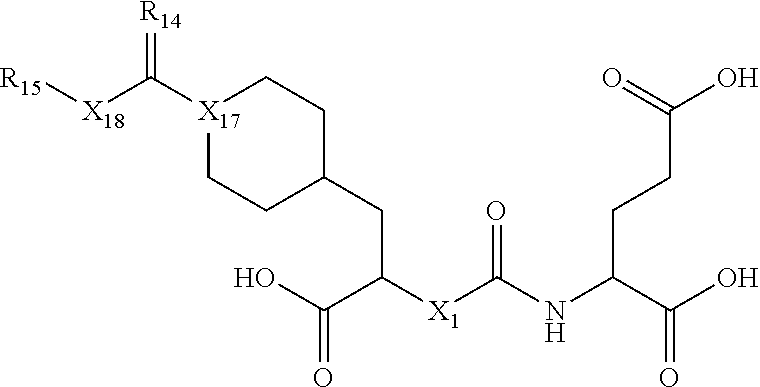

View All Diagrams
| United States Patent | 10,894,807 |
| Wang , et al. | January 19, 2021 |
PSMA imaging agents
Abstract
Compounds for targeting and agents for imaging, prostate-specific membrane antigen (PSMA) are disclosed. Methods of synthesizing compounds and imaging agents, as well as methods for imaging PSMA are also disclosed. The imaging agents disclosed are suitable for PET and SPECT imaging.
| Inventors: | Wang; Eric (San Diego, CA), Kolb; Hartmuth C. (Playa Del Rey, CA), Szardenings; Anna Katrin (Torrance, CA), Liu; Changhui (Los Angeles, CA), Walsh; Joseph C. (Pacific Palisades, CA), Chen; Gang (Rancho Palos Verdes, CA), Sinha; Anjana (San Diego, CA), Kasi; Dhanalakshmi (Los Angeles, CA), Yu; Chul (Los Angeles, CA), Gangadharmath; Umesh B. (Los Angeles, CA), Zhang; Wei (Los Angeles, CA), Zhao; Tieming (Placentia, CA), Mocharla; Vani P. (Los Angeles, CA) | ||||||||||
|---|---|---|---|---|---|---|---|---|---|---|---|
| Applicant: |
|
||||||||||
| Assignee: | Siemens Medical Solutions USA,
Inc. (Malvern, PA) |
||||||||||
| Appl. No.: | 15/975,296 | ||||||||||
| Filed: | May 9, 2018 |
Prior Publication Data
| Document Identifier | Publication Date | |
|---|---|---|
| US 20180258134 A1 | Sep 13, 2018 | |
Related U.S. Patent Documents
| Application Number | Filing Date | Patent Number | Issue Date | ||
|---|---|---|---|---|---|
| 14917127 | 10011632 | ||||
| PCT/US2012/051674 | Aug 21, 2012 | ||||
| 61563987 | Nov 28, 2011 | ||||
| 61525877 | Aug 22, 2011 | ||||
| Current U.S. Class: | 1/1 |
| Current CPC Class: | C07D 263/34 (20130101); C07D 233/96 (20130101); A61K 51/0497 (20130101); A61K 51/0453 (20130101); A61K 51/088 (20130101); C07D 277/56 (20130101); C07D 249/06 (20130101); C07K 5/06113 (20130101); C07D 403/12 (20130101); A61K 51/0402 (20130101); C07D 233/78 (20130101); C07D 213/81 (20130101); C07D 249/04 (20130101); C07D 251/30 (20130101); C07D 403/06 (20130101); C07K 5/0215 (20130101); C07D 207/16 (20130101); C07D 239/60 (20130101); C07D 405/12 (20130101); C07D 401/12 (20130101); C07K 5/06026 (20130101); C07D 213/82 (20130101); C07D 209/48 (20130101); A61K 38/00 (20130101) |
| Current International Class: | C07D 403/12 (20060101); C07D 233/78 (20060101); C07K 5/072 (20060101); A61K 51/04 (20060101); C07D 233/96 (20060101); C07D 401/12 (20060101); C07D 403/06 (20060101); C07K 5/02 (20060101); A61K 51/08 (20060101); C07D 213/81 (20060101); C07D 213/82 (20060101); C07K 5/062 (20060101); C07D 405/12 (20060101); C07D 239/60 (20060101); C07D 249/06 (20060101); C07D 251/30 (20060101); C07D 263/34 (20060101); C07D 207/16 (20060101); C07D 277/56 (20060101); C07D 209/48 (20060101); C07D 249/04 (20060101); A61K 38/00 (20060101) |
References Cited [Referenced By]
U.S. Patent Documents
| 2010/0178246 | July 2010 | Babich et al. |
| 2010014933 | Feb 2010 | WO | |||
| 2012078534 | Jun 2012 | WO | |||
Other References
|
Barinka et al., "Interactions between Human Glutamate Carboxypeptidase I1 and Urea-Based Inhibitors: Structural characterization +," Journal of Medicinal Chemistry, vol. 51, No. 4, pp. 7737-7743, Dec. 25, 2008. cited by applicant . Banerjee et al., "A Modular Strategy to Prepare Multivalent Inhibitors of Prostate-Specific Membrane Antigen (PSMA)," Oncotarget, vol. 2, No. 12, pp. 1244-1253, Dec. 29, 2011. cited by applicant. |
Primary Examiner: Otton; Alicia L
Parent Case Text
RELATED APPLICATIONS
This application claims priority to U.S. application Ser. No. 14/917,127 filed on Jun. 30, 2016, which claims priority to U.S. provisional patent application No. 61/525,877, filed on Aug. 22, 2011; and to U.S. provisional patent application No. 61/563,987, filed on Nov. 28, 2011; the entire contents of which is incorporated by reference herein.
Claims
We claim:
1. A method comprising: administering to a patient, a radio-labelled compound of Formula I: ##STR00749## and pharmaceutically acceptable salts and stereoisomers thereof, wherein: X.sub.1 is CH or N; X.sub.2 is CH or N; X.sub.3 is (CH.sub.2).sub.1-6 wherein at least one CH.sub.2 is optionally replaced by at least one of CONH or aryl; X.sub.4 is selected from the group consisting of aryl, NH, CH.sub.2, and ##STR00750## X.sub.5 is selected from the group consisting of CONH, C(O), (CH.sub.2).sub.1-2--C(O) and (CH.sub.2).sub.1-2--CONH; X.sub.6 is aryl or CH; X.sub.7 is CH or N; X.sub.8 is CH or N; X.sub.13 is (CH.sub.2).sub.1-5, where at least one CH.sub.2 of (CH.sub.2).sub.1-5 is replaced by a group selected from aryl, NH, CH.sub.2, and ##STR00751## R.sub.1 is selected from the group consisting of alkyne, N.sub.3, NO.sub.2, --(CH.sub.2).sub.1-20--R.sub.3 where at least one CH.sub.2 of --(CH.sub.2).sub.1-20--R.sub.3 is optionally replaced by at least one of --O--, aryl, heteroaryl, NH or CONH and wherein at least one H of --(CH.sub.2).sub.1-20--R.sub.3 is optionally substituted with COOH or NO.sub.2; and (--CH.sub.2--CH.sub.2--).sub.1-5--NH.sub.2 where at least one CH.sub.2 of (--CH.sub.2--CH.sub.2--O--).sub.1-5--NH.sub.2 is optionally replaced by aryl or heteroaryl; R.sub.2 is selected from the group consisting of H, COOH or CH.sub.2--COOH; and R.sub.3 is selected from the group consisting of COOH, N.sub.3, alkyne, protecting group, halo and positron emitting isotope; or administering to a patient, a radio-labelled compound of Formula II: ##STR00752## and pharmaceutically acceptable salts and stereoisomers thereof, wherein: X.sub.1 is CH or N; X.sub.2 is CH or N; X.sub.9 is (CH.sub.2).sub.1-5 where at least one CH.sub.2 is optionally replaced by NH, X.sub.10 is CH or N; X.sub.11 is selected from the group consisting of (CH.sub.2), aryl, or heteroaryl, wherein at least one H of the aryl or heteroaryl is optionally replaced by NO.sub.2, X.sub.12 is selected from the group consisting of O, CONH and (CH.sub.2).sub.1-2 wherein at least one CH.sub.2 is optionally replaced by NH; R.sub.2 is selected from the group consisting of H, COOH or CH.sub.2--COOH; R.sub.4 is selected from the group consisting of H, alkyne, N.sub.3, NO.sub.2, --(CH.sub.2).sub.1-20--R.sub.8 where at least one CH.sub.2 of --(CH.sub.2).sub.1-20--R.sub.8 is optionally replaced by at least one of --O--, aryl, heteroaryl, NH or CONH and wherein at least one H of --(CH.sub.2).sub.1-20--R.sub.8 is optionally substituted with COOH or NO.sub.2; R.sub.8 is selected from the group consisting of H and --(CH.sub.2).sub.1-10--R.sub.8 where at least one CH.sub.2 of --(CH.sub.2).sub.1-10--R.sub.8 is optionally replaced by at least one of --O--, aryl, heteroaryl or CONH; R.sub.5 is selected from the group consisting of H and --(CH.sub.2).sub.1-10--R.sub.8 where at least one CH.sub.2 of --(CH.sub.2).sub.1-10R.sub.8 is optionally replaced by at least one of --O--, aryl, heteroaryl or CONH; and R.sub.6 is selected from the group consisting of H and --(CH.sub.2).sub.1-10--R.sub.8 where at least one CH.sub.2 of --(CH.sub.2).sub.1-10--R.sub.9 is optionally replaced by at least one of --O--, aryl, heteroaryl or CONH; and R.sub.8 is selected from the group consisting of COOH, N.sub.3, alkyne, protecting group, halo and positron emitting isotope; or administering to a patient a radio-labelled compound of Formula III: ##STR00753## and pharmaceutically acceptable salts and stereoisomers thereof, wherein: X.sub.1 is CH or N; X.sub.13 is (CH.sub.2).sub.1-5 wherein at least one CH.sub.2 is optionally replaced by aryl; R.sub.2 is selected from the group consisting of H, COOH or CH.sub.2--COOH; R.sub.11 is selected from the group consisting of alkyne, N.sub.3, NO.sub.2, (CH.sub.2).sub.1-10--R.sub.12 wherein at least one CH.sub.2 is optionally replaced by at least one of CONH, aryl or heteroaryl; and R.sub.12 is selected from the group consisting of N.sub.3, alkyne, protecting group, halo and radioisotope; scanning the patient using positron emission tomography or single photon emission computed tomography; and imaging a tissue in the patient.
2. The method of claim 1, where the tissue includes a PSMA expressing tissue in mammals.
3. The method of claim 1, wherein in Formula I, X.sub.1 and X.sub.2 are N.
4. The method of claim 1, wherein in Formula I, X.sub.1 is CH.
5. The method of claim 1, wherein in Formula I, R.sub.2 is COOH or H.
6. The method of claim 1, wherein in Formula I, X.sub.6 is CH.
7. The method of claim 1, wherein in Formula I, R.sub.1 is --(CH.sub.2).sub.1-10--R.sub.3 where at least one CH.sub.2 of --(CH.sub.2).sub.1-20--R.sub.3 is replaced by at least one of aryl, heteroaryl or CONH.
8. The method of claim 7, wherein in Formula I, at least one CH.sub.2 of --(CH.sub.2).sub.1-10--R.sub.3 is replaced by aryl.
9. The method of claim 8, wherein in Formula I, at least one CH.sub.2 of --(CH.sub.2).sub.1-10--R.sub.3 is replaced by a triazole.
10. The method of claim 1, wherein in Formula I, X is CONH or (CH.sub.2).sub.1-2--CONH.
11. The method of claim 1, wherein X.sub.4 and X.sub.13 are C.sub.6H.sub.6 or (CH.sub.2).sub.1-5.
12. The method of claim 1, wherein in Formula I, X.sub.5 is C(O) and X.sub.4 is (CH.sub.2).sub.1-5, wherein one CH.sub.2 of (CH.sub.2).sub.1-5 is replaced by NH.
13. The method of claim 1, wherein in Formula I, X.sub.5 is C(O), X.sub.4 and X.sub.13 are ##STR00754## and wherein X.sub.8 is N.
14. The method of claim 1, wherein in Formula I, X.sub.5 is C(O), X.sub.13 is ##STR00755## wherein X.sub.8 is N and X.sub.4 is (CH.sub.2).sub.3--NH.
15. The method of claim 1, wherein in Formula I, X.sub.3 is (CH.sub.2).sub.1-6.
16. The method of claim 1, wherein in for X.sub.3 in Formula I, at least one CH.sub.2 of (CH.sub.2).sub.1-6 is replaced by CONH.
17. The method of claim 1, wherein in Formula I, X.sub.3 is CH.sub.2.
18. The method of claim 1, wherein for X.sub.3 in Formula I, at least one CH.sub.2 of (CH.sub.2).sub.1-6 is replaced by aryl.
19. The method of claim 18, wherein in Formula I, one CH.sub.2 of (CH.sub.2).sub.1-6 is replaced by CONH.
20. The method of claim 1, wherein in Formula I, R.sub.3 is the positron emitting isotope.
21. The method of claim 1, wherein in Formula I, R.sub.1 is selected from the group consisting of: ##STR00756##
22. The method of claim 1 wherein the compound is: ##STR00757## and pharmaceutically acceptable salts and stereoisomers thereof, wherein R.sub.10 is a radionuclide.
23. The method of claim 1, wherein in Formula II, X.sub.1 is N; X.sub.2 is N, R.sub.2 is COOH; and R.sub.6 is H.
24. The method of claim 23, wherein in Formula II, R.sub.4 is H, R.sub.6 is H and R.sub.5 is --(CH.sub.2).sub.1-10--R.sub.8 where at least one CH.sub.2 of --(CH.sub.2).sub.1-10--R.sub.8 is replaced by heteroaryl and at least one CH.sub.2 is replaced by CONH.
25. The method of claim 24, wherein in Formula II, the at least one heteroaryl of --(CH.sub.2).sub.1-10--R.sub.8 is a triazole.
26. The method of claim 1, wherein in Formula II, R.sub.5 is H, R.sub.6 is H and R.sub.4 is --(CH.sub.2).sub.1-10--R.sub.8 where at least one CH.sub.2 of --(CH.sub.2).sub.1-10--R.sub.8 is replaced by heteroaryl.
27. The method of claim 26, wherein in Formula II, the at least one heteroaryl of --(CH.sub.2).sub.1-10--R.sub.8 is a triazole.
28. The method of claim 27, wherein R.sub.8 is the positron emitting isotope.
29. The method of claim 1, wherein in Formula II, X.sub.12 is CONH.
30. The method of claim 1, wherein in Formula II, X.sub.12 is O and X.sub.11 is aryl.
31. The method of claim 1, wherein in Formula II, X.sub.12 is NH and X.sub.11 is heteroaryl.
32. The method of claim 1, wherein in Formula II, X.sub.11 is CH.sub.2.
33. The method of claim 1, wherein in Formula II, X.sub.9 is (CH.sub.2).sub.1-5, wherein at least one CH.sub.2 is replaced by NH and wherein X.sub.11 is aryl or heteroaryl.
34. A compound of Formula III: ##STR00758## and pharmaceutically acceptable salts and stereoisomers thereof, wherein in Formula III: X.sub.1 is CH or N; X.sub.13 is (CH.sub.2).sub.1-5 wherein at least one CH.sub.2 is optionally replaced by aryl; R.sub.2 is selected from the group consisting of H, COOH or CH.sub.2--COOH; Ru is selected from the group consisting of alkyne, N.sub.3, NO.sub.2, (CH.sub.2).sub.1-10--R.sub.12 wherein at least one CH.sub.2 is optionally replaced by at least one of CONH, aryl or heteroaryl; and R.sub.12 is selected from the group consisting of N.sub.3, alkyne, protecting group, halo and radioisotope.
35. A method comprising: synthesizing a tracer compound of Formulas I; ##STR00759## and pharmaceutically acceptable salts and stereoisomers thereof, wherein: X.sub.1 is CH or N; X.sub.2 is CH or N; X.sub.3 is (CH.sub.2).sub.1-6 wherein at least one CH.sub.2 is optionally replaced by at least one of CONH or aryl; X.sub.4 is selected from the group consisting of aryl, NH, CH.sub.2, and ##STR00760## X.sub.5 is selected from the group consisting of CONH, C(O), (CH.sub.2).sub.1-2--C(O) and (CH.sub.2).sub.1-2--CONH; X.sub.6 is aryl or CH; X.sub.7 is CH or N; X.sub.8 is CH or N; X.sub.13 is (CH.sub.2).sub.1-5, where at least one CH.sub.2 of (CH.sub.2).sub.1-5 is replaced by aryl, NH, CH.sub.2, and ##STR00761## R.sub.1 is selected from the group consisting of alkyne, N.sub.3, NO.sub.2, --(CH.sub.2).sub.1-20--R.sub.3 where at least one CH.sub.2 of --(CH.sub.2).sub.1-20--R.sub.3 is optionally replaced by at least one of --O--, aryl, heteroaryl, NH or CONH and wherein at least one H of --(CH.sub.2).sub.1-20--R.sub.3 is optionally substituted with COOH or NO.sub.2; and (--CH.sub.2--CH.sub.2--O--).sub.1-5 NH.sub.2 where at least one CH.sub.2 of (--CH.sub.2--CH.sub.2--O--).sub.1-5 NH.sub.2 is optionally replaced by aryl or heteroaryl; R.sub.2 is selected from the group consisting of H, COOH or CH.sub.2--COOH; and R.sub.3 is selected from the group consisting of COOH, N.sub.3, alkyne, protecting group, halo and positron emitting isotope; or synthesizing a radio-labelled compound of Formulas II; ##STR00762## and pharmaceutically acceptable salts and stereoisomers thereof, wherein: X.sub.1 is CH or N; X.sub.2 is CH or N; X.sub.9 is (CH.sub.2).sub.1-5 where at least one CH.sub.2 is optionally replaced by NH, X.sub.10 is CH or N; X.sub.11 is selected from the group consisting of (CH.sub.2), aryl, or heteroaryl, wherein at least one H of the aryl or heteroaryl is optionally replaced by NO.sub.2, X.sub.12 is selected from the group consisting of O, CONH and (CH.sub.2).sub.1-2 wherein at least one CH.sub.2 is optionally replaced by NH; R.sub.2 is selected from the group consisting of H, COOH or CH.sub.2--COOH; R.sub.4 is selected from the group consisting of H, alkyne, N.sub.3, NO.sub.2, --(CH.sub.2).sub.1-20--R.sub.8 where at least one CH.sub.2 of --(CH.sub.2).sub.1-20--R.sub.8 is optionally replaced by at least one of --O--, aryl, heteroaryl, NH or CONH and wherein at least one H of --(CH.sub.2).sub.1-20--R.sub.8 is optionally substituted with COOH or NO.sub.2; R.sub.8 is selected from the group consisting of H and --(CH.sub.2).sub.1-10--R.sub.8 where at least one CH.sub.2 of --(CH.sub.2).sub.1-10--R.sub.8 is optionally replaced by at least one of --O--, aryl, heteroaryl or CONH; R.sub.5 is selected from the group consisting of H and --(CH.sub.2).sub.1-10--R.sub.8 where at least one CH.sub.2 of --(CH.sub.2).sub.1-10--R.sub.8 is optionally replaced by at least one of --O--, aryl, heteroaryl or CONH; and R.sub.6 is selected from the group consisting of H and --(CH.sub.2).sub.1-10--R.sub.8 where at least one CH.sub.2 of --(CH.sub.2).sub.1-10--R.sub.9 is optionally replaced by at least one of --O--, aryl, heteroaryl or CONH; and R.sub.8 is selected from the group consisting of COOH, N.sub.3, alkyne, protecting group, halo and positron emitting isotope; or synthesizing a radio-labelled compound of Formula III: ##STR00763## and pharmaceutically acceptable salts and stereoisomers thereof, wherein: X.sub.1 is CH or N; X.sub.13 is (CH.sub.2).sub.1-5 wherein at least one CH.sub.2 is optionally replaced by aryl; R.sub.2 is selected from the group consisting of H, COOH or CH.sub.2--COOH; R.sub.11 is selected from the group consisting of alkyne, N.sub.3, NO.sub.2, (CH.sub.2).sub.1-10--R.sub.12 wherein at least one CH.sub.2 is optionally replaced by at least one of CONH, aryl or heteroaryl; and R.sub.12 is selected from the group consisting of N.sub.3, alkyne, protecting group, halo and radioisotope; and reacting a compound of any of Formulas I-III, wherein in any of Formulas I-III, at least one H of R.sub.1, R.sub.3, R.sub.4, R.sub.8, R.sub.11, R.sub.12, R.sub.13, R.sub.15 and R.sub.16 is replaced by either a first alkyne or a first azide with a second azide or second alkyne having a radioisotope or halo.
36. A method comprising: administering to a patient, a radio-labelled compound of Formula I: ##STR00764## and pharmaceutically acceptable salts and stereoisomers thereof, wherein: X.sub.1 is CH or N; X.sub.2 is CH or N; X.sub.3 is (CH.sub.2).sub.1-6 wherein at least one CH.sub.2 is optionally replaced by at least one of CONH or aryl; X.sub.4 is selected from the group consisting of aryl, NH, CH.sub.2, and ##STR00765## X.sub.5 is selected from the group consisting of CONH, C(O), (CH.sub.2).sub.1-2--C(O) and (CH.sub.2).sub.1-2--CONH; X.sub.6 is aryl or CH; X.sub.7 is CH or N; X.sub.8 is CH or N; X.sub.13 is (CH.sub.2).sub.1-5, where at least one CH.sub.2 of (CH.sub.2).sub.1-5 is replaced by a group selected from aryl, NH, CH.sub.2, and ##STR00766## R.sub.1 is selected from the group consisting of alkyne, N.sub.3, NO.sub.2, --(CH.sub.2).sub.1-20--R.sub.3 where at least one CH.sub.2 of --(CH.sub.2).sub.1-20--R.sub.3 is optionally replaced by at least one of --O--, aryl, heteroaryl, NH or CONH and wherein at least one H of --(CH.sub.2).sub.1-20--R.sub.3 is optionally substituted with COOH or NO.sub.2; and (--CH.sub.2--CH.sub.2--O--).sub.1-5--NH.sub.2 where at least one CH.sub.2 of (--CH.sub.2--CH.sub.2--O--).sub.1-5--NH.sub.2 is optionally replaced by aryl or heteroaryl; R.sub.2 is selected from the group consisting of H, COOH or CH.sub.2--COOH; and R.sub.3 is selected from the group consisting of COOH, N.sub.3, alkyne, protecting group, halo and positron emitting isotope; or administering to a patient, a radio-labelled compound of Formula II: ##STR00767## and pharmaceutically acceptable salts and stereoisomers thereof, wherein: X.sub.1 is CH or N; X.sub.2 is CH or N; X.sub.9 is (CH.sub.2).sub.1-5 where at least one CH.sub.2 is optionally replaced by NH, X.sub.10 is CH or N; X.sub.11 is selected from the group consisting of (CH.sub.2), aryl, or heteroaryl, wherein at least one H of the aryl or heteroaryl is optionally replaced by NO.sub.2, X.sub.12 is selected from the group consisting of O, CONH and (CH.sub.2).sub.1-2 wherein at least one CH.sub.2 is optionally replaced by NH; R.sub.2 is selected from the group consisting of H, COOH or CH.sub.2--COOH; R.sub.4 is selected from the group consisting of H, alkyne, N.sub.3, NO.sub.2, --(CH.sub.2).sub.1-20--R.sub.8 where at least one CH.sub.2 of --(CH.sub.2).sub.1-20--R.sub.8 is optionally replaced by at least one of --O--, aryl, heteroaryl, NH or CONH and wherein at least one H of --(CH.sub.2).sub.1-2--R.sub.8 is optionally substituted with COOH or NO.sub.2; R.sub.8 is selected from the group consisting of H and --(CH.sub.2).sub.1-10--R.sub.8 where at least one CH.sub.2 of --(CH.sub.2).sub.1-10--R.sub.8 is optionally replaced by at least one of --O--, aryl, heteroaryl or CONH; R.sub.5 is selected from the group consisting of H and --(CH.sub.2).sub.1-10--R.sub.8 where at least one CH.sub.2 of --(CH.sub.2).sub.1-10--R.sub.8 is optionally replaced by at least one of --O--, aryl, heteroaryl or CONH; and R.sub.6 is selected from the group consisting of H and --(CH.sub.2).sub.1-10--R.sub.8 where at least one CH.sub.2 of --(CH.sub.2).sub.1-10--R.sub.9 is optionally replaced by at least one of --O--, aryl, heteroaryl or CONH; and R.sub.8 is selected from the group consisting of COOH, N.sub.3, alkyne, protecting group, halo and positron emitting isotope; or administering to a patient, a radio-labelled compound of Formula III: ##STR00768## and pharmaceutically acceptable salts and stereoisomers thereof, wherein: X.sub.1 is CH or N; X.sub.13 is (CH.sub.2).sub.1-5 wherein at least one CH.sub.2 is optionally replaced by aryl; R.sub.2 is selected from the group consisting of H, COOH or CH.sub.2--COOH; R.sub.11 is selected from the group consisting of alkyne, N.sub.3, NO.sub.2, (CH.sub.2).sub.1-10--R.sub.12 wherein at least one CH.sub.2 is optionally replaced by at least one of CONH, aryl or heteroaryl; and R.sub.12 is selected from the group consisting of N.sub.3, alkyne, protecting group, halo and radioisotope; wherein in any of Formulas I-III, at least one H of R.sub.1, R.sub.3, R.sub.4, R.sub.8, R.sub.11, R.sub.12, R.sub.13, R.sub.15 and R.sub.16 is replaced by either a first alkyne or a first azide with a second azide or second alkyne having a radioisotope or halo.
Description
FIELD OF THE INVENTION
The present invention relates to imaging; specifically, positron emission tomography (PET). More specifically, it relates to radiopharmaceuticals used in PET. More particularly, it relates to formulations for imaging, diagnosing and grading prostate cancer to find metastases and to monitor treatment.
BACKGROUND
Prostate cancer is a relatively common type of cancer and the second leading cause of death in men. There are currently no reliable, non-invasive diagnostic tests available for prostate cancer and the only way to fully confirm the diagnosis of prostate cancer is a biopsy. A PSA (prostate specific antigen) test is the only available tumor marker, but PSA blood levels can be elevated for a number of reasons and do not necessary correlate with prostate cancer. Also, there are rare types of aggressive prostate cancers that cannot be diagnosed with the PSA test. This test for screening therefore has limitations and is still controversial.
Further, prostate-related PET tracers known in the art; e.g., mAb PET tracers, are associated with low clearance (high blood activity) due to prolonged biologic half life of the antibody. This generally leads to low tumor-to-muscle ratios.
SUMMARY
In one embodiment, the invention is a compound of Formula I:
##STR00001##
and pharmaceutically acceptable salts and isomers thereof,
wherein: X.sub.1 is CH or N; X.sub.2 is CH or N; X.sub.3 is (CH.sub.2).sub.1-6 wherein at least one CH.sub.2 is optionally replaced by at least one of CONH or aryl; X.sub.4 is (CH.sub.2).sub.1-5, where at least one CH.sub.2 of (CH.sub.2).sub.1-5 is optionally replaced by aryl, NH, and
##STR00002## X.sub.5 is selected from the group consisting of CONH, C(O), (CH.sub.2).sub.1-2--C(O) and (CH.sub.2).sub.1-2--CONH; X.sub.6 is aryl or CH; X.sub.7 is CH or N; X.sub.8 is CH or N; X.sub.13 is (CH.sub.2).sub.1-5, where at least one CH.sub.2 of (CH.sub.2).sub.1-5 is optionally replaced by aryl, NH, and
##STR00003## R.sub.1 is selected from the group consisting of alkyne, N.sub.3, NO.sub.2, --(CH.sub.2).sub.1-20--R.sub.3 where at least one CH.sub.2 of --(CH.sub.2).sub.1-20--R.sub.3 is optionally replaced by at least one of --O--, aryl, heteroaryl, NH or CONH and wherein at least one H of --(CH.sub.2).sub.1-20--R.sub.3 is optionally substituted with COOH or NO.sub.2; and (--CH.sub.2--CH.sub.2--O--).sub.1-5--NH.sub.2 where at least one CH.sub.2 of (--CH.sub.2--CH.sub.2--O--).sub.1-5--NH.sub.2 is optionally replaced by aryl or heteroaryl; R.sub.2 is selected from the group consisting of H, COOH or CH.sub.2--COOH; and R.sub.3 is selected from the group consisting of COOH, N.sub.3, alkyne, protecting group, halo and radioisotope.
In another embodiment, the present invention is a compound of Formula Ia
##STR00004##
and pharmaceutically acceptable salts and isomers thereof,
wherein: X.sub.1 is CH or N; X.sub.18 is selected from the group consisting of aryl or CH.sub.2; X.sub.19 is selected from the group consisting of (CH.sub.2).sub.n and CONH--(CH.sub.2).sub.p; R.sub.1 is selected from the group consisting of alkyne, N.sub.3, NO.sub.2, --(CH.sub.2).sub.1-20--R.sub.3 where at least one CH.sub.2 of --(CH.sub.2).sub.1-20--R.sub.3 is optionally replaced by at least one of --O--, aryl, heteroaryl, NH or CONH and wherein at least one H of --(CH.sub.2).sub.1-20--R.sub.3 is optionally substituted with COOH or NO.sub.2; and (--CH.sub.2--CH.sub.2--O--).sub.1-5--NH.sub.2 where at least one CH.sub.2 of (--CH.sub.2--CH.sub.2--O--).sub.1-5--NH.sub.2 is optionally replaced by aryl or heteroaryl; R.sub.2 is selected from the group consisting of H, COOH or CH.sub.2--COOH; and R.sub.3 is selected from the group consisting of COOH, N.sub.3, alkyne, protecting group, halo and radioisotope, wherein n is 1 or 3; and wherein p is 1, 2 or 4.
In another embodiment, the present invention is a compound of Formula Ib:
##STR00005##
and pharmaceutically acceptable salts and isomers thereof,
wherein: X.sub.3 is (CH.sub.2).sub.1-6 wherein at least one CH.sub.2 is optionally replaced by at least one of CONH or aryl; X.sub.7 is CH or N; R.sub.9 is --(CH.sub.2).sub.1-10--R.sub.3 where at least one CH.sub.2 of --(CH.sub.2).sub.1-10--R.sub.3 is optionally replaced by at least one of aryl, heteroaryl or CONH; and R.sub.3 is selected from the group consisting of COOH, N.sub.3, alkyne, protecting group, halo and radioisotope
In another embodiment, the present invention is a compound of Formula Ic:
##STR00006##
and pharmaceutically acceptable salts and isomers thereof,
wherein: X.sub.7 is CH or N; X.sub.20 is selected from the group consisting of (CH.sub.2).sub.1-5 and CONH--(CH.sub.2).sub.1-5; R.sub.9 is --(CH.sub.2).sub.1-10--R.sub.3 where at least one CH.sub.2 of --(CH.sub.2).sub.1-10--R.sub.3 is optionally replaced by at least one of aryl, heteroaryl or CONH; and R.sub.3 is selected from the group consisting of COOH, N.sub.3, alkyne, protecting group, halo and radioisotope
In another embodiment, the present invention is a compound of Formula II:
##STR00007##
and pharmaceutically acceptable salts and isomers thereof,
wherein: X.sub.1 is CH or N; X.sub.2 is CH or N; X.sub.9 is (CH.sub.2).sub.1-5 where at least one CH.sub.2 is optionally replaced by NH, X.sub.10 is CH or N; X.sub.11 is selected from the group consisting of (CH.sub.2), aryl, or heteroaryl, wherein at least one H of the aryl or heteroaryl is optionally replaced by NO.sub.2, X.sub.12 is selected from the group consisting of O, CONH and (CH.sub.2).sub.1-2 wherein at least one CH.sub.2 is optionally replaced by NH; R.sub.2 is selected from the group consisting of H, COOH or CH.sub.2--COOH; R.sub.4 is selected from the group consisting of H, alkyne, N.sub.3, NO.sub.2, --(CH.sub.2).sub.1-20--R.sub.8 where at least one CH.sub.2 of --(CH.sub.2).sub.1-20--R.sub.8 is optionally replaced by at least one of --O--, aryl, heteroaryl, NH or CONH and wherein at least one H of --(CH.sub.2).sub.1-20--R.sub.8 is optionally substituted with COOH or NO.sub.2; R.sub.5 is selected from the group consisting of H and --(CH.sub.2).sub.1-10--R.sub.8 where at least one CH.sub.2 of --(CH.sub.2).sub.1-10--R.sub.8 is optionally replaced by at least one of --O--, aryl, heteroaryl or CONH; R.sub.6 is selected from the group consisting of H and --(CH.sub.2).sub.1-10--R.sub.8 where at least one CH.sub.2 of --(CH.sub.2).sub.1-10--R.sub.9 is optionally replaced by at least one of --O--, aryl, heteroaryl or CONH; and R.sub.8 is selected from the group consisting of COOH, N.sub.3, alkyne, protecting group, halo and radioisotope.
In another embodiment, the present invention is a compound of Formula IIa:
##STR00008##
and pharmaceutically acceptable salts and isomers thereof,
wherein: X.sub.9 is (CH.sub.2).sub.1-5; X.sub.10 is CH or N; X.sub.15 is selected from the group consisting of O and NH; X.sub.16 is (CH.sub.2).sub.1-2; X.sub.17 is N or CH; R.sub.4 is selected from the group consisting of H, alkyne, N.sub.3, NO.sub.2, --(CH.sub.2).sub.1-20--R.sub.8 where at least one CH.sub.2 of --(CH.sub.2).sub.1-20--R.sub.8 is optionally replaced by at least one of --O--, aryl, heteroaryl, NH or CONH and wherein at least one H of --(CH.sub.2).sub.1-20--R.sub.8 is optionally substituted with COOH or NO.sub.2; R.sub.8 is selected from the group consisting of COOH, N.sub.3, alkyne, protecting group, halo and radioisotope; and R.sub.9 is H or NO.sub.2.
In another embodiment, the present invention is a compound of Formula III:
##STR00009##
and pharmaceutically acceptable salts and isomers thereof,
wherein: X.sub.1 is CH or N; X.sub.11 is (CH.sub.2).sub.1-5 wherein at least one CH.sub.2 is optionally replaced by aryl; R.sub.2 is selected from the group consisting of H, COOH or CH.sub.2--COOH; R.sub.11 is selected from the group consisting of alkyne, N.sub.3, NO.sub.2, (CH.sub.2).sub.1-10--R.sub.12 wherein at least one CH.sub.2 is optionally replaced by at least one of CONH, aryl or heteroaryl; and R.sub.12 is selected from the group consisting of N.sub.3, alkyne, protecting group, halo and radioisotope.
In another embodiment, the present invention is a compound of Formula IV:
##STR00010##
and pharmaceutically acceptable salts and isomers thereof,
wherein: X.sub.1 is CH or N; X.sub.14 is selected from the group consisting of: C(O) and heteroaryl, wherein at least one H of the heteroaryl is substituted with NO.sub.2; X.sub.15 is selected from the group consisting of: a bond, NH, CH.sub.2, aryl, heteroaryl, cycloalkyl and heterocycloalkyl; X.sub.16 is at least one selected from the group consisting of: a bond, aryl, heteroaryl, (CH.sub.2).sub.1-25, wherein at least one CH.sub.2 of (CH.sub.2).sub.1-12 is optionally replaced with heteroaryl, aryl, CONH, and --O--; and R.sub.13 is selected from the group consisting of H, NO.sub.2, N.sub.3, alkyne, protecting group, halo and radioisotope.
In another embodiment, the present invention is a compound of Formula V:
##STR00011##
and pharmaceutically acceptable salts and isomers thereof,
wherein: X.sub.1 is CH or N; X.sub.17 is selected from the group consisting of: N and CH; X.sub.18 is selected from the group consisting of: (CH.sub.2).sub.1-10 wherein at least one CH.sub.2 of (CH.sub.2).sub.1-10 is optionally replaced by NH, aryl, heteroaryl and wherein at least one H is optionally substituted with NO.sub.2; and R.sub.14 is selected from the group consisting of O and S; and R.sub.15 is selected from the group consisting of N.sub.3, alkyne, protecting group, halo and radioisotope.
In another embodiment, the present invention is a compound of Formula V:
##STR00012##
and pharmaceutically acceptable salts and isomers thereof,
wherein: X.sub.1 is CH or N; X.sub.19 is selected from the group consisting of H, NO.sub.2, (CH.sub.2).sub.1-10--R.sub.16 wherein at least one CH.sub.2 of (CH.sub.2).sub.1-10 is optionally replaced by CONH, aryl, heteroaryl; X.sub.20 is selected from the group consisting of: H, NO.sub.2, (CH.sub.2).sub.1-10--R.sub.16 wherein at least one CH.sub.2 of (CH.sub.2).sub.1-10 is optionally replaced by CONH, aryl, heteroaryl; X.sub.21 is selected from the group consisting of (CH.sub.2).sub.1-3 wherein at least one CH.sub.2 of (CH.sub.2).sub.1-3 is optionally replaced by heteroaryl, R.sub.14 is selected from the group consisting of O and S; and R.sub.16 is selected from the group consisting of N.sub.3, alkyne, protecting group, halo and radioisotope.
BRIEF DESCRIPTION OF THE FIGURES
FIG. 1 shows two scans using imaging agents according to embodiments of the present invention against scans using a third party tracer.
FIG. 2 shows two scans using imaging agents according to embodiments of the present invention against scans using a third party tracer.
FIG. 3 shows a comparison of scans of four tracers of the present invention.
FIG. 4 shows a scan using a tracer of the present invention and accompanying data.
FIG. 5 shows scans using a tracer of the present invention and accompanying data.
FIG. 6 shows scans using two tracers of the present invention and accompanying data.
FIG. 7 shows Negative Control data for a tracer of the present invention.
FIG. 8 shows comparative data for five tracers according the present invention.
FIG. 9 shows a comparison of Kd and Ki of tracers of the present invention.
FIGS. 10-12 show a scan using a tracer of the present invention.
FIG. 13 shows a table of data of tracers of the present invention versus a third party tracer.
DETAILED DESCRIPTION
The following description will describe the invention in relation to advantageous embodiments thereof. The invention is in no way limited to these advantageous embodiments as they are purely included to exemplify the invention and the invention is intended to include possible variations and modifications as would be readily apparent to a person skilled in the art without departing from the scope of the invention.
Prostate-specific membrane antigen (PSMA) is a type 2 integral membrane glycoprotein found in prostate tissues and a few other tissues. Expression of PSMA increases proportional to tumor aggressiveness and there is a correlation between PSMA expression and severity of cancer. PSMA has shown to have glutamate carboxypeptidase II activity and catalyzes the hydrolytic cleavage of glutamates from peptides or small molecules. It has been determined that this enzymatic activity of PSMA can be exploited for the design of substrate-based inhibitors. Labeled with [F18], these in turn can be used as PET imaging agents to detect cells expressing PSMA. A PET scan with a PSMA tracer provides a non-invasive diagnostic tool to detect and grade the patient's prostate cancer and allow the physician to choose appropriate treatment methods.
Crystal structures of the active site have been published and show two zinc atoms coordinated by His and Glu/Asp residues, while Arg residues stabilize the C-terminal glutamate-containing substrate. In one embodiment of this invention, we provide substrate based inhibitors in which amide bonds may be replaced with non-hydrolyzable groups such as reverse amides, semi-carbazides, ureas, or heterocycles to name a few. In order to produce a PET ligand, [F18] may be introduced via "click chemistry," which is particularly suitable for labeling of these highly polar and acidic precursors and will provide an advantage over conventional labeling methods as the click reaction is a one step, fast, and high yielding step.
In some embodiments, the present invention is a urea based PET tracer. Many of these are strong inhibitors (Ki=24 nM) of PSMA and contain a triazole side chain generated through a click reaction, which allows for a fast radiosynthesis of the [F18] tracer. Generally, the compounds of the present invention have better PK/clearance profiles than existing compounds.
For the purposes of this application, unless otherwise stated in the specification, the following terms have the terminology cited below:
Alkyl refers to both straight and branched carbon chains; references to individual alkyl groups are specific for the straight chain (e.g. butyl=n-butyl). In one embodiment of alkyl, the number of carbons atoms is 1-20, in another embodiment of alkyl, the number of carbon atoms is 1-8 carbon atoms and in yet another embodiment of alkyl, the number of carbon atoms is 1-4 carbon atoms. Other ranges of carbon numbers are also contemplated depending on the location of the alkyl moiety on the molecule.
Alkynyl or alkyne refers to both straight and branched carbon chains which have at least one carbon-carbon triple bond. In one embodiment of alkynyl, the number of triple bonds is 1-3; in another embodiment of alkynyl, the number of triple bonds is one. In one embodiment of alkynyl, the number of carbons atoms is 2-20, in another embodiment of alkynyl, the number of carbon atoms is 2-8 and in yet another embodiment of alkynyl, the number of carbon atoms is 2-4. Other ranges of carbon-carbon double bonds and carbon numbers are also contemplated depending on the location of the alkenyl moiety on the molecule;
Aryl refers to a C.sub.6-C.sub.10 aromatic ring structure. In one embodiment of aryl, the moiety is phenyl, naphthyl, tetrahydronapthyl, phenylcyclopropyl and indanyl; in another embodiment of aryl, the moiety is phenyl.
Alkoxy refers to --O-alkyl, wherein alkyl is as defined in (1);
Cyclo as a prefix (e.g. cycloalkyl, cycloalkenyl, cycloalkynyl) refers to a saturated or unsaturated cyclic ring structure having from three to eight carbon atoms in the ring the scope of which is intended to be separate and distinct from the definition of aryl above. In one embodiment of cyclo, the range of ring sizes is 4-7 carbon atoms; in another embodiment of cyclo the range of ring sizes is 3-4. Other ranges of carbon numbers are also contemplated depending on the location of the cyclo-moiety on the molecule;
Halogen means the atoms fluorine, chlorine, bromine and iodine. The designation of "halo" (e.g. as illustrated in the term haloalkyl) refers to all degrees of substitutions from a single substitution to a perhalo substitution (e.g. as illustrated with methyl as chloromethyl (--CH.sub.2Cl), dichloromethyl (--CHCl.sub.2), trichloromethyl (--CCl.sub.3));
Heterocycle, heterocyclic or heterocyclo refer to fully saturated or unsaturated, including aromatic (i.e. "hetaryl") cyclic groups, for example, 4 to 7 membered monocyclic, 7 to 11 membered bicyclic, or 10 to 15 membered tricyclic ring systems, which have at least one heteroatom in at least one carbon atom-containing ring. Each ring of the heterocyclic group containing a heteroatom may have 1, 2, 3 or 4 heteroatoms selected from nitrogen atoms, oxygen atoms and/or sulfur atoms, where the nitrogen and sulfur heteroatoms may optionally be oxidized and the nitrogen heteroatoms may optionally be quaternized. The heterocyclic group may be attached at any heteroatom or carbon atom of the ring or ring system.
Exemplary monocyclic heterocyclic groups include, but are not limited to, pyrrolidinyl, pyrrolyl, pyrazolyl, oxetanyl, pyrazolinyl, imidazolyl, imidazolinyl, imidazolidinyl, oxazolyl, oxazolidinyl, isoxazolinyl, isoxazolyl, thiazolyl, thiadiazolyl, thiazolidinyl, isothiazolyl, isothiazolidinyl, furyl, tetrahydrofuryl, thienyl, oxadiazolyl, piperidinyl, piperazinyl, 2-oxopiperazinyl, 2-oxopiperidinyl, 2-oxopyrrolodinyl, 2-oxoazepinyl, azepinyl, 4-piperidonyl, pyridinyl, pyrazinyl, pyrimidinyl, pyridazinyl, tetrahydropyranyl, morpholinyl, thiamorpholinyl, thiamorpholinyl sulfoxide, thiamorpholinyl sulfone, 1,3-dioxolane and tetrahydro-1,1-dioxothienyl, triazolyl, triazinyl, and the like.
Exemplary bicyclic heterocyclic groups include, but are not limited to, indolyl, benzothiazolyl, benzoxazolyl, benzodioxolyl, benzothienyl, quinuclidinyl, quinolinyl, tetra-hydroisoquinolinyl, isoquinolinyl, benzimidazolyl, benzopyranyl, indolizinyl, benzofuryl, chromonyl, coumarinyl, benzopyranyl, cinnolinyl, quinoxalinyl, indazolyl, pyrrolopyridyl, furopyridinyl (such as furo[2,3-c]pyridinyl, furo[3,2-b]pyridinyl] or furo[2,3-b]pyridinyl), dihydroisoindolyl, dihydroquinazolinyl (such as 3,4-dihydro-4-oxo-quinazolinyl), tetrahydroquinolinyl and the like.
Exemplary tricyclic heterocyclic groups include, but are not limited to, carbazolyl, benzidolyl, phenanthrolinyl, acridinyl, phenanthridinyl, xanthenyl and the like.
The present invention may include derivatives of Formulas I-VIII, which may be precursors to the fluorinated compounds. Such a precursor may include triflate trifluoromathanesulfonate (TFA).
Suitable protecting groups include, but are not limited to, Carbobenzyloxy (Cbz), tert-Butyloxycarbonyl (BOC), 9-Fluorenylmethyloxycarbonyl (FMOC), Benzoyl (Bz), Tosyl (Ts) and p-methoxybenzyl (PMB).
Unless otherwise noted, a compound represented as being substituted by an atom, such as the generic representation by the atom fluorine in fluoroalkyl, F-aryl or F--CH.sub.2-- for example, is intended to cover both the naturally occurring element .sup.19F (fluorine-19) as well as the .sup.18F (fluorine-18) isotope(s) of the element itself. Isotopes may be designated via any notation used in the art such as, by way of non-limiting example, fluorine-18, 18-F, .sup.18F F-18, etc.
The term "optionally substituted" or "substituted" refers to the specific substituents or groups wherein one to four hydrogen atoms in the group may be replaced by one to four substituents, for example, independently selected from the substituents amino, halo, cyano, nitro, hydroxyl, --SH, --SC.sub.1-6alkyl, --C(O)NH.sub.2, --C(S)NH.sub.2, haloC.sub.1-6alkyl, perhaloC.sub.1-6alkyl, C.sub.1-6alkyl, C.sub.3-6cycloalkyl, C.sub.3-12cycloalkyl, C.sub.6-14aryl and heteroaryl, or as specifically disclosed herein. In addition, the substituents may also include alkyl, aryl, alkylene-aryl, hydroxy, alkoxy, aryloxy, perhaloalkoxy, heterocyclyl, azido, amino, guanidino, amidino, halo, alkylthio, oxo, acylalkyl, carboxy esters, carboxyl, carboxamido, acyloxy, aminoalkyl, alkylaminoaryl, alkylaminoalkyl, alkoxyaryl, arylamino, phosphono, sulfonyl, carboxamidoaryl, hydroxyalkyl, haloalkyl, alkoxyalkyl and perhaloalkyl. In addition, the term "optionally substituted" or "substituted" in reference to the variables R.sup.1 through R.sup.18 and X, includes groups substituted by one to four substituents, as identified above, which further comprise a positron or gamma emitter. Such positron emitters include, but are not limited to, .sup.11C, .sup.13N, .sup.15O, .sup.18F, .sup.123I, .sup.124I, .sup.125I, .sup.131I and .sup.77Br.
The phrase "optionally replaced" means that at least one atom or element (e.g., carbon) in a chain may be replaced with another, different atom, element or functional group, such as O, NH, CONH, aryl, heteroaryl, etc.
The phrase "is replaced" means that at least one atom or element (e.g., carbon) in a chain is replaced with another, different atom, element or functional group, such as O, NH, CONH, aryl, heteroaryl, etc.
The term "radiolabeled compound" as used herein refers to compounds having an atom or group that may provide a radiolabel or may be converted to a radiolabel, such as from a non-radioactive atom to a radionuclide that is active, such as for example, .sup.11C, .sup.13N, .sup.15O, .sup.18F, .sup.123I, .sup.124I, .sup.125I, .sup.131I and .sup.77Br. In addition, for the purpose of the present application, such "radiolabeled compound" may also refer to an atom or a group that comprises a non-active nuclide, such as a halogen, such as .sup.19F for example, wherein the compound may be used and administered in a therapeutically effective amount.
As used herein, the term "radiolabel," "radioactive isotope" or "radioactive element" refers to isotopes exhibiting radioactive decay (i.e., emitting positrons) and radiolabeling agents comprising a radioactive isotope. Non-limiting examples may include [.sup.11C]methane, [.sup.11C]carbon monoxide, [.sup.11C]carbon dioxide, [.sup.11C]phosgene, [.sup.11C]urea, [.sup.11C]cyanogen bromide, as well as various acid chlorides, carboxylic acids, alcohols, aldehydes and ketones containing carbon-11. Such isotopes or elements are also referred to in the art as radioisotopes or radionuclides. Radioactive isotopes are named herein using various commonly used combinations of the name or symbol of the element and its mass number (e.g., .sup.18F, F-18, or fluorine-18). Exemplary radioactive isotopes include I-124, F-18 fluoride, C-11, N-13, and O-15, which have half-lives of 4.2 days, 110 minutes, 20 minutes, 10 minutes, and 2 minutes, respectively. The radioactive isotope is preferably dissolved in an organic solvent, such as a polar aprotic solvent. Preferably, the radioactive isotopes used in the present method include F-18, C-11, I-123, I-124, I-127, I-131, Br-76, Cu-64, Tc-99m, Y-90, Ga-67, Cr-51, Ir-192, Mo-99, Sm-153 and Tl-201. Preferably, the radioactive isotope used in the present method is F-18. Other radioactive isotopes that may be employed include: As-72, As-74, Br-75, Co-55, Cu-61, Cu-67, Ga-68, Ge-68, I-125, I-132, In-111, Mn-52, Pb-203 and Ru-97.
Compounds of the Formulas I-VIII may have optical centers and therefore may occur in different enantiomeric and diastereomeric configurations. The present invention includes all enantiomers, diastereomers, and other stereoisomers of such compounds of Formulas I-VIII, as well as racemic compounds and racemic mixtures and other mixtures of stereoisomers thereof.
The compounds of the present application may be in the form of free bases or pharmaceutically acceptable acid addition salts thereof. The term "pharmaceutically-acceptable salts" are salts commonly used to form alkali metal salts and to form addition salts of free acids or free bases. The nature of the salt may vary, provided that it is pharmaceutically acceptable. Suitable pharmaceutically acceptable acid addition salts of compounds for use in the present methods may be prepared from an inorganic acid or from an organic acid. Non-limiting examples of such inorganic acids are hydrochloric, hydrobromic, hydroiodic, nitric, carbonic, sulfuric and phosphoric acid. Appropriate organic acids may be selected from aliphatic (or alkyl), cycloalkyl, aromatic, arylalkyl, heterocyclic, carboxylic and sulfonic classes of organic acids, non-limiting examples of which are formic, acetic, propionic, succinic, glycolic, gluconic, lactic, malic, tartaric, citric, ascorbic, glucuronic, maleic, fumaric, pyruvic, aspartic, glutamic, benzoic, anthranilic, mesylic, 4-hydroxybenzoic, phenylacetic, mandelic, embonic (pamoic), methanesulfonic, ethanesulfonic, benzenesulfonic, pantothenic, 2-hydroxyethanesulfonic, toluenesulfonic, sulfanilic, cyclohexylaminosulfonic, stearic, algenic, hydroxybutyric, salicylic, galactaric and galacturonic acid. Suitable pharmaceutically-acceptable base addition salts of compounds of use in the present methods include, but are not limited to, metallic salts made from aluminum, calcium, lithium, magnesium, potassium, sodium and zinc or organic salts made from amino acids, benzathine, N, NT-dibenzylethylenediamine, chloroprocaine, choline, diethanolamine, diethylamine, diolamine, ethylenediamine, meglumine-(N-methylglucamine), procaine and tromethamine. Ascorbic acid may also be used as an excipient. Hemisalts of acids and bases may also be formed, for example, hemisulphate and hemicalcium salts.
In another embodiment, there is provided a pharmaceutical composition for in vivo imaging of PSMA, comprising (a) a compound of any one of the above, and (b) a pharmaceutically acceptable carrier.
The pharmaceutical compositions of the invention may also be in the form of a sterile injectable preparation. Formulations suitable for parenteral administration include, by way of non-limiting example, aqueous and non-aqueous isotonic sterile injection solutions which may contain antioxidants, buffers, bacteriostats and solutes which render the formulation isotonic with the blood of the intended recipient, and aqueous and non-aqueous sterile suspensions which may include suspending agents and thickening agents.
The compounds of the invention may be synthesized and/or radiolabeled using techniques known in the art.
In one embodiment, the compounds of the invention may be radiolabeled.
In another embodiment, the compounds are not comprised of a radioisotope.
In one embodiment, the invention is a compound of Formula I:
##STR00013##
and pharmaceutically acceptable salts and isomers thereof,
wherein: X.sub.1 is CH or N; X.sub.2 is CH or N; X.sub.3 is (CH.sub.2).sub.1-6 wherein at least one CH.sub.2 is optionally replaced by at least one of CONH or aryl; X.sub.4 is selected from the group consisting of aryl, NH, CH.sub.2, and
##STR00014## X.sub.5 is selected from the group consisting of CONH, C(O), (CH.sub.2).sub.1-2--C(O) and (CH.sub.2).sub.1-2--CONH; X.sub.6 is aryl or CH; X.sub.7 is CH or N, X.sub.8 is CH or N, X.sub.4 is selected from the group consisting of aryl, NH, CH.sub.2, and
##STR00015## R.sub.1 is selected from the group consisting of alkyne, N.sub.3, NO.sub.2, --(CH.sub.2).sub.1-20--R.sub.3 where at least one CH.sub.2 of --(CH.sub.2).sub.1-20--R.sub.3 is optionally replaced by at least one of --O--, aryl, heteroaryl, NH or CONH and wherein at least one H of --(CH.sub.2).sub.1-20--R.sub.3 is optionally substituted with COOH or NO.sub.2; and (--CH.sub.2--CH.sub.2--O--).sub.1-5--NH.sub.2 where at least one CH.sub.2 of (--CH.sub.2--CH.sub.2--O--).sub.1-5--NH.sub.2 is optionally replaced by aryl or heteroaryl; R.sub.2 is selected from the group consisting of H, COOH or CH.sub.2--COOH; and R.sub.3 is selected from the group consisting of COOH, N.sub.3, alkyne, protecting group, halo and radioisotope.
In one embodiment, in the compound of Formula I, X.sub.2 is N.
In one embodiment, in the compound of Formula I, X.sub.1 is N.
In one embodiment, in the compound of Formula I, X.sub.1 is CH.
In one embodiment, in the compound of Formula I, R.sub.2 is COOH.
In one embodiment, in the compound of Formula I, R.sub.2 is H.
In one embodiment, in the compound of Formula I, R.sub.2 is CH.sub.2--COOH.
In one embodiment, in the compound of Formula L X.sub.6 is CH.
In one embodiment, in the compound of Formula L X.sub.6 is C.sub.6H.sub.6.
In one embodiment, in the compound of Formula I, R.sub.1 is N.sub.3.
In one embodiment, in the compound of Formula I, R.sub.1 is --(CH.sub.2).sub.1-10--R.sub.3 where at least one CH.sub.2 of --(CH.sub.2).sub.1-20--R.sub.3 is replaced by at least one of aryl, heteroaryl or CONH.
In one embodiment, in the compound of Formula I, at least one CH.sub.2 of --(CH.sub.2).sub.1-10--R.sub.3 is replaced by C.sub.6H.sub.6.
In one embodiment, in the compound of Formula I, at least one CH.sub.2 of --(CH.sub.2).sub.1-10--R.sub.3 is replaced by a triazole.
In one embodiment, in the compound of Formula I, X.sub.5 is CONH.
In one embodiment, in the compound of Formula I, X.sub.5 is (CH.sub.2).sub.1-2--CONH.
In one embodiment, in the compound of Formula I, X.sub.4 and X.sub.13 are C.sub.6H.sub.6.
In one embodiment, in the compound of Formula I, X.sub.4 and X.sub.13 are (CH.sub.2).sub.1-5.
In one embodiment, in the compound of Formula I, X.sub.5 is C(O), X.sub.13 is C.sub.6H.sub.6 and X.sub.4 is (CH.sub.2).sub.1-5, wherein one CH.sub.2 of (CH.sub.2).sub.1-5 is replaced by NH.
In one embodiment, in the compound of Formula I, X.sub.5 is C(O), X.sub.4 and X.sub.13 are
##STR00016## wherein X.sub.8 is N.
In one embodiment, in the compound of Formula I, X.sub.5 is C(O), X.sub.13 is
##STR00017## X.sub.8 is N and X.sub.4 is (CH.sub.2).sub.3--NH.
In one embodiment, in the compound of Formula I, X.sub.3 is (CH.sub.2).sub.1-6.
In one embodiment, in the compound of Formula I, at least one CH.sub.2 of (CH.sub.2).sub.1-6 is replaced by CONH.
In one embodiment, in the compound of Formula I, X.sub.3 is CH.sub.2.
In one embodiment, in the compound of Formula I, at least one CH.sub.2 of (CH.sub.2).sub.1-6 is replaced by aryl.
In one embodiment, in the compound of Formula I, one CH.sub.2 of (CH.sub.2).sub.1-6 is replaced by CONH.
In one embodiment, in the compound of Formula I, R.sub.3 is a radioisotope.
In one embodiment, in the compound of Formula I, R.sub.1 is selected from the group consisting of:
##STR00018##
In one embodiment, in the compound of Formula I, R.sub.1 is:
##STR00019##
In one embodiment, the present invention is a compound that is:
##STR00020##
and pharmaceutically acceptable salts and isomers thereof,
wherein R.sub.10 is selected from the group consisting of radionuclide and halo.
In another embodiment, the present invention is a compound of Formula Ia:
##STR00021##
and pharmaceutically acceptable salts and isomers thereof,
wherein: X.sub.1 is CH or N; X.sub.18 is selected from the group consisting of aryl or CH.sub.2; X.sub.19 is selected from the group consisting of (CH.sub.2).sub.n and CONH--(CH.sub.2).sub.p; R.sub.1 is selected from the group consisting of alkyne, N.sub.3, NO.sub.2, --(CH.sub.2).sub.1-20--R.sub.3 where at least one CH.sub.2 of --(CH.sub.2).sub.1-20--R.sub.3 is optionally replaced by at least one of --O--, aryl, heteroaryl, NH or CONH and wherein at least one H of --(CH.sub.2).sub.1-20--R.sub.3 is optionally substituted with COOH or NO.sub.2; and (--CH.sub.2--CH.sub.2--O--).sub.1-5--NH.sub.2 where at least one CH.sub.2 of (--CH.sub.2--CH.sub.2--O--).sub.1-5--NH.sub.2 is optionally replaced by aryl or heteroaryl; R.sub.2 is selected from the group consisting of H, COOH or CH.sub.2--COOH; and R.sub.3 is selected from the group consisting of COOH, N.sub.3, alkyne, protecting group, halo and radioisotope, wherein n is 1 or 3; and wherein p is 1, 2 or 4.
In one embodiment, in the compound of Formula Ia, R.sub.1 is N.sub.3.
In one embodiment, in the compound of Formula Ia, R.sub.1 is selected from the group consisting of --(CH.sub.2).sub.1-10--R.sub.3 where at least one CH.sub.2 of --(CH.sub.2).sub.1-10--R.sub.3 is optionally replaced by at least one of --O--, aryl, heteroaryl or CONH.
In one embodiment, in the compound of Formula Ia, X.sub.18 is CH.sub.2.
In one embodiment, in the compound of Formula Ia, X.sub.18 is aryl.
In one embodiment, in the compound of Formula Ia, X.sub.19 is (CH.sub.2).sub.n.
In one embodiment, in the compound of Formula Ia, X.sub.19 is CONH--(CH.sub.2).sub.p.
In one embodiment, in the compound of Formula Ia, X.sub.1 is N.
In one embodiment, in the compound of Formula Ia, R.sub.3 is a radioisotope.
In another embodiment, the present invention is a compound of Formula Ib:
##STR00022##
and pharmaceutically acceptable salts and isomers thereof,
wherein: X.sub.3 is (CH.sub.2).sub.1-6 wherein at least one CH.sub.2 is optionally replaced by at least one of CONH or aryl; X.sub.7 is CH or N; R.sub.9 is --(CH.sub.2).sub.1-10--R.sub.3 where at least one CH.sub.2 of --(CH.sub.2).sub.1-10--R.sub.3 is optionally replaced by at least one of aryl, heteroaryl or CONH; and R.sub.3 is selected from the group consisting of COOH, N.sub.3, alkyne, protecting group, halo and radioisotope.
In one embodiment, in the compound of Formula Ib, X.sub.7 is N.
In one embodiment, in the compound of Formula Ib, X.sub.7 is CH.
In one embodiment, in the compound of Formula Ib, X.sub.3 is CH.sub.2.
In one embodiment, in the compound of Formula Ib, X.sub.3 is (CH.sub.2).sub.1-6, wherein one CH.sub.2 is replaced by CONH.
In one embodiment, in the compound of Formula Ib, X.sub.3 is (CH.sub.2).sub.2-6, wherein one CH.sub.2 is replaced by aryl.
In one embodiment, in the compound of Formula Ib, R.sub.3 is a radioisotope.
In one embodiment, in the compound of Formula Ib, R.sub.9 is selected from the group consisting of:
##STR00023##
In another embodiment, the present invention is a compound of Formula Ic:
##STR00024##
and pharmaceutically acceptable salts and isomers thereof,
wherein: X.sub.7 is CH or N; X.sub.20 is selected from the group consisting of (CH.sub.2).sub.1-5 and CONH--(CH.sub.2).sub.1-5; R.sub.9 is --(CH.sub.2).sub.1-10--R.sub.3 where at least one CH.sub.2 of --(CH.sub.2).sub.1-10--R.sub.3 is optionally replaced by at least one of aryl, heteroaryl or CONH; and R.sub.3 is selected from the group consisting of COOH, N.sub.3, alkyne, protecting group, halo and radioisotope.
In one embodiment, in the compound of Formula Ic, X.sub.7 is N.
In one embodiment, in the compound of Formula Ic, X.sub.7 is CH.
In one embodiment, in the compound of Formula Ic, X.sub.20 is CH.sub.2.
In one embodiment, in the compound of Formula Ic, X.sub.20 is CONH--(CH.sub.2).sub.4.
In one embodiment, in the compound of Formula Ic, R.sub.3 is a radioisotope.
In one embodiment, in the compound of Formula Ic, R.sub.9 is selected from the group consisting of:
##STR00025##
In another embodiment, the present invention is a compound of Formula II:
##STR00026##
and pharmaceutically acceptable salts and isomers thereof,
wherein: X.sub.1 is CH or N; X.sub.2 is CH or N; X.sub.9 is (CH.sub.2).sub.1-5 where at least one CH.sub.2 is optionally replaced by NH, X.sub.10 is CH or N; X.sub.11 is selected from the group consisting of (CH.sub.2), aryl, or heteroaryl, wherein at least one H of the aryl or heteroaryl is optionally replaced by NO.sub.2, X.sub.12 is selected from the group consisting of O, CONH and (CH.sub.2).sub.1-2 wherein at least one CH.sub.2 is optionally replaced by NH; R.sub.2 is selected from the group consisting of H, COOH or CH.sub.2--COOH; R.sub.4 is selected from the group consisting of H, alkyne, N.sub.3, NO.sub.2, --(CH.sub.2).sub.1-20--R.sub.8 where at least one CH.sub.2 of --(CH.sub.2).sub.1-20--R.sub.8 is optionally replaced by at least one of --O--, aryl, heteroaryl, NH or CONH and wherein at least one H of --(CH.sub.2).sub.1-20--R.sub.8 is optionally substituted with COOH or NO.sub.2; R.sub.5 is selected from the group consisting of H and --(CH.sub.2).sub.1-10--R.sub.8 where at least one CH.sub.2 of --(CH.sub.2).sub.1-10--R.sub.8 is optionally replaced by at least one of --O--, aryl, heteroaryl or CONH; R.sub.6 is selected from the group consisting of H and --(CH.sub.2).sub.1-10--R.sub.8 where at least one CH.sub.2 of --(CH.sub.2).sub.1-10--R.sub.9 is optionally replaced by at least one of --O--, aryl, heteroaryl or CONH; and R.sub.8 is selected from the group consisting of COOH, N.sub.3, alkyne, protecting group, halo and radioisotope.
In one embodiment, in the compound of Formula II, X.sub.1 is N; X.sub.2 is N; R.sub.2 is COOH; and R.sub.6 is H.
In one embodiment, in the compound of Formula II, X.sub.10 is CH.
In one embodiment, in the compound of Formula II, X.sub.10 is N.
In one embodiment, in the compound of Formula II, R.sub.4 is H, R.sub.6 is H and R.sub.5 is --(CH.sub.2).sub.1-10--R.sub.8 where at least one CH.sub.2 of --(CH.sub.2).sub.1-10--R.sub.8 is replaced by heteroaryl and at least one CH.sub.2 is replaced by CONH.
In one embodiment, in the compound of Formula II, the at least one heteroaryl of --(CH.sub.2).sub.1-10--R.sub.8 is a triazole.
In one embodiment, in the compound of Formula II, R.sub.5 is H, R.sub.6 is H and R.sub.4 is --(CH.sub.2).sub.1-10--R.sub.8 where at least one CH.sub.2 of --(CH.sub.2).sub.1-10--R.sub.8 is replaced by heteroaryl.
In one embodiment, in the compound of Formula II, at least one heteroaryl of --(CH.sub.2).sub.1-10--R.sub.8 is a triazole.
In one embodiment, in the compound of Formula II, X.sub.12 is CONH.
In one embodiment, in the compound of Formula II, X.sub.12 is O and X.sub.11 is aryl.
In one embodiment, in the compound of Formula II, X.sub.12 is NH and X.sub.11 is heteroaryl.
In one embodiment, in the compound of Formula II, X.sub.11 is CH.sub.2.
In one embodiment, in the compound of Formula II, X.sub.9 is (CH.sub.2).sub.1-5, wherein at least one CH.sub.2 is replaced by NH and wherein X.sub.11 is aryl or heteroaryl.
In one embodiment, in the compound of Formula II, R.sub.8 is a radioisotope.
In another embodiment, the present invention is a compound of Formula IIa:
##STR00027##
and pharmaceutically acceptable salts and isomers thereof,
wherein: X.sub.9 is (CH.sub.2).sub.1-5; X.sub.10 is CH or N; X.sub.15 is selected from the group consisting of O and NH; X.sub.16 is (CH.sub.2).sub.1-2; X.sub.17 is N or CH; R.sub.4 is selected from the group consisting of H, alkyne, N.sub.3, NO.sub.2, --(CH.sub.2).sub.1-20--R.sub.8 where at least one CH.sub.2 of --(CH.sub.2).sub.1-20--R.sub.8 is optionally replaced by at least one of --O--, aryl, heteroaryl, NH or CONH and wherein at least one H of --(CH.sub.2).sub.1-20--R.sub.8 is optionally substituted with COOH or NO.sub.2; R.sub.8 is selected from the group consisting of COOH, N.sub.3, alkyne, protecting group, halo and radioisotope; and R.sub.9 is H or NO.sub.2.
In one embodiment, in the compound of Formula Ha, R.sub.9 is NO.sub.2.
In one embodiment, in the compound of Formula IIa, R.sub.4 is --(CH.sub.2).sub.1-10--R.sub.8 where at least one CH.sub.2 of --(CH.sub.2).sub.1-10--R.sub.8 is replaced by a heteroaryl.
In one embodiment, in the compound of Formula IIa, the at least one heteroaryl of --(CH.sub.2).sub.1-10--R.sub.8 is a triazole.
In one embodiment, in the compound of Formula IIa, X.sub.15 is O and X.sub.17 is CH.
In one embodiment, in the compound of Formula IIa, X.sub.10 is N, X.sub.15 is NH.
In one embodiment, in the compound of Formula IIa, R.sub.8 is a halo or radionuclide.
In one embodiment, in the compound of Formula IIa, X.sub.9 is (CH.sub.2).sub.4.
In one embodiment, the invention is a compound of Formula III:
##STR00028##
and pharmaceutically acceptable salts and isomers thereof,
wherein: X.sub.1 is CH or N; X.sub.3 is (CH.sub.2).sub.1-5 wherein at least one CH.sub.2 is optionally replaced by aryl; R.sub.2 is selected from the group consisting of H, COOH or CH.sub.2--COOH; R.sub.11 is selected from the group consisting of alkyne, N.sub.3, NO.sub.2, (CH.sub.2).sub.1-10--R.sub.12 wherein at least one CH.sub.2 is optionally replaced by at least one of CONH, aryl or heteroaryl; and R.sub.12 is selected from the group consisting of N.sub.3, alkyne, protecting group, halo and radioisotope.
In one embodiment, in the compound of Formula III, X.sub.1 is N.
In one embodiment, in the compound of Formula III, X.sub.1 is CH.
In one embodiment, in the compound of Formula III, X.sub.13 is (CH.sub.2).sub.2 wherein at least one CH.sub.2 is replaced by aryl.
In one embodiment, in the compound of Formula III, X.sub.13 is (CH.sub.2).sub.4.
In one embodiment, in the compound of Formula III, R.sub.11 is (CH.sub.2).sub.1-10--R.sub.12 wherein at least one CH.sub.2 is replaced by at least one of CONH, aryl or heteroaryl.
In one embodiment, in the compound of Formula III, at least one CH.sub.2 of --(CH.sub.2).sub.1-10--R.sub.3 is replaced by C.sub.6H.sub.6.
In one embodiment, in the compound of Formula III, at least one CH.sub.2 of --(CH.sub.2).sub.1-10--R.sub.3 is replaced by a triazole.
In one embodiment, in the compound of Formula III, R.sub.11 is selected from the group consisting of:
##STR00029##
In one embodiment, in the compound of Formula III, R.sub.12 is a radioisotope.
In one embodiment, the invention is a compound of Formula IV:
##STR00030##
and pharmaceutically acceptable salts and isomers thereof,
wherein: X.sub.1 is CH or N; X.sub.14 is selected from the group consisting of: C(O) and heteroaryl, wherein at least one H of the heteroaryl is substituted with NO.sub.2; X.sub.15 is selected from the group consisting of: a bond, NH, CH.sub.2, aryl, heteroaryl; X.sub.16 is at least one selected from the group consisting of: a bond, aryl, heteroaryl, (CH.sub.2).sub.1-25, wherein at least one CH.sub.2 of (CH.sub.2).sub.1-25 is optionally replaced with heteroaryl, CONH, and --O--; and R.sub.13 is selected from the group consisting of H, NO.sub.2, N.sub.3, alkyne, protecting group, halo and radioisotope.
In one embodiment, in the compound of Formula IV, X.sub.1 is NH.
In one embodiment, in the compound of Formula IV, X.sub.14 is
##STR00031##
In one embodiment, in the compound of Formula IV, X.sub.15 is C.sub.6H.sub.6.
In one embodiment, in the compound of Formula IV, X.sub.16 is
##STR00032##
In one embodiment, in the compound of Formula IV, X.sub.15 is a bond.
In one embodiment, in the compound of Formula IV, R.sub.13 is a radioisotope.
In one embodiment, the present invention is the following compound:
##STR00033##
and pharmaceutically acceptable salts and isomers thereof,
wherein R.sub.10 is selected from the group consisting of radionuclide and halo.
In one embodiment, in the compound of Formula IV, X.sub.14 is C(O) and X.sub.15 is a sugar.
In one embodiment, the invention is a compound of Formula V:
##STR00034##
and pharmaceutically acceptable salts and isomers thereof,
wherein: X.sub.1 is CH or N; X.sub.17 is selected from the group consisting of: N and CH; X.sub.18 is selected from the group consisting of: (CH.sub.2).sub.1-10 wherein at least one CH.sub.2 of (CH.sub.2).sub.1-10 is optionally replaced by NH, aryl, heteroaryl and wherein at least one H is optionally substituted with NO.sub.2; R.sub.14 is selected from the group consisting of O and S; and R.sub.15 is selected from the group consisting of N.sub.3, alkyne, protecting group, halo and radioisotope
In one embodiment, the invention is a compound of Formula VI:
##STR00035##
and pharmaceutically acceptable salts and isomers thereof,
wherein: X.sub.1 is CH or N; X.sub.19 is selected from the group consisting of: H, NO.sub.2, (CH.sub.2).sub.1-10--R.sub.16 wherein at least one CH.sub.2 of (CH.sub.2).sub.1-10 is optionally replaced by CONH, aryl, heteroaryl; X.sub.20 is selected from the group consisting of: H, NO.sub.2, (CH.sub.2).sub.1-10--R.sub.16 wherein at least one CH.sub.2 of (CH.sub.2).sub.1-10 is optionally replaced by CONH, aryl, heteroaryl; X.sub.21 is selected from the group consisting of (CH.sub.2).sub.1-3 wherein at least one CH.sub.2 of (CH.sub.2).sub.1-3 is optionally replaced by heteroaryl, R.sub.14 is selected from the group consisting of O and S; and R.sub.16 is selected from the group consisting of N.sub.3, alkyne, protecting group, halo and radioisotope.
In one embodiment, in the compound of Formula VI, X.sub.1 is N.
In one embodiment, in the compound of Formula VI, X.sub.19 is H and X.sub.20 is (CH.sub.2).sub.1-10--R.sub.16 wherein at least one CH.sub.2 of (CH.sub.2).sub.1-10 is replaced by CONH.
In one embodiment, in the compound of Formula VI, X.sub.20 is H and X.sub.19 is (CH.sub.2).sub.1-10--R.sub.16 wherein at least one CH.sub.2 of (CH.sub.2).sub.1-10 is replaced by CONH.
In one embodiment, in the compound of Formula VI, at least one CH.sub.2 of (CH.sub.2).sub.1-10--R.sub.16 is replaced by triazole.
In one embodiment, in the compound of Formula VI, R.sub.16 is a radioisotope.
In one embodiment, the invention is a compound of Formula VII:
##STR00036##
and pharmaceutically acceptable salts and isomers thereof,
wherein: X.sub.1 is CH or N; X.sub.2 is CH or N, X.sub.22 is a protecting group; and X.sub.23 is (CH.sub.2).sub.1-10--NH.sub.2 wherein at least one CH.sub.2 of (CH.sub.2).sub.1-10 is optionally replaced by at least one selected from the group consisting of S, O, NH, CONH, aryl, heteroaryl, cycloalkyl and heterocycloalkyl.
In one embodiment, in the compound of Formula VI, X.sub.22 is t-butyl.
In one embodiment, the invention is a method of forming a compound comprising:
reacting a compound of Formula VII with
##STR00037## form a first intermediate product;
coupling the first intermediate product with another compound of Formula VII to form a second intermediate product; and
removing the protecting groups.
In another embodiment, the present invention is a compound of Formula VIII:
##STR00038##
and pharmaceutically acceptable salts and isomers thereof,
wherein: X.sub.1 is CH or N; X.sub.24 is selected from the group consisting of (CH.sub.2).sub.1-6 wherein at least one CH.sub.2 of (CH.sub.2).sub.1-6 is optionally replaced by at least one selected from the group consisting of NH, O, S; X.sub.25 is N or CH; X.sub.26 is NH or CH.sub.2; X.sub.27 is selected from the group consisting of: H, NO.sub.2, (CH.sub.2).sub.1-10--R.sub.16 wherein at least one CH.sub.2 of (CH.sub.2).sub.1-10 is optionally replaced by O, CONH, aryl, heteroaryl; and R.sub.16 is selected from the group consisting of N.sub.3, alkyne, protecting group, halo and radioisotope.
In another embodiment, the present invention is a method of detecting comprising: administering a compound of any of Formulas I-VI and VIII to a mammal and scanning the mammal. The scanning may be performed after a predetermined time, using a PET or SPECT scanner.
In another embodiment, the present invention is a method of imaging PSMA comprising: administering a compound or a pharmaceutical composition of any of Formulas I-VI and VIII to a mammal and scanning the mammal. The scanning may be performed after a predetermined time, using a PET or SPECT scanner. The compound or composition may comprise a radiolabel.
In another embodiment, the present invention is a precursor to a hot or cold molecule, for example, a precursor to a radiotracer. The precursor preferably comprises an azide or an alkyne. More particularly, the azide or alkyne may be in the following positions: R.sub.1, R.sub.3, R.sub.4, R.sub.8, R.sub.11, R.sub.12, R.sub.13, R.sub.15 and R.sub.16. In one embodiment, any of R.sub.1, R.sub.3, R.sub.4, R.sub.8, R.sub.11, R.sub.12, R.sub.13, R.sub.15 and R.sub.16 comprises an azide. It is noted that precursors may also comprise leaving and/or protecting groups. Some examples of precursors are below.
##STR00039##
In another embodiment, the present invention is a method of synthesizing a tracer compound of Formulas I-VIII comprising: Reacting a compound of any of Formulas I-VIII, wherein in any of Formulas I-VIII, at least one H of R.sub.1, R.sub.3, R.sub.4, R.sub.8, R.sub.11, R.sub.12, R.sub.13, R.sub.15 and R.sub.16 is replaced by either a first alkyne or a first azide with a second azide or second alkyne having a radioisotope or halo. In the example below, R.sub.17 comprises an alkyne or an azide, preferably, an alkyne if any of R.sub.1, R.sub.3, R.sub.4, R.sub.8, R.sub.11, R.sub.12, R.sub.13, R.sub.15 and R.sub.16 comprises an azide.
##STR00040## wherein R.sub.16 is an azide if Formulas I-VIII comprises an alkyne or R.sub.16 is an alkyne if Formulas I-VIII comprises an azide.
Table 1 shows compounds and their properties:
TABLE-US-00001 TABLE 1 PSMA PSMA PSMA Exact Blkg % Blkg % Ki ID Structure MW Mass CLogP (10 .mu.M) (1.0 .mu.M) (nM) P001 ##STR00041## 402.39 402.1 0.32 97% 50 P002 ##STR00042## 442.4 442.2 -0.23 92% 15.6 P003 ##STR00043## 458.9 458.1 0.34 99% NA P004 ##STR00044## 442.4 442.2 -0.23 90% 15.6 P005 ##STR00045## 488.5 488.2 -1.46 89% 40.7 P006 ##STR00046## 434.4 434.1 2.70 0% P007 ##STR00047## 522.5 522.2 0.80 0% P008 ##STR00048## 511.5 511.2 1.52 21% P009 ##STR00049## 226.1 226 -1.51 100% 6.6 P010 ##STR00050## 352.3 352.1 -0.07 0% P011 ##STR00051## 381.3 381.1 -0.22 0% P012 ##STR00052## 526.5 526.2 0.18 0% P013 ##STR00053## 385.4 385.1 3.17 16% P014 ##STR00054## 461.4 461.2 0.21 0% P015 ##STR00055## 396.4 396.1 -0.04 0% P016 ##STR00056## 461.4 461.2 0.28 12% P017 ##STR00057## 399.4 399.1 2.92 0% P018 ##STR00058## 467.4 467.2 1.31 99% 15.6 P019 ##STR00059## 467.4 467.2 1.31 97% 37.5 P020 ##STR00060## 431.4 431.2 -1.72 0% P021 ##STR00061## 397.3 397.1 -0.11 0% P022 ##STR00062## 248.2 248.1 -1.23 77% P023 ##STR00063## 373.1 373.1 -0.36 24% P024 ##STR00064## 276.2 276.1 -0.66 6% P025 ##STR00065## 262.2 262.1 -0.92 92% P026 ##STR00066## 262.2 262.1 -1.22 2% P027 ##STR00067## 249.2 249.1 -1.17 31% P028 ##STR00068## 384.4 384.1 0.91 24% P029 ##STR00069## 275.3 275.1 -0.52 12% P030 ##STR00070## 261.2 261.1 -1.09 2% P031 ##STR00071## 329.3 329.1 -1.18 19% P032 ##STR00072## 599.5 502.2 -0.99 50% TFA P033 ##STR00073## 453.4 453.2 -0.08 89% 0.78 P034 ##STR00074## 513.4 416.4 -0.43 70% TFA P035 ##STR00075## 578.5 481.2 1.83 0% TFA P036 ##STR00076## 645.6 548.2 -0.49 68% TFA P037 ##STR00077## 258.1 258 -0.41 12% P038 ##STR00078## 324.3 324.1 1.34 2% P039 ##STR00079## 419.4 419.1 -0.61 77% P040 ##STR00080## 417.4 417.1 -1.36 42% P041 ##STR00081## 319.3 319.1 -4.62 0% P042 ##STR00082## 434.4 434.1 -1.90 0% P043 ##STR00083## 553.5 553.2 -2.11 77% P044 ##STR00084## 567.5 567.2 -1.85 62% P045 ##STR00085## 516.5 516.2 -1.00 95% 10.9 P046 ##STR00086## 530.6 530.3 -0.75 80% 328 P047 ##STR00087## 418.4 418.2 -2.33 0% P048 ##STR00088## 461.5 461.2 -1.89 0% P049 ##STR00089## 433.5 433.2 -2.67 0% P050 ##STR00090## 415.4 415.2 -2.00 0% P051 ##STR00091## 375.4 375.1 -3.68 4% P052 ##STR00092## 400.5 400.1 1.13 2% P053 ##STR00093## 564.6 564.2 1.20 94% 31.3 P054 ##STR00094## 550.5 550.2 0.94 100% 1.6 P055 ##STR00095## 521.5 521.2 0.60 94% 344 P056 ##STR00096## 339.3 339.1 0.22 0% P057 ##STR00097## 532.5 532.2 0.55 32% P058 ##STR00098## 464.4 464.2 1.00 100% P059 ##STR00099## 478.4 478.2 1.25 99% 12.5 P060 ##STR00100## 320.2 320.1 -1.81 96% P061 ##STR00101## 205.2 205.1 -2.41 0% P062 ##STR00102## 464.3 464.2 1.02 97% P063 ##STR00103## 478.4 478.2 1.28 30% P064 ##STR00104## 618.6 618.4 0.49 46% P065 ##STR00105## 550.5 550.2 -0.04 96% 19.7 P065 ##STR00106## 550.5 550.2 -0.04 92% 9.1 P066 ##STR00107## 448.4 448.2 0.66 12% P067 ##STR00108## 578.6 578.2 0.48 52% P068 ##STR00109## 592.6 592.3 0.73 27% P069 ##STR00110## 469.4 469.2 1.06 94% 250 P070 ##STR00111## 469.5 469.2 1.10 94% 59 P071 ##STR00112## 485.5 485.2 1.06 96% 31 P072 ##STR00113## 507.5 507.2 0.11 39% P073 ##STR00114## 512.5 512.2 -0.23 2% P074 ##STR00115## 556.5 556.2 -1.69 10% P075 ##STR00116## 288.3 288.1 -0.55 32% P076 ##STR00117## 598.6 598.2 -1.65 14% P077 ##STR00118## 549.5 549.2 1.64 28% P078 ##STR00119## 549.5 549.2 1.65 94% >312 P079 ##STR00120## 577.6 577.2 3.70 96% 313 P080 ##STR00121## 518.6 518.4 -0.41 90% 625 P081 ##STR00122## 514.5 514.2 -1.25 25% P082 ##STR00123## 307.3 307.1 -1.35 4% P083 ##STR00124## 467.5 467.2 0.52 100% P084 ##STR00125## 522.5 522.2 0.11 19% P085 ##STR00126## 536.5 536.2 1.01 0% P086 ##STR00127## 460.4 460.2 1.49 25% P087 ##STR00128## 288.3 288 0.26 3% P088 ##STR00129## 550.5 550.2 1.06 83% >407 P089 ##STR00130## 611.5 611.1 0.73 88% >407 para:ortho = 3:1 P090 ##STR00131## 493.5 493.2 1.05 85% 313 P091 ##STR00132## 536.5 536.2 -1.48 23% P092 ##STR00133## 566.5 566.2 0.95 99% 31 P093 ##STR00134## 431.4 431.2 -1.14 16% P094 ##STR00135## 660.7 660.3 0.54 7% P095 ##STR00136## 348.3 348.1 0.95 4% P096 ##STR00137## 517.5 517.2 0.67 3% P097 ##STR00138## 362.3 362.1 -2.46 fluorescence interference P098 ##STR00139## 348.3 348.1 -2.01 23% P099 ##STR00140## 356.3 356.1 -1.75 0% P100 ##STR00141## 548.5 548.2 0.80 3% P101 ##STR00142## 621.6 621.2 3.87 0% P102 ##STR00143## 559.5 559.2 1.68 0% P103 ##STR00144## 606.6 606.3 1.24 91% 235 P104 ##STR00145## 713.7 713.3 4.32 7% P105 ##STR00146## 789.8 789.3 5% P106 ##STR00147## 561.5 561.2 1.47 67% P107 ##STR00148## 628.6 628.2 2.40 19% P108 ##STR00149## 576.6 576.2 2.31 11% P109 ##STR00150## 373.3 373.1 0.03 24% P110 ##STR00151## 578.6 578.2 0.07 8% P111 ##STR00152## 507.5 507.2 1.30 9% P112 ##STR00153## 563.6 563.3 0.25 4% P113 ##STR00154## 566.5 566.2 1.41 11% P114 ##STR00155## 686.7 686.3 0.82 8% P115 ##STR00156## 535.5 535.2 0.51 36% P116 ##STR00157## 481.5 481.2 0.19 31%
P117 ##STR00158## 609.6 609.3 0.23 18% P118 ##STR00159## 622.6 622.2 2.44 13% P119 ##STR00160## 465.5 465.2 -0.89 26% P120 ##STR00161## 566.5 566.2 0.34 15% P121 ##STR00162## 372.3 372.1 -0.89 7% P122 ##STR00163## 438.4 438.2 0.28 18% P123 ##STR00164## 453.4 453.1 0.11 17% P124 ##STR00165## 420.4 420.1 -0.68 10% P125 ##STR00166## 349.2 349.1 -0.66 2% P126 ##STR00167## 258.2 258.1 -2.52 12% P127 ##STR00168## 377.3 377.1 -2.24 10% P128 ##STR00169## 572.5 572.1 0.30 12% P129 ##STR00170## 520.5 520.2 0.21 10% P130 ##STR00171## 705.8 705.3 2.56 10% P131 ##STR00172## 423.4 423.2 -0.35 6% P132 ##STR00173## 396.4 396.2 0.82 17% P133 ##STR00174## 456.4 456.2 0.03 95% 125 P134 ##STR00175## 381.4 381.2 -0.32 37% P135 ##STR00176## 411.4 411.1 -0.19 42% P136 ##STR00177## 477.5 477.2 -0.06 91% P136 ##STR00178## 477.5 477.2 -0.06 40% P137 ##STR00179## 473.4 473.2 0.02 3% P138 ##STR00180## 593.7 593.2 2.68 6% P139 ##STR00181## 455.4 455.2 -0.24 16% P140 ##STR00182## 469.4 469.2 1.06 64% P141 ##STR00183## 536.5 536.2 0.53 1% P142 ##STR00184## 474.4 474.2 -1.48 5% P143 ##STR00185## 483.5 483.2 0.00 15% P144 ##STR00186## 479.5 479.2 0.67 7% P145 ##STR00187## 509.5 509.2 1.24 7% P146 ##STR00188## 582.6 582.2 0.95 45% P147 ##STR00189## 608.6 608.3 2.79 69% P148 ##STR00190## 504.5 504.2 -1.23 87% 250 P149 ##STR00191## 427.4 427.2 0.60 0% P150 ##STR00192## 555.6 555.2 1.16 9% P151 ##STR00193## 778.7 778.3 2.17 17% P152 ##STR00194## 566.5 566.2 0.95 93% 128 P153 ##STR00195## 574.6 574.2 -0.17 63% P154 ##STR00196## 384.4 384.1 1.05 50% P155 ##STR00197## 441.4 441.2 0.65 97% 3.1 P156 ##STR00198## 455.4 455.2 0.90 87% 219 P157 ##STR00199## 528.5 528.2 0.33 79% >313 P158 ##STR00200## 526.5 526.2 0.58 99% 34.4 P159 ##STR00201## 507.5 507.2 0.69 39% P160 ##STR00202## 499.5 499.2 1.01 88% 219 P161 ##STR00203## 485.5 485.2 0.76 96% P162 ##STR00204## 457.4 457.2 0.66 79% >531 P163 ##STR00205## 398.3 398.1 0.39 0% P164 ##STR00206## 577.5 577.2 0.35 80% >407 P165 ##STR00207## 245.2 245.1 -2.50 11% P166 ##STR00208## 504.5 5.4.2 -1.23 87% >375 P167 ##STR00209## 501.5 501.2 0.77 93% >657 P168 ##STR00210## 463.4 463.2 0.59 98% P169 ##STR00211## 457.4 457.2 0.66 79% 156 P170 ##STR00212## 535.5 535.2 1.55 58% P171 ##STR00213## 576.5 576.2 1.33 87% P172 ##STR00214## 668.6 668.2 -0.41 95% 313 P173 ##STR00215## 445.4 445.2 -1.42 31% P174 ##STR00216## 499.4 499.2 0.01 1% P175 ##STR00217## 466.5 466.2 -0.27 18% P176 ##STR00218## 512.5 512.2 -0.14 77% P177 ##STR00219## 487.5 487.2 -0.07 38% P178 ##STR00220## 360.3 360.1 0.76 1% P179 ##STR00221## 376.3 376.1 0.51 4% P180 ##STR00222## 376.3 376.1 0.51 5% P181 ##STR00223## 413.4 413.1 1.74 39% P182 ##STR00224## 458.4 458.1 -0.21 92% P183 ##STR00225## 351.3 351.1 0.68 36% P184 ##STR00226## 441.5 441.2 -2.11 10% P185 ##STR00227## 761.7 761.2 1.22 99% P186 ##STR00228## 528.5 528.2 0.33 85% P187 ##STR00229## 508.5 508.2 0.90 77% P188 ##STR00230## 431.4 431.2 -0.49 99% 6.6 P189 ##STR00231## 295.2 295.1 -1.50 81% >688 P190 ##STR00232## 253.1 253 -2.10 95% 188 P191 ##STR00233## 564.6 564.2 0.22 78% P192 ##STR00234## 520.49 520.19 0.22 29% P193 ##STR00235## 513.5 513.2 -3.67 0% P194 ##STR00236## 767.8 767.3 1.03 96% 69 P195 ##STR00237## 509.5 509.2 1.55 96% 66 P196 ##STR00238## 385.2 271.1 -1.72 27% P197 ##STR00239## 329.3 329.1 -0.88 22% >3000 P198 ##STR00240## 372.3 372.1 -3.22 14% P199 ##STR00241## 484.5 484.2 1.82 82% >188 nM P200 ##STR00242## 581.6 581.2 1.03 95% <0.3 nM P201 ##STR00243## 409.4 409.2 -1.33 83% >300 P202 ##STR00244## 509.5 509.2 0.07 97% 94 P203 ##STR00245## 597.6 597.2 0.31 97% 41 P204 ##STR00246## 368.3 368.1 -0.69 98% 6.9 P205 ##STR00247## 427.4 427.1 -1.73 79% P206 ##STR00248## 568.5 568.2 1.55 81% P207 ##STR00249## 582.6 582.2 -1.22 96% 18.8 P208 ##STR00250## 481.5 481.2 0.19 75% P209 ##STR00251## 509.5 509.2 0.39 44% P210 ##STR00252## 398.3 398.1 -0.31 16% P211 ##STR00253## 426.4 426.1 3.31 43% P212 ##STR00254## 599.6 599.2 1.95 99% 3.1 P213 ##STR00255## 385.3 385.1 -1.20 33% P214 ##STR00256## 409.4 409.2 0.22 34% P215 ##STR00257## 584.6 584.2 1.64 99% 2.2 P216 ##STR00258## 654.6 654.2 -0.81 98% 21.9 P217 ##STR00259## 522.5 522.2 -0.48 96% 31.3 P218 ##STR00260## 605.6 605.2 3.08 98% 0.6 P219 ##STR00261## 535.5 535.2 0.51 74% P220 ##STR00262## 521.5 521.2 0.13 34% P221 ##STR00263## 493.4 493.2 -0.03 15% P222 ##STR00264## 599.6 599.2 2.06 98% 0.56 P223 ##STR00265## 732.7 732.2 -0.28 98% 1.1 P224 ##STR00266## 524.5 524.2 2.03 65% P225 ##STR00267## 596.6 596.2 -2.23 7% P226 ##STR00268## 596.6 596.2 -2.38 32% P227 ##STR00269## 568.5 568.2 -2.09 15% P228 ##STR00270## 431.4 431.2 -1.72 24% P229 ##STR00271## 508.5 508.2 1.42 25% P230 ##STR00272## 618.7 618.3 0.98 95% 13 P231 ##STR00273## 600.6 600.3 2.79 63% P232 ##STR00274## 496.5 46.1 2.73 96% P233 ##STR00275## 523.5 523.1 2.34 96% P234 ##STR00276## 534.6 534.1 3.85 86% P235 ##STR00277## 522.5 522.1 2.61 100% <0.3 P236 ##STR00278## 513.9 513.1 1.95 99% P237 ##STR00279## 634.6 634.3 1.03 100% 3.8 P238 ##STR00280## 963.9 963.3 100% <0.3 P239 ##STR00281## 467.4 467.2 -0.08 33% P240 ##STR00282## 639.7 639.3 3.97 94% 28
P241 ##STR00283## 475.4 475.2 1.35 94% 0.38 P242 ##STR00284## 583.5 583.2 1.05 99% 0.07 P243 ##STR00285## 502.5 502.2 -2.08 5% P244 ##STR00286## 662.7 662.2 2.01 98% 0.38 P245 ##STR00287## 564.5 564.2 --0.13 62% 156 P246 ##STR00288## 895.8 895.3 100% 0.16 P247 ##STR00289## 579.5 579.2 0.45 100% 0.63 P248 ##STR00290## 696.7 696.3 0.90 100% 3.4 P249 ##STR00291## 662.7 662.4 0.53 9.4 P250 ##STR00292## 607.6 607.2 1.51 96% 4.1 P251 ##STR00293## 699.7 699.3 1.59 100% 0.34 P252 ##STR00294## 923.8 923.3 59% 94 P253 ##STR00295## 628.6 628.2 1.53 96% 0.2 P254 ##STR00296## 909.9 909.4 95% 0.4 P255 ##STR00297## 564.6 564.2 0.27 62% P256 ##STR00298## 536.5 536.2 -0.17 27% P257 ##STR00299## 558.6 558.2 -0.45 5% P258 ##STR00300## 709.7 709.3 41 P259 ##STR00301## 594.6 594.2 0.83 98% P260 ##STR00302## 649.7 649.3 0.64 81% P261 ##STR00303## 918.9 918.4 98% 1.0 P262 ##STR00304## 706.7 706.3 0.36 96% P263 ##STR00305## 1120.1 1119.5 98% 1.3 P264 ##STR00306## 761.8 761.4 96% P265 ##STR00307## 459.4 459.1 0.92 97% P266 ##STR00308## 1080 1079.4 98% 0.3 P267 ##STR00309## 929.9 929.3 82% P268 ##STR00310## 723.7 723.3 -1.00 68% P269 ##STR00311## 459.4 459.1 0.47 66% P270 ##STR00312## 1464.4 1463.6 71% 0.2 nM P271 ##STR00313## 611.6 611.3 0.89 98% 0.8 P272 ##STR00314## 947.9 947.4 97% 2.5 P273 ##STR00315## 1194.1 1193.5 97% 0.2 P274 ##STR00316## 1245.2 1244.5 13.1 P275 ##STR00317## 1188.1 1187.4 6.6 P276 ##STR00318## 918.9 918.4 1.3 P277 ##STR00319## 1095.99 1095.4 0.4 P278 ##STR00320## 980.95 980.4 0.2 P279 ##STR00321## 464.4 464.1 0.35 1.6 P280 ##STR00322## 1076.4 1076.1 0.9 P281 ##STR00323## 1232.6 1232.2 1.3 P282 ##STR00324## 1008.4 1008.1 1.1 P283 ##STR00325## 982.9 952.4 98% 0.9 P284 ##STR00326## 620.2 620.1 0.58 96% P285 ##STR00327## 1464.4 1463.6 0.5 P286 ##STR00328## 1041.99 1041.3 92% 12.5 P287 ##STR00329## 1382.4 1381.6 95% 1 P288 ##STR00330## 1041 1040.4 85% 9.7 P289 ##STR00331## 691.7 691.3 0% P290 ##STR00332## 807.8 807.4 0% P291 ##STR00333## 1421.5 1421.3 95% 5 P292 ##STR00334## 1060.5 1060.3 96% 0.7 P293 ##STR00335## 869.7 869.3 45 90% P294 ##STR00336## 1109.1 1108.4 99 P295 ##STR00337## 453.4 453.2 1.05 45 P296 ##STR00338## 925.9 925.3 72% P297 ##STR00339## 895.8 895.3 31% P298 ##STR00340## 869.7 869.3 88%
It will be understood that the halogens may be replaced by radiolabeled atoms such as 11C and 18F. Radioactive atoms may also be used with those compounds that do not show a halogen or radioactive atom. It will also be understood that these compounds may be precursors. As such, they may comprise an alkyne or azide or protecting group.
Examples
A general reaction scheme for forming monomeric compounds of the present invention is shown below. Other synthesis methods may be used.
##STR00341##
A general reaction scheme for forming compounds of the present invention is shown below. Other synthesis methods may be used.
##STR00342## ##STR00343## ##STR00344##
Experimental Data
a. Chemical Synthesis
i. General Reaction Procedures:
1. General Procedure for the Formation of Amide:
##STR00345##
A mixture of 1 (1.0 equv.), various acid (1.0 equv.), EDC HCl (1.0 equiv.), and HOBt (1.0 equiv.) in DMF (4.0 mL) was stirred at room temperature overnight, concentrated in vacuo. The residue was purified on flash column chromatography (silical gel, 20-80% EtOAc/hexanes) to give the desired product.
2. General Procedure for the Removal of Tert-Butyl Group from Esters:
##STR00346##
A mixture of compound 2 in TFA/DCM/TIPS (1:1:0.01) was stirred at room temperature for 1-2 hrs, concentrated in vacuo. The residue was purified by either HPLC.
3. General Procedure for the N-Alkylation:
##STR00347##
A mixture of amine (1.0 equiv.), bromide (1.1 equiv.), and triethylamine (3.0 equiv.) in DMF (8.0 mL) was stirred at room temperature for 3 days, and then concentrated in vacuo. The residue was purified on flash column chromatography (silica gel, 5-50% EtOAc/hexanes) to give the desired product.
4. General Procedure for "Click Chemistry":
##STR00348##
To a solution of 2 (1.0 equiv.), 5-fluoropent-1-yne (1.0 equiv.), and aqueous CuSO.sub.4 solution (0.1 M, 1.0 equiv.) in THF (2.0 mL) was added sodium ascorbate (2.1 equiv.). The resulting mixture was stirred at room temperature for 1 hr, and then concentrated in vacuo. The residue was diluted with water, extracted with DCM (2.times.10 mL). The combined organic layers were dried (MgSO.sub.4), filtered, and concentrated in vacuo. The residue was either purified by HPLC or used directly in the next step without any further purification.
5. General Procedure for Removal of Benzyl Group:
##STR00349##
A mixture of a benzylated compound and Pd/C (10%, catalytic amount) in MeOH (15 mL) was stirred at room temperature under H.sub.2 atmosphere (1 atm) for 2-4 hrs. The mixture was then filtered through a short Celite pad, washed with MeOH. The filtrate was concentrated in vacuo. The residue was either purified by HPLC or used directly in the next step without any further purification.
6. General Procedure for Urea Formation:
##STR00350##
(9S, 13S)-Tri-tert-butyl-10-methyl-3,11-dioxo-1-phenyl-2-oxa-4,10,12-triaz- apentadecane-9,13,15-tricarboxylate
To a cooled (-78.degree. C.) stirring solution of(S)-glutamic acid di-tert-butyl ester HCl salt (1 mmol, 1 eq) and triphosgene (0.5 mmol, 0.5 eq) in dry DCM (5 ml), Et.sub.3N (1.4 mL, 10 eq) was added. The reaction mixture was stirred at -78.degree. C. for 1 h then at 0.degree. C. for 1 h. A solution of CBZ-lysine-N-methyl tert-butyl ester (1 mmol, 1 eq) in DCM (3 ml) was added to the above isocyanete solution and continued the stirring 0.degree. C. to RT for 16 h. The volatiles were removed and the residue was purified on flash column chromatography (silical gel, 20-80% EtOAc/hexanes) to give the desired product.
7. General Click Labeling for Dimers (e.g., Compound 297):
##STR00351## Preparation of Dimer Precursor (e.g., P238)
##STR00352##
Synthesized Compounds
(S)-Di-tert-butyl 2-(3-((S)-1-(tert-butoxy)-6-(6-fluoronicotinamido)-1-oxohexan-2-yl)ureido- )pentanedioate
##STR00353##
General experimental procedure for amide formation was followed. Reaction was performed on a 10 mg scale. Product was purified on a Biotage purification system eluting out in 20-50% EtOAc:Hexanes mixture in a gradient elution to give the title compound (11 mg, 48%). MS: m/z=611 (M+H+).
(S)-2-(3-((S)-1-Carboxy-5-(6-fluoronicotinamido)pentyl)ureido)pentanedioic Acid (P002)
##STR00354##
General procedure for the removal of tert-butyl group from esters was followed. Reaction was performed on 11 mg scale. After HPLC purification, P002 (5 mg, 63%) was obtained. MS: m/z=443 (M+H.sub.+).
(S)-Di-tert-butyl 2-(3-((S)-1-(tert-butoxy)-6-(6-chloronicotinamido)-1-oxohexan-2-yl)ureido- )pentanedioate
##STR00355##
General experimental procedure for amide formation was followed. Reaction was performed on an 18 mg scale. Product was purified on a Biotage purification system eluting out in 20-50% EtOAc:Hexanes mixture in a gradient elution to give the title compound (11 mg, 48%). MS: m/z=627 (M+H.sup.+).
(S)-2-(3-((S)-1-Carboxy-5-(6-chloronicotinamido)pentyl)ureido)pentanedioic Acid (P003)
##STR00356##
General procedure for the removal of tert-butyl group from esters was followed. Reaction was performed on 11 mg scale. After HPLC purification, P003 (3.9 mg, 49%) was obtained. .sup.1H NMR (CD.sub.3OD, 400 MHz) .delta. 8.67-8.70 (m 1H), 8.07-8.10 (m, 1H), 7.42-7.48 (m, 1H), 4.16-4.23 (m, 2H), 3.26-3.33 (m, 2H), 2.27-2.34 (m, 2H), 1.99-2.09 (m, 1H), 1.73-1.84 (m, 2H), 1.50-1.65 (m, 3H), 1.35-1.44 (m, 2H). MS: m/z=459 (M+H.sup.+).
(S)-Di-tert-butyl 2-(3-((S)-1-(tert-butoxy)-6-(2-fluoroisonicotinamido)-1-oxohexan-2-yl)ure- ido)pentanedioate
##STR00357##
General experimental procedure for amide formation was followed. Reaction was performed on a 17 mg scale. Product was purified on a Biotage purification system eluting out in 20-50% EtOAc:Hexanes mixture in a gradient elution to give the title compound (21 mg, 100%). MS: m/z=611 (M+H.sup.+).
(S)-2-(3-((S)-1-Carboxy-5-(2-fluoroisonicotinamido)pentyl)ureido)pentanedi- oic Acid (P004)
##STR00358##
General procedure for the removal of tert-butyl group from esters was followed. Reaction was performed on 11 mg scale. After HPLC purification, P004 (3.9 mg, 49%) was obtained. .sup.1H NMR (CD.sub.3OD, 400 MHz) .delta. 8.21-8.24 (m 1H), 7.53-7.56 (m, !H), 7.31-7.33 (m, 1H), 4.16-4.23 (m, 2H), 3.30 (t, J=6.8 Hz, 2H), 2.27-2.34 (m, 2H), 1.99-2.07 (m, 1H), 1.73-1.84 (m, 2H), 1.51-1.65 (m, 3H), 1.35-1.44 (m, 2H). MS: m/z=443 (M+H.sup.+).
(S)-Di-tert-butyl 2-(3-((S)-6-(2-azidoacetamido)-1-(tert-butoxy)-1-oxohexan-2-yl)ureido)pen- tanedioate
##STR00359##
General experimental procedure for amide formation was followed. Reaction was performed on a 126 mg scale. Product was purified on a Biotage purification system eluting out in 0-20% EtOAc:Hexanes mixture in a gradient elution to give the title compound (98 mg, 67%). MS: m/z=571 (M+H.sup.+).
(S)-2-(3-((S)-5-(2-Azidoacetamido)-1-carboxypentyl)ureido)pentanedioic Acid (P005 Precursor)
##STR00360##
General procedure for the removal of tert-butyl group from esters was followed. Reaction was performed on 68 mg scale. After HPLC purification, P005 Precursor (45 mg, 95%) was obtained. .sup.1H NMR (CD.sub.3OD, 400 MHz) .delta. 4.21-4.32 (m, 2H), 3.84 (s, 2H), 3.21 (t, J=8.0 Hz, 2H), 2.34-2.43 (m, 2H), 2.06-2.17 (m, 1H), 1.77-1.93 (m, 2H), 1.34-1.69 (m, 5H). MS: m/z=403 (M+H.sup.+).
(S)-2-(3-((S)-1-Carboxy-5-(2-(4-(3-fluoropropyl)-1H-1,2,3-triazol-1-yl)ace- tamido)pentyl)ureido)pentanedioic Acid (P005)
##STR00361##
General experimental procedure for click chemistry of(S)-2-(3-((S)-5-(2-Azidoacetamido)-1-carboxypentyl)ureido)-pentanedioic acid and 5-fluoropent-1-yne was followed. Reaction was performed on a 4 mg scale. After HPLC purification, P005 (3 mg, 60%) was obtained. .sup.1H NMR (CD.sub.3OD, 400 MHz) .delta. 7.78 (s, 1H), 5.08 (s, 2H), 4.56 (dt, J=47.6, 5.6 Hz, 2H), 4.22-4.32 (m, 2H), 3.16-3.26 (m, 2H), 2.82 (t, J=8.0 Hz, 2H), 2.36-2.44 (m, 2H), 1.96-2.18 (m, 3H), 1.76-1.93 (m, 1H), 1.39-1.68 (m, 6H). MS: m/z=489 (M+H.sup.+).
(S)-Dimethyl 5-(3-(3-(4-hydroxyphenyl)-1-methoxy-1-oxopropan-2-yl)ureido)isophthalate
##STR00362##
General experimental procedure for the formation of urea was followed. Reaction was performed on a 500 mg scale. Product was purified on a Biotage purification system eluting out in 5-50% EtOAc:Hexanes mixture in a gradient elution to give the title compound (564 mg, 55%). .sup.1H NMR (CDCl.sub.3, 400 MHz) .delta. 8.27 (t, J=1.6 Hz, 1H), 8.13 (d, J=1.6 Hz, 1H), 7.59 (br s, 1H), 6.88 (d, J=8.4 Hz, 2H), 6.61 (d, J=8.4 Hz, 2H), 5.48-5.56 (m, 1H), 4.69-4.85 (m, 1H), 3.87 (s, 6H), 3.72 (s, 3H), 3.02 (d, J=6.0 Hz, 2H). MS: m/z=431 (M+H.sup.+).
(S)-5-(3-(1-Carboxy-2-(4-(2-fluoroethoxy)phenyl)ethyl)ureido)isophthalic Acid (P006)
##STR00363##
A mixture of (S)-Dimethyl 5-(3-(3-(4-hydroxyphenyl)-1-methoxy-1-oxopropan-2-yl)ureido)isophthalate (33 mg, 0.08 mmol), 1-bromo-2-fluoroethane (excess), and Cs.sub.2CO.sub.3 (33 mg, 0.1 mmol) in acetone (10 m) was heated at 75.degree. C. for 4 hrs, cooled and concentrated in vacuo. The residue was used directly in the next step without any further purification. It was mixed with THF/H.sub.2O (10.0/1.0 mL) containing LiOH (3 equiv.). The resulting mixture was stirred at room temperature for 2 hrs. The reaction mixture was concentrated in vacuo. The residue was acidified with HCl, and then purified by HPLC to give the desired product (4.5 mg, 13%). .sup.1H NMR (CD.sub.3OD, 400 MHz) .delta. 8.15 (s, 3H), 8.07 (d, J=8.8 Hz, 2H), 6.79 (d, J=8.4 Hz, 2H), 4.65 (t, J=4.0 Hz, 1H), 4.49-4.51 (m, 2H), 4.11 (t, J=4.0 Hz, 1H), 4.04 (t, J=4.0 Hz, 1H), 2.91-2.99 (m, 1H), 3.01-3.09 (m, 1H). MS: m/z=435 (M+H.sup.+).
(S)-Dimethyl 5-(3-(6-(((benzyloxy)carbonyl)amino)-1-(tert-butoxy)-1-oxohexan-2-yl)urei- do)isophthalate
##STR00364##
General experimental procedure for the formation of urea was followed. Reaction was performed on a 500 mg scale. Product was purified on a Biotage purification system eluting out in 5-50% EtOAc:Hexanes mixture in a gradient elution to give the title compound (150 mg, 11%). .sup.1H NMR (CDCl.sub.3, 400 MHz) .delta. 8.10-8.25 (m, 2H), 7.71 (s, 1H), 7.22-7.38 (m 5H), 5.07 (s, 2H), 4.41 (m, 1H), 3.83 (s, 6H), 3.12-3.28 (m, 2H), 1.49-1.92 (m, 6H), 1.42 (s, 9H). MS: m/z=572 (M+H.sup.+).
(S)-Dimethyl 5-(3-(6-(2-azidoacetamido)-1-(tert-butoxy)-1-oxohexan-2-yl)ureido)isophth- alate
##STR00365##
A mixture of (S)-Dimethyl 5-(3-(6-(((benzyloxy)carbonyl)-amino)-1-(tert-butoxy)-1-oxohexan-2-yl)ure- ido)isophthalate (200 mg, 0.35 mmol) and Pd/C (10%, catalytic amount) in MeOH (10 mL) was stirred under H.sub.2 (1.0 atm) for 4 hrs. The resulting mixture was passed through a short Celite pad. The filtrate was concentrated in vacuo. The residue was used directly in the next step without any further purification. It was then coupled with 2-azidoacetic acid using the general experimental procedure for the formation of amide. The crude product was purified on flash column chromatography (silica gel, 0-5% MeOH/DCM) to give the desired product (96 mg, 54%). .sup.1H NMR (CDCl.sub.3, 400 MHz) .delta. 8.29 (s, 1H), 8.22 (s, 2H), 7.31 (brs, 1H), 6.48-6.55 (br s, 1H), 4.37-4.43 (m, 1H), 4.01 (s, 2H), 3.90 (s, 6H), 3.28-3.34 (m, 2H), 1.49-1.89 (m, 6H), 1.46 (s, 9H). MS: m/z=521 (M+H.sup.+).
(S)-5-(3-(1-Carboxy-5-(2-(4-(3-fluoropropyl)-1H-1,2,3-triazol-1-yl)acetami- do)pentyl)-ureido)isophthalic Acid (P007)
##STR00366##
General experimental procedure for click chemistry of (S)-Dimethyl 5-(3-(6-(2-azidoacetamido)-1-(tert-butoxy)-1-oxohexan-2-yl)ureido)isophth- alate and 5-fluoropent-1-yne was followed. Reaction was performed on 20 mg scale. The crude product from click chemistry was hydrolyzed first under TFA/DCM/TIPS condition, and then under basic condition. After HPLC purification, P007 (8 mg, 40%) was obtained. .sup.1H NMR (CD.sub.3OD, 400 MHz) .delta. 8.32 (s, 1H), 8.27 (s, 1H), 8.23 (s, 1H), 7.75 (s, 1H), 5.06 (s, 2H), 4.50 (t, J=60 Hz, 1H), 4.35-4.42 (m, 2H), 3.19-3.24 (m, 2H), 2.80 (t, J=7.6 Hz, 2H), 1.49-2.11 (m, 6H). MS: m/z=523 (M+H.sup.+).
(S)-tert-Butyl 6-(((benzyloxy)carbonyl)amino)-2-((2-(tert-butoxy)-2-oxoethyl)amino)hexan- oate
##STR00367##
General experimental procedure for N-alkylation was followed. Reaction was performed on a 500 mg scale. Product was purified on a Biotage purification system eluting out in 10-50% EtOAc:Hexanes mixture in a gradient elution to give the title compound (482 mg, 80%). %). .sup.1H NMR (CDCl.sub.3, 400 MHz) .delta. 7.25-7.32 (m, 5H), 5.10 (s, 2H), 4.85 (br s, 1H), 3.31 (s, 2H), 3.16-3.22 (m, 3H), 1.59-1.79 (m, 2H), 1.29-1.58 (m, 22H). MS: m/z=451 (M+H.sup.+).
Benzyl 2-(2-(tert-butoxy)-2-oxoethyl)hydrazinecarboxylate
##STR00368##
General experimental procedure for N-alkylation was followed. Reaction was performed on a 1000 mg scale. Product was purified on a Biotage purification system eluting out in 5-50% EtOAc:Hexanes mixture in a gradient elution to give the title compound (920 mg, 54%). .sup.1H NMR (CDCl.sub.3, 400 MHz) .delta. 7.31-7.42 (m, 5H), 6.79 (brs, 1H), 5.15 (s, 2H), 3.58 (s, 2H), 1.47 (s, 9H). MS: m/z=281 (M+H.sup.+).
Di-tert-butyl 2,2'-(2-((benzyloxy)carbonyl)hydrazine-1,1-diyl)diacetate
##STR00369##
General experimental procedure for N-alkylation was followed. Reaction was performed on a 1.13 g scale. Product was purified on a Biotage purification system eluting out in 0-15% EtOAc:Hexanes mixture in a gradient elution to give the title compound (1.05 g, 66%). %). .sup.1H NMR (CDCl.sub.3, 400 MHz) .delta. 7.26-7.42 (m, 5H), 3.67 (s, 4H), 1.43 (s, 18H). MS: m/z=395 (M+H.sup.+).
Benzyl 2-(2-(tert-butoxy)-2-oxoethyl)-2-(3-(tert-butoxy)-3-oxopropyl)-hydr- azinecarboxylate
##STR00370##
General experimental procedure for N-alkylation was followed. Reaction was performed on a 250 mg scale. Product was purified on a Biotage purification system eluting out in 5-30% EtOAc:Hexanes mixture in a gradient elution to give the title compound (270 mg, 78%). .sup.1H NMR (CDCl.sub.3, 400 MHz) .delta. 7.25-7.42 (m, 5H), 6.95 (br s, 1H), 5.10 (s, 2H), 3.58 (s, 2H), 3.15 (t, J=7.2 Hz, 2H), 2.35-2.52 (m, 2H). MS: m/z=409 (M+H.sup.+).
(S)-tert-Butyl 6-(((benzyloxy)carbonyl)amino)-2-((2-ethoxy-2-oxoethyl)amino)hexanoate
##STR00371##
General experimental procedure for N-alkylation was followed. Reaction was performed on a 1000 mg scale. Product was purified on a Biotage purification system eluting out in 5-50% EtOAc:Hexanes mixture in a gradient elution to give the title compound (929 mg, 82%). .sup.1H NMR (CDCl.sub.3, 400 MHz) .delta. 7.25-7.39 (m, 5H), 5.09 (s, 2H), 4.87 (br s, 1H), 4.18 (q, J=7.2 Hz, 2H), 3.36 (m, 2H), 3.09-3.25 (m, 3H), 1.36-1.72 (m, 15H), 1.27 (t, J=7.2 Hz, 3H). MS: m/z=423 (M+H.sup.+).
Di-tert-butyl 2,2'-(hydrazine-1,1-diyl)diacetate
##STR00372##
A solution of di-tert-butyl 2,2'-(2-((benzyloxy)carbonyl)hydrazine-1,1-diyl)diacetate (1.05 g, 2.7 mmol) and Pd/C (10%, catalytic amount) in MeOH (20 mL) was stirred under H.sub.2 atmosphere (1 atm) for 2 hrs. It was filtered through a short Celite pad, washed with MeOH. The filtrate was concentrated in vacuo. The residue was used directly in the next step without any further purification. MS: m/z=261 (M+H.sup.+).
tert-Butyl 3-(1-(2-(tert-butoxy)-2-oxoethyl)hydrazinyl)propanoate
##STR00373##
A solution of benzyl 2-(2-(tert-butoxy)-2-oxoethyl)-2-(3-(tert-butoxy)-3-oxopropyl)hydrazineca- rboxylate (0.27 g, 0.67 mmol) and Pd/C (10%, catalytic amount) in MeOH (20 mL) was stirred under H.sub.2 atmosphere (1 atm) for 2 hrs. It was filtered through a short Celite pad, washed with MeOH. The filtrate was concentrated in vacuo. The residue was used directly in the next step without any further purification. MS: m/z=275 (M+H.sup.+).
(S)-3-(((Benzyloxy)carbonyl)amino)-4-(tert-butoxy)-4-oxobutanoic Acid
##STR00374##
To a solution of (S)-3-amino-4-(tert-butoxy)-4-oxobutanoic acid (1.0 g, 5.3 mmol) and NaHCO.sub.3 (1.33 g, 15.8 mmol) in dioxane/H2O (1:1, 20 mL) was added a solution of benzyl chloroformate (0.9 g, 5.3 mmol) during 2 hrs. The resulting mixture was stirred at room temperature overnight, diluted with EtOAc (20 mL). The layers were separated. The aq. layer was washed with EtOAc (2.times.20 mL), and then it was acidified with 6N HCl to pH 2. It was then extracted with EtOAc (2.times.20 mL). The combined organic layers were dried (MgSO4), filtered, and concentrated. It was used directly in the next step without any further purification.
(9S,13S)-tri-tert-Butyl 10-(2-(tert-butoxy)-2-oxoethyl)-3,11-dioxo-1-phenyl-2-oxa-4,10,12-triazap- entadecane-9,13,15-tricarboxylate
##STR00375##
General experimental procedure for the formation of urea was followed. Reaction was performed on a 475 mg scale. Product was purified on a Biotage purification system eluting out in 5-50% EtOAc:Hexanes mixture in a gradient elution to give the title compound (373 mg, 47%). .sup.1H NMR (CDCl.sub.3, 400 MHz) .delta. 7.27-7.38 (m, 5H), 5.84 (d, J=7.2 Hz, 1H), 5.08 (s, 2H), 5.04 (br s, 1H), 4.64 (br s, 1H), 4.32 (q, J=5.2 Hz, 1H), 3.97 (d, J=17.6 Hz, 1H), 3.78 (d, J=17.6 Hz, 1H), 3.18 (d, J=6.0 Hz, 2H), 2.19-2.41 (m, 2H), 2.03-2.14 (m, 1H), 1.81-1.95 (m, 2H), 1.32-1.72 (m, 40H). MS: m/z=736 (M+H.sup.+).
(9S,13S)-10-(Carboxymethyl)-3,1-dioxo-1-phenyl-2-oxa-4,10,12-triazapentade- cane-9,13,15-tricarboxylic Acid: P008
##STR00376##
General procedure for the removal of tert-butyl group from esters was followed. Reaction was performed on 65 mg scale. After HPLC purification, P008 (4 mg, 8%) was obtained. .sup.1H NMR (CD.sub.3OD, 400 MHz) .delta. 7.14-7.28 (m, 5H), 4.96 (s, 2H), 4.50-4.62 (m, 1H), 4.21 (dd, J=9.2, 4.4 Hz, 1H), 4.06 (d, J=18 Hz, 1H), 3.87 (d, J=18 Hz, 1H), 3.01 (t, J=6.4 Hz, 2H), 2.32 (t, J=7.2 Hz, 2H), 2.01-2.12 (m, 1H), 1.78-1.93 (m, 2H), 1.58-1.72 (m, 1H), 1.19-1.52 (m, 4H). MS: m/z=512 (M+H.sup.+).
(S)-2-(3-(Carboxymethyl)-3-phenethylureido)pentanedioic Acid: P010
##STR00377##
General experimental procedure for urea formation and tert-butyl deprotection reaction was followed. Reaction was performed on a 100 mg scale of tert-butyl 2-(phenethylamino)acetate. Isolated 14.1 mg (9.4%) of P010 as a white solid. .sup.1H NMR (CD.sub.3OD, 400 MHz) .delta. 7.23-7.29 (m, 4H), 7.15-7.22 (1H, m), 4.29 (dd, J=9.6, 4.8 Hz, 1H), 3.89 (d, J=18.4 Hz, 1H), 3.77 (d, J=18.4 Hz, 1H), 3.46-3.59 (m, 2H), 2.82-2.94 (m, 2H), 2.39 (t, J=7.6 Hz, 2H), 2.10-2.20 (m, 1H), 1.88-1.98 (m, 1H); MS: m/z=353 (M+H.sup.+).
(S)-2-(1-(Carboxymethyl)-2-(2-phenylacetyl)hydrazinecarboxamido)pentanedio- ic Acid: P011
##STR00378##
General experimental procedure for urea formation and tert-butyl deprotection reaction was followed. Reaction was performed on a 120 mg scale of tert-butyl 2-(2-(2-phenylacetyl)hydrazinyl)acetate. Isolated 10.0 mg (5.8%) of P011 as a white solid. .sup.1H NMR (CD.sub.3OD, 400 MHz) .delta. 7.23-7.31 (m, 4H), 7.20-7.22 (m, 1H), 4.28 (dd, J=9.2, 4.4 Hz, 1H), 3.60 (s, 2H), 2.32 (bt, J=7.4 Hz, 2H), 2.08-2.18 (m, 1H), 1.82-1.92 (m, 1H); MS: m/z=382 (M+H.sup.+).
(9S,13S)-9-tert-Butyl 13,15-dimethyl 10-(2-ethoxy-2-oxoethyl)-3,11-dioxo-1-phenyl-2-oxa-4,10,12-triazapentadec- ane-9,13,15-tricarboxylate
##STR00379##
General experimental procedure for the formation of urea was followed. Reaction was performed on a 280 mg scale. Product was purified on a Biotage purification system eluting out in 5-50% EtOAc:Hexanes mixture in a gradient elution to give the title compound (367 mg, 54%). .sup.1H NMR (CDCl.sub.3, 400 MHz) .delta. 7.20-7.31 (m, 5H), 5.93 (d, J=6.4 Hz, 1H), 5.05 (br s, 1H), 5.03 (s, 2H), 4.35-4.59 (m, 2H), 4.15 (q, J=13.6, 7.2 Hz, 2H), 4.01 (d, J=18.0 Hz, 1H), 3.85 (d, J=17.6 Hz, 1H), 3.66 (s, 3H), 3.61 (s, 3H), 3.05-3.36 (m, 2H), 2.06-2.18 (m, 1H), 1.74-2.04 (m, 2H), 1.38-1.71 (m, 4H), 1.40 (s, 9H), 1.22 (t, J=7.2 Hz, 3H). MS: m/z=624 (M+H.sup.+).
(S)-2-(3-((S)-6-(((Benzyloxy)carbonyl)amino)-1-(hydroxyamino)-1-oxohexan-2- -yl)-3-(carboxymethyl)ureido)pentanedioic Acid: P012
##STR00380##
General procedure for the removal of tert-butyl group from esters was followed. Reaction was performed on 367 mg scale. The free acid was then coupled with hydroxylamine, followed by hydrolysis with aqueous NaOH solution. After acidify with HCl, the crude product was purified by HPLC, P012 (8 mg, 28%) was obtained. .sup.1H NMR (CDCl.sub.3, 400 MHz) .delta. 7.21-7.38 (m, 5H), 5.05 (br s, 1H), 5.03 (s, 2H), 4.62-4.70 (m, 1H), 4.42 (d, J=18 Hz, 1H), 4.11-4.23 (m, 3H), 3.59-3.74 (m, 3H), 3.08-3.21 (m, 2H), 2.38-2.52 (m, 2H), 1.68-1.96 (m, 2H), 1.19-1.67 (m, 5H). MS: m/z=527 (M+H.sup.+).
Di-tert-butyl 2,2'-(2-((3-(benzylthio)-1-methoxy-1-oxopropan-2-yl)carbamoyl)hydrazine-1- ,1-diyl)diacetate
##STR00381##
General experimental procedure for the formation of urea was followed. Reaction was performed on a 352 mg scale. Product was purified on a Biotage purification system eluting out in 5-50% EtOAc:Hexanes mixture in a gradient elution to give the title compound (422 mg, 47%). .sup.1H NMR (CDCl.sub.3, 400 MHz) .delta. 7.19-7.35 (m, 5H), 6.60 (br s, 1H), 4.65-4.71 (m, 1H), 3.74 (s, 2H), 3.72 (s, 3H), 3.54-3.66 (m, 4H), 2.74-2.93 (m 2H), 1.44 (s, 9H). MS: m/z=512 (M+H.sup.+).
2,2'-(2-((2-(Benzylthio)-1-carboxyethyl)carbamoyl)hydrazine-1,1-diyl)diace- tic Acid: P013
##STR00382##
General procedure for the removal of tert-butyl group from esters was followed. Reaction was performed on 211 mg scale. The reaction mixture was then under basic hydrolysis to give crude tri acid. After HPLC purification, P013 (8 mg, 28%) was obtained. .sup.1H NMR (CD.sub.3OD, 400 MHz) .delta. 7.18-7.35 (m, 5H), 4.52 (dd, J=7.2, 4.8 Hz, 1H), 3.79 (s, 6H), 2.79-2.96 (m, 2H). MS: m/z=386 (M+H.sup.+).
Methyl 3-(benzylthio)-2-(2-(2-(tert-butoxy)-2-oxoethyl)-2-(3-(tert-butoxy)- -3-oxopropyl)hydrazinecarboxamido)propanoate
##STR00383##
General experimental procedure for the formation of urea was followed. Reaction was performed on a 175 mg scale. Product was purified on a Biotage purification system eluting out in 5-50% EtOAc:Hexanes mixture in a gradient elution to give the title compound (260 mg, 74%). .sup.1H NMR (CDCl.sub.3, 400 MHz) .delta. 7.16-7.32 (m, 5H), 4.61-4.67 (m, 1H), 3.93 (d, J=17.6 Hz, 1H), 3.83 (d, J=17.6 Hz, 1H), 3.69 (br s, 5H), 3.51-3.57 (m, 2H), 2.88 (dd, J=13.6, 5.2 Hz, 1H), 2.80 (dd, J=13.6, 6.0 Hz, 1H), 2.53 (t, J=6.0 Hz, 2H), 1.43 (s, 9H), 1.41 (s, 9H). MS: m/z=526 (M+H.sup.+).
3-(Benzylthio)-2-(2-(2-carboxyethyl)-2-(carboxymethyl)-hydrazinecarboxamid- o)propanoic Acid: P017
##STR00384##
General procedure for the removal of tert-butyl group from esters was followed. Reaction was performed on 260 mg scale. The reaction mixture was then under basic hydrolysis to give crude tri acid. After HPLC purification, P017 (5 mg, 3%) was obtained. .sup.1H NMR (CD.sub.3OD, 400 MHz) .delta. 7.17-7.34 (m, 5H), 4.43-4.49 (m, 1H), 4.03-4.11 (m, 2H), 3.56-3.76 (m, 4H), 2.60-2.92 (m, 4H). MS: m/z=400 (M+H.sup.+).
(S)-Di-tert-butyl 2-((S)-2-((((9H-fluoren-9-yl)methoxy)carbonyl)amino)-4-(tert-butoxy)-4-ox- obutanamido)pentanedioate
##STR00385##
General experimental procedure for the formation of amide was followed. Reaction was performed on a 500 mg scale. Product was purified on a Biotage purification system eluting out in 20-50% EtOAc:Hexanes mixture in a gradient elution to give the title compound (190 mg, 23%). MS: m/z=653 (M+H.sup.+).
(S)-Di-tert-butyl 2-((S)-3-(((benzyloxy)carbonyl)amino)-4-(tert-butoxy)-4-oxobutanamido)pen- tanedioate
##STR00386##
General experimental procedure for the formation of amide was followed. Reaction was performed on a 1.09 g scale. Product was purified on a Biotage purification system eluting out in 10-60% EtOAc:Hexanes mixture in a gradient elution to give the title compound (1.5 g, 79%). MS: m/z=565 (M+H.sup.+).
(S)-Di-tert-butyl 2-((S)-2-amino-4-(tert-butoxy)-4-oxobutanamido)pentanedioate
##STR00387##
A solution of (S)-di-tert-butyl 2-((S)-2-((((9H-fluoren-9-yl)methoxy)carbonyl)amino)-4-(tert-butoxy)-4-ox- obutanamido)pentanedioate (0.19 g, 0.285 mmol) in 20% solution of piperidine in DMF (10 mL) was stirred at room temperature for 1 hr, and then concentrated in vacuo. The residue was purified on flash column chromatography (silica gel, 10-50% EtOAc/hexanes) to give the desired product (0.078 g, 64%). .sup.1H NMR (CDCl.sub.3, 400 MHz) .delta. 7.88 (d, J=8.4 Hz, 1H), 4.39-4.48 (m, 1H), 3.64 (q, J=8.0, 3.6 Hz, 1H), 2.78 (dd, J=16.8, 4.0 Hz, 1H), 2.56 (dd, J=16.8, 8.0 Hz, 1H), 2.19-2.35 (m, 2H), 2.07-2.17 (m, 1H), 1.81-1.93 (m, 1H), 1.45 (s, 9H), 1.43 (s, 9H), 1.42 (s, 9H). MS: m/z=431 (M+H.sup.+).
(S)-Di-tert-butyl 2-((S)-3-amino-4-(tert-butoxy)-4-oxobutanamido)pentanedioate
##STR00388##
A solution of (S)-di-tert-butyl 2-((R)-3-(((benzyloxy)carbonyl)amino)-4-(tert-butoxy)-4-oxobutanamido)pen- tanedioate (0.16 g, 0.285 mmol) in 20% solution of piperidine in DMF (10 mL) was stirred at room temperature for 1 hr, and then concentrated in vacuo. The residue was used directly in the next step without any further purification. MS: m/z=431 (M+H.sup.+).
(S)-Di-tert-butyl 2-((S)-2-(2-azidoacetamido)-4-(tert-butoxy)-4-oxobutanamido)pentanedioate
##STR00389##
General experimental procedure for the formation of amide was followed. Reaction was performed on a 78 mg scale. Product was purified on a Biotage purification system eluting out in 30-50% EtOAc:Hexanes mixture in a gradient elution to give the title compound (94 mg, 100%). .sup.1H NMR (CDCl.sub.3, 400 MHz) .delta. 7.47 (d, J=8.4 Hz, 1H), 7.13 (d, J=7.6 Hz, 1H), 4.71-4.81 (m, 1H), 4.35-4.42 (m, 1H), 3.99 (s, 2H), 2.88 (dd, J=17.2, 4.0 Hz, 1H), 2.55 (dd, J=17.2, 6.4 Hz, 1H), 2.14-2.32 (m, 2H), 2.03-2.13 (m, 1H), 1.81-1.91 (m, 1H), 1.41 (s, 9H), 1.40 (s, 9H), 1.39 (s, 9H). MS: m/z=514 (M+H.sup.+).
(S)-Di-tert-butyl 2-((S)-3-(2-azidoacetamido)-4-(tert-butoxy)-4-oxobutanamido)pentanedioate
##STR00390##
General experimental procedure for the formation of amide was followed. Reaction was performed on a 123 mg scale. Product was purified on a Biotage purification system eluting out in 30-50% EtOAc:Hexanes mixture in a gradient elution to give the title compound (114 mg, 78%). .sup.1H NMR (CDCl.sub.3, 400 MHz) .delta. 7.43 (d, J=7.6 Hz, 1H), 6.22 (d, J=7.6 Hz, 1H), 4.65-4.73 (m, 1H), 4.49-4.54 (m, 1H), 3.97 (s, 2H), 2.90 (dd, J=16.0, 4.4 Hz, 1H), 2.71 (dd, J=16.0, 4.4 Hz, 1H), 2.16-2.46 (m, 2H), 2.04-2.15 (m, 1H), 1.78-1.91 (m, 1H), 1.45 (s, 9H), 1.44 (s, 9H), 1.42 (s, 9H). MS: m/z=514 (M+H.sup.+).
(S)-di-tert-butyl 2-((S)-3-(4-azidobutanamido)-4-(tert-butoxy)-4-oxobutanamido)pentanedioat- e
##STR00391##
General experimental procedure for the formation of amide was followed. Reaction was performed on a 123 mg scale. Product was purified on a Biotage purification system eluting out in 5-50% EtOAc:Hexanes mixture in a gradient elution to give the title compound (210 mg, 95%). .sup.1H NMR (CDCl.sub.3, 400 MHz) .delta. 7.43 (d, J=7.6 Hz, 1H), 6.22 (d, J=7.6 Hz, 1H), 4.63-4.72 (m, 1H), 4.50-4.55 (m, 1H), 2.90 (dd, J=16.0, 4.4 Hz, 1H), 2.71 (dd, J=16.0, 4.4 Hz, 1H), 2.16-2.46 (m, 4H), 2.04-2.15 (m, 2H), 1.62-1.81 (m, 4H), 1.45 (s, 9H), 1.44 (s, 9H), 1.42 (s, 9H). MS: m/z=542 (M+H.sup.+).
(S)-Di-tert-butyl 2-((S)-4-(tert-butoxy)-4-oxo-2-(2-(4-(p-tolyl)-1H-1,2,3-triazol-1-yl)acet- amido)butanamido)pentanedioate
##STR00392##
General experimental procedure for click chemistry was followed. Reaction was performed on a 60 mg scale. The crude product was examined with LC-MS, which shows a single peak with desired product mass. MS: m/z=630 (M+H.sup.+).
(S)-2-((S)-3-Carboxy-3-(2-(4-(p-tolyl)-1H-1,2,3-triazol-1-yl)acetamido)-pr- opanamido)pentanedioic Acid: P014
##STR00393##
General procedure for the removal of tert-butyl group from esters was followed. Reaction was performed on 74 mg scale. After HPLC purification, P014 (28 mg, 52%) was obtained. .sup.1H NMR (CD.sub.3OD, 400 MHz) .delta. 8.75 (d, J=7.6 Hz, 1H), 8.32 (d, J=7.6 Hz, 1H), 7.70 (d, J=8.0 Hz, 2H), 7.25 (d, J=8.0 Hz, 2H), 5.27 (s, 2H), 4.79-4.82 (m, 1H), 4.41-4.49 (m, 1H), 2.72-2.92 (m, 2H), 2.42 (t, J=8.0 Hz, 2H), 2.37 (s, 3H), 2.16-2.26 (m, 1H), 1.91-2.03 (m, 1H). MS: m/z=462 (M+H.sup.+).
(S)-2-((S)-3-(((Benzyloxy)carbonyl)amino)-3-carboxypropanamido)pentanedioi- c Acid: P015
##STR00394##
General procedure for the removal of tert-butyl group from esters was followed. Reaction was performed on 17 mg scale. After HPLC purification, P015 (10 mg, 84%) was obtained. .sup.1H NMR (CD.sub.3OD, 400 MHz) .delta. 7.20-7.35 (m, 5H), 5.08 (s, 2H), 4.53 (t, J=7.4 Hz, 1H), 4.39-4.45 (m, 1H), 2.78 (d, J=6.4 Hz, 2H), 2.36 (t, J=8.0 Hz, 2H), 2.09-2.21 (m, 1H), 1.82-1.95 (m, 1H). MS: m/z=397 (M+H.sup.+).
(S)-Di-tert-butyl 2-((S)-4-(tert-butoxy)-4-oxo-3-(2-(4-(p-tolyl)-1H-1,2,3-triazol-1-yl)acet- amido)butanamido)pentanedioate
##STR00395##
General experimental procedure for click chemistry was followed. Reaction was performed on a 6 mg scale. The crude product was diluted with water, extracted with DCM (2.times.20 mL). The combined organic layers were dried (MgSO4), filtered, and concentrated in vacuo. The residue was purified on flash column chromatography (silica gel, 20-60% EtOAc/hexanes) to give the desired product. .sup.1H NMR (CDCl.sub.3, 400 MHz) .delta. 7.95 (s, 1H), 7.70 (d, J=8.2 Hz, 2H), 7.20 (d, J=8.2 Hz, 2H), 6.34 (d, J=8.0 Hz, 1H), 5.12 (s, 2H), 4.65-4.73 (m, 1H), 3.97-4.45 (m, 1H), 2.86 (dd, J=16.0, 4.4 Hz, 1H), 2.73 (dd, J=16.0, 4.6 Hz, 1H), 2.35 (s, 3H), 2.17-2.34 (m, 2H), 2.03-2.15 (m, 1H), 1.80-1.92 (m, 1H), 1.45 (s, 9H), 1.42 (s, 9H), 1.41 (s, 9H). MS: m/z=630 (M+H.sup.+).
(S)-2-((S)-3-Carboxy-3-(2-(4-(p-tolyl)-1H-1,2,3-triazol-1-yl)acetamido)-pr- opanamido)pentanedioic Acid: P016
##STR00396##
General procedure for the removal of tert-butyl group from esters was followed. Reaction was performed on 7 mg scale. After HPLC purification, P016 (3 mg, 51%) was obtained. .sup.1H NMR (CDCl.sub.3, 400 MHz) .delta. 8.19 (s, 1H), 7.60 (d, J=8.0 Hz, 2H), 7.15 (d, J=8.0 Hz, 2H), 5.17 (s, 2H), 4.67-4.72 (m, 1H), 4.33-4.38 (m, 1H), 2.79 (d, J=6.0 Hz, 2H), 2.32 (t, J=7.6 Hz, 2H), 2.27 (s, 3H), 2.03-2.15 (m, 1H), 1.82-1.95 (m, 1H). MS: m/z=462 (M+H.sup.+).
(S)-Di-tert-butyl 2-((S)-4-(tert-butoxy)-3-(4-(4-(3-fluoropropyl)-1H-1,2,3-triazol-1-yl)but- anamido)-4-oxobutanamido)pentanedioate
##STR00397##
General experimental procedure for click chemistry was followed. Reaction was performed on a 12 mg scale. The crude product was diluted with water, extracted with DCM (2.times.20 mL). The combined organic layers were dried (MgSO4), filtered, and concentrated in vacuo. The residue was purified on flash column chromatography (silica gel, 20-60% EtOAc/hexanes) to give the desired product (9.4 mg, 64%). MS: m/z=600 (M+H.sup.+).
(9S,13S)-Tri-tert-butyl 10-methyl-3,11-dioxo-1-phenyl-2-oxa-4,10,12-triazapentadecane-9,13,15-tri- carboxylate
##STR00398##
General experimental procedure for the formation of urea was followed. Reaction was performed on a 169 mg scale. Product was purified on a Biotage purification system eluting out in 5-50% EtOAc:Hexanes mixture in a gradient elution to give the title compound (53 mg, 15%). .sup.1H NMR (CDCl.sub.3, 400 MHz) .delta. 7.25-7.35 (m 5H), 5.04 (s, 2H), 4.8-4.91 (m, 1H), 4.26-4.38 (m, 1H), 3.08-3.22 (m, 2H), 2.78 (s, 3H), 2.19-2.42 (m, 4H), 1.44-2.12 (m, 4H), 1.45 (s, 9H), 1.42 (s, 9H), 1.41 (s, 9H), 1.22-1.36 (m, 2H). MS: m/z=636 (M+H.sup.+).
(9S,13S)-10-Methyl-3,11-dioxo-1-phenyl-2-oxa-4,10,12-triazapentadecane-9,1- 3,15-tricarboxylic Acid: P018
##STR00399##
General procedure for the removal of tert-butyl group from esters was followed. Reaction was performed on 164 mg scale. After HPLC purification, P018 (7.1 mg, 6%) was obtained. .sup.1H NMR (CD.sub.3OD, 400 MHz) .delta. 7.21-7.31 (m, 5H), 5.04 (s, 2H), 4.68-4.76 (m, 1H), 4.22-4.32 (m, 1H), 3.09 (t, J=7.2 Hz, 2H), 2.83 (s, 3H), 2.44 (t, J=7.2 Hz, 2H), 2.12-2.22 (m, 1H), 1.86-2.25 (m, 2H), 1.66-1.82 (m, 1H), 1.42-1.56 (m, 2H), 1.25-1.38 (m, 2H). MS: m/z=468 (M+H.sup.+).
(9S,13S)-Tri-tert-butyl 12-methyl-3,11-dioxo-1-phenyl-2-oxa-4,10,12-triazapentadecane-9,13,15-tri- carboxylate
##STR00400##
General experimental procedure for the formation of urea was followed. Reaction was performed on a 228 mg scale. Product was purified on a Biotage purification system eluting out in 5-50% EtOAc:Hexanes mixture in a gradient elution to give the title compound (205 mg, 38%). .sup.1H NMR (CDCl.sub.3, 400 MHz) .delta. 7.22-7.38 (m 5H), 5.04 (s, 2H), 4.28-4.42 (m, 2H), 3.15-3.22 (m, 2H), 2.78 (s, 3H), 2.19-2.42 (m, 4H), 1.44-2.12 (m, 4H), 1.45 (s, 9H), 1.42 (s, 9H), 1.41 (s, 9H), 1.22-1.36 (m, 2H). MS: m/z=636 (M+H.sup.+).
(9S,13S)-12-Methyl-3,11-dioxo-1-phenyl-2-oxa-4,10,12-triazapentadecane-9,1- 3,15-tricarboxylic Acid: P019
##STR00401##
General procedure for the removal of tert-butyl group from esters was followed. Reaction was performed on 164 mg scale. After HPLC purification, P019 (7.1 mg, 6%) was obtained. .sup.1H NMR (CD.sub.3OD, 400 MHz) .delta. 7.19-7.25 (m, 5H), 4.96 (s, 2H), 4.72-4.85 (m, 1H), 4.15-4.21 (m, 1H), 3.03 (t, J=7.2 Hz, 2H), 2.75 (s, 3H), 2.12-2.25 (m, 3H), 1.62-1.95 (m, 3H), 1.28-1.51 (m, 4H). MS: m/z=468 (M+H.sup.+).
(S)-Di-tert-butyl 2-((S)-4-(tert-butoxy)-3-(2-(4-(3-fluoropropyl)-1H-1,2,3-triazol-1-yl)ace- tamido)-4-oxobutanamido)pentanedioate
##STR00402##
General experimental procedure for click chemistry was followed. Reaction was performed on a 120 mg scale. The crude product was diluted with water, extracted with DCM (2.times.20 mL). The combined organic layers were dried (MgSO.sub.4), filtered, and concentrated in vacuo. The residue was purified on flash column chromatography (silica gel, 30-80% EtOAc/hexanes) to give the desired product (9.3 mg, 6%). .sup.1H NMR (CDCl.sub.3, 400 MHz) .delta. 7.51 (s, 1H), 5.18 (s, 2H), 4.61-4.72 (m, 1H), 4.38-4.55 (m, 3H), 2.82-2.89 (m, 2H), 2.67-2.78 (m, 2H), 2.01-2.43 (m, 4H), 1.56-1.78 (m, 2H), 1.45 (s, 9H), 1.42 (s, 9H), 1.41 (s, 9H). MS: m/z=600 (M+H.sup.+).
(S)-2-((S)-3-Carboxy-3-(2-(4-(3-fluoropropyl)-1H-1,2,3-triazol-1-yl)acetam- ido)-propanamido)pentanedioic Acid: P020
##STR00403##
General procedure for the removal of tert-butyl group from esters was followed. Reaction was performed on 6 mg scale. After HPLC purification, P020 (1.2 mg, 27%) was obtained. .sup.1H NMR (CD.sub.3OD, 400 MHz) .delta. 7.88 (s, 1H), 5.18 (s, 2H), 4.58-4.68 (m, 1H), 4.38-4.46 (m, 3H), 2.78-2.85 (m, 4H), 2.39 (t, J=7.6 Hz, 2H), 1.91-2.32 (m, 4H). MS: m/z=432 (M+H.sup.+).
(S)-2-(2-(Benzyloxycarbonyl)-1-(carboxymethyl)hydrazinecarboxamido) pentanedioic Acid: P021
##STR00404##
General experimental procedure for urea formation and tert-butyl deprotection reaction was followed. Reaction was performed on a 117 mg scale of benzyl 2-(2-tert-butoxy-2-oxoethyl)hydrazinecarboxylate. Isolated 23.5 mg (14.2%) of P021 as a white solid. .sup.1H NMR (CD.sub.3OD, 400 MHz) .delta. 7.26-7.40 (m, 5H), 5.17 (s, 2H), 4.31 (dd, J=9.0, 4.4 Hz, 1H), 3.96 (s, 2H), 2.36 (bt, J=7.4 Hz, 2H), 2.14-2.24 (m, 1H), 1.88-1.98 (m, 1H); MS: m/z=398 (M+H.sup.+).
(S)-di-tert-butyl 2-(3-(2-(tert-butoxy)-2-oxoethyl)ureido)pentanedioate
##STR00405##
General experimental procedure for the formation of urea was followed. Reaction was performed on a 97 mg scale. Product was purified on a Biotage purification system eluting out in 5-50% EtOAc:Hexanes mixture in a gradient elution to give the title compound (125 mg, 90%). .sup.1H NMR (CDCl.sub.3, 400 MHz) .delta. 4.29-4.39 (m, 1H), 3.79-3.94 (m, 2H), 2.21-2.38 (m, 2H), 2.01-2.11 (m, 1H), 1.81-1.91 (m, 1H), 1.45 (s, 9H), 1.42 (s, 9H), 1.41 (s, 9H). MS: m/z=417 (M+H.sup.+).
(S)-2-(3-(Carboxymethyl)ureido)pentanedioic Acid: P022
##STR00406##
General procedure for the removal of tert-butyl group from esters was followed. Reaction was performed on 9.3 mg scale. After HPLC purification, P022 (5.0 mg, 90%) was obtained. .sup.1H NMR (CD.sub.3OD, 400 MHz) .delta. 4.20-4.33 (m, 1H), 3.70-3.84 (m, 2H), 2.28-2.35 (m, 2H), 2.01-2.12 (m, 1H), 1.78-1.86 (m, 1H). MS: m/z=249 (M+H.sup.+).
(S)-2-((S)-3-(4-Azidobutanamido)-3-carboxypropanamido)pentanedioic Acid: P023
##STR00407##
General procedure for the removal of tert-butyl group from esters was followed. Reaction was performed on 5.5 mg scale. After HPLC purification, P023 (3.0 mg, 79%) was obtained. .sup.1H NMR (CD.sub.3OD, 400 MHz) .delta. 4.65 (t, J=6.0 Hz, 1H), 4.30-4.39 (m, 1H), 3.26 (t, J=6.8 Hz 2H), 2.72 (d, J=6.0 Hz, 2H), 2.22-2.35 (m, 4H), 2.02-2.16 (m, 1H), 1.75-1.89 (m, 3H). MS: m/z=374 (M+H.sup.+).
(S)-2-(3-((S)-1,5-Di-tert-butoxy-1,5-dioxopentan-2-yl)-1-methylureido)prop- anoic Acid
##STR00408##
General experimental procedure for the formation of urea was followed. Reaction was performed on a 160 mg scale. Product was purified on a Biotage purification system eluting out in 30-100% EtOAc:Hexanes mixture in a gradient elution to give the title compound (149 mg, 69%). MS: m/z=389 (M+H.sup.+).
(S)-2-(3-((S)-1-carboxyethyl)-3-methylureido)pentanedioic Acid: P024
##STR00409##
General procedure for the removal of tert-butyl group from esters was followed. Reaction was performed on 149 mg scale. After HPLC purification, P024 (100 mg, 94%) was obtained. .sup.1H NMR (CD.sub.3OD, 400 MHz) .delta. 4.75-4.82 (m, 1H), 3.99-4.18 (m, 1H), 2.94 (s, 3H), 2.30-2.55 (m, 4H), 1.43 (d, J=7.2 Hz, 3H). MS: m/z=277 (M+H.sup.+).
(S)-Dimethyl 2-(3-((S)-1-methoxy-1-oxopropan-2-yl)ureido)pentanedioate
##STR00410##
General experimental procedure for the formation of urea was followed. Reaction was performed on a 160 mg scale. Product was purified on a Biotage purification system eluting out in 30-100% EtOAc:Hexanes mixture in a gradient elution to give the title compound (16 mg, 8%). MS: m/z=375 (M+H.sup.+).
(S)-2-(3-((S)-1-Carboxyethyl)ureido)pentanedioic Acid: P025
##STR00411##
General procedure for the removal of tert-butyl group from esters was followed. Reaction was performed on 16 mg scale. After HPLC purification, P025 (3.0 mg, 26%) was obtained. .sup.1H NMR (CD.sub.3OD, 400 MHz) .delta. 4.20-4.32 (m, 2H), 2.35-2.41 (m, 2H), 2.05-2.16 (m, 1H), 1.80-1.91 (m, 1H), 1.35 (d, J=7.2 Hz, 3H). MS: m/z=263 (M+H.sup.+).
(S)-Di-tert-butyl 2-(3-(3-ethoxy-3-oxopropyl)ureido)pentanedioate
##STR00412##
General experimental procedure for the formation of urea was followed. Reaction was performed on a 160 mg scale. Product was purified on a Biotage purification system eluting out in 5-50% EtOAc:Hexanes mixture in a gradient elution to give the title compound (139 mg, 61%). MS: m/z=403 (M+H.sup.+).
(S)-2-(3-(2-Carboxyethyl)ureido)pentanedioic Acid: P026
##STR00413##
General procedure for the removal of tert-butyl group from esters was followed. Reaction was performed on 139 mg scale. The reaction mixture was then under basic hydrolysis to give crude tri acid. After HPLC purification, P026 (3.4 mg, 4%) was obtained. .sup.1H NMR (CD.sub.3OD, 400 MHz) .delta. 4.09-4.15 (m, 1H), 3.62-3.75 (m, 2H), 2.58-2.64 (m, 2H), 2.31-2.48 (m 2H), 2.02-2.12 (m, 1H), 1.85-1.99 (m, 1H). MS: m/z=263 (M+H.sup.+).
(S)-Di-tert-butyl 2-(((2-(tert-butoxy)-2-oxoethoxy)carbonyl)amino)pentanedioate
##STR00414##
General experimental procedure for the formation of urea was followed. Reaction was performed on a 200 mg scale. Product was purified on a Biotage purification system eluting out in 5-50% EtOAc:Hexanes mixture in a gradient elution to give the title compound (92 mg, 36%). MS: m/z=286 (M+H.sup.+).
(S)-2-(((Carboxymethoxy)carbonyl)amino)pentanedioic Acid: P027
##STR00415##
General procedure for the removal of tert-butyl group from esters was followed. Reaction was performed on 92 mg scale. The reaction mixture was then under basic hydrolysis to give crude tri acid. After HPLC purification, P027 (3.5 mg, 6%) was obtained. .sup.1H NMR (CD.sub.3OD, 400 MHz) .delta. 4.44-4.62 (m, 2H), 4.16-4.22 (m, 1H), 2.45 (t, J=6.8 Hz, 2H), 2.11-21 (m, 1H), 1.86-1.95 (m, 1H). MS: m/z=250 (M+H.sup.+).
Dimethyl 2,2'-((2-(tert-butoxy)-2-oxoethyl)azanediyl)diacetate
##STR00416##
A mixture of tert-butyl 2-bromoacetate (0.55 g, 2.82 mmol), dimethyl 2,2'-azanediylacetate hydrochloride (0.557, 2.82 mmol), and DIPEA (1.47 mL, 8.5 mmol) in DMF (3.0 mL) was stirred at room temperature overnight and then concentrated in vacuo. The residue was purified on flask column chromatography (silica gel, 5-30% EtOAc/hexanes) to give the desired product (0.58 g, 75%). MS: m/z=276 (M+H.sup.+).
2-(Bis(2-methoxy-2-oxoethyl)amino)acetic Acid
##STR00417##
General procedure for the removal of tert-butyl group from esters was followed. Reaction was performed on 580 mg scale. After the removal of solvents, the desired product (460 mg, 99%) was obtained. MS: m/z=220 (M+H.sup.+).
(S)-Dimethyl 2,2'-((2-((3-(benzylthio)-1-methoxy-1-oxopropan-2-yl)amino)-2-oxoethyl)az- anediyl)diacetate
##STR00418##
General experimental procedure for the formation of amide was followed. Reaction was performed on 460 mg scale. Product was purified on a Biotage purification system eluting out in 5-40% EtOAc:Hexanes mixture in a gradient elution to give the title compound (430 mg, 48%). MS: m/z=427 (M+H.sup.+).
(S)-2,2'-((2-((2-(Benzylthio)-1-carboxyethyl)amino)-2-oxoethyl)azanediyl)d- iacetic Acid: P028
##STR00419##
A mixture of (S)-Dimethyl 2,2'-((2-((3-(benzylthio)-1-methoxy-1-oxopropan-2-yl)amino)-2-oxoethyl)az- anediyl)diacetate (460 mg, 0.58 mmol) and aqueous NaOH (1.0 M, 2.04 mL, 2.04 mmol) in THF/NaOH (1:1, 4 mL) was stirred at room temperature for 3 hrs, coated in vacuo. The residue was acidified with 1 N aqueous HCl solution and purified by HPLC to give the desired product (125 mg, 56%). .sup.1H NMR (DMSO-d.sub.6, 400 MHz) .delta. 8.35 (d, J=8.4 Hz, 1H), 7.18-7.31 (m, 5H), 4.41-4.51 (m, 1H), 3.72 (s, 2H), 3.51 (s, 4H), 3.41 (s, 2H), 2.74-2.82 (m, 1H), 2.62-2.71 (m, 1H). MS: m/z=385 (M+H.sup.+).
(S)-Di-tert-butyl 2-(5-ethoxy-5-oxopentanamido)pentanedioate
##STR00420##
General experimental procedure for the formation of amide was followed. Reaction was performed on a 200 mg scale. Product was purified on a Biotage purification system eluting out in 5-60% EtOAc:Hexanes mixture in a gradient elution to give the title compound (139 mg, 51%). MS: m/z=402 (M+H.sup.+).
S)-2-(4-Carboxybutanamido)pentanedioic Acid: P030
##STR00421##
General procedure for the removal of tert-butyl group from esters was followed. Reaction was performed on 99 mg scale. The reaction mixture was then under basic hydrolysis to give crude tri acid. After HPLC purification, P030 (5.7 mg, 9%) was obtained. .sup.1H NMR (CD.sub.3OD, 400 MHz) .delta. 4.37-4.42 (m, 1H), 2.25-2.41 (m 6H), 2.10-2.20 (m, 1H), 1.82-1.95 (m, 3H). MS: m/z=262 (M+H.sup.+).
(S)-Di-tert-butyl 2-(5-ethoxy-N-methyl-5-oxopentanamido)pentanedioate
##STR00422##
To a solution NaH (12 mg, 0.299 mmol) in DMF (2.0 mL) was added (S)-di-tert-butyl 2-(5-ethoxy-5-oxopentanamido)pentanedioate (120 mg, 0.299 mmol). The resulting mixture was stirred at room temperature for 20 min, and than MeI (excess) was added. The reaction mixture was stirred at room temperature overnight, concentrated in vacuo. The residue was purified on flash column chromatography (silica gel, 0-50% EtOac/hexanes) to give the desired product (104 mg, 84%). MS: m/z=416 (M+H.sup.+).
(S)-2-(4-Carboxy-N-methylbutanamido)pentanedioic Acid: P029
##STR00423##
General procedure for the removal of tert-butyl group from esters was followed. Reaction was performed on 104 mg scale. The reaction mixture was then under basic hydrolysis to give crude tri acid. After HPLC purification, P029 (1.2 mg, 2%) was obtained. .sup.1H NMR (CD.sub.3OD, 400 MHz) .delta. 4.99-5.09 (m, 1H), 2.96 (s, 3H), 2.47 (t, J=7.2 Hz, 2H), 2.15-2.41 (m 6H), 2.95-2.10 (m, 1H), 1.82-1.95 (m, 1H). MS: m/z=262 (M+H.sup.+).
(S)-2-((S)-2-(4-Azidobutanamido)propanamido)pentanedioic Acid: P031
##STR00424##
General experimental procedure for amidation and methyl ester deprotection reaction was followed. Reaction was performed on a 10 mg scale of (S)-2-((S)-2-aminopropanamido)pentanedioic acid. Isolated 2.0 mg (15.0%) of P031 as a white gum. .sup.1H NMR (CDCl.sub.3, 400 MHz) .delta. 4.39-4.46 (m, 1H), 4.34 (dd, J=14.4, 7.2 Hz, 1H), 3.32 (t, J=6.8 Hz, 2H), 2.40 (t, J=7.6 Hz, 2H), 2.31 (dt, J=7.6, 2.8 Hz, 2H), 2.13-2.23 (m, 1H), 1.81-1.97 (m, 3H), 1.33 (d, J=7.2 Hz, 3H). MS: m/z=330 (M+H.sup.+).
(S)-Tert-butyl-6-(((benzyloxy)carbonyl)amino)-2-(methylamino)hexanoate
##STR00425##
To a 50 mL round bottomed flask equipped with a magnetic stir bar containing DMF (2 ml) was placed lysine CBZ compound (1 equiv). To this reaction mixture added DIPEA (2.5 eq) and MeI (1.5 equiv) and stir at room temp overnight. After reaction was complete, DMF was removed in vacuo. The residue was used directly for urea reaction. MS: m/z=351 (M+H.sup.+).
(S)-Di-tert-butyl 2 (3-((S)-6-amino-1-(tert-butoxy)-1-oxohexane-2-yl)-3-methylureido)pentaned- ioate
##STR00426##
General experimental procedure for the removal of benzyl group was followed. Reaction was performed on a 125 mg scale. The crude product was used directly in the next step without any further purification. MS: m/z=502 (M+H.sup.+).
(S)-2-(3-((S)-1-Carboxy-5-(2-(4-(3-fluoropropyl)-1H-1,2,3-triazol-1-yl)ace- tamido)pentyl)-3-methylureido)pentanedioic Acid: P032
##STR00427##
General procedure for click chemistry was followed. Reaction was performed on a 20 mg scale. Product was purified by HPLC purification system (0.05% TFA in water-acetonitrile, 20-65%) afforded the title compound (4.5 mg, 22%). .sup.1H NMR (CD.sub.3OD, 400 MHz) .delta. 8.21 (br, 1H), 5.09 (d, J=1.6 Hz, 2H), 4.53-4.50 (t, J=6.0 Hz, 1H), 4.41-4.38 (t, J=6.0 Hz, 1H), 4.30-4.27 (dd, J=9.6, 4.8 Hz, 2H), 3.26-3.19 (m, 2H), 2.84 (s, 3H), 2.82 (t, J=7.2 Hz, 2H), 2.22-2.14 (m, 1H), 2.10-1.88 (m, 4H), 1.82-1.72 (m, 1H), 1.62-1.46 (m, 2H), 1.39-1.26 (m, 2H). MS: m/z=503 (M+H.sup.+).
(9S,13S)-3,11-Dioxo-1-phenyl-2-oxa-4,10,12-triazapentadecane-9,13,15-trica- rboxylic Acid: P033
##STR00428##
General procedure for the removal of tert-butyl group from esters was followed. Reaction was performed on 10 mg scale. The reaction mixture was then under basic hydrolysis to give crude tri acid. After HPLC purification, P033 (5.2 mg, 72%) was obtained. .sup.1H NMR (CD.sub.3OD, 400 MHz): .delta. 7.23-7.35 (m, 5H), 5.04 (s, 2H), 4.29 (dd, J=8.8, 5.2 Hz, 1H), 4.23 (dd, J=8.0, 4.8 Hz, 1H), 3.10 (d, J=6.8 Hz, 1H), 2.31-2.46 (m, 2H), 2.07-2.17 (m, 1H), 1.76-1.91 (m, 2H, m), 1.59-1.69 (m, 1H), 1.35-1.55 (m, 4H). MS: m/z=454 (M+H.sup.+).
(S)-2-(3-((S)-5-(2-Azidoacetamido)-1-carboxypentyl)-3-methylureido)pentane- dioic Acid: P034
##STR00429##
General experimental procedures for amide formation of amide and removal of tert-butyl group were followed. Reaction was performed on a 50 mg scale. Product was purified on a Biotage purification system as well as on HPLC purification system afforded the title compound P034 (20 mg, 42%). .sup.1H NMR (CD.sub.3OD, 400 MHz) .delta..quadrature.4.30-4.27 (dd, J=9.6, 4.4 Hz, 1H), 3.84 (s, 2H), 3.23-3.18 (td, J=6.8, 2.0 Hz, 1H), 2.84 (s, 3H), 2.45 (t, J=7.2 Hz, 2H), 2.22-2.14 (m, 1H), 2.03-1.89, 1.82-1.72 (m, 1H), 1.61-1.44 (m, 2H), 1.40-1.26 9m, 2H). MS: m/z=417 (M+H.sup.+).
(9S, 13S)-10-Ethyl-3,11-dioxo-1-phenyl-2-oxa-4,10,12-triazapentadecane-9,1- 3,15-tricarboxylic Acid: P035
##STR00430##
General experimental procedure for N-ethylation of lysine followed by urea formation with glutamic acid and tert-butyl removal were used to prepare the title compound. Reaction was performed on a 50 mg scale. Product was purified on HPLC purification system afforded the title compound P035 (24 mg, 65%). .sup.1H NMR (CD.sub.3OD, 400 MHz): .delta. 7.32-7.25 (m, 5H), 5.03 (s, 2H), 4.66-4.63 (dd, J=10.4, 4.8 Hz, 2H), 4.18 (t, J=4.8 Hz, 1H), 3.65-3.56 (m, 1H), 3.18-3.02 (m, 3H), 2.44-2.28 (m, 4H), 1.94-1.82 (m, 2H), 1.54-1.45 (m, 2H), 1.38-1.22 (m, 2H), 1.14 (t, J=7.2 Hz, 3H). MS: m/z=482 (M+H.sup.+).
(S)-2-(3-((S)-1-Carboxy-5-(2-(4-(4-methoxyphenyl)-1H-1,2,3-triazol-1-yl)ac- etamido)-pentyl)3-methylureido)pentanedioic Acid: P036
##STR00431##
General procedure for click chemistry was followed. Reaction was performed on a 15 mg scale. Product was purified by HPLC purification system using 0.05% TFA in water and acetonitrile as a solvent yielded the title compound P036 (13 mg, 78%). .sup.1H NMR (CD.sub.3OD, 400 MHz): .delta. 8.20 (br, 1H), 8.08 (s, 1H), 7.67-7.63 (m, 1H), 6.92-6.88 (m, 2H), 5.08 (d, J=1.6 Hz, 2H), 4.23-4.19 (dd, J=9.6, 4.4 Hz, 2H), 3.73 (s, 3H), 3.19-3.14 (m, 2H), 2.76 (s, 3H), 2.38 (t, J=8.0 Hz, 2H), 2.16-2.06 (m, 1H), 1.96-1.62 (m, 2H), 1.76-1.62 (m, 1H), 1.56-1.40 (m, 2H), 1.34-1.98 (m, 2H). MS: m/z=549 (M+H.sup.+).
(S)-Di-tert-butyl 2-((4-(ethoxycarbonyl)oxazol-2-yl)amino)pentanedioate
##STR00432##
The mixture was microwaved at 120.degree. C. for 1.5 hrs, cooled and concentrated in vacuo. The residue was purified on flash column chromatography (silica gel, 0-50% EtOAc/hexanes) to give the desired product with a small amount of impurities. It was used directly in the next step without any further purification. MS: m/z=399 (M+H.sup.+).
(S)-2-((4-Carboxyoxazol-2-yl)amino)pentanedioic Acid: P037
##STR00433##
General procedure for the removal of tert-butyl group from esters was followed. Reaction was performed on 260 mg scale. The reaction mixture was then under basic hydrolysis to give crude tri acid. After HPLC purification, P037 (5 mg, 3%) was obtained. .sup.1H NMR (CD.sub.3OD, 400 MHz) .delta. 7.91 (s, 1H), 4.32-4.41 (m, 1H), 2.41-2.55 (m, 2H), 2.21-2.38 (m, 1H), 1.99-2.09 (m, 1H). MS: m/z=400 (M+H.sup.+).
O-Benzyl-N-(3-phenylpropyl)hydroxylamine
##STR00434##
A mixture of 3-phenylpropyl bromide (500 mg, 2.51 mm0l), O-benzylhydroxylamine hydrochloride (802 mg, 5.02 mmol), and DIPEA (1.34 mL, 7.53 mmol) in DMF (5.0 mL) was stirred at room temperature overnight and then heated at 80.degree. C. for 24 hrs, concentrated in vacuo. The residue was purified on flash column chromatography (silica gel, 0-20% EtOAc/hexanes) to give the desired product (193 mg, 32%). MS: m/z=242 (M+H.sup.+).
(S)-Dibenzyl 2-(3-(benzyloxy)-3-(3-phenylpropyl)ureido)pentanedioate
##STR00435##
General experimental procedure for the formation of urea was followed. Reaction was performed on a 193 mg scale. Product was purified on a Biotage purification system eluting out in 5-40% EtOAc:Hexanes mixture in a gradient elution to give the title compound (170 mg, 73%). MS: m/z=595 (M+H.sup.+).
(S)-2-(3-Hydroxy-3-(3-phenylpropyl)ureido)pentanedioic Acid: P038
##STR00436##
General experimental procedure for the removal of benzyl group was followed. Reaction was performed on a 170 mg scale. After HPLC purification, P038 (25 mg, 27%) was obtained. .sup.1H NMR (CD.sub.3OD, 400 MHz) .delta. 7.09-7.25 (m, 5H), 4.28-4.35 (m, 1H), 3.47 (t, J=7.2 Hz, 2H), 2.62 (t, J=7.2 Hz, 2H), 2.36-2.45 (m, 2H), 2.14-2.24 (m, 1H), 1.84-1.20 (m, 3H). MS: m/z=325 (M+H.sup.+).
(10S,14S)-2,2-Dimethyl-4,12-dioxo-3-oxa-5,11,13-triazahexadecane-10,14,16-- tricarboxylic Acid: P039
##STR00437##
To a solution of (S)-2-(3-((S)-5-amino-1-carboxypentyl)ureido)pentanedioic acid (3.3 mg, 0.010 mmol) in 1 N NaOH solution (1.0 mL) was added di-tert-butyl dicarbonate (23 mg, 0.10 mmol) in dioxane (1.0 mL). The mixture was stirred at room temperature for 2 hours and acidified with acetic acid to pH.about.5. HPLC purification was performed to give 2.3 mg (53%) of P039 as a white solid. .sup.1H NMR (CD.sub.3OD, 400 MHz) .delta. 4.29 (dd, J=8.8, 5.2 Hz, 1H), 4.23 (dd, J=8.0, 4.8 Hz, 1H), 3.01 (d, J=6.8 Hz, 1H), 2.32-2.46 (m, 2H), 2.08-2.18 (m, 1H), 1.76-1.92 (m, 2H), 1.58-1.68 (m, 1H), 1.35-1.52 (m, 13H). MS: m/z=420 (M+H.sup.+).
(S)-2-(2-(N-(4-(tert-Butoxycarbonylamino)butyl)acetamido)acetamido)pentane- dioic Acid: P040
##STR00438##
General experimental procedure for amidation and hydrogenolysis de-benzylation was followed. Reaction was performed on a 15 mg scale of (S)-dibenzyl 2-(2-(4-(tert-butoxycarbonylamino)butylamino)acetamido)pentanedioate. Isolated 10.3 mg (91%) of P040 as a white solid. .sup.1H NMR (CD.sub.3OD, 400 MHz) .delta. 4.41-4.49 (m, 1H), 4.08 and 3.99 (d, J=16.0 Hz, two rotamers, total 2H), 3.33-3.41 (m, 2H), 2.99-3.07 (m, 2H), 2.36-2.44 (m, 2H), 2.13-2.25 (m, 1H), 2.14 and 2.04 (two s, two rotamers, total 2H), 1.88-1.99 (m, 1H), 1.37-1.54 (m, 13H). MS: m/z=418 (M+H.sup.+).
(10S,14S)-2,2-Dimethyl-4,12-dioxo-3-oxa-5,11,13-triazahexadecane-10,14,16-- tricarboxylic Acid: P041
##STR00439##
General experimental procedure hydrogenolysis was followed. Reaction was performed on a 20 mg scale of (9S,13S)-3,1-dioxo-1-phenyl-2-oxa-4,10,12-triazapentadecane-9,13,15-trica- rboxylic acid. Isolated 6.0 mg (43%) of P041 as a white solid. .sup.1H NMR (CD.sub.3OD, 400 MHz) .delta. 4.10-4.18 (m, 2H), 2.82-2.94 (m, 2H), 2.36 (t, J=8.0 Hz, 2H), 2.04-2.12 (m, 1H), 1.80-1.94 (m, 2H), 1.58-1.72 (m, 3H), 1.38-1.52 (m, 2H). MS: m/z=320 (M+H.sup.+).
(S)-2-(2-(1-(4-(tert-Butoxycarbonylamino)butyl)-3-hydroxyureido)acetamido) pentanedioic Acid: P042
##STR00440##
General experimental procedure for urea formation and hydrogenolysis de-benzylation was followed. Reaction was performed on a 20 mg scale of (S)-dibenzyl 2-(2-(4-(tert-butoxycarbonylamino)butylamino)acetamido)pentanedioate. Isolated 2.2 mg (14%) of P042 as a white solid. .sup.1H NMR (CD.sub.3OD, 400 MHz): .delta. 4.45 (dd, J=9.2, 4.8 Hz, 1H), 4.00, 3.95, 3.94, 3.89 (ABq, J=16.8 Hz, 2H), 3.22-3.26 (m, 2H), 3.03 (t, J=6.8 Hz, 2H), 2.40 (t, J=7.4 Hz, 2H), 2.16-2.26 (m, 1H), 1.90-2.00 (m, 1H), 1.50-1.60 (m, 2H), 1.38-1.48 (m, 11H). MS: m/z=435 (M+H.sup.+).
(S)-2-(3-((S)-1-Carboxy-5-(2-(4-2((2-nitro-1H-imidazo-1-yl)-methyl)-1H-1,2- ,3-triazol-1-yl)acetamido)pentyl)ureido)pentanedioic Acid: P043
##STR00441##
General procedure for "click chemistry was followed. Reaction was performed on a 15 mg scale. Product was purified by HPLC purification system using 0.05% TFA in water and acetonitrile as a solvent yielded the title compound (1 mg, 7%). .sup.1H NMR (CD.sub.3OD, 400 MHz) .delta. 8.30 (br, 1H), 7.54 (d, J=1.2 Hz, 1H), 7.13 (d, J=1.2 Hz, 1H), 5.76 (s, 2H), 5.12 (s, 2H), 4.31-4.27 (m, 2H), 3.23-3.21 (m, 2H), 2.42-2.37 (m, 2H), 2.17-2.04 (m, 1H), 1.90-1.79 (m, 2H), 1.66-1.39 (m, 5H). MS: m/z=554 (M+H.sup.+).
(S)-2-(3-((S)-1-Carboxy-5-(2-(4-2((2-nitro-1H-imidazo-1-yl)methyl)-1H-1,2,- 3-triazol-1-yl)acetamido)pentyl)-3-methylureido)pentanedioic Acid: P044
##STR00442##
General procedure for "click chemistry was followed. Reaction was performed on a 15 mg scale. Product was purified by HPLC purification system using 0.05% TFA in water and acetonitrile as a solvent yielded the title compound (2 mg, 13%). .sup.1H NMR (CD.sub.3OD, 400 MHz) .delta. 8.24 (br, 1H), 8.08 (s, 1H), 7.55 (d, J=1.2 Hz, 1H), 7.13 (d, J=1.2 Hz, 1H), 5.76 (s, 2H), 5.12 (s, 2H), 4.30-4.27 (dd, J=9.6, 4.8 Hz, 2H), 3.23-3.19 (m, 2H), 2.83 (s, 3H), 2.45 (t, J=7.7 Hz, 2H), 2.22-2.14 (m, 1H), 2.04-1.88 (m, 2H), 1.82-1.70 (m, 5H), 1.62-1.24 (m, 4H). MS: m/z=568 (M+H.sup.+).
(S)-2-(3-((S)-1-Carboxy-5-(4-(4-(3-fluoropropyl)-1H-1,2,3-triazol-1-yl)-bu- tanamido)pentyl)ureido)pentanedioic Acid: P045
##STR00443##
General procedure for click chemistry was followed. Reaction was performed on a 28 mg scale. Product was purified by HPLC purification system using 0.05% TFA in water and acetonitrile as a solvent yielded the title compound (7.0 mg, 29%). .sup.1H NMR (CD.sub.3OD, 400 MHz) .delta. 7.79 (s, 1H), 4.51 ((td, J=6.0, 1.6 Hz, 1H), 4.41-4.37 (m, 3H), 4.30-4.23 (m, 2H), 3.22-3.08 (m, 2H), 2.80 (t, J=7.2 Hz, 2H), 2.41-2.38 (m, 2H), 2.20-1.96 (m, 7H), 1.92-1.76 (m, 2H), 1.70-1.38 (m, 5H). MS: m/z=517 (M+H.sup.+).
(S)-2-(3-((S)-1-Carboxy-5-(4-(4-(3-fluoropropyl)-1H-1,2,3-triazol-1-yl)-bu- tanamido)pentyl)-3-methylureido)pentanedioic Acid: P046
##STR00444##
General procedure for click chemistry was followed. Reaction was performed on a 28 mg scale. Product was purified by HPLC purification system using 0.05% TFA in water and actenitrile as a solvent yielded the title compound (5.0 mg, 20%). .sup.1H NMR (CD.sub.3OD, 400 MHz) .delta. 7.80 (s, 1H), 4.51 ((td, J=6.0, 1.6 Hz, 1H), 4.41-4.37 (m, 2H), 4.29-4.26 (m, 1H), 3.22-3.10 (m, 1H), 2.84 (s, 3H), 2.80 (t, J=7.6 Hz, 1H), 2.45 (t, J=7.6 Hz, 1H), 2.22-1.90 (m, 5H), 1.82-1.72 (m, 1H), 1.58-1.26 (m, 2H). MS: m/z=531 (M+H.sup.+).
(S)-2-(2-(1-(4-(tert-Butoxycarbonylamino)butyl)ureido)acetamido)pentanedio- ic Acid: P047
##STR00445##
General experimental procedure for urea formation and hydrogenolysis de-benzylation was followed. Reaction was performed on a 30 mg scale of (S)-dibenzyl 2-(2-(4-(tert-butoxycarbonylamino)butylamino)acetamido)pentanedioate. Isolated 11.3 mg (50%) of P047 as a white solid. .sup.1H NMR (CD.sub.3OD, 400 MHz) .delta. 4.45 (dd, J=9.2, 5.2 Hz, 1H), 4.02, 3.97, 3.96, 3.91 (ABq, J=16.8 Hz, 2H), 3.24-3.28 (m, 2H), 3.04 (t, J=6.8 Hz, 2H), 2.39 (t, J=7.6 Hz, 2H), 2.16-2.26 (m, 1H), 1.92-2.02 (m, 1H), 1.52-1.62 (m, 2H), 1.38-1.48 (m, 11H). MS: m/z=419 (M+H.sup.+).
(S)-2-(2-(1-(4-(tert-Butoxycarbonylamino)butyl)-3-carbamoylureido)acetamid- o) pentanedioic Acid: P048
##STR00446##
General experimental procedure for urea formation and hydrogenolysis de-benzylation was followed. Reaction was performed on a 30 mg scale of (S)-dibenzyl 2-(2-(4-(tert-butoxycarbonylamino)butylamino)acetamido)pentanedioate. Isolated 5.6 mg (25%) of P048 as a white solid. .sup.1H NMR (CD.sub.3OD, 400 MHz) .delta. 4.46 (dd, J=9.0, 4.8 Hz, 1H), 4.09, 4.05, 4.03, 3.98 (ABq, J=17.0 Hz, 2H), 3.36 (t, J=6.8 Hz, 2H), 3.04 (t, J=6.8 Hz, 2H), 2.39 (t, J=7.6 Hz, 2H), 2.16-2.24 (m, 1H), 1.92-2.00 (m, 1H), 1.52-1.60 (m, 2H), 1.38-1.48 (m, 11H). MS: m/z=419 (M+H.sup.+).
(S)-2-(2-((4-(tert-Butoxycarbonylamino)butyl)(carboxymethyl)amino)acetamid- o) pentanedioic Acid: P049
##STR00447##
General experimental procedure for alkylation and hydrogenolysis de-benzylation was followed. Reaction was performed on a 25 mg scale of(S)-dibenzyl 2-(2-(4-(tert-butoxycarbonylamino)butylamino)acetamido)pentanedioate. Isolated 6.9 mg (35%) of P049 as a white solid. .sup.1H NMR (CD.sub.3OD, 400 MHz) .delta. 4.49 (dd, J=9.2, 5.2 Hz, 1H), 4.12 (s, 2H), 4.09 (s, 2H), 3.26-3.32 (m, 2H), 3.05 (t, J=6.8 Hz, 2H), 2.41 (t, J=7.6 Hz, 2H), 2.18-2.28 (m, 1H), 1.90-2.02 (m, 1H), 1.68-1.76 (m, 2H), 1.45-1.55 (m, 2H), 1.42 (s, 9H). MS: m/z=434 (M+H.sup.+).
(S)-2-(4-(4-(tert-Butoxycarbonylamino)butyl)-2,6-dioxopiperazin-1-yl)penta- nedioic Acid: P050
##STR00448##
General experimental procedure for alkylation and hydrogenolysis de-benzylation was followed. Reaction was performed on a 25 mg scale of(S)-dibenzyl 2-(2-(4-(tert-butoxycarbonylamino)butylamino)acetamido)pentanedioate. Isolated 2.3 mg (12%) of P050 as a white solid. .sup.1H NMR (CD.sub.3OD, 400 MHz) .delta. 5.22 (1H, dd, J=9.6, 4.4 Hz,), 3.54 (4H, bs), 3.03 (2H, t, J=6.8 Hz), 2.59 (2H, t, J=6.8 Hz), 2.38-2.48 (1H, m), 2.28-2.34 (2H, m), 2.14-2.22 (2H, m), 1.44-1.56 (4H, m), 1.41 (9H, s). MS: m/z=416 (M+H.sup.+).
(S)-2-(2-(4-(tert-Butoxycarbonylamino)butylamino)acetamido)pentanedioic Acid: P051
##STR00449##
General experimental procedure for hydrogenolysis de-benzylation was followed. Reaction was performed on a 15 mg scale of(S)-dibenzyl 2-(2-(4-(tert-butoxycarbonylamino)butylamino)acetamido)pentanedioate. Isolated 6.6 mg (65%) of P051 as a white solid. .sup.1H NMR (CD.sub.3OD, 400 MHz) .delta. 4.51 (dd, J=9.2, 5.2 Hz, 1H), 3.82 (s, 2H), 3.00-3.08 (m, 4H), 2.40 (t, J=7.6 Hz 2H), 2.16-2.26 (m, 1H), 1.88-1.98 (m, 1H), 1.64-1.72 (m, 2H), 1.46-1.56 (m, 2H), 1.42 (s, 9H). MS: m/z=376 (M+H.sup.+).
N-phenethylethanesulfonamide
##STR00450##
To a solution of phenylethylamine (500 mg, 4.13 mmol) and triethylamine (0.863 mL, 6.19 mmol) in DCM (10 mL) was added a solution of ethanesulfonyl chloride (531 mg, 4.13 mmol) in DCM (2.0 mL). The resulting mixture was stirred at room temperature overnight, concentrated in vacuo. The residue was purified on flash column chromatography (silica gel, 0-20% EtOAc/hexanes) to give the desire product (840 mg, 95%). MS: m/z=214 (M+H.sup.+).
tert-Butyl 2-(N-phenethylethylsulfonamido)acetate
##STR00451##
To a solution N-phenethylethanesulfonamide (840 mg, 3.94 mmol) in DMF (5.0 mL) was added NaH (173 mg, 4.33 mmol). The resulting mixture was stirred at room temperature for 20 min, and then a solution of tert-butyl 2-bromoacetate (768 mg, 3.94 mmol) in DMF (1.0 mL) was added. The reaction mixture was stirred at room temperature overnight, concentrated in vacuo. The residue was purified on flash column chromatography (silica gel, 0-50% EtOAc/hexanes) to give the desired product (775 mg, 60%). MS: m/z=328 (M+H.sup.+).
2-(N-phenethylethylsulfonamido)acetic Acid
##STR00452##
General procedure for the removal of tert-butyl group from esters was followed. Reaction was performed on 775 mg scale. After stirring at room temperature for 2 hrs, it was concentrated in vacuo. The residue was used directly in the next step without any further purification. MS: m/z=272 (M+H.sup.+).
Di-tert-butyl 2-(2-(N-phenethylethylsulfonamido)acetamido)pentanedioate
##STR00453##
General experimental procedure for the formation of amide was followed. Reaction was performed on a 642 mg scale. Product was purified on a Biotage purification system eluting out in 5-40% EtOAc:Hexanes mixture in a gradient elution to give the title compound (1000 mg, 82%). MS: m/z=513 (M+H.sup.+).
2-(2-(N-Phenethylethylsulfonamido)acetamido)pentanedioic Acid: P052
##STR00454##
General procedure for the removal of tert-butyl group from esters was followed. Reaction was performed on 65 mg scale. After HPLC purification, P052 (35 mg, 65%) was obtained. .sup.1H NMR (CD.sub.3OD, 400 MHz) .delta. 7.18-7.25 (m 5H), 4.41-4.49 (m, 1H), 3.99 (s, 2H), 3.48-3.53 (m, 2H), 3.07 (q, J=14.8, 6.8 Hz, 2H), 2.89 (t, J=8.0 Hz, 2H), 2.39 (t, J=7.6 Hz, 2H), 2.15-2.25 (m, 1H), 1.89-2.01 (m, 1H), 1.26 (t, J=7.6 Hz, 3H). MS: m/z=401 (M+H.sup.+).
(S)-2-(3-((S)-1-Carboxy-5-(4-(4-(3-fluoropropyl)-1H-1,2,3-triazol-1-yl)ben- zamido) pentyl)-3-methylureido)pentanedioic Acid: P053
##STR00455##
General experimental procedure for "click chemistry was followed. Reaction was performed on a 65 mg scale. Product was purified by HPLC purification system using 0.05% TFA in water and actenitrile to afford the tile compound. (12 mg, 20%). .sup.1H NMR (CD.sub.3OD, 400 MHz) .delta. 8.42 (s, 1H), 8.01-7.93 (m, 4H), 4.56 (t, J=5.6 Hz, 2H), 4.44 ((t, J=5.6 Hz, 1H), 4.30-4.27 (dd, J=9.6, 4.8 Hz, 1H), 3.44-3.36 (m, 2H), 2.90 (t, J=7.2 Hz, 2H), 2.84 (s, 3H), 2.44 (t, J=7.2 Hz, 2H), 2.22-1.94 (m, 5H), 1.88-1.58 and 1.50-1.32 (m, 2H each). MS: m/z=565 (M+H.sup.+).
(S)-2-(3-((S)-1-Carboxy-5-(4-(4-(3-fluoropropyl)-1H-1,2,3-triazol-1-yl)-bu- tanamido)-pentyl)ureido)pentanedioic Acid: P054
##STR00456##
General experimental procedure for click chemistry was followed. Reaction was performed on a 65 mg scale. Product was purified by HPLC purification system using 0.05% TFA in water and acetonitrile to afford the title compound (17 mg, 30%). .sup.1H NMR (CD.sub.3OD, 400 MHz) .delta. 8.42 (d, J=0.8 Hz, 1H), 8.01 (dd, J=8.8, 2.0 Hz, 2H), 7.96 (dd, J=8.8, 2.0 Hz, 2H), 4.59 ((t, J=6.0 Hz, 1H), 4.46 (t, J=6.0 Hz, 1H), 4.31-4.27 (m, 2H), 3.44-3.38 (m, 2H), 2.92 (t, J=7.6 Hz, 2H), 2.42-2.38 (m, 2H), 2.18-2.07 (m, 3H), 1.94-1.82 (m, 2H), 1.76-1.62 (m, 3H), 1.56-1.48 (m, 2H). MS: m/z=551 (M+H.sup.+).
(S)-2-(3-((S)-5-(Benzyloxycarbonylamino)-1-carboxypentyl)-2,4,6-trioxotetr- ahydropyrimidin-1(2H)-yl)pentanedioic Acid: P055
##STR00457##
To a microwave tube was added a solution of (9S,13S)-tri-tert-butyl 3,11-dioxo-1-phenyl-2-oxa-4,10,12-triazapentadecane-9,13,15-tricarboxylat- e (107 mg, 0.172 mmol) in dry DCM (1.0 mL) followed by malonyl dichloride (17 .mu.L, 0.175 mmol). The mixture was microwave heated at 80.degree. C. for 20 minutes. The crude mixture was purified by flush chromatography (EtOAc/hexane, 0 to 50%) to give the (S)-di-tert-butyl 2-(3-((S)-6-(benzyloxycarbonylamino)-1-tert-butoxy-1-oxohexan-2-yl)-2,4,6- -trioxotetrahydropyrimidin-1(2H)-yl)pentanedioate 30 mg (65%). 5.0 mg of above intermediate was deprotected with general condition to give 1.3 mg (34%) of P055 as a white solid. .sup.1H NMR (CD.sub.3OD, 400 MHz) .delta. 7.23-7.35 (m, 5H), 5.33 (dd, J=10.0, 4.4 Hz, 1H), 5.27 (dd, J=10.0, 5.0 Hz, 1H), 5.03 (s, 2H), 3.07 (t, J=6.8 Hz, 2H), 2.40-2.50 (m, 1H), 2.36 (t, J=6.8 Hz, 2H), 2.20-2.28 (m, 1H), 2.08-2.18 (m, 1H), 1.98-2.08 (m, 1H), 1.40-1.58 (m, 2H), 1.28-1.38 (m, 2H). MS: m/z=522 (M+H.sup.+).
(S)-Di-tert-Butyl 2-(2 ((benzyloxy)carbonyl)hydrazinecarboxamido)pentanedioate
##STR00458##
General experimental procedure for the formation of urea was followed. Reaction was performed on 1000 mg scale. Product was purified on a Biotage purification system eluting out in 5-40% EtOAc:Hexanes mixture in a gradient elution to give the title compound (1000 mg, 66%). MS: m/z=452 (M+H.sup.+).
(S)-2-(2-((Benzyloxy)carbonyl)hydrazinecarboxamido)pentanedioic Acid: P056
##STR00459##
General procedure for the removal of tert-butyl group from esters was followed. Reaction was performed on 10 mg scale. After HPLC purification, P056 (5.8 mg, 77%) was obtained. .sup.1H NMR (CD.sub.3OD, 400 MHz) .delta. 7.23-7.41 (5H), 5.13 (s, 2H), 4.29-4.37 (m, 1H), 2.31-2.42 (m 2H), 2.08-2.22 (m, 1H), 1.84-1.95 (m, 1H). MS: m/z=340 (M+H.sup.+).
(S)-2-(3-((S)-5-(4-Azidobenzamido)-1-carboxypentyl)-2,4,6-trioxotetrahydro pyrimidin-1(2H)-yl)pentanedioic Acid: P057
##STR00460##
General experimental procedure for amidation and deprotection was followed. Reaction was performed on a 9.9 mg scale of (S)-di-tert-butyl 2-(3-((S)-6-amino-1-tert-butoxy-1-oxohexan-2-yl)-2,4,6-trioxotetrahydropy- rimidin-1 (2H)-yl)pentanedioate. Isolated 4.3 mg (56%) of P057 as a white solid. .sup.1H NMR (CD.sub.3OD, 400 MHz) .delta. 7.73 (m, 2H), 7.03 (m, 2H), 5.25 (dd, J=10.0, 4.4 Hz, 1H), 5.21 (dd, J=9.6, 4.8 Hz, 1H), 5.03 (s, 2H), 3.23 (m, 2H), 2.30-2.40 (m, 1H), 2.28 (t, J=7.0 Hz, 2H), 2.04-2.20 (m, 2H), 1.92-2.02 (m, 1H), 1.44-1.52 (m, 2H), 1.28-1.38 (m, 2H). MS: m/z=533 (M+H.sup.+).
(S)-2-(3-((S)-5-(4-Azidobenzamido)-1-carboxypentyl)ureido)pentanedioic Acid: P058
##STR00461##
General experimental procedures for amide formation and the removal of tert-butyl ester group were used to obtain the compound. Reaction was performed on a 100 mg scale. Product was purified on a Biotage and HPLC purification system to afford the title compound (13 mg, 35%, in two steps), .sup.1H NMR (CD.sub.3OD, 400 MHz) .delta. 7.76-7.74 (dd, J=6.4, 1.2 Hz, 2H), 7.06-7.04 (dd, J=6.4, 1.2 Hz, 2H), 4.21-4.16 (m, 2H), 3.30-3.22 (m, 2H), 2.33-2.28 (m, 2H), 2.10-2.00 (m, 1H), 1.82-1.72 (m, 2H), 1.66-1.50 (m, 3H), 1.42-1.35 (m, 2H). MS: m/z=465 (M+H.sup.+).
(S)-2-(3-((S)-5-(4-Azidobenzamido)-1-carboxypentyl)-3-methylureido)pentane- dioic Acid: P059
##STR00462##
General experimental procedures for amide formation and removal of tert-butyl ester group were followed. Reaction was performed on a 100 mg scale. Product was purified on a Biotage and HPLC purification system to afford the title compound (11 mg, 28%), .sup.1H NMR (CD.sub.3OD, 400 MHz) .delta. 7.76-7.74 (dd, J=6.4, 1.2 Hz, 2H), 7.05-7.03 (dd, J=6.4, 1.2 Hz, 2H), 4.21-4.18 (dd, J=9.6, 4.4 Hz, 2H), 3.34-3.26 (m, 4H), 2.76 (s, 3H), 2.36 (t, J=7.2 Hz, 4H), 2.16-2.06 (m, 2H), 1.96-1.66 (m, 5H), 1.64-1.44 (m, 7H). MS: m/z=479 (M+H.sup.+).
(S)-2-(Hydrazinecarboxamido)pentanedioic Acid: P061
##STR00463##
First, general experimental procedure for the removal of benzyl group was followed. Reaction was performed on an 81 mg scale. Second, the general experimental procedure for the removal of tert-butyl group from esters was followed. Reaction was performed on a 10 mg scale. After HPLC purification of fully deprotected product, P061 (1.1 mg, 17%) was obtained. .sup.1H NMR (CD.sub.3OD, 400 MHz) .delta. 4.31-4.39 (m, 1H), 2.39 (t, J=8.0 Hz, 2H), 2.14-2.23 (m, 1H), 1.86-1.99 (m, 1H). MS: m/z=206 (M+H.sup.+).
(S)-2-(3-((S)-2-(4-(4-Azidobutaneamido)phenyl)-1-carboxyethyl)-ureido)-pen- tanedioic Acid: P062
##STR00464##
General experimental procedures for amide formation and removal of ester groups (tert-butyl and methyl) were followed. Reaction was performed on a 40 mg scale. Product was purified by HPLC purification system using 0.05% TFA in water and acetonitrile as a solvent yielded the title compound (13 mg, 42%). .sup.1H NMR (CD.sub.3OD, 400 MHz) .delta. 7.37-7.35 (dd, J=6.4, 1.6 Hz, 2H), 7.09-7.07 (dd, J=6.4, 1.6 Hz, 2H), 4.44-4.41 (m, 1H), 4.20-4.16 (m, 1H), 3.28 (t, J=6.4 Hz, 2H), 3.03-2.98 (m, 1H), 2.91-2.82 (m, 1H), 2.36 (t, J=6.4 Hz, 2H), 2.31-2.22 (m, 2H), 2.07-1.98 (m, 1H), 1.88-1.72 (m, 3H). MS: m/z=465 (M+H.sup.+).
(S)-2-(3-((S)-2-(4-(4-Azidobutaneamido)phenyl)-1-carboxyethyl)-3-methylure- ido)-pentanedioic Acid: P063
##STR00465##
General experimental procedures for amide formation of and removal of ester groups (tert-butyl and methyl) were followed. Reaction was performed on a 40 mg scale. Product was purified by HPLC purification system using 0.05% TFA in water and acetonitrile as a solvent yielded the title compound (11 mg, 35%). .sup.1H NMR (CD.sub.3OD, 400 MHz) .delta. 7.40-7.37 (m, 2H), 7.02-6.99 (m, 2H), 4.48-4.33 (dd, J=11.2, 4.0 Hz, 1H), 4.28-4.19 (m, 1H), 3.31-3.26 (m, 3H), 3.15-3.10 (m, 1H), 3.05-3.0 (m, 1H), 2.94, 2.89 (s, 3H each), 2.38-2.32 (m, 2H), 2.30-2.08 (m, 1H), 2.02-1.82 (m, 3H), 1.66-1.50 (m, 2H). MS: m/z=478 (M+H.sup.+).
(S)-2-(3-((S)-1-Carboxy-5-(4-(4-(3-fluoropropyl)-1H-1,2,3-triazol-1-yl)ben- zamido) pentyl)-2,4,6-trioxotetrahydropyrimidin-1(2H)-yl)pentanedioic Acid: P064
##STR00466##
General experimental procedure for click reaction was followed. Reaction was performed on a 2.0 mg scale of (S)-2-(3-((S)-5-(4-azidobenzamido)-1-carboxypentyl)-2,4,6-trioxotetrahydr- opyrimidin-1(2H)-yl)pentanedioic acid. Isolated 1.0 mg (43%) of P064 as a white solid. .sup.1H NMR (CD.sub.3OD, 400 MHz) .delta. 8.43 (s, 1H), 7.99 (d, J=8.8 Hz, 2H), 7.94 (d, J=8.8 Hz, 2H), 5.27-5.36 (m, 2H), 4.57 (t, J=5.8 Hz, 2H), 4.45 (d, J=5.8 Hz, 2H), 3.38 (m, 2H), 2.91 (t, J=7.6 Hz, 2H), 2.40-2.48 (m, 1H), 2.36 (t, J=6.8 Hz, 2H), 2.04-2.26 (m, 3H), 1.58-1.68 (m, 2H), 1.28-1.38 (m, 2H). MS: m/z=619 (M+H.sup.+).
(S)-2-(3-((S)-1-Carboxy-2-(4-(4-(4-(3-fluoropropyl)-1H-1,2,3-triazol-1-yl)- phenyl)ethyl)ureido)pentanedioic Acid: P065
##STR00467##
General procedure for click chemistry was followed. Reaction was performed on a 4 mg scale. Product was purified by HPLC purification system using 0.05% TFA in water and acetonitrile as a solvent yielded the title compound (3 mg, 64%). .sup.1H NMR (CD.sub.3OD, 400 MHz) .delta. 7.79 (s, 1H), 7.43-7.41 (dd, J=7.6, 0.8 Hz, 2H), 7.14 (t, J=7.6 Hz, 2H), 4.51-4.43 (m, 4H), 4.38 (t, J=7.6 Hz, 2H), 3.28 (t, J=6.0 Hz, 1H), 4.28-4.24 (m, 1H), 3.17-3.05 (m, 1H), 2.98-2.91 (m, 1H), 2.78 (t, J=7.2 Hz, 2H), 2.40-2.22 (m, 7H), 2.14-1.94 (m, 3H), 1.87-1.78 (m, 1H). MS: m/z=551 (M+H.sup.+).
(S)-Di-tert-butyl 2-(2-(4-(1,3-dioxoisoindolin-2-yl)butyl)hydrazinecarboxamido)-pentanedioa- te
##STR00468##
A mixture of (S)-di-tert-butyl 2-(hydrazinecarboxamido)pentanedioate (50 mg, 0.16 mmol), 2-(4-bromobutyl)isoindoline-1,3-dione (44 mg, 0.16 mmol), and DIPEA (0.082 mL, 0.472 mmol) in DMF (2.0 mL) was stirred at room temperature overnight, concentrated in vacuo. The residue was purified on flash column chromatography (silica gel, 40-80% EtOAc/hexanes) to give the desired product (35 mg, 43%). MS: m/z=519 (M+H.sup.+).
(S)-2-(2-Acetyl-2-(4-(1,3-dioxoisoindolin-2-yl)butyl)hydrazinecarboxamido)- -pentanedioic Acid: P066
##STR00469##
First, a solution (S)-di-tert-butyl 2-(2-(4-(1,3-dioxoisoindolin-2-yl)butyl)hydrazinecarboxamido)-pentanedioa- te (35 mg, 0.067 mmol), acetyl chloride (5.3 mg, 0.067 mmol), and triethylamine (0.024 mL, 0.169 mmol) in DCM (2.0 mL) was stirred at room temperature overnight, and then concentrated in vacuo. The residue was used directly in the next step without any further purification. General procedure for the removal of tert-butyl group from esters was followed. Reaction was performed on 38 mg scale. After HPLC purification, P066 (20 mg, 66%) was obtained. .sup.1H NMR (CD.sub.3OD, 400 MHz) .delta. 7.74-7.86 (m, 4H), 4.23-4.33 (m, 1H), 3.83-3.99 (m, 1H), 3.68 (t, J=7.6 Hz, 2H), 2.39 (t, J=7.6 Hz, 2H), 2.12-2.24 (m, 2H), 2.12 (s, 3H), 1.86-1.95 (m, 1H), 1.52-1.74 (m, 4H). MS: m/z=449 (M+H.sup.+).
(S)-2-(3-((S)-1-Carboxy-2-(4-(6-(4-(3-fluoropropyl)-1H-1,2,3-triazol-1-yl)- hexamido)phenyl)ethyl)ureido)pentanedioic Acid: P067
##STR00470##
General procedure for click chemistry was followed. Reaction was performed on a 53 mg scale. Product was purified by HPLC purification system using 0.05% TFA in water and acetonitrile as a solvent yielded the title compound (16 mg. 33%). .sup.1H NMR (CD.sub.3OD, 400 MHz) .delta. 7.70 (s, 1H), 7.38-7.35 (m, 2H), 7.08-7.05 (m, 2H), 4.48-4.28 (m, 6H), 3.00-2.90 (m, 2H), 2.70 (t, J=7.2 Hz, 2H), 2.25 (t, J=7.2 Hz, 2H), 2.06-1.50 (m, 9H), 1.32-1.20 (m, 2H). MS: m/z=579 (M+H.sup.+).
(S)-2-(3-((S)-1-Carboxy-2-(4-(6-(4-(3-fluoropropyl)-1H-1,2,3-triazol-1-yl)- hexamido)phenyl)ethyl-3-methylureido)pentanedioic Acid: P068
##STR00471##
General procedure for click chemistry was followed. Reaction was performed on a 53 mg scale. Product was purified by HPLC purification system using 0.05% TFA in water and acetonitrile as a solvent yielded the title compound (5 mg. 10%). .sup.1H NMR (CD.sub.3OD, 400 MHz) .delta. 7.76 (s, 1H), 7.46-7.43 (m, 2H), 7.10-7.06 (td, J=8.4, 1.6 Hz, 2H), 4.56-4.27 (m, 6H), 4.14 (t, J=7.2 Hz, 1H), 3.23-3.09 (m, 2H), 3.02, 2.97 (s, 3H), 2.78 (t, J=8.0 Hz, 2H), 2.30 (t, J=8.0 Hz, 2H), 2.28-2.17 (m, 1H), 2.10-1.82 (m, 10H), 1.37-1.30 (m, 2H). MS: m/z=593 (M+H.sup.+).
##STR00472##
A mixture of(S)-tert-butyl 2-amino-6-(((benzyloxy)carbonyl)amino)hexanoate HCl salt (1.5 g, 4 mmol), 4-methoxybenzaldehyde (571 mg, 4.2 mmol), and sodium bicarbonate (636 mg, 6 mmol) in 5 mL of MeOH was stirred at rt for 18 h. I was filtered and the solid was washed with MeOH (2 mL). The filtrate was added 3 mL of ether and let sit for 2 h. The mixture was filtered again and the filtrate was concentrated to afford (E)-tert-butyl 6-(((benzyloxy)carbonyl)amino)-2-((4-methoxybenzylidene)amino)hexanoate as a clear oil. MS(ESI): m/z=455 (M+H.sup.+).
##STR00473##
To above compound in DCM (5.0 mL) at -15.degree. C. was added a mCPBA (1.27 g, 5.7 mmol) suspension in DCM (10 mL). The mixture was stirred at rt for 15 h and diluted with EtOAc (60 mL). It was washed with NaHCO.sub.3 (3.times.50 mL) and brine (50 mL), and dried over MgSO.sub.4 and concentrated to afford tert-butyl 6-(((benzyloxy)carbonyl)amino)-2-(3-(4-methoxyphenyl)-1,2-oxaziridin-2-yl- )hexanoate as a clear oil. To this oil in MeOH (10 mL) was added hydroxylamine HCl (635 mg, 9.2 mmol). The mixture was stirred at rt for 24 h. Solvent was removed and the residue was taken up to EtOAc (80 mL) and washed with water (2.times.50 mL) and NaHCO.sub.3 (2.times.50 mL), and brine (50 mL). Solvent was removed and the residue was purified by chromatography to afford tert-butyl 6-(((benzyloxy)carbonyl)amino)-2-(hydroxyamino)hexanoate as a thick oil (1.25 g, 87%). MS: m/z=353 (M+H.sup.+).
##STR00474##
The above compound (352 mg, 1 mmol) was reacted with isocyanate using the standard condition for urea formation. The crude product was purified by chromatography (hexane/EtOAc) to afford (9S,13S)-tri-tert-butyl 10-hydroxy-3,11-dioxo-1-phenyl-2-oxa-4,10,12-triazapentadecane-9,13,15-tr- icarboxylate as a white wax (350 mg, 55%). MS: m/z=638 (M+H.sup.+).
(13S)-10-Hydroxy-3,11-dioxo-1-phenyl-2-oxa-4,10,12-triazapentadecane-9,13,- 15-tricarboxylic Acid: P069
##STR00475##
General procedure for the removal of tert-butyl group from esters was followed. The crude product was purified by RP-HPLC (MeCN/TFA) to afford (13S)-10-Hydroxy-3,11-dioxo-1-phenyl-2-oxa-4,10,12-triazapentadecane-9,13- ,15-tricarboxylic acid, P069, as a fluffy solid (10 mg, 70%). .sup.1H NMR (CD.sub.3CN, 400 MHz) .delta. 7.40-7.30 (m, 5H), 6.67 (d, J=8.4 Hz, 1H), 5.73 (m, 1H), 5.05 (m, 2H), 4.70 (t, J=7.6 Hz, 1H), 4.31 (m, 1H), 3.21-3.03 (m, 2H), 2.42-2.38 (m, 2H), 2.19-2.09 (m, 1H), 1.88-1.81 (m, 2H), 1.55-1.30 (m, 4H). MS: m/z=470 (M+H.sup.+).
(13S)-3-Oxo-1-phenyl-11-thioxo-2-oxa-4,10,12-triazapentadecane-9,13,15-tri- carboxylic Acid: P070
##STR00476##
General experimental procedures for urea formation and tert-butyl deprotection were followed. The reaction was carried out on a 30 mg scale. After HPLC purification, P070 was obtained. .sup.1H NMR (CD.sub.3CN, 400 MHz) .delta. 7.84 (d, J=8.0 Hz, 1H), 7.40-7.30 (m, 5H), 5.95 (dd, J=10.8, 4.4 Hz, 1H), 5.75 (m, 1H), 5.10-5.01 (m, 2H), 4.99-4.94 (m, 1H), 3.21-3.02 (m, 2H), 2.44-2.39 (m, 2H), 2.29-2.21 (m, 1H), 2.11-1.98 (m, 1H), 1.59-1.36 (m, 5H). MS: m/z=470 (M+H.sup.+).
(13S)-10-Hydroxy-3-oxo-1-phenyl-11-thioxo-2-oxa-4,10,12-triazapentadecane-- 9,13,15-tricarboxylic Acid: P071
##STR00477##
General experimental procedures for urea formation and tert-butyl deprotection were followed. The reaction was carried out on a 30 mg scale. After HPLC purification, P071 was obtained as a white fluffy solid. MS: m/z=486 (M+H.sup.+).
(S)-2-(3-((S)-5-(Benzyloxycarbonylamino)-1-carboxypentyl)-2,4,5-trioxoimid- azolidin-1-yl)pentanedioic Acid: P072
##STR00478##
To a solution of (9S,13S)-tri-tert-butyl 3,11-dioxo-1-phenyl-2-oxa-4,10,12-triazapentadecane-9,13,15-tricarboxylat- e (200 mg, 0.322 mmol) in dry DCM (2.0 mL) was added oxalyl chloride (0.32 mL, 0.64 mmol, 2.0 M solution in DCM). The mixture was heated at 50.degree. C. for 2 hours. The crude mixture was purified by flush chromatography (EtOAc/hexane, 0 to 40%) to give the intermediate which was deprotected with general condition to give 8.5 mg (5.2%) of P072 as a white solid. .sup.1H NMR (CD.sub.3OD, 400 MHz) .delta. 7.23-7.36 (m, 5H), 5.03 (s, 2H), 4.88 (m, 1H), 4.78 (bt, J=7.4 Hz, 1H), 3.09 (bt, J=6.6 Hz, 2H), 2.30-2.50 (m, 4H), 2.14-2.22 (m, 2H), 1.34-1.58 (m, 4H). MS: m/z=508 (M+H.sup.+).
(S)-2-(3-((S)-5-(5-Azidopentanamido)-1-carboxypentyl)-2,4,6-trioxotetrahyd- ro pyrimidin-1(2H)-yl)pentanedioic Acid: P073
##STR00479##
General experimental procedures for amidation and tert-butyl deprotection were followed. Reaction was performed on a 19.7 mg scale of (S)-di-tert-butyl 2-(3-((S)-6-amino-1-tert-butoxy-1-oxohexan-2-yl)-2,4,6-trioxotetrahydropy- rimidin-1(2H)-yl)pentanedioate. Isolated 10.0 mg (55%) of P073 as a white solid. .sup.1H NMR (CD.sub.3OD, 400 MHz) .delta. 5.35 (dd, J=10.0, 4.4 Hz, 1H), 5.27 (dd, J=9.6, 4.8 Hz, 1H), 3.25 (m, 2H), 3.08-3.18 (m, 2H), 2.40-2.50 (m, 1H), 2.38 (t, J=7.6 Hz, 2H), 2.10-2.28 (m, 4H), 1.96-2.04 (m, 1H), 1.40-1.64 (m, 6H), 1.28-1.38 (m, 2H). MS: m/z=513 (M+H.sup.+).
(S)-2-(3-((S)-5-(2-Azidoacetamido)-1-carboxypentyl)-2,4,6-trioxotetrahydro pyrimidin-1(2H)-yl)pentanedioic Acid: P074 Precursor
##STR00480##
General experimental procedures for amidation and tert-butyl deprotection were followed. Reaction was performed on a 19.7 mg scale of (S)-di-tert-butyl 2-(3-((S)-6-amino-1-tert-butoxy-1-oxohexan-2-yl)-2,4,6-trioxotetrahydropy- rimidin-1(2H)-yl)pentanedioate. Isolated 7.3 mg (44%) of P074 precursor as a white solid. .sup.1H NMR (CD.sub.3OD, 400 MHz) .delta. 5.35 (dd, J=10.0, 4.4 Hz, 1H), 5.27 (dd, J=9.8, 5.0 Hz, 1H), 4.90 (s, 2H), 3.18 (t, J=7.0 Hz, 2H), 2.40-2.50 (m, 1H), 2.38 (t, J=6.8 Hz, 2H), 2.20-2.30 (m, 1H), 2.10-2.18 (m, 1H), 1.98-2.06 (m, 1H), 1.42-1.58 (m, 2H), 1.28-1.38 (m, 2H). MS: m/z=471 (M+H.sup.+).
(S)-2-(3-((S)-1-Carboxy-5-(2-(4-(3-fluoropropyl)-1H-1,2,3-triazol-1-yl)ace- tamido) pentyl)-2,4,6-trioxotetrahydropyrimidin-1(2H)-yl)pentanedioic Acid: P074
##STR00481##
General experimental procedures for amidation and tert-butyl deprotection were followed. Reaction was performed on a 2.6 mg scale of (S)-2-(3-((S)-5-(2-azidoacetamido)-1-carboxypentyl)-2,4,6-trioxotetrahydr- opyrimidin-1(2H)-yl)pentanedioic acid. Isolated 1.1 mg (35%) of P074 as a white solid. .sup.1H NMR (CD.sub.3OD, 400 MHz) .delta. 7.76 (s, 1H), 5.35 (dd, J=10.0, 4.4 Hz, 1H), 5.26 (dd, J=9.6, 5.2 Hz, 1H), 5.06 (s, 2H), 4.52 (t, J=5.8 Hz, 2H), 4.40 (t, J=5.8 Hz, 2H), 3.20 (t, J=6.8 Hz, 2H), 2.82 (t, J=7.8 Hz, 2H), 2.42-2.50 (m, 1H), 2.37 (t, J=6.8 Hz, 2H), 2.20-2.30 (m, 1H), 1.98-2.18 (m, 4H), 1.44-1.60 (m, 2H), 1.28-1.38 (m, 2H). MS: m/z=557 (M+H.sup.+).
(S)-2-((S)-2-Carboxypyrrolidine-1-carboxamido)pentanedioic Acid: P075
##STR00482##
General procedures for urea formation and base hydrolysis of methyl ester were followed to prepare the proline-glutamic acid urea derivative. The reaction was performed on a 211 mg scale. Product was purified by HPLC purification system using 0.05% TFA in water and acetonitrile as a solvent yielded the title compound (218 mg. 86%). .sup.1H NMR (CD.sub.3OD, 400 MHz) .delta. 4.12-4.02 (m, 1H), 3.97-3.93 (dd, J=8.8, 6.0 Hz, 1H), 3.40-3.35 (m, 1H), 3.25-3.1.8 (m, 1H), 2.34-1.92 (m, 8H). MS: m/z=289 (M+H.sup.+).
(S)-2-(3-((S)-1-Carboxy-5-(5-(4-(3-fluoropropyl)-1H-1,2,3-triazol-1-yl)pen- tanamido) pentyl)-2,4,6-trioxotetrahydropyrimidin-1(2H)-yl)pentanedioic Acid: P076
##STR00483##
General experimental procedure for click reaction was followed. Reaction was performed on a 2.0 mg scale of (S)-2-(3-((S)-5-(5-azidopentanamido)-1-carboxypentyl)-2,4,6-trioxotetrahy- dropyrimidin-1(2H)-yl)pentanedioic acid. After HPLC purification, P076 (1.0 mg, 43%) was isolated as a white solid. .sup.1H NMR (CD.sub.3OD, 400 MHz) .delta. 7.76 (s, 1H), 5.34 (dd, J=10.0, 4.5 Hz, 1H), 5.25 (dd, J=9.4, 5.1 Hz, 1H), 4.50 (t, J=5.9 Hz, 1H), 4.34-4.40 (m, 3H), 3.08-3.16 (m, 2H), 2.77-2.82 (m, 2H), 2.34-2.50 (m, 3H), 2.10-2.29 (m, 4H), 1.95-2.08 (m, 3H), 1.83-1.91 (m, 2H), 1.40-1.60 (m, 4H), 1.26-1.38 (m, 2H). MS: m/z=599 (M+H.sup.+).
(S)-2-(3-((S)-5-(Benzyloxycarbonylamino)-1-carboxypentyl)-5,5-dimethyl-2,4- ,6-trioxotetrahydropyrimidin-1(2H)-yl)pentanedioic Acid: P077
##STR00484##
General experimental procedure for alkylation reaction was followed. Reaction was performed on a 30 mg scale of (S)-di-tert-butyl 2-(3-((S)-6-(benzyloxycarbonylamino)-1-tert-butoxy-1-oxohexan-2-yl)-2,4,6- -trioxotetrahydropyrimidin-1(2H)-yl)pentanedioate. After HPLC purification, P077 (8.5 mg, 36%) was isolated as a white solid. .sup.1H NMR (CD.sub.3OD, 400 MHz) .delta. 7.26-7.34 (m, 4H), 5.31 (dd, J=9.6, 4.9 Hz, 1H), 5.24 (dd, J=9.8, 5.1 Hz, 1H), 5.02 (s, 2H), 3.03-3.11 (m, 2H), 2.45 (ddd, J=14.1, 6.5, 4.9 Hz, 1H), 2.22-2.36 (m, 3H), 2.10-2.20 (m, 1H), 1.98-2.09 (m, 1H), 1.45-1.56 (m, 8H), 1.26-1.39 (m, 2H). MS: m/z=550 (M+H.sup.+).
(2S)-2-(3-((S)-5-(Benzyloxycarbonylamino)-1-carboxypentyl)-5-ethyl-2,4,6-t- rioxotetrahydropyrimidin-1(2H)-yl)pentanedioic Acid: P078
##STR00485##
General experimental procedure for alkylation reaction was followed. Reaction was performed on a 27 mg scale of (S)-di-tert-butyl 2-(3-((S)-6-(benzyloxycarbonylamino)-1-tert-butoxy-1-oxohexan-2-yl)-2,4,6- -trioxotetrahydropyrimidin-1(2H)-yl)pentanedioate. After HPLC purification, P078 (8.5 mg, 23%) was isolated as a white solid. .sup.1H NMR (CD.sub.3OD, 400 MHz) .delta. 7.24-7.37 (m, 4H), 5.22-5.42 (m, 2H), 5.02 (s, 2H), 3.04-3.12 (m, 2H), 2.42-2.52 (m, 1H), 2.10-2.37 (m, 6H), 1.97-2.07 (m, 1H), 1.40-1.58 (m, 2H), 1.24-1.38 (m, 3H), 0.96 (td, J=7.4, 4.3 Hz, 3H). MS: m/z=550 (M+H.sup.+).
(S)-2-(3-((S)-5-(Benzyloxycarbonylamino)-1-carboxypentyl)-5,5-diethyl-2,4,- 6-trioxotetrahydropyrimidin-1(2H)-yl)pentanedioic Acid: P079
##STR00486##
General experimental procedure for alkylation reaction was followed. Reaction was performed on a 27 mg scale of (S)-di-tert-butyl 2-(3-((S)-6-(benzyloxycarbonylamino)-1-tert-butoxy-1-oxohexan-2-yl)-2,4,6- -trioxotetrahydropyrimidin-1 (2H)-yl)pentanedioate. After HPLC purification, P079 (8.5 mg, 42%) was isolated as a white solid. .sup.1H NMR (CD.sub.3OD, 400 MHz) .delta. 7.26-7.34 (m, 4H), 5.31-5.45 (m, 2H), 4.95-5.09 (m, 2H), 3.03-3.12 (m, 2H), 2.47-2.56 (m, 1H), 2.12-2.37 (m, 4H), 1.96-2.10 (m, 5H), 1.41-1.60 (m, 2H), 1.23-1.37 (m, 2H), 0.86 (q, J=7.6 Hz, 6H). MS: m/z=578 (M+H.sup.+).
(S)-2-(3-((S)-1-Carboxy-5-(6-(4-(3-fluoropropyl)-1H-1,2,3-triazol-1-yl)-he- xamido)pentyl)-3-methylureido)pentanedioic Acid: P080
##STR00487##
General procedure for click chemistry was followed. Reaction was performed on a 13 mg scale. Product was purified by HPLC purification system (0.05% TFA in water-acetonitrile, 20-65%) afforded the title compound (11.5 mg, 77%). .sup.1H NMR (CD.sub.3OD, 400 MHz) .delta. 7.78 (s, 1H), 4.84 (m, 1H), 4.50 (t, J=6.0 Hz, 1H), 4.40-4.34 (m, 2H), 4.30-4.26 (dd, J=9.6, 4.4 Hz, 1H), 3.18-3.08 (m, 2H), 2.84 (s, 3H), 2.80 (t, J=7.6 Hz, 1H), 2.44 (t, J=7.2 Hz, 1H), 2.20-2.12 (m, 2H), 2.15 (t, J=7.2 Hz, 1H), 2.18-1.70 (m, 7H), 1.66-1.28 (m, 8H). MS: m/z=559 (M+H.sup.+).
2-((2S)-2-Carboxy-4-(5-(4-(3-fluoropropyl)-1H-1,2,3-triazol-1-yl)pentanami- do)pyrrolidine-1-carboxamido)pentanedioic Acid: P081
##STR00488##
General experimental procedures for urea, amidation, click chemistry, and tert-butyl deprotection were followed. After HPLC purification, P081 was obtained as a white fluffy solid. 1H NMR (CD.sub.3OD, 400 MHz) .delta. 8.96 (s, 1H), 5.89 (t, J=6.0 Hz, 1H), 5.79-5.73 (m, 3H), 5.68 (t, J=6.8 Hz, 2H), 5.59 (dd, J=10.4, 6.6 Hz, 1H), 5.00 (dd, J=9.6, 6.4 Hz, 1H), 4.67-4.58 (m, 2H), 4.52 (dd, J=10, 6.4 Hz, 1H), 3.77 (m, 2H), 3.66-3.60 (m, 1H), 3.51-3.39 (m, 5H), 3.20 (m, 2H), 2.88 (m, 2H). MS: m/z=515 (M+H.sup.+).
(S)-dibenzyl 2-(3-((S)-1-(tert-butoxy)-1-oxopropan-2-yl)ureido)pentanedioate
##STR00489##
General experimental procedure for urea coupling was followed. Reaction was performed on a 0.2 g scale. Isolated 0.4 g (73%) of the desired product as a white solid. MS m/z=499.1 (M+H.sup.+).
(S)-2-(3-((S)-1,5-bis(benzyloxy)-1,5-dioxopentan-2-yl)ureido)propanoic Acid
##STR00490##
General experimental procedure for N-Boc deprotection was followed. Reaction was performed on a 0.4 g scale. Isolated 0.4 g (93%) of the desired product as a white solid. MS m/z=443.1 (M+H.sup.+).
(S)-dibenzyl 2-(3-((S)-1-((2-fluoroethyl)amino)-1-oxopropan-2-yl)ureido)pentanedioate
##STR00491##
General experimental procedure for amide coupling was followed. Reaction was performed on a 0.4 g scale. Isolated 0.2 g (42%) of the desired product as a white solid. MS m/z=488.1 (M+H.sup.+).
(S)-2-(3-((S)-1-((2-Fluoroethyl)amino)-1-oxopropan-2-yl)ureido)pentanedioi- c Acid: P082
##STR00492##
General experimental procedure for benzyl deprotection was followed. Reaction was performed on a 0.05 g scale. After HPLC purification, P082 (10 mg, 31%) was obtained as a white solid. .sup.1H NMR (CD.sub.3OD, 400 MHz) 4.43 (td, J=47.6, 5.2 Hz, 2H), 4.32-4.26 (m, 1H), 3.46 (td, J=26.8, 4.8 Hz, 2H), 3.40-3.36 (m, 2H), 2.42-2.34 (m, 4H), 2.17-2.05 (m, 1H), 1.95-1.84 (m, 1H). MS: m/z=308.1 (M+H.sup.+).
(9S,13S)-4-Methyl-3,11-dioxo-1-phenyl-2-oxa-4,10,12-triazapentadecane-9,13- ,15-tricarboxylic Acid: P083
##STR00493##
General experimental procedure for alkylation and deprotection reaction was followed. Reaction was performed on a 75 mg scale of (9S,13S)-tri-tert-butyl 3,11-dioxo-1-phenyl-2-oxa-4,10,12-triazapentadecane-9,13,15-tricarboxylat- e. P083 (7.4 mg, 13%) was isolated as a white solid. .sup.1H NMR (CD.sub.3OD, 400 MHz) .delta. 7.27-7.34 (m, 5H), 5.08 (s, 2H), 4.21-4.31 (m, 2H), 3.25-3.32 (m, 2H), 2.89 (d, J=10.2 Hz, 3H), 2.39 (ddd, J=8.7, 6.9, 3.5 Hz, 2H), 2.07-2.16 (m, 1H), 1.74-1.92 (m, 2H), 1.49-1.71 (m, 3H), 1.26-1.43 (m, 2H). MS: m/z=468 (M+H.sup.+).
(S)-2-(3-((S)-5-(Benzyloxycarbonylamino)-1-carboxypentyl)-2,4,6-trioxo-1,3- ,5-triazinan-1-yl)pentanedioic Acid: P084
##STR00494##
To a solution of (9S, 13 S)-tri-tert-butyl 3,11-dioxo-1-phenyl-2-oxa-4,10,12-triazapentadecane-9,13,15-tricarboxylat- e (140 mg, 0.225 mmol) in dry DCM (3.0 mL) was added N-(chlorocarbonyl) isocyanate (22 .mu.L, 0.273 mmol) and pyridine (50 .mu.L, 618 mmol). The mixture was stirred at room temperature for 1 hour and diluted with DCM. The mixture was washed with water, ammonium chloride solution, and brine. The DCM was removed and the residue was purified by flush chromatography (EtOAc/hexane, 0 to 40%) to give (S)-di-tert-butyl 2-(3-((S)-6-(benzyloxycarbonylamino)-1-tert-butoxy-1-oxohexan-2-yl)-2,4,6- -trioxo-1,3,5-triazinan-1-yl)pentanedioate 119 mg (76%) as colorless gum. 10.0 mg of above intermediate was deprotected with general condition to give P084 (5.6 mg, 63%) as a white solid. .sup.1H NMR (CD.sub.3OD, 400 MHz) .delta. 7.25-7.34 (m, 5H), 5.15-5.28 (m, 2H), 5.03 (s, 2H), 3.04-3.14 (m, 2H), 2.27-2.49 (m, 4H), 2.01-2.18 (m, 2H), 1.30-1.58 (m, 4H). MS: m/z=523 (M+H.sup.+).
(S)-2-(3-((S)-5-(Benzyloxycarbonylamino)-1-carboxypentyl)-5-methyl-2,4,6-t- rioxo-1,3,5-triazinan-1-yl)pentanedioic Acid: P085
##STR00495##
To a solution of (S)-di-tert-butyl 2-(3-((S)-6-(benzyloxycarbonylamino)-1-tert-butoxy-1-oxohexan-2-yl)-2,4,6- -trioxo-1,3,5-triazinan-1-yl)pentanedioate (23.4 mg, 0.0334 mmol) in acetonitrile/methanol (1.0 mL, v1:1) was added diazomethane in ether (100 .mu.L, 2.0 M). The mixture was stirred at room temperature for 10 minutes and concentrated. The residue was deprotected with general condition to give P085 (8.4 mg, 46%) as a white solid. .sup.1H NMR (CD.sub.3OD, 400 MHz) .delta. 7.26-7.34 (m, 5H), 5.20-5.33 (m, 2H), 5.02 (s, 2H), 3.05-3.27 (m, 2H), 2.27-2.49 (m, 4H), 2.01-2.20 (m, 2H), 1.29-1.58 (m, 4H). MS: m/z=537 (M+H.sup.+).
2-((S)-4-(4-(4-Azidobenzamido)butyl)-3-methyl-2,5-dioxoimidazolidin-1-yl)-- pentanedioic Acid: P086
##STR00496##
The cyclized product was obtained during the acid hydrolysis of tert-butyl group of methylated azido-amide P059. Product was purified with HPLC. .sup.1H NMR (CD.sub.3OD, 400 MHz) .delta. 7.83-7.80 (m, 2H), 7.13-7.10 (m, 2H), 4.67-4.63 (m, 1H), 4.08 (t, J=4.4 Hz, 1H), 3.42-3.12 (m, 1H), 2.91 (s, 3H), 2.46-2.28 (m, 4H), 1.98-1.91 (m, 2H), 1.68-1.58 (m, 2H), 1.42-1.36 (m, 2H). MS: m/z=460 (M+H.sup.+).
(S)-Di-tert-butyl 2-((5-(ethoxycarbonyl)-4-methylthiazol-2-yl)amino)pentanedioate
##STR00497##
A mixture of ethyl 2-bromo-4-methylthiazole-5-carboxylate (100 mg, 0.4 mmol), (S)-di-tert-butyl 2-aminopentanedioate hydrochloride (118 mg, 0.4 mmol), and DIPEA (0.139 mL, 0.8 mmol) in THF (2.0 mL) was microwaved at 120.degree. C. for 15 min, cooled and concentrated in vacuo. The residue was used directly in the next step without any further purification.
(S)-2-((5-Carboxy-4-methylthiazol-2-yl)amino)pentanedioic Acid: P087
##STR00498##
General procedure for the removal of tert-butyl group from esters was followed. Reaction was performed on 80 mg scale. The reaction mixture was then under basic hydrolysis to give crude tri acid. After HPLC purification, P087 (3.5 mg, 7%) was obtained. .sup.1H NMR (CD.sub.3OD, 400 MHz) .delta. 4.40-4.51 (m, 1H), 2.49 (s, 3H), 2.46 (t, J=7.6 Hz, 2H), 2.22-2.38 (m, 1H), 2.01-2.20 (m, 1H). MS: m/z=289 (M+H.sup.+).
(2S)-2-(3-((S)-5-(Benzyloxycarbonylamino)-1-carboxypentyl)-5-nitroso-2,4,6- -trioxotetrahydropyrimidin-1(2H)-yl)pentanedioic Acid: P088
##STR00499##
To a solution of (S)-di-tert-butyl 2-(3-((S)-6-(benzyloxycarbonylamino)-1-tert-butoxy-1-oxohexan-2-yl)-2,4,6- -trioxotetrahydropyrimidin-1(2H)-yl)pentanedioate (15 mg, 0.022 mmol) in THF (0.5 mL) was added 1M solution of sulfuric acid (0.5 mL) followed by solid sodium nitrite (3.0 mg, 0.043 mmol). The mixture was stirred at room temperature for 10 minutes and concentrated. The residue was deprotected with general condition to give P088 (1.5 mg, 13%) as a white solid. .sup.1H NMR (CD.sub.3OD, 400 MHz) .delta. 7.24-7.34 (m, 5H), 5.29-5.46 (m, 2H), 5.01 (s, 2H), 3.05-3.12 (m, 2H), 2.45-2.54 (m, 1H), 2.15-2.41 (m, 4H), 1.98-2.11 (m, 1H), 1.39-1.57 (m, 2H), 1.36 (m, 2H). MS: m/z=551 (M+H.sup.+).
(2S)-2-(3-((S)-1-Carboxy-5-((((4-nitrobenzyl)oxy)carbonyl)amino)pentyl)-5-- nitro-2,4,6-trioxotetrahydropyrimidin-1(2H)-yl)pentanedioic Acid: P089
##STR00500##
To a solution of (S)-di-tert-butyl 2-(3-((S)-6-(benzyloxycarbonylamino)-1-tert-butoxy-1-oxohexan-2-yl)-2,4,6- -trioxotetrahydropyrimidin-1(2H)-yl)pentanedioate (15 mg, 0.022 mmol) in chloroform (0.5 mL) was added HNO.sub.3 (conc.) (0.1 mL) followed by TFA (0.5 mL). The mixture was stirred at room temperature for 1 hour and concentrated. The residue was purified by HPLC to give P089 (1.4 mg, 12%) as a white solid. .sup.1H NMR (CD.sub.3OD, 400 MHz) .delta. 8.21 (m, 2H), 7.51-7.66 (m, 2H), 5.34-5.48 (m, 2H), 5.08-5.22 (m, 2H), 3.04-3.27 (m, 2H), 2.39-2.50 (m, 1H), 2.24-2.37 (m, 3H), 2.11 (m, 2H), 1.41-1.58 (m, 2H), 1.24-1.40 (m, 2H). MS: m/z=612 (M+H.sup.+).
(S)-Dibenzyl 2-(2-((benzyloxy)amino)acetamido)pentanedioate
##STR00501##
First, general experimental procedure for the formation of amide was followed. Reaction was performed on a 525 mg scale. Product was purified on a Biotage purification system eluting out in 5-50% EtOAc:Hexanes mixture in a gradient elution to give a bromide (269 mg, 57%). MS: m/z=449 (M+H.sup.+). Second, The bromide was treated with benzylhydroxylamine hydrochloride in the present of DIPEA which gives the title compound (86 mg, 29%). MS: m/z=491 (M+H.sup.+).
(S)-Dibenzyl 2-(2-(4-(4-azidophenyl)-N-(benzyloxy)butanamido)acetamido)-pentanedioate
##STR00502##
General experimental procedure for the formation of amide was followed. Reaction was performed on a 43 mg scale. Product was purified on a Biotage purification system eluting out in 5-50% EtOAc:Hexanes mixture in a gradient elution to give a bromide (38 mg, 64%). MS: m/z=678 (M+H.sup.+).
(S)-2-(2-(4-(4-(4-(3-Fluoropropyl)-1H-1,2,3-triazol-1-yl)phenyl)-N-hydroxy- butanamido)acetamido)pentanedioic Acid: P090
##STR00503##
First, general experimental procedure for click chemistry was followed. Reaction was performed on a 38 mg scale. The crude product was used directly in the next step without any further purification. Second, general experimental procedure for the removal of benzyl group was followed. Reaction was performed on a 43 mg scale. After HPLC purification, P090 (10 mg, 37%) was obtained. .sup.1H NMR (CD.sub.3OD, 400 MHz) .delta. 8.21 (s, 1H), 7.64 (d, J=8.4 Hz, 2H), 7.34 (d, J=8.4 Hz, 2H), 4.46 (dt, J=47.2, 6.0 Hz, 2H), 4.32-4.43 (m, 1H), 4.24 (s, 2H), 2.81 (t, J=3.6 Hz, 2H), 2.67 (t, J=8.4 Hz, 2H), 2.51 (t, J=7.2 Hz, 2H), 2.31 (t, J=8.0 Hz, 2H), 1.78-2.16 (m 6H). MS: m/z=494 (M+H.sup.+).
(2S)-2-(5-Amino-3-((S)-5-(benzyloxycarbonylamino)-1-carboxypentyl)-2,4,6-t- rioxotetrahydropyrimidin-1(2H)-yl)pentanedioic Acid: P091
##STR00504##
To a solution of (2S)-2-(3-((S)-5-(benzyloxycarbonylamino)-1-carboxypentyl)-5-nitroso-2,4,- 6-trioxotetrahydropyrimidin-1(2H)-yl)pentanedioic acid (1.5 mg, 0.0027 mmol) in acetonitrile/water/TFA (10 mL, 50:50:0.05) was added sodium hydrogen sulfite (10 mg, 0.057 mmol). The mixture was stirred at room temperature for 30 minutes and concentrated and purified by HPLC to give P091 (1.0 mg, 68%) as a white solid. .sup.1H NMR (CD.sub.3OD, 400 MHz) .delta. 7.15-7.27 (m, 5H), 5.15-5.37 (m, 2H), 4.94 (s, 2H), 2.84-3.06 (m, 2H), 2.28-2.49 (m, 1H), 1.96-2.45 (m, 5H), 1.31-1.52 (m, 2H), 1.11-1.30 (m, 2H). MS: m/z=537 (M+H.sup.+).
(S)-2-(3-((S)-1-Carboxy-5-(4-(4-(3-fluoropropyl)-1H-1,2,3-triazol-1-yl)ben- zamido)pentyl)-3-hydroxyureido)pentanedioic Acid: P092
##STR00505##
Compound P092 was synthesized using the same procedures for the preparation of P069. After HPLC purification, P092 was obtained. 1H NMR (CD.sub.3OD, 400 MHz) .delta. 8.26 (s, 1H), 8.00-7.97 (m, 2H), 7.92-7.90 (m, 2H), 4.74-4.70 (m, 1H), 4.60 (t, J=6.0 Hz, 1H), 4.48 (t, J=5.6 Hz, 1H), 4.36-4.32 (m, 1H), 3.50-3.30 (m, 2H), 2.90 (m, 2H), 2.42 (m, 2H), 2.22-2.05 (m, 4H), 1.95-1.88 (m, 2H), 1.69-1.61 (m, 2H), 1.52-1.42 (m, 2H). MS: m/z=567 (M+H.sup.+).
(S)-Dibenzyl 2-(2-(5-azido-N-(benzyloxy)pentanamido)acetamido)pentanedioate
##STR00506##
General experimental procedure for the formation of amide was followed. Reaction was performed on a 43 mg scale. Product was purified on a Biotage purification system eluting out in 5-50% EtOAc:Hexanes mixture in a gradient elution to give a bromide (37 mg, 69%). MS: m/z=616 (M+H.sup.+).
(S)-2-(2-(5-(4-(3-Fluoropropyl)-1H-1,2,3-triazol-1-yl)-N-hydroxypentanamid- o)-acetamido)pentanedioic Acid: P093
##STR00507##
First, general experimental procedure for click chemistry was followed. Reaction was performed on a 37 mg scale. The crude product was used directly in the next step without any further purification. Second, general experimental procedure for the removal of benzyl group was followed. Reaction was performed on a 43 mg scale. After HPLC purification, P093 (15 mg, 60%) was obtained. .sup.1H NMR (CD.sub.3OD, 400 MHz) .delta. 7.80 (s, 1H), 4.44-4.53 (m, 2H), 4.35-4.42 (m, 3H), 4.31 (s, 2H), 2.80 (t, J=4.4 Hz, 2H), 2.54-2.62 (m, 2H), 2.38 (t, J=8.0 Hz, 2H), 2.12-2.23 (m, 1H), 1.86-2.09 (m, 4H), 1.56-1.65 (m, 2H). MS: m/z=432 (M+H.sup.+).
General experimental procedure for amidation and deprotection was followed. Reaction was performed on a 26 mg scale of(S)-di-tert-butyl 2-(3-((S)-6-amino-1-tert-butoxy-1-oxohexan-2-yl)-2,4,6-trioxotetrahydropy- rimidin-1(2H)-yl)pentanedioate. Isolated 1.4 mg (5.2%) of P094 precursor as a white solid. MS: m/z=575 (M+H.sup.+).
(S)-2-(3-((S)-1-Carboxy-5-(4-(4-(4-(3-fluoropropyl)-1H-1,2,3-triazol-1-yl)- phenyl)butanamido)pentyl)-2,4,6-trioxotetrahydropyrimidin-(2H)-yl)pentaned- ioic Acid: P094
##STR00508##
General experimental procedure for click reaction was followed. Reaction was performed on a 1.4 mg scale of (S)-2-(3-((S)-5-(4-(4-azidophenyl)butanamido)-1-carboxypentyl)-2,4,6-trio- xotetrahydropyrimidin-1(2H)-yl)pentanedioic acid. After HPLC purification, P094 (0.8 mg, 50%) was obtained as a white solid. .sup.1H NMR (CD.sub.3OD, 400 MHz) .delta. 8.30 (s, 1H), 7.73 (d, J=8.6 Hz, 2H), 7.41 (d, J=8.6 Hz, 2H), 5.24-5.40 (m, 2H), 4.55-4.61 (m, 1H), 4.42-4.50 (m, 1H), 3.12-3.15 (m, 2H), 2.88-2.93 (m, 2H), 2.69-2.73 (m, 2H), 2.43-2.50 (m, 1H), 2.36-2.42 (m, 2H), 2.03-2.25 (m, 7H), 1.92-1.97 (m, 2H), 1.44-1.62 (m, 2H), 1.28-1.38 (n, 2H). MS: m/z=661 (M+H.sup.+).
(S)-2-(3-Benzyl-2,4,6-trioxotetrahydropyrimidin-1(2H)-yl)pentanedioic Acid: P095
##STR00509##
General experimental procedure for the removal of tert-butyl group from esters was followed. .sup.1H NMR (CD.sub.3OD, 400 MHz) .delta.: 7.35-7.26 (m 5H), 5.37 (m, 1H), 5.08-4.98 (m, 4H), 2.56-2.20 (m, 4H); MS: m/z=370.8 (M+Na.sup.+)
(S,E)-2-(3-Benzyl-5-(2-(4-(3-fluoropropyl)-1H-1,2,3-triazol-1-yl)-1-hydrox- yethylidene)-2,4,6-trioxotetrahydropyrimidin-1(2H)-yl)pentanedioic Acid: P096
##STR00510##
General experimental procedure for the removal of tert-butyl group from esters was followed. .sup.1H NMR (CD.sub.3OD, 400 MHz) .delta.: 7.71 (s, 1H), 7.36-7.24 (m 5H), 5.51 (m, 1H), 5.20-5.00 (m, 3H), 4.52-4.38 (m, 2H), 2.84-2.81 (m, 2H), 2.56-2.36 (m, 5H), 2.15-1.98 (m, 2H); MS: m/z=517.7 (M+H.sup.+)
##STR00511##
To (S)-di-tert-butyl 2-aminopentanedioate HCl (148 mg, 0.5 mmol) in dry DCM (5.0 mL) was added TEA (252 mg, 2.5 mmol). The mixture was cooled to 0.degree. C. and added malonyl dichloride (35 mg, 0.25 mmol) dropwise. The mixture was stirred at rt for 1 h and diluted with ETOAc. It was washed with water (3.times.50 mL) and concentrated. The crude product was purified by silica chromatography to afford (2S,2'S)-tetra-tert-butyl 2,2'-(malonylbis(azanediyl))dipentanedioate as a clear oil (140 mg, 47%). MS: m/z=587 (M+H.sup.+).
2,2'-(Malonylbis(azanediyl))dipentanedioic Acid: P097
##STR00512##
General experimental procedure for the removal of tert-butyl group from esters was followed. The reaction was carried out on a 30 mg scale. After HPLC purification, P097 (10 mg, 61%) was obtained as a white fluffy solid. .sup.1H NMR (D.sub.2O, 400 MHz) .delta. 4.29 (dd, J=23, 13 Hz, 2H), 3.21 (s, 2H), 2.32 (t, J=7.6 Hz, 4H), 2.09-2.00 (m, 2H), 1.88-1.80 (m, 2H). MS: m/z=363 (M+H.sup.+).
(2'S)-2,2'-(Oxalylbis(azanediyl))dipentanedioic Acid: P098
##STR00513##
General experimental procedures for amide formation and the removal of tert-butyl group from esters was followed. The reaction was carried out on a 30 mg scale. After HPLC purification, P098 (8.0 mg, 51%) was obtained as a white fluffy solid. .sup.1H NMR (D2O, 400 MHz) .delta. 4.53-4.48 (m, 2H), 2.43 (t, J=7.2 Hz, 4H), 2.32-2.24 (m, 2H), 2.11-2.02 (m, 2H). MS: m/z=349 (M+H.sup.+).
##STR00514##
To (S)-di-tert-butyl 2-aminopentanedioate HCl (148 mg, 0.5 mmol) in 5 mL dry DCM was added TEA (252 mg, 2.5 mmol). The mixture was cooled to 0.degree. C. and added sulfuryl dichloride (33 mg, 0.25 mmol) dropwise. The mixture was stirred at rt for 5 h and diluted with ETOAc. It was washed with water (3.times.50 mL) and concentrated. The crude product was purified by silica chromatography to afford (2S,2'S)-tetra-tert-butyl 2,2'-(sulfonylbis(azanediyl))dipentanedioate as a clear oil (86 mg, 29%). MS: m/z=581 (M+H.sup.+).
(2S)-2,2'-(Sulfonylbis(azanediyl))dipentanedioic Acid: P099
##STR00515##
General experimental procedure for the removal of tert-butyl group from esters was followed. The reaction was carried out on a 30 mg scale. After HPLC purification, P099 (10 mg, 55%) was obtained as a white fluffy solid. .sup.1H NMR (D.sub.2O, 400 MHz) .delta. 4.01 (dd, J=8, 5.6 Hz, 2H), 2.50 (m, 4H), 2.13 (m, 2H), 1.95 (m, 2H). MS: m/z=357 (M+H.sup.+).
(S)-Di-tert-butyl 2-(2-(4-(4-azidophenyl)butanoyl)hydrazinecarboxamido)-pentanedioate
##STR00516##
General experimental procedure for the formation of amide was followed. Reaction was performed on a 93 mg scale. Product was purified on a Biotage purification system eluting out in 50-80% EtOAc:Hexanes mixture in a gradient elution to give a bromide (89 mg, 60%). MS: m/z=505 (M+H.sup.+).
(S)-2-(2-(4-(4-(4-(3-Fluoropropyl)-1H-1,2,3-triazol-1-yl)phenyl)butanoyl)-- hydrazinecarboxamido)pentanedioic Acid: P100
##STR00517##
First, general experimental procedure for click chemistry was followed. Reaction was performed on an 89 mg scale. The crude product was used directly in the next step without any further purification. Second, general experimental procedure for the removal of tert-butyl group from esters was followed. Reaction was performed on a 100 mg scale. After HPLC purification, P100 (10 mg, 12%) was obtained. .sup.1H NMR (CD.sub.3OD, 400 MHz) .delta. 8.28 (s, 1H), 7.72 (d, J=8.4 Hz, 2H), 7.42 (d, J=8.4 Hz, 2H), 4.50 (dt, J=47.6, 6.0 Hz, 2H), 4.31-4.36 (m, 1H), 2.89 (t, J=8.0 Hz, 2H), 2.74 (t, J=8.0 Hz, 2H), 2.35-2.43 (m, 2H), 2.28 (t, J=7.2 Hz, 2H), 1.86-2.22 (m, 6H). MS: m/z=479 (M+H.sup.+).
(S,Z)-2-(3-Benzyl-5-(4-(4-(4-(3-fluoropropyl)-1H-1,2,3-triazol-1-yl)phenyl- )-1-hydroxybutylidene)-2,4,6-trioxotetrahydropyrimidin-1(2H)-yl)pentanedio- ic Acid: P101
##STR00518##
General experimental procedure for the removal of tert-butyl group from esters was followed. .sup.1H NMR (CD.sub.3OD, 400 MHz) .delta. 8.26 (s, 1H), 7.69 (m 2H), 7.42-7.20 (m, 7H), 5.48-5.42 (m, 1H), 5.08-5.03 (m, 2H), 4.56-4.44 (m, 2H), 3.20-3.08 (m, 2H), 2.92-2.79 (m, 4H), 2.56-2.30 (m, 4H), 2.15-1.98 (m, 4H). MS: m/z=622.1 (M+H.sup.+)
(S,Z)-2-(3-Benzyl-5-(5-(4-(3-fluoropropyl)-1H-1,2,3-triazol-1-yl)-1-hydrox- ypentylidene)-2,4,6-trioxotetrahydropyrimidin-1(2H)-yl)pentanedioic Acid: P102
##STR00519##
General experimental procedure for the removal of tert-butyl group from esters was followed. .sup.1H NMR (CD.sub.3OD, 400 MHz), .delta. 7.81 (s, 1H), 7.32-7.26 (m, 5H), 5.48 (m, 1H), 5.08-5.03 (m, 2H), 4.49-4.37 (m, 4H), 3.17-3.10 (m, 2H), 2.79-2.75 (m, 2H), 2.56-2.30 (m, 4H), 2.10-1.92 (m, 4H), 1.68-1.65 (m, 2H). MS: m/z=559.7 (M+H.sup.+)
(S)-2-(3-((S)-5-(4-(4-Azidophenyl)butanamido)1-carboxypentyl)-3-methylurei- do)-pentanedioic Acid
##STR00520##
General experimental procedures for amide formation and removal of tert-butyl ester groups were followed. Reaction was performed on a 125 mg scale. Product was purified by HPLC purification system using 0.05% TFA in water and acetonitrile as a solvent yielded the title compound (5 mg, 5%, in two steps). MS: m/z=478 (M+H.sup.+).
(S)-2-(3-((S)-1-Carboxy-5-(4-(4-(4-(3-fluoropropyl)-1H-1,2,3-triazol-1-yl)- phenyl)-butanamido)phenyl)-3-methylureido)pentanedioic Acid: P103
##STR00521##
General procedure for click chemistry was followed. Reaction was performed on a 2 mg scale. Product was purified by HPLC purification system using 0.05% TFA in water and acetonitrile as a solvent yielded the title compound (1.2 mg. 49%). .sup.1H NMR (CD.sub.3OD, 400 MHz) .delta. 8.28 (s, 1H), 7.27-7.70 (dd, J=6.4, 2.0 Hz, 2H), 7.38 (d, J=6.4 Hz, 2H), 4.55 (t, J=6.0 Hz, 1H), 4.44 (t, J=6.0 Hz, 1H), 4.30-4.26 (dd, J=9.6, 4.8 Hz, 1H), 3.22-3.11 (m, 2H), 2.88 (t, J=7.6 Hz, 2H), 2.83 (m, 3H), 2.67 (t, J=7.2 Hz, 2H), 2.44 (t, J=7.2 Hz, 2H), 2.24-1.88 (m, 8H), 1.80-1.70 (m, 1H), 1.60-1.36 (m, 3H), MS: m/z=607 (M+H.sup.+).
(S)-2-(3-((S)-5-(Bis(4-nitrobenzyl)amino)-1-carboxypentyl)-5,5-diethyl-2,4- ,6-trioxotetrahydropyrimidin-1(2H)-yl)pentanedioic Acid: P104
##STR00522##
General experimental procedure for reductive amination and deprotection was followed. Reaction was performed on a 40 mg scale of (S)-di-tert-butyl 2-(3-((S)-6-amino-1-tert-butoxy-1-oxohexan-2-yl)-5,5-diethyl-2,4,6-trioxo- tetrahydropyrimidin-1 (2H)-yl)pentanedioate. Isolated 9.0 mg (19%) of P104 as a white solid. .sup.1H NMR (CD.sub.3OD, 400 MHz) .delta. 8.28-8.33 (m, 4H), 7.70-7.75 (m, 4H), 5.43 (dd, J=9.6, 4.9 Hz, 1H), 5.32 (dd, J=9.6, 4.9 Hz, 1H), 4.27-4.45 (m, 4H), 2.94 (t, J=7.6 Hz, 2H), 2.46-2.62 (m, 1H), 2.13-2.37 (m, 4H), 1.91-2.07 (m, 5H), 1.76-1.90 (m, 2H), 1.29-1.40 (m, 2H), 0.84 (dt, J=12.2, 7.4 Hz, 6H). MS: m/z=714 (M+H.sup.+).
(S)-2-(3-((S)-1-Carboxy-5-(5-(4-(3-fluoropropyl)-1H-1,2,3-triazol-1-yl)-N-- (4-nitrobenzyl)pentanamido)pentyl)-5,5-diethyl-2,4,6-trioxotetrahydropyrim- idin-1(2H)-yl)pentanedioic Acid: P105
##STR00523##
General experimental procedure for click reaction was followed. Reaction was performed on a 5.0 mg scale of (S)-2-(3-((S)-5-(5-azido-N-(4-nitrobenzyl)pentanamido)-1-carboxypentyl)-5- ,5-diethyl-2,4,6-trioxotetrahydropyrimidin-1(2H)-yl)pentanedioic acid. After HPLC purification, P105 (3.2 mg, 57%) was obtained as a white solid. .sup.1H NMR (CD.sub.3OD, 400 MHz) .delta. 8.24 and 8.18 (d, J=8.6 Hz, two rotomers, total 2H), 7.77 and 7.81 (s, two rotomers, total 1H), 7.44 (d, J=8.6 Hz, 2H), 5.43 (dd, J=9.6, 4.9 Hz, 1H), 5.31-5.37 (m, 1H), 4.72-4.82 (m, 1H), 4.65-4.77 (m, 2H), 4.50-4.54 (m, 1H), 4.33-4.45 (m, 3H), 2.78-2.85 (m, 2H), 2.48-2.58 (m, 2H), 2.13-2.40 (m, 5H), 1.93-2.11 (m, 8H), 1.84-1.92 (m, 1H), 1.52-1.75 (m, 4H), 1.23-1.38 (m, 2H), 0.86 (q, J=7.4 Hz, 6H). MS: m/z=790 (M+H.sup.+).
(2S)-2-(8-((S)-5-(Benzyloxycarbonylamino)-1-carboxypentyl)-5,7,9-trioxo-6,- 8-diazaspiro[3.5]nonan-6-yl)pentanedioic Acid: P106
##STR00524##
To a solution of (9S, 13 S)-tri-tert-butyl 3,11-dioxo-1-phenyl-2-oxa-4,10,12-triazapentadecane-9,13,15-tricarboxylat- e (30 mg, 0.048 mmol) in dry DCM (2.0 mL) was added cyclobutane-1,1-dicarbonyl dichloride (26 mg, 0.144 mmol). The mixture was heated at 70.degree. C. for 1 hour. The mixture was deprotected with general condition to give P106 (10.0 mg, 28%) as a white solid. .sup.1H NMR (CD.sub.3OD, 400 MHz) .delta. 7.26-7.40 (m, 5H), 5.34 (dd, J=9.8, 4.7 Hz, 1H), 5.22-5.30 (m, 1H), 5.04 (s, 2H), 3.09 (t, J=6.8 Hz, 2H), 2.50-2.71 (m, 4H), 2.25-2.49 (m, 4H), 2.01-2.24 (m, 4H), 1.39-1.63 (m, 2H), 1.33 (d, J=6.3 Hz, 2H). MS: m/z=562 (M+H.sup.+).
(S)-2-(3-((S)-1-Carboxy-5-(4-nitrophenylsulfonamido)pentyl)-5,5-diethyl-2,- 4,6-trioxotetrahydropyrimidin-1(2H)-yl)pentanedioic Acid: P107
##STR00525##
To solution of (S)-di-tert-butyl 2-(3-((S)-6-amino-1-tert-butoxy-1-oxohexan-2-yl)-5,5-diethyl-2,4,6-trioxo- tetrahydropyrimidin-1(2H)-yl)pentanedioate (10 mg, 0.016 mmol) in DCM (1.0 mL) was added 4-nitrobenzenesulfonyl chloride (5.4 mg, 0.024 mmol) and triethylamine (10 .mu.L, 0.072 mmol). The mixture was stirred at room temperature for 1 hour and further deprotected with general condition to give P107 (4.7 mg, 46%) as a white solid. .sup.1H NMR (CD.sub.3OD, 400 MHz) .delta. 8.39-8.42 (m, 2H), 8.04-8.08 (m, 2H), 5.43 (dd, J=9.2, 4.9 Hz, 1H), 5.28 (dd, J=9.8, 5.1 Hz, 1H), 2.90 (t, J=7.0 Hz, 2H), 2.49-2.58 (m, 1H), 2.18-2.38 (m, 3H), 1.92-2.14 (m, 6H), 1.38-1.56 (m, 2H), 1.22-1.37 (m, 2H), 0.81-0.92 (m, 6H). MS: m/z=629 (M+H.sup.+).
(S)-2-(3-((S)-5-(3-benzylureido)-1-carboxypentyl)-5,5-diethyl-2,4,6-trioxo- tetrahydropyrimidin-1(2H)-yl)pentanedioic Acid: P108
##STR00526##
To solution of (S)-di-tert-butyl 2-(3-((S)-6-amino-1-tert-butoxy-1-oxohexan-2-yl)-5,5-diethyl-2,4,6-trioxo- tetrahydropyrimidin-1(2H)-yl)pentanedioate (10 mg, 0.016 mmol) in DCM (1.0 mL) was added benzyl isocyanate (6.5 mg, 0.049 mmol) and triethylamine (10 .mu.L, 0.072 mmol). The mixture was stirred at room temperature for 1 hour and further deprotected with general condition to give P108 (5.4 mg, 57%) as a white solid. .sup.1H NMR (CD.sub.3OD, 400 MHz) .delta. 7.19-7.32 (m, 5H), 5.42-5.51 (m, 1H), 5.35-5.47 (m, 2H), 4.29 (s, 2H), 3.05-3.17 (m, 2H), 2.48-2.58 (m, 1H), 2.14-2.36 (m, 4H), 1.99-2.12 (m, 5H), 1.42-1.59 (m, 2H), 1.26-1.41 (m, 2H), 0.88 (td, J=7.4, 4.3 Hz, 6H). MS: m/z=577 (M+H.sup.+).
2-(4-(((2-oxo-2H-chromen-7-yl)oxy)methyl)-1H-1,2,3-triazol-1-yl)pentanedio- ic Acid: P109
##STR00527##
General experimental procedure for click reaction was followed. Reaction was performed on a 0.05 g scale. After HPLC purification, P109 (50 mg, 50%) was obtained as a white solid. .sup.1H NMR (CD.sub.3OD, 400 MHz) 8.25 (s, 1H), 7.87 (d, J=9.6 Hz, 1H), 7.54 (d, J=8.8 Hz, 1H), 7.06 (d, J=2.4 Hz, 1H), 7.02 (dd, J=8.4, 2.4 Hz, 1H), 6.25 (d, J=9.6 Hz, 1H), 5.53 (dd, J=10.0, 4.8 Hz, 1H), 5.29 (s, 2H), 2.67-2.58 (m, 1H), 2.49-2.39 (m, 1H), 2.23 (t, J=8.0 Hz, 2H). MS: m/z=374.1 (M+H.sup.+).
(S)-2-(3-((S)-1-carboxy-5-(4-nitrobenzylamino)pentyl)-5,5-diethyl-2,4,6-tr- ioxotetrahydropyrimidin-1(2H)-yl)pentanedioic Acid: P110
##STR00528##
To solution of (S)-di-tert-butyl 2-(3-((S)-6-amino-1-tert-butoxy-1-oxohexan-2-yl)-5,5-diethyl-2,4,6-trioxo- tetrahydropyrimidin-1(2H)-yl)pentanedioate (10 mg, 0.016 mmol) in DCE (1.0 mL) was added 4-nitrobenzaldehyde (3.0 mg, 0.020 mmol), acetic acid (18 .mu.L, 0.315 mmol), and sodium NaBH(OAc).sub.3 (18 mg, 0.085 mmol). The mixture was stirred at room temperature for 2 hours and further deprotected with general condition to give P110 (6.4 mg, 67%) as a white solid. .sup.1H NMR (CD.sub.3OD, 400 MHz) .delta. 8.31-8.34 (m, 2H), 7.71-7.75 (m, 2H), 5.34-5.48 (m, 2H), 4.34 (s, 2H), 3.08 (ddd, J=9.2, 7.0, 1.8 Hz, 2H), 2.49-2.59 (m, 1H), 2.21-2.37 (m, 4H), 1.96-2.11 (m, 5H), 1.68-1.90 (m, 2H), 1.36-1.51 (m, 2H), 0.88 (t, J=7.4 Hz, 6H). MS: m/z=579 (M+H.sup.+).
tert-Butyl 3-((benzyloxy)amino)propanoate
##STR00529##
A mixture of O-benzylhydroxylamine hydrochloride (500 mg, 3.13 mmol), tert-butyl acrylate (401 mg, 3.13 mmol), and DIPEA (0.546 mL, 3.13 mmol) in 1,4-dioxane (3.0 mL) was microwaved at 120.degree. C. for 20 min, cooled and concentrated in vacuo. The residue was purified on flash column chromatography (silica gel, 0-40% EtOAc/hexanes) to give the title compound (53 mg, 6.7%). MS: m/z=252 (M+H.sup.+).
tert-Butyl 3-(4-(4-azidophenyl)-N-(benzyloxy)butanamido)propanoate
General experimental procedure for the formation of amide was followed. Reaction was performed on a 53 mg scale. Product was purified on a Biotage purification system eluting out in 0-35% EtOAc:Hexanes mixture in a gradient elution to give a bromide (80 mg, 87%). MS: m/z=439 (M+H.sup.+).
tert-Butyl 3-(N-(benzyloxy)-4-(4-(4-(3-fluoropropyl)-1H-1,2,3-triazol-1-yl- )phenyl)butanamido)propanoate
General experimental procedure for click chemistry was followed. Reaction was performed on an 80 mg scale. The crude product was purified on flash column chromatography (silica gel, 30-80% EtOAc/hexanes) to give the desired compound (59 mg, 62%). MS: m/z=525 (M+H.sup.+).
3-(N-(Benzyloxy)-4-(4-(4-(3-fluoropropyl)-1H-1,2,3-triazol-1-yl)phenyl)-bu- tanamido)propanoic Acid
General experimental procedure for the removal of tert-butyl group from esters was followed. Reaction was performed on a 59 mg scale. The crude product was used directly in the next step without any further purification.
(S)-Dibenzyl 2-(3-(N-(benzyloxy)-4-(4-(4-(3-fluoropropyl)-1H-1,2,3-triazol-1-yl)phenyl- )butanamido)propanamido)pentanedioate
##STR00530##
General experimental procedure for the formation of amide was followed. Reaction was performed on a 53 mg scale. Product was purified on a Biotage purification system eluting out in 30-100% EtOAc:Hexanes mixture in a gradient elution to give a bromide (71 mg, 81%). MS: m/z=778 (M+H.sup.+).
(S)-2-(3-(4-(4-(4-(3-Fluoropropyl)-1H-1,2,3-triazol-1-yl)phenyl)-N-hydroxy- butanamido)propanamido)pentanedioic Acid: P111
##STR00531##
General experimental procedure for the removal of benzyl group was followed. Reaction was performed on a 71 mg scale. After HPLC purification, P111 (17 mg, 37%) was obtained. .sup.1H NMR (CD.sub.3OD, 400 MHz) .delta. 8.30 (s, 1H), 7.73 (d, J=8.4 Hz, 2H), 7.42 (d, J=8.4 Hz, 2H), 4.52 (dt, J=47.2, 6.0 Hz, 2H), 4.40-4.46 (m, 1H), 3.85-93 (m, 1H), 2.91 (t, J=8.0 Hz, 2H), 2.74 (t, J=8.0 Hz, 2H), 2.47-2.62 (4H), 2.40 (t, J=8.0 Hz, 2H), 2.03-2.23 (m, 3H), 1.88-1.99 (m, 3H). MS: m/z=508 (M+H.sup.+).
(S)-2-(3-((S)-1-Carboxy-5-(4-methoxybenzylamino)pentyl)-5,5-diethyl-2,4,6-- trioxotetrahydropyrimidin-1(2H)-yl)pentanedioic Acid: P112
##STR00532##
To solution of (S)-di-tert-butyl 2-(3-((S)-6-amino-1-tert-butoxy-1-oxohexan-2-yl)-5,5-diethyl-2,4,6-trioxo- tetrahydropyrimidin-1(2H)-yl)pentanedioate (12 mg, 0.020 mmol) in DCE (1.0 mL) was added 4-nitrobenzaldehyde (3.2 mg, 0.024 mmol), acetic acid (18 .mu.L, 0.315 mmol), and sodium NaBH(OAc).sub.3 (20 mg, 0.094 mmol). The mixture was stirred at room temperature for 2 hours and further deprotected with general condition to give P112 (9.5 mg, 86%) as a white solid. .sup.1H NMR (CD.sub.3OD, 400 MHz) .delta. 7.28-7.33 (m, 2H), 6.89-6.93 (m, 2H), 5.26-5.39 (m, 2H), 4.03 (s, 2H), 3.73 (s, 3H), 2.91 (t, J=8.2 Hz, 2H), 2.40-2.51 (m, 1H), 2.12-2.29 (m, 4H), 1.90-2.02 (m, 5H), 1.58-1.82 (m, 2H), 1.23-1.43 (m, 2H), 0.80 (td, J=7.4, 1.6 Hz, 6H). MS: m/z=564 (M+H.sup.+).
(S)-2-(3-((S)-1-Carboxy-5-(6-fluoronicotinamido)pentyl)-5,5-diethyl-2,4,6-- trioxotetrahydropyrimidin-1(2H)-yl)pentanedioic Acid: P113
##STR00533##
General experimental procedure for amidation and deprotection was followed. Reaction was performed on a 12.0 mg scale of (S)-di-tert-butyl 2-(3-((S)-6-amino-1-tert-butoxy-1-oxohexan-2-yl)-5,5-diethyl-2,4,6-trioxo- tetrahydropyrimidin-1(2H)-yl)pentanedioate. After HPLC purification, P113 (4.6 mg, 41%) was obtained as a white solid. .sup.1H NMR (CD.sub.3OD, 400 MHz) .delta. 8.60-8.69 (m, 1H), 8.27-8.41 (m, 1H), 7.15 (m, 1H), 5.42 (m, 2H), 3.33-3.49 (m, 2H), 2.54 (m, 1H), 2.18-2.40 (m, 4H), 2.12 (m, 1H), 1.97-2.07 (m, 4H), 1.54-1.76 (m, 2H), 1.40 (m, 2H), 0.81-0.92 (m, 6H). MS: m/z=567 (M+H.sup.+).
(S)-2-(3-((S)-5-((E)-3-(4-Azidophenyl)allylamino)-1-carboxypentyl)-5,5-die- thyl-2,4,6-trioxotetrahydropyrimidin-1(2H)-yl)pentanedioic Acid: P114 precursor
##STR00534##
To solution of (S)-di-tert-butyl 2-(3-((S)-6-amino-1-tert-butoxy-1-oxohexan-2-yl)-5,5-diethyl-2,4,6-trioxo- tetrahydropyrimidin-1(2H)-yl)pentanedioate (12 mg, 0.020 mmol) in DCE (1.0 mL) was added 4-nitrobenzaldehyde (3.4 mg, 0.020 mmol), acetic acid (12 .mu.L, 0.210 mmol), and sodium NaBH(OAc).sub.3 (12.5 mg, 0.059 mmol). The mixture was stirred at room temperature for 2 hours and further deprotected with general condition to give P114 precursor (4.0 mg, 34%) as a white solid. .sup.1H NMR (CD.sub.3OD, 400 MHz) .delta. 7.51 (d, J=8.2 Hz, 2H), 7.07 (d, J=8.6 Hz, 2H), 6.84 (d, J=16.0 Hz, 1H), 6.22 (dt, J=15.8, 7.3 Hz, 1H), 5.30-5.52 (m, 2H), 3.79 (d, J=7.4 Hz, 2H), 2.95-3.08 (m, 2H), 2.47-2.61 (m, 1H), 2.28-2.35 (m, 4H), 2.00-2.12 (m, 5H), 1.65-1.88 (m, 2H), 1.35-1.55 (m, 2H), 0.88 (td, J=7.3, 1.4 Hz, 6H). MS: m/z=601 (M+H.sup.+).
(S)-2-(3-((S)-1-Carboxy-5-((E)-3-(4-(4-(3-fluoropropyl)-1H-1,2,3-triazol-1- -yl)phenyl)allylamino)pentyl)-5,5-diethyl-2,4,6-trioxotetrahydropyrimidin-- 1(2H)-yl)pentanedioic Acid: P114
##STR00535##
General experimental procedure for click reaction was followed. Reaction was performed on a 2.0 mg scale of (S)-2-(3-((S)-5-((E)-3-(4-azidophenyl)allylamino)-1-carboxypentyl)-5,5-di- ethyl-2,4,6-trioxotetrahydropyrimidin-1(2H)-yl)pentanedioic acid. After HPLC purification, P114 (0.8 mg, 35%) was obtained as a white solid. .sup.1H NMR (CD.sub.3OD, 400 MHz) .delta. 8.38 (s, 1H), 7.88 (d, J=8.6 Hz, 2H), 7.70 (d, J=8.6 Hz, 2H), 6.95 (d, J=16.0 Hz, 1H), 6.32-6.47 (m, 1H), 5.36-5.52 (m, 2H), 4.59 (t, J=5.9 Hz, 1H), 4.47 (t, J=5.9 Hz, 1H), 3.85 (d, J=7.4 Hz, 2H), 3.06 (t, J=8.0 Hz, 2H), 2.87-2.96 (m, 2H), 2.46-2.62 (m, 1H), 1.97-2.40 (m, 11H), 1.64-1.91 (m, 2H), 1.35-1.54 (m, 2H), 0.89 (t, J=7.4 Hz, 6H). MS: m/z=687 (M+H.sup.+).
(S)-Di-tert-butyl 2-((S)-4-(tert-butoxy)-3-(5-(4-(4-(3-fluoropropyl)-1H-1,2,3-triazol-1-yl)- phenyl)pentanamido)-4-oxobutanamido)pentanedioate
##STR00536##
General experimental procedure for the formation of amide was followed. Reaction was performed on a 41 mg scale. The crude product was used directly in the next step without any further purification. MS: m/z=704 (M+H.sup.+).
(S)-2-((S)-3-Carboxy-3-(5-(4-(4-(3-fluoropropyl)-1H-1,2,3-triazol-1-yl)phe- nyl)pentanamido)propanamido)pentanedioic Acid: P115
##STR00537##
General experimental procedure for the removal of tert-butyl group from esters was followed. Reaction was performed on a 60 mg scale. After HPLC purification, P115 (23 mg, 49%) was obtained. .sup.1H NMR (CD.sub.3OD, 400 MHz) .delta. 8.30 (s, 1H), 7.73 (d, J=8.4 Hz, 2H), 7.42 (d, J=8.4 Hz, 2H), 4.75 (t, J=6.4 Hz, 1H), 4.52 (dt, J=47.2, 6.0 Hz, 2H), 4.41-4.46 (m, 1H), 2.91 (t, J=7.6 Hz, 2H), 2.79-2.83 (m, 2H), 2.74 (t, J=8.0 Hz, 2H), 2.38 (t, J=8.0 Hz, 2H), 2.30 (t, J=8.0 Hz, 2H), 1.85-2.24 (m, 6H). MS: m/z=536 (M+H.sup.+).
(10S,14S)-Tri-tert-butyl 3,8,12-trioxo-1-phenyl-2-oxa-4,9,13-triazahexadecane-10,14,16-tricarboxyl- ate
##STR00538##
General experimental procedure for the formation of amide was followed. Reaction was performed on a 50 mg scale. The crude product was used directly in the next step without any further purification. MS: m/z=650 (M+H.sup.+).
(10S,14S)-3,8,12-Trioxo-1-phenyl-2-oxa-4,9,13-triazahexadecane-10,14,16-tr- icarboxylic Acid: P116
##STR00539##
General experimental procedure for the removal of tert-butyl group from esters was followed. Reaction was performed on a 75 mg scale. After HPLC purification, P116 (30 mg, 54%) was obtained. .sup.1H NMR (CD.sub.3OD, 400 MHz) .delta. 7.22-7.29 (m, 5H), 5.07 (s, 2H), 4.74 (t, J=6.0 Hz, 1H), 4.39-4.45 (m, 1H), 3.15 (t, J=7.6 Hz, 2H), 2.81 (d, J=6.4 Hz, 2H), 2.38 (t, J=8.0 Hz, 2H), 2.27 (t, J=8.0 Hz, 2H), 2.11-2.23 (m, 1H), 1.82-1.95 (m, 1H), 1.75-1.82 (m, 2H). MS: m/z=482 (M+H.sup.+).
(2S)-2-((Z)-5-(4-(((9H-Fluoren-9-yl)methoxy)carbonyl)amino)4-carboxy-1-hyd- roxybutylidene)-2,4,6-trioxotetrahydropyrimidin-1(2H)-yl)pentanedioic Acid: P117
##STR00540##
General experimental procedures for amide formation and the removal of benzyl group were followed. Reaction was performed on a 15 mg scale. Product was purified by HPLC purification system using 0.05% TFA in water and acetonitrile as a solvent yielded the title compound (1.5 mg, 7%). .sup.1H NMR (CD.sub.3OD, 400 MHz) .delta. 7.78 (d, J=6.8 Hz, 2H), 7.69-7.66 (m, 2H), 7.37-7.28 (m, 4H), 5.37 (br, 1H), 4.37-4.22 (m, 2H), 2.50-2.0 (m, 3H). MS: m/z=610 (M+H.sup.+).
(S)-2-(3-((S)-1-Carboxy-5-((4-nitrobenzyloxy)carbonylamino)pentyl)-5,5-die- thyl-2,4,6-trioxotetrahydropyrimidin-1(2H)-yl)pentanedioic Acid: P118
##STR00541##
To solution of (S)-di-tert-butyl 2-(3-((S)-6-amino-1-tert-butoxy-1-oxohexan-2-yl)-5,5-diethyl-2,4,6-trioxo- tetrahydropyrimidin-1(2H)-yl)pentanedioate (20 mg, 0.032 mmol) in DCM (1.0 mL) was added 4-nitrobenzyl chloroformate (10.6 mg, 0.049 mmol) and triethylamine (15 .mu.L, 0.108 mmol). The mixture was stirred at room temperature for 1 hour and further deprotected with general condition to give P118 (8.5 mg, 42%) as a white solid. .sup.1H NMR (CD.sub.3OD, 400 MHz) .delta. 8.23 (d, J=9.0 Hz, 2H), 7.58 (d, J=8.6 Hz, 2H), 5.33-5.47 (m, 2H), 5.18 (s, 2H), 3.06-3.18 (m, 2H), 2.49-2.59 (m, 1H), 2.15-2.38 (m, 4H), 1.98-2.12 (m, 5H), 1.45-1.62 (m, 2H), 1.26-1.42 (m, 2H), 0.84-0.92 (m, 6H). MS: m/z=623 (M+H.sup.+).
(S)-Di-tert-butyl 2-((S)-3-(5-benzamidopentanamido)-4-(tert-butoxy)-4-oxobutanamido)pentane- dioate
##STR00542##
General experimental procedure for the formation of amide was followed. Reaction was performed on a 42 mg scale. The crude product was used directly in the next step without any further purification. MS: m/z=634 (M+H.sup.+).
(S)-2-((S)-3-(5-Benzamidopentanamido)-3-carboxypropanamido)pentanedioic Acid: P119
##STR00543##
General experimental procedure for the removal of tert-butyl group from esters was followed. Reaction was performed on a 62 mg scale. After HPLC purification, P119 (20 mg, 44%) was obtained. .sup.1H NMR (CD.sub.3OD, 400 MHz) .delta. 7.78-7.83 (m, 2H), 7.41-7.55 (m, 3H), 4.74 (t, J=6.0 Hz, 1H), 3.39 (t, J=6.4 Hz, 2H), 2.81 (d, J=6.4 Hz, 2H), 2.39 (t, J=8.0 Hz, 2H), 2.31*t, J=7.2 Hz, 2H), 2.11-2.23 (m, 1H), 1.84-1.97 (m, 1H), 1.61-1.75 (4H). MS: m/z=466 (M+H.sup.+).
(S)-2-(3-((S)-1-Carboxy-5-((4-nitrobenzyloxy)carbonylamino)pentyl)-2,4,6-t- rioxotetrahydropyrimidin-1(2H)-yl)pentanedioic Acid: P120
##STR00544##
To solution of (S)-di-tert-butyl 2-(3-((S)-6-amino-1-tert-butoxy-1-oxohexan-2-yl)-2,4,6-trioxotetrahydropy- rimidin-1(2H)-yl)pentanedioate (23 mg, 0.041 mmol) in DCM (1.5 mL) was added 4-nitrobenzyl chloroformate (10.7 mg, 0.050 mmol) and triethylamine (18 .mu.L, 0.130 mmol). The mixture was stirred at room temperature for 2 hour and further deprotected with general condition to give P120 (13.4 mg, 57%) as a white solid. .sup.1H NMR (CD.sub.3OD, 400 MHz) .delta. 8.23 (d, J=9.0 Hz, 2H), 7.58 (d, J=8.6 Hz, 2H), 5.23-5.38 (m, 2H), 5.18 (s, 2H), 3.07-3.16 (m, 2H), 2.36-2.52 (m, 3H), 2.12-2.33 (m, 2H), 1.99-2.09 (m, 1H), 1.43-1.59 (m, 2H), 1.29-1.41 (m, 2H). MS: m/z=567 (M+H.sup.+).
5-Amino-5-oxo-2-(4-(((2-oxo-2H-chromen-7-yl)oxy)methyl)-1H-1,2,3-triazol-1- -yl)pentanoic Acid: P121
##STR00545##
General experimental procedure for click reaction was followed. Reaction was performed on a 0.032 g scale. After HPLC purification, P121 (0.05 g, 72%) was obtained as a white solid. .sup.1H NMR (CD.sub.3OD, 400 MHz) 8.25 (s, 1H), 7.87 (d, J=9.2 Hz, 1H), 7.55 (d, J=8.8 Hz, 1H), 7.06 (d, J=2.4 Hz, 1H), 7.02 (dd, J=8.8, 2.4 Hz, 1H), 6.25 (d, J=9.6 Hz, 1H), 5.49 (dd, J=10.4, 4.8 Hz, 1H), 5.28 (s, 2H), 2.69-2.60 (m, 1H), 2.50-2.41 (m, 1H), 2.23-2.12 (m, 2H). MS: m/z=373.1 (M+H.sup.+).
(S)-Di-tert-butyl 2-((S)-4-(tert-butoxy)-3-(4-(4-methoxyphenyl)butanamido)-4-oxobutanamido)- pentanedioate
##STR00546##
General experimental procedure for the formation of amide was followed. Reaction was performed on a 47 mg scale. The crude product was used directly in the next step without any further purification. MS: m/z=607 (M+H.sup.+).
(S)-2-((S)-3-Carboxy-3-(4-(4-methoxyphenyl)butanamido)propanamido)-pentane- dioic Acid: P122
##STR00547##
General experimental procedure for the removal of tert-butyl group from esters was followed. Reaction was performed on a 68 mg scale. After HPLC purification, P122 (33 mg, 67%) was obtained. .sup.1H NMR (CD.sub.3OD, 400 MHz) .delta. 7.10 (d, J=8.8 Hz, 2H), 6.81 (d, J=8.8 Hz, 2H), 4.73 (t, J=6.8 Hz, 1H), 4.59-4.66 (m, 1H), 3.75 (s, 3H), 2.78-2.83 (m, 2H), 2.57 (t, J=8.0 Hz, 2H), 2.38 (t, J=8.0 Hz, 2H), 2.24 (t, J=7.6 Hz, 2H), 2.11-2.21 (m, 1H), 1.82-1.95 (m, 3H). MS: m/z=439 (M+H.sup.+).
(S)-Di-tert-butyl 2-((S)-4-(tert-butoxy)-3-(4-(4-nitrophenyl)butanamido)-4-oxobutanamido)pe- ntanedioate
##STR00548##
General experimental procedure for the formation of amide was followed. Reaction was performed on a 47 mg scale. The crude product was used directly in the next step without any further purification. MS: m/z=622 (M+H.sup.+).
(S)-2-((S)-3-Carboxy-3-(4-(4-nitrophenyl)butanamido)propanamido)pentanedio- ic Acid: P123
##STR00549##
General experimental procedure for the removal of tert-butyl group from esters was followed. Reaction was performed on a 68 mg scale. After HPLC purification, P123 (25 mg, 50%) was obtained. .sup.1H NMR (CD.sub.3OD, 400 MHz) .delta. 8.15 (d, J=8.8 Hz, 2H), 7.46 (d, J=8.8 Hz, 2H), 4.74 (t, J=6.0 Hz, 1H), 3.39-4.46 (m, 1H), 2.74-2.84 (m, 4H), 2.38 (t, J=8.0 Hz, 2H), 2.29 (t, J=7.2 Hz, 2H), 2.11-2.22 (m, 1H), 1.85-2.03 (m, 3H). MS: m/z=454 (M+H.sup.+).
2-(4-(2-Amino-3-methoxy-3-oxopropyl)-1H-1,2,3-triazol-1-yl)pentanedioic Acid
##STR00550##
General experimental procedure for click reaction was followed. Reaction was performed on a 0.05 g scale. The title compound (50 mg, 54%) was obtained as a white solid. MS: m/z=301.1 (M+H.sup.+).
2-(4-(2-(((Benzyloxy)carbonyl)amino)-3-methoxy-3-oxopropyl)-1H-1,2,3-triaz- ol-1-yl)pentanedioic Acid: P124
##STR00551##
General experimental procedures for benzoylation were followed. Reaction was performed on a 0.054 g scale. After HPLC purification, P124 (70 mg, 77%) was obtained as a white solid. .sup.1H NMR (CD.sub.3OD, 400 MHz) 7.84 (s, 1H), 7.32-7.25 (m, 5H), 5.44 (dd, J=9.2, 4.0 Hz, 1H), 5.04 (ABq, J.sub.AB=12.4 Hz, 2H), 4.48 (dd, J=8.8, 4.8 Hz, 1H), 3.33-3.30 (m, 1H), 3.14-3.08 (m, 1H), 2.61-2.52 (m, 1H), 2.39-2.32 (m, 1H), 2.18 (t, J=7.6, Hz, 2H). MS: m/z=435.1 (M+H.sup.+).
(S)-4-(Formyloxy)-4-(picolinamido)butanoic Acid: P125
##STR00552##
General experimental procedure for amide formation and tert-butyl deprotection was followed. .sup.1H NMR (CD.sub.3OD, 400 MHz) .delta. 8.65 (s, 1H), 8.06 (d, J=30 Hz, 1H), 8.01 (m 1H), 7.60 (m, 1H), 4.68-4.66 (m, 1H), 2.45-2.41 (m, 3H), 2.20-2.05 (m, 1H). MS: m/z=252.8 (M+H.sup.+)
(S,Z)-2-(5-((4-Aminophenyl)(hydroxy)methylene)-2,4,6-trioxotetrahydropyrim- idin-1(2H)-yl)pentanedioic Acid: P127
##STR00553##
General experimental procedures for amide formation and hydrogenation method for debenzylation were followed. Reaction was performed on a 23 mg scale. Product was purified by HPLC purification system using 0.05% TFA in water and acetonitrile as a solvent yielded the title compound (1.5 mg, 8%). .sup.1H NMR (400 CD.sub.3OD, 400 MHz) .delta. 7.51-7.49 (dd, J=6.8, 1.6 Hz, 1H), 7.39-7.37 (m, 1H), 6.52-6.46 (dd, J=6.8, 1.6 Hz, 1H), 6.44-6.41 (m, 1H), 5.30-5.26 (m, 1H), 2.41-2.25 (m, 4H). MS: m/z=378 (M+H.sup.+).
(S)-2-(3-((S)-1-Carboxy-5-(4-nitrophenylsulfonamido)pentyl)-2,4,6-trioxote- trahydropyrimidin-1(2H)-yl)pentanedioic Acid: P128
##STR00554##
To solution of (S)-di-tert-butyl 2-(3-((S)-6-amino-1-tert-butoxy-1-oxohexan-2-yl)-2,4,6-trioxotetrahydropy- rimidin-1(2H)-yl)pentanedioate (10.0 mg, 0.018 mmol) in DCM (1.0 mL) was added 4-nitrobenzenesulfonyl chloride (6.0 mg, 0.027 mmol) and triethylamine (10 .mu.L, 0.072 mmol). The mixture was stirred at room temperature for 2 hour and further deprotected with general condition to give P128 (4.7 mg, 46%) as a white solid. .sup.1H NMR (CD.sub.3OD, 400 MHz) .delta. 8.39-8.42 (m, 2H), 8.05-8.08 (m, 2H), 5.35 (dd, J=10.0, 4.5 Hz, 1H), 5.20 (dd, J=9.8, 5.1 Hz, 1H), 2.91 (t, J=6.8 Hz, 2H), 2.34-2.52 (m, 3H), 2.20-2.33 (m, 1H), 1.90-2.13 (m, 2H), 1.28-1.54 (m, 4H). MS: m/z=573 (M+H.sup.+).
(S)-2-(3-((S)-5-(3-Benzylureido)-1-carboxypentyl)-2,4,6-trioxotetrahydropy- rimidin-1(2H)-yl)pentanedioic Acid: P129
##STR00555##
To solution of (S)-di-tert-butyl 2-(3-((S)-6-amino-1-tert-butoxy-1-oxohexan-2-yl)-2,4,6-trioxotetrahydropy- rimidin-1(2H)-yl)pentanedioate (10.0 mg, 0.018 mmol) in DCM (1.0 mL) was added benzyl isocyanate (2.9 mg, 0.022 mmol) and triethylamine (10 .mu.L, 0.072 mmol). The mixture was stirred at room temperature for 2 hour and further deprotected with general condition to give P129 (4.7 mg, 55%) as a white solid. .sup.1H NMR (CD.sub.3OD, 400 MHz) .delta. 7.19-7.32 (m, 4H), 5.27-5.39 (m, 2H), 4.30 (s, 2H), 3.07-3.17 (m, 2H), 2.35-2.52 (m, 3H), 2.12-2.33 (m, 2H), 1.99-2.09 (m, 1H), 1.31-1.57 (m, 4H). MS: m/z=521 (M+H.sup.+).
(S)-2-(3-((S)-5-(3-(4-Azidophenyl)thioureido)-1-carboxypentyl)-5,5-diethyl- -2,4,6-trioxotetrahydropyrimidin-1(2H)-yl)pentanedioic Acid: P130 precursor
##STR00556##
To solution of (S)-di-tert-butyl 2-(3-((S)-6-amino-1-tert-butoxy-1-oxohexan-2-yl)-5,5-diethyl-2,4,6-trioxo- tetrahydropyrimidin-1(2H)-yl)pentanedioate (24 mg, 0.039 mmol) in DCM (1.5 mL) was added 4-azidophenyl isothiocyanate (8.3 mg, 0.047 mmol) and triethylamine (20 .mu.L, 0.144 mmol). The mixture was stirred at room temperature for 1 hour and further deprotected with general condition to give P130 precursor (13.5 mg, 56%) as a white solid. .sup.1H NMR (CD.sub.3OD, 400 MHz) .delta. 7.31-7.36 (m, 2H), 7.04-7.08 (m, 2H), 5.36-5.47 (m, 2H), 3.44-3.64 (m, 2H), 2.50-2.59 (m, 1H), 2.18-2.39 (m, 4H), 2.00-2.13 (m, 5H), 1.58-1.73 (m, 2H), 1.29-1.45 (m, 2H), 0.89 (td, J=7.4, 3.5 Hz, 6H). MS: m/z=620 (M+H.sup.+).
(S)-2-(3-((S)-1-Carboxy-5-(3-(4-(4-(3-fluoropropyl)-1H-1,2,3-triazol-1-yl)- phenyl)thioureido)pentyl)-5,5-diethyl-2,4,6-trioxotetrahydropyrimidin-1 (2H)-yl)pentanedioic Acid: P130
##STR00557##
General experimental procedure for click reaction was followed. Reaction was performed on a 5.7 mg scale of (S)-2-(3-((S)-5-(3-(4-azidophenyl)thioureido)-1-carboxypentyl)-5,5-diethy- l-2,4,6-trioxotetrahydropyrimidin-1(2H)-yl)pentanedioic acid. After HPLC purification, P130 (3.7 mg, 57%) was obtained as a white solid. .sup.1H NMR (CD.sub.3OD, 400 MHz) .delta. 8.32 (s, 1H), 7.78-7.82 (m, 2H), 7.58-7.62 (m, 2H), 5.38-5.48 (m, 2H), 4.58 (t, J=5.9 Hz, 1H), 4.46 (t, J=5.9 Hz, 1H), 3.47-3.67 (m, 2H), 2.89-2.94 (m, 2H), 2.50-2.59 (m, 1H), 2.31-2.37 (m, 2H), 2.21-2.30 (m, 2H), 2.00-2.19 (m, 7H), 1.60-1.76 (m, 2H), 1.29-1.47 (m, 2H), 0.90 (td, J=7.4, 2.0 Hz, 6H). MS: m/z=706 (M+H.sup.+).
(S)-2-(2-(5-Benzamido-N-hydroxypentanamido)acetamido)pentanedioic Acid
##STR00558##
General experimental procedure for the removal of benzyl group was followed. Reaction was performed on a 75 mg scale. After HPLC purification, P131 (17 mg, 37%) was obtained. .sup.1H NMR (CD.sub.3OD, 400 MHz) .delta. 7.78-7.84 (m, 2H), 7.41-7.55 (m 3H), 4.44-4.52 (m, 1H), 4.33 (s, 2H), 3.37-3.45 (m, 2H), 2.56-2.66 (m, 2H), 2.40 (t, J=8.0 Hz, 2H), 2.13-2.25 (m, 1H), 1.89-2.01 (m, 1H), 1.64-1.78 (m, 4H). MS: m/z=424 (M+H.sup.+).
(S)-2-(2-(N-Hydroxy-4-(4-methoxyphenyl)butanamido)acetamido)pentanedioic Acid: P132
##STR00559##
General experimental procedure for the removal of benzyl group was followed. Reaction was performed on a 68 mg scale. After HPLC purification, P132 (33 mg, 80%) was obtained. .sup.1H NMR (CD.sub.3OD, 400 MHz) .delta. 7.11 (d, J=8.4 Hz, 2H), 6.82 (d, J=8.8 Hz, 2H), 4.45-4.53 (m, 1H), 4.32 (s, 2H), 3.75 (s, 3H), 2.60 (t, J=8.0 Hz, 2H), 2.51-2.58 (m, 2H), 2.40 (t, J=8.0 Hz, 2H), 2.14-2.25 (m, 1H), 1.84-2.01 (m, 3H). MS: m/z=397 (M+H.sup.+).
(S)-2-(3-((S)-1-Carboxy-5-(6-fluoronicotinamide)pentyl)-3-methylureido)-pe- ntanedioic Acid: P133
##STR00560##
General experimental procedures for amide formation and removal of tert-butyl group from esters were followed. Reaction was performed on a 70 mg scale. Product was purified on a Biotage and HPLC purification system afforded the title compound (10 mg, 16%). .sup.1H NMR (CD.sub.3OD, 400 MHz) .delta. 8.65 (d, J=2.0 Hz, 1H), 8.36-8.31 (m, 1H), 8.16-8.14 (dd, J=8.8, 2.8 Hz, 1H), 4.31-4.28 (dd, J=9.6, 4.8 Hz, 1H), 3.42-3.37 (m, 1H), 2.85 (s, 3H), 2.46 (t, J=7.6 Hz, 2H), 2.23-2.15 (m, 1H), 2.04-1.95 (m, 1H), 1.86-1.58 (m, 4H), 1.46-1.38 (m, 2H). MS: m/z=457 (M+H.sup.+).
(S)-Di-tert-butyl 2-(3-((S)-1-(tert-butoxy)-6-(6-nitronicotinamide)-1-oxohexan-2-yl)-3-meth- ylureido)-pentanedioate: P133 Precursor 1
##STR00561##
General experimental procedure for amide formation was followed. Reaction was performed on a 100 mg scale. Product was purified on a HPLC purification system using water-acetonitrile with 0.05% TFA (30-90%) afforded the protected amide-ester (30 mg, 24%). .sup.1H NMR (CD.sub.3OD, 400 MHz) .delta. 8.98-8.97 (dd, J=2.0, 0.4 Hz, 1H), 8.85 (br, 1H), 8.55-8.52 (dd, J=8.4, 2.4 Hz, 1H), 8.39-8.37 (dd, J=8.4, 2.4 Hz, 1H), 4.76-4.72 (m, 1H), 4.19-4.15 (d, J=9.6, 4.8 Hz, 1H), 3.45-3.41 (m, 2H), 2.97 (s, 3H), 2.36 (t, J=7.2 Hz, 1H), 2.11-2.04 (m, 1H), 1.98-1.60 (m, 5H), 1.44-1.22 (m, 1H). MS: m/z=652 (M+H.sup.+).
(S)-Di-tert-butyl 2-(3-((S)-1-(tert-butoxy)-6-(6-bromonicotinamide)-1-oxohexan-2-yl)-3-meth- ylureido)-pentanedioate: P133 Precursor 2
##STR00562##
General experimental procedure for amide formation was followed. Reaction was performed on a 115 mg scale. Product was purified on a HPLC purification system using water-acetonitrile with 0.05% TFA (30-90%) afforded the protected amide-ester (50 mg, 24%). .sup.1H NMR (CD.sub.3CN, 400 MHz) .delta. 8.73-8.72 (dd, J=2.4, 0.4 Hz, 1H), 8.01-7.98 (dd, J=8.4, 2.4 Hz, 1H), 7.63 (dd, J=8.4, 2.4 Hz, 1H), 7.25 (br s, 1H), 5.42 (d, J=8.0 Hz, 1H), 4.73-4.69 (dd, J=10.8, 5.2 Hz, 1H), 4.14-4.08 (m, 1H), 3.40-3.28 (m, 2H), 2.76 (s, 3H), 2.06-2.0 (m, 1H), 1.88-1.52 (m, 6H), 1.44-1.22 (m, 11H). MS: m/z=685 and 687 (M+H.sup.+ and M+2H.sup.+).
(S)-2-(2-(4-(4-Aminophenyl)-N-hydroxybutanamido)acetamido)pentanedioic Acid: P134
##STR00563##
General experimental procedure for the removal of benzyl group was followed. Reaction was performed on a 97 mg scale. After HPLC purification, P134 (10 mg, 18%) was obtained. .sup.1H NMR (CD.sub.3OD, 400 MHz) .delta. 7.39 (d, J=8.8 Hz, 2H), 7.26 (d, J=8.8 Hz, 2H), 4.45-4.53 (m, 1H), 4.33 (s, 2H), 2.73 (t, J=8.0 Hz, 2H), 2.58 (t, J=8.0 Hz, 2H), 2.40 (t, J=8.0 Hz, 2H), 2.13-2.26 (m, 1H), 1.87-2.03 (m, 3H). MS: m/z=382 (M+H.sup.+).
(R)-2-(3-((S)-3-(Benzylamino)-1-carboxy-3-oxopropyl)-3-hydroxyureido)penta- nedioic Acid: P135
##STR00564##
General experimental procedures for amide formation and removal of tert-butyl group from esters were followed. .sup.1H NMR (CD.sub.3OD, 400 MHz) .delta. 7.28-7.20 (m, 6H), 5.14 (m 1H), 4.45-4.30 (m, 4H), 3.71-3.65 (m, 1H), 3.06-3.02 (m, 1H), 2.67-2.62 (m, 1H), 2.37-2.33 (m, 2H), 2.30-2.20 (m, 1H), 2.00-1.90 (m, 1H). MS: m/z=411.9 (M+H.sup.+)
(S)-Di-tert-butyl 2-(((cyanoimino)(methylthio)methyl)amino)pentanedioate
##STR00565##
(S)-di-tert-butyl 2-aminopentanedioate hydrochloride (2 g, 6.76 mmol), dimethyl cyanocarbonimidodithioate (1.29 g, 8.82 mmol), and Triethylamine (1.885 ml, 13.52 mmol) were added in Acetonitrile (Volume: 22.54 ml). The reaction was heated for 1 hour at 90.degree. C. The reaction was cooled to room temperature and purified by combiflash using 40% ethyl acetate in hexanes to afford (S)-di-tert-butyl 2-(((cyanoimino)(methylthio)methyl)amino)pentanedioate (1.2 g, 3.36 mmol, 49.6%) MS: m/z=358 (M+H.sup.+).
(9S,13S)-Tri-tert-butyl 11-(cyanoimino)-3-oxo-1-phenyl-2-oxa-4,10,12-triazapentadecane-9,13,15-tr- icarboxylate
##STR00566##
Silver nitrate (0.513 g, 3.02 mmol) was added to a solution containing, (S)-tert-butyl 2-amino-6-(((benzyloxy)carbonyl)amino)hexanoate hydrochloride (0.42 g, 1.126 mmol)(S)-di-tert-butyl 2-(((cyanoimino)(methylthio)methyl)amino)pentanedioate (0.36 g, 1.007 mmol), and Triethylamine (0.281 ml, 2.014 mmol) in DMF (Volume: 5 ml). Heated the reaction to 80.degree. C. for 20 minutes in MW. Let the reaction cool to room temperature and filtered. Concentrated and purified by prep HPLC to afford (9S,13S,Z)-tri-tert-butyl 11-(cyanoimino)-3-oxo-1-phenyl-2-oxa-4,10,12-triazapentadecane-9,13,15-tr- icarboxylate (0.4 g, 0.619 mmol, 61.5% yield) MS: m/z=646 (M+H.sup.+)
(9S,13S)-11-(Cyanoimino)-3-oxo-1-phenyl-2-oxa-4,10,12-triazapentadecane-9,- 13,15-tricarboxylic Acid: P136
##STR00567##
General experimental procedure for the deprotection of the tert-butyl group was followed. Reaction was performed on a 50 mg scale. After HPLC purification, P136 (9.0 mg, 24%) was obtained. .sup.1H NMR (CD.sub.3OD, 400 MHz) .delta. 7.29 (m, 5H), 5.04 (s, 2H), 4.46 (m, 2H), 3.11 (m, 2H), 2.45 (m, 2H), 2.15 (m, 1H), 1.95 (m, 2H), 1.78 (m, 1H), 1.48 (m, 4H). MS: m/z=478 (M+H.sup.+).
2-(4-(2-(4-(4-Azidophenyl)butanamido)-3-methoxy-3-oxopropyl)-1H-1,2,3-tria- zol-1-yl)pentanedioic Acid
##STR00568##
General experimental procedure for coupling reaction was followed. Reaction was performed on a 0.07 g scale. The title compound (30 mg, 26%) was obtained as a white solid. MS: m/z=488.1 (M+H.sup.+).
2-(4-(2-(4-(4-Azidophenyl)butanamido)-2-carboxyethyl)-1H-1,2,3-triazol-1-y- l)pentanedioic Acid: P137 Precursor
General experimental procedure for hydrolysis was followed. Reaction was performed on a 0.03 g scale. After HPLC purification, P137 Precursor (10 mg, 34%) was obtained as a white solid. .sup.1H NMR (CD.sub.3OD, 400 MHz) 7.78 (s, 1H), 7.11 (d, J=8.4 Hz, 2H), 6.86 (d J=8.4 Hz, 2H), 5.36 (dd, J=10.4, 5.2 Hz, 1H), 4.64 (dd, J=9.6, 4.8, Hz, 1H), 3.08-3.01 (m, 2H), 2.53-2.44 (m, 2H), 2.32-2.23 (m, 1H), 2.13-2.08 (m, 5H), 1.79-1.71 (m, 2H). MS: m/z=474.1 (M+H.sup.+).
(S)-2-(3-((S)-5-(Benzyloxycarbonylamino)-1-carboxypentyl)-5,5-diethyl-4,6-- dioxo-2-thioxotetrahydropyrimidin-1(2H)-yl)pentanedioic Acid P138
##STR00569##
To microwave tube was added a solution of (9S, 13S)-tri-tert-butyl 3-oxo-1-phenyl-11-thioxo-2-oxa-4,10,12-triazapentadecane-9,13,15-tricarbo- xylate (110 mg, 0.173 mmol) in dry DCM (2.0 mL) followed by diethyl malonyl dichloride (40 mg, 0.272 mmol). The mixture was microwave heated at 80.degree. C. for 30 minutes. The crude mixture was purified by flush chromatography (EtOAc/hexane, 0 to 30%) to give the (S)-di-tert-butyl 2-(3-((S)-6-(benzyloxycarbonylamino)-1-tert-butoxy-1-oxohexan-2-yl)-5,5-d- iethyl-4,6-dioxo-2-thioxotetrahydropyrimidin-1(2H)-yl)pentanedioate 66 mg (50%). 22.0 mg of above intermediate was deprotected with general condition to give P138 (1.2 mg, 7%) as a white solid. .sup.1H NMR (CD.sub.3OD, 400 MHz) .delta. 7.27-7.37 (m, 5H), 5.05 (s, 2H), 4.74-4.87 (m, 2H), 4.62 (dd, J=10.8, 4.9 Hz, 1H), 3.05-3.22 (m, 2H), 2.23-2.47 (m, 5H), 2.01-2.23 (m, 5H), 1.39-1.59 (m, 2H), 1.24-1.38 (m, 4H), 0.79-0.90 (m, 6H). MS: m/z=594 (M+H.sup.+).
(8S,12S)-9-Hydroxy-3,10-dioxo-1-phenyl-2-oxa-4,9,11-triazatetradecane-8,12- ,14-tricarboxylic Acid: P139
##STR00570##
General experimental procedure for urea formation and tert-butyl deprotection was followed. Reaction was performed on a 352 mg scale of (S)-tert-butyl 5-(benzyloxycarbonylamino)-2-(hydroxyamino)pentanoate. After HPLC purification, P139 (17.5 mg, 36% in two steps) was obtained as a white solid. .sup.1H NMR (CD.sub.3OD, 400 MHz) .delta. 7.27-7.37 (m, 5H), 5.00-5.12 (m, 2H), 4.71 (dd, J=11.0, 4.3 Hz, 1H), 4.40 (dd, J=9.0, 4.7 Hz, 1H), 3.10-3.22 (m, 2H), 2.41-2.51 (m, 2H), 2.19-2.29 (m, 1H), 1.92-2.04 (m, 2H), 1.78-1.89 (m, 1H), 1.47-1.74 (m, 2H). MS: m/z=456 (M+H.sup.+).
(9S,13S)-12-Hydroxy-3,11-dioxo-1-phenyl-2-oxa-4,10,12-triazapentadecane-9,- 13,15-tricarboxylic Acid: P140
##STR00571##
General experimental procedure for urea formation and tert-butyl deprotection was followed. Reaction was performed on a 352 mg scale of (S)-tert-butyl 5-(benzyloxycarbonylamino)-2-(hydroxyamino)pentanoate. After HPLC purification, P140 (17.5, 36%) was obtained as a white solid. .sup.1H NMR (CD.sub.3OD, 400 MHz) .delta. 7.32-7.31 (m 5H), 5.03 (s, 2H), 4.78-4.72 (m, 1H), 4.34-4.32 (m, 1H), 3.09 (m, 2H), 2.50-2.42 (m, 2H), 2.22-2.18 (m, 1H), 2.10-2.00 (m, 1H), 1.90-1.80 (m, 1H), 1.75-1.70 (m, 1H), 1.60-1.40 (m, 4H). MS: m/z=470 (M+H.sup.+).
(S)-2-(2-(4-(4-(4-(3-Fluoropropyl)-1H-1,2,3-triazol-1-yl)benzamido)-N-hydr- oxybutanamido)acetamido)pentanedioic Acid: P141
##STR00572##
General experimental procedure for the removal of benzyl group was followed. Reaction was performed on a 30 mg scale. After HPLC purification, P141 (5.0 mg, 25%) was obtained. .sup.1H NMR (CD.sub.3OD, 400 MHz) .delta. 8.44 (s, 1H), 7.91-8.07 (m, 4H), 4.52 (dt, J=47.2, 6.0 Hz, 2H), 4.34-4.37 (m, 1H), 4.31 (s, 2H), 3.45-3.55 (m, 2H), 2.56-2.66 (m, 2H), 2.40 (t, J=8.0 Hz, 2H), 2.13-2.25 (m, 1H), 1.89-2.01 (m, 1H), 1.64-1.78 (m, 6H). MS: m/z=537 (M+H.sup.+).
(S)-2-(2-(4-(2-(4-(3-Fluoropropyl)-1H-1,2,3-triazol-1-yl)acetamido)-N-hydr- oxybutanamido)acetamido)pentanedioic Acid: P142
##STR00573##
General experimental procedure for the removal of benzyl group was followed. Reaction was performed on a 22 mg scale. After HPLC purification, P142 (6.2 mg, 44%) was obtained. .sup.1H NMR (CD.sub.3OD, 400 MHz) .delta. 7.81 (s, 1H), 5.10 (s, 2H), 4.47 (dt, J=47.6 6.0 Hz, 2H), 4.45-4.52 (m, 1H), 4.35 (br s, 2H), 2.83 (t, J=8.0 Hz, 2H), 2.60 (t, J=6.4 Hz, 2H), 2.40 (t, J=8.0 Hz, 2H), 1.79-2.32 (m, 6H). MS: m/z=475 (M+H.sup.+).
(9S,13S)-10-Methyl-3-oxo-1-phenyl-1-thioxo-2-oxa-4,10,12-triazapentadecane- -9,13,15-tricarboxylic Acid: P143
##STR00574##
General experimental procedure for the removal of benzyl group was followed. Reaction was performed on a 37 mg scale. After HPLC purification, P143 (3.4 mg, 12%) was obtained. .sup.1H NMR (CD.sub.3OD, 400 MHz) .delta. 7.20-7.40 (m, 5H), 5.18-5.22 (m, 1H), 5.11-5.16 (m, 1H), 5.06 (s, 2H), 3.08-3.17 (m, 2H), 3.03 (s, 3H), 2.39-2.53 (m, 2H), 2.19-2.37 (m, 1H), 1.98-2.18 (m, 2H), 1.77-1.95 (m, 1H), 1.29-1.51 (m, 4H). MS: m/z=484 (M+H.sup.+).
(S)-2-(2-(3-(4-(4-(3-Fluoropropyl)-1H-1,2,3-triazol-1-yl)phenyl)-N-hydroxy- propanamido)acetamido)pentanedioic Acid: P144
##STR00575##
General experimental procedure for the removal of benzyl group was followed. Reaction was performed on a 120 mg scale. After HPLC purification, P144 (35 mg, 46%) was obtained. .sup.1H NMR (CD.sub.3OD, 400 MHz) .delta. 8.32 (s, 1H), 7.75 (d, J=8.4 Hz, 2H), 7.49 (d, J=8.4 Hz, 2H), 4.41-4.61 (m 3H), 4.36 (s, 2H), 2.98-3.12 (m, 2H), 2.85-2.96 (m, 4H), 2.38-2.43 (m, 2H), 1.89-2.25 (m, 4H). MS: m/z=480 (M+H.sup.+).
(S)-2-(2-(4-(4-(4-(3-Fluoropropyl)-1H-1,2,3-triazol-1-yl)phenyl)-N-hydroxy- -butanamido)ethanethioamido)pentanedioic Acid: P145
##STR00576##
General experimental procedure for urea formation and tert-butyl deprotection was followed. Reaction was performed on a 200 mg scale of (S)-tert-butyl 5-(benzyloxycarbonylamino)-2-(hydroxyamino)pentanoate. After HPLC purification, P145 (17.5, 45%) was obtained as a white solid. .sup.1H NMR (CD.sub.3OD, 400 MHz) .delta. 8.30 (s, 1H), 7.74-7.72 (dd, J=6.8, 2.0 Hz, 2H), 7.44 (d, J=8.4 Hz, 2H), 5.14-5.11 (dd, J=8.4, 5.2 Hz, 2H), 4.64 (s, 2H), 4.57 (t, J=6.0 Hz, 1H), 4.45 (t, J=6.0 Hz, 1H), 2.90 (t, J=6.8 Hz, 2H), 2.78 (t, J=7.6 Hz, 2H), 2.62 (t, J=6.8 Hz, 2H), 2.45-2.28 (m, 2H), 2.16-1.98 (m, 4H). MS: m/z=510 (M+H.sup.+).
##STR00577##
General experimental procedures for the removal of benzyl group and amide formation were followed. Reaction was performed on a 65 mg scale. After purification on column (silica gel) to give (S)-di-tert-butyl 2-(3-((S)-6-(4-azidobenzamido)-1-(tert-butoxy)-1-oxohexan-2-yl)-3-hydroxy- thioureido)pentanedioate (23 mg, 34% in two steps) as a yellow wax. MS: m/z=665 (M+H.sup.+).
(S)-2-(3-((S)-1-Carboxy-5-(4-(4-(3-fluoropropyl)-1H-1,2,3-triazol-1-yl)ben- zamido)pentyl)-3-hydroxythioureido)pentanedioic Acid: P146
##STR00578##
General experimental procedure for click chemistry and tert-butyl deprotection was followed. Reaction was performed on a 9.0 mg scale. After HPLC purification, P146 was obtained. MS: m/z=583 (M+H.sup.+).
(S)-2-(3-((S)-1-Carboxy-5-(4-(4-(4-(3-fluoropropyl)-1H-1,2,3-triazol-1-yl)- phenyl)butanamido)pentyl)-1-hydroxyureido)pentanedioic Acid: P147
##STR00579##
General experimental procedure for urea formation and tert-butyl deprotection was followed. Reaction was performed on a 352 mg scale of (S)-tert-butyl 5-(benzyloxycarbonylamino)-2-(hydroxyamino)pentanoate. P147 was obtained as a white solid. .sup.1H NMR (CD.sub.3OD, 400 MHz) .delta. 9.30 (s, 1H), 7.72-7.70 (m, 2H), 7.39-7.37 (m, 2H), 4.74-4.72 (m, 1H), 4.59-4.56 (m, 1H), 4.44-4.42 (m, 1H), 4.37-4.36 (m, 1H), 3.16-3.14 (m, 2H), 2.89-2.87 (m, 2H), 2.70-2.68 (m, 2H), 2.50-2.39 (m, 2H), 2.30-1.90 (m, 9H), 1.80-1.72 (m, 1H), 1.58-1.40 (m, 2H). MS: 609 (M+H.sup.+).
(S)-2-(3-((S)-1-Carboxy-5-(2-(4-(3-fluoropropyl)-1H-1,2,3-triazol-1-yl)ace- tamido)pentyl)-1-hydroxyureido)pentanedioic Acid: P148
##STR00580##
General experimental procedure for urea formation and tert-butyl deprotection was followed. Reaction was performed on a 352 mg scale of (S)-tert-butyl 5-(benzyloxycarbonylamino)-2-(hydroxyamino)pentanoate. P148 was obtained as a white solid. .sup.1H NMR (CD.sub.3OD, 400 MHz) .delta. 7.79 (s, 1H), 5.01 (s, 2H), 4.80-4.78 (m, 2H), 4.53-4.51 (m, 1H), 4.41-4.35 (m, 2H), 3.23-3.22 (m, 2H), 2.83-2.80 (m, 2H), 2.45-2.40 (m, 2H), 2.30-2.20 (m, 1H), 2.10-1.90 (m, 4H), 1.80-1.70 (m, 1H), 1.60-1.42 (m, 4H). MS: 609 (M+H.sup.+).
(S)-2-(2-(3-(3,4-Dimethoxyphenethyl)-1-hydroxyureido)acetamido)pentanedioi- c Acid: 149
##STR00581##
General experimental procedure for the removal of benzyl group was followed. Reaction was performed on a 87 mg scale. After HPLC purification, P149 (33 mg, 62%) was obtained. .sup.1H NMR (CD.sub.3OD, 400 MHz) .delta. 6.87-6.92 (m, 1H), 6.86 (s, 1H), 6.74-6.81 (m, 1H), 4.47-4.52 (m 1H), 4.16 (d, J=2.8 Hz, 2H), 3.82 (s, 3H), 3.79 (s, 3H), 3.38 (t, J=8.0 Hz, 2H), 2.76 (t, J=7.2 Hz, 2H), 2.35-2.44 (m, 2H), 2.14-2.25 (m, 1H), 1.98-2.01 (m, 1H). MS: m/z=428 (M+H.sup.+).
(S)-2-(3-((S)-5-Azido-1-carboxypentyl)-5,5-diethyl-2,4,6-trioxotetrahydrop- yrimidin-1(2H)-yl)pentanedioic Acid: P150 precursor
##STR00582##
To solution of (S)-di-tert-butyl 2-(3-((S)-6-amino-1-tert-butoxy-1-oxohexan-2-yl)-5,5-diethyl-2,4,6-trioxo- tetrahydropyrimidin-1 (2H)-yl)pentanedioate (186 mg, 0.304 mmol) in methanol (3.0 mL) was 1H-imidazole-1-sulfonyl azide hydrochloride (150 mg, 0.715 mmol), potassium carbonate (150 mg, 1.09 mmol), and copper(II) sulfate pentahydrate (3.5 mg, 0.014 mmol). The mixture was stirred at room temperature for 4 hours and concentrated. The residue was partitioned between DCM and water and the DCM layer was further deprotected with general condition to give P150 precursor (73.8 mg, 52%) as a white solid. .sup.1H NMR (CD.sub.3OD, 400 MHz) .delta. 5.37-5.49 (m, 2H), 3.28 (t, J=8.0 Hz, 2H), 2.49-2.60 (m, 1H), 2.31-2.36 (m, 2H), 2.01-2.29 (m, 7H), 1.51-1.72 (m, 2H), 1.30-1.46 (m, 2H), 0.90 (td, J=7.4, 3.5 Hz, 6H). MS: m/z=470 (M+H.sup.+).
(S)-2-(3-((S)-1-Carboxy-5-(4-(3-fluoropropyl)-1H-1,2,3-triazol-1-yl)pentyl- )-5,5-diethyl-2,4,6-trioxotetrahydropyrimidin-1(2H)-yl)pentanedioic Acid: P150
##STR00583##
General experimental procedure for click reaction was followed. Reaction was performed on a 8.5 mg scale of ((S)-2-(3-((S)-5-azido-1-carboxypentyl)-5,5-diethyl-2,4,6-trioxotetrahydr- opyrimidin-1 (2H)-yl)pentanedioic acid. After HPLC purification, P150 (7.1 mg, 71%) was obtained as a white solid. .sup.1H NMR (CD.sub.3OD, 400 MHz) .delta. 7.80 (s, 1H), 5.33-5.47 (m, 2H), 4.52 (t, J=5.7 Hz, 1H), 4.35-4.42 (m, 3H), 2.79-2.84 (m, 2H), 2.49-2.59 (m, 1H), 2.17-2.40 (m, 4H), 1.87-2.13 (m, 9H), 1.21-1.40 (m, 2H), 0.81-0.89 (m, 6H). MS: m/z=556 (M+H.sup.+).
(S)-2-(3-((S)-1-Carboxy-5-(4-((2-(2-(2,4-dinitrophenylamino)ethoxy)ethoxy)- methyl)-1H-1,2,3-triazol-1-yl)pentyl)-5,5-diethyl-2,4,6-trioxotetrahydropy- rimidin-1(2H)-yl)pentanedioic Acid: P151
##STR00584##
General experimental procedure for click reaction was followed. Reaction was performed on a 2.5 mg scale of ((S)-2-(3-((S)-5-azido-1-carboxypentyl)-5,5-diethyl-2,4,6-trioxotetrahydr- opyrimidin-1(2H)-yl)pentanedioic acid. After HPLC purification, P151 (7.1 mg, 53%) was obtained as a yellow solid. .sup.1H NMR (CD.sub.3OD, 400 MHz) .delta. 9.03 (d, J=2.7 Hz, 1H), 8.27 (dd, J=9.4, 2.7 Hz, 1H), 7.93 (s, 1H), 7.21 (d, J=9.4 Hz, 1H), 5.31-5.44 (m, 2H), 4.60 (s, 2H), 4.39 (t, J=6.8 Hz, 2H), 3.77-3.82 (m, 2H), 3.64-3.72 (m, 6H), 2.43-2.62 (m, 1H), 2.15-2.39 (m, 4H), 1.89-2.05 (m, 6H), 1.20-1.38 (m, 2H), 0.79-0.88 (m, 6H). MS: m/z=779 (M+H.sup.+).
(S)-2-(3-((S)-1-Carboxy-5-(4-(4-(3-fluoropropyl)-1H-1,2,3-triazol-1-yl)ben- zamido)pentyl)-1-hydroxyureido)pentanedioic Acid: P152
##STR00585##
General experimental procedure for urea formation and tert-butyl deprotection was followed. P152 was obtained as a white solid. .sup.1H NMR (CD.sub.3OD, 400 MHz) .delta. 8.34 (s, 1H), 7.99-7.85 (m, 4H), 4.75-4.70 (m, 1H), 4.49-4.47 (m, 1H), 4.38-4.36 (m, 1H), 4.35-4.30 (m, 1H), 3.32-3.25 (m, 2H), 2.85-2.80 (m, 2H), 2.42-2.30 (m, 2H), 2.20-1.80 (m, 6H), 1.75-1.40 (m, 6H). MS: m/z=567 (M+H.sup.+).
(S)-2-(3-((S)-1-Carboxy-5-(4-(4-(3-fluoropropyl)-1H-1,2,3-triazol-1-yl)ben- zamido)pentyl)-2-cyanoguanidino)pentanedioic Acid: P153
##STR00586##
General experimental procedure for the deprotection of the tert-butyl group was followed. Reaction was performed on a 100 mg scale. The crude product was examined with LC-MS, which shows a single peak with desired product mass. After HPLC purification, P153 (7.0 mg, 14%) was obtained. .sup.1H NMR (CD.sub.3OD, 400 MHz) .delta. 8.42 (s, 1H), 8.08 (s, 1H), 7.95 (m, 3H), 4.56 (m, 1H), 4.43 (m, 3H), 3.41 (m, 2H), 2.90 (m, 2H), 2.43 (m, 2H), 2.13 (m, 6H), 1.67 (m, 2H), 1.50 (m, 2H). MS: m/z=575 (M+H.sup.+).
(S)-2-(2-(4-(4-Fluorophenyl)-N-hydroxybutanamido)acetamido)pentanedioic Acid: P154
##STR00587##
General experimental procedure for the removal of benzyl group was followed. Reaction was performed on a 95 mg scale. After HPLC purification, P149 (29 mg, 52%) was obtained. .sup.1H NMR (CD.sub.3OD, 400 MHz) .delta. 7.19-7.25 (m, 2H), 6.95-7.01 (m, 2H), 4.43-4.52 (m, 1H), 4.32 (s, 2H), 2.65 (t, J=8.0 Hz, 2H), 2.56 (t, J=8.0 Hz, 2H), 2.40 (t, J=8.4 Hz, 2H), 2.17-2.12 (m, 1H), 1.89-2.08 (m, 3H). MS: m/z=385 (M+H.sup.+).
(S)-2-(3-((S)-1-Carboxy-5-(4-fluorobenzamido)pentyl)-3-methylureido)pentan- edioic Acid: P156
##STR00588##
General experimental procedure for amide formation and removal of tert-butyl ester group was followed. Reaction was performed on a 105 mg scale. Product was purified on a HPLC purification system using water-acetonitrile with 0.05% TFA (30-65%) afforded the title compound (12 mg, 13%, in two steps). .sup.1H NMR (CD.sub.3OD, 400 MHz) .delta. 7.87-7.84 (m, 2H), 7.17 (t, J=8.8 Hz, 2H), 4.31-4.27 (dd, J=9.6, 4.8 Hz, 2H), 4.38-4.32 (m, 2H), 2.85 (s, 3H), 2.46 (t, J=7.6 Hz, 2H), 2.24-2.14 (m, 2H), 2.04-1.95 (m, 2H), 1.86-1.76 (m, 1H), 1.72-1.56 (m, 2H), 1.46-1.34 (m, 2H). MS: m/z=456 (M+H.sup.+).
(2S)-2-(3-((1S)-1-Carboxy-5-(4-(2-fluoropropanamido)benzamido)pentyl)-3-hy- droxyureido)pentanedioic Acid: P157
##STR00589##
General experimental procedure for Staudinger reaction was followed. Reaction was performed on a 0.008 g scale. After HPLC purification, P157 (5.0 mg, 41%) was isolated as a white solid. .sup.1H NMR (CD.sub.3OD, 400 MHz) .delta. 7.79 (dd, J=8.8, 2.0 Hz, 2H), 7.72 (d, J=8.8 Hz, 2H), 5.11 (qd, J=49.0, 6.4 Hz, 1H), 4.70 (dd, J=10.0, 5.2, Hz, 1H), 4.37 (dd, J=9.2, 4.8, Hz, 1H), 3.39-3.34 (m, 2H), 2.46-2.42 (m, 2H), 2.25-2.19 (m, 2H), 1.98-1.89 (m, 2H), 1.69-1.60 (m, 2H), 1.59 (dd, J=24.4, 6.8 Hz, 3H), 1.41-1.35 (m, 2H). MS: m/z=529.1 (M+H.sup.+).
(2S)-2-(3-((S)-1-Carboxy-5-(4-(2-fluoropropanamido)benzamido)pentyl)-3-met- hylureido)pentanedioic Acid: P158
##STR00590##
General experimental procedure for Staudinger reaction was followed. Reaction was performed on a 0.007 g scale. After HPLC purification, P158 (4.0 mg, 36%) was isolated as a white solid. .sup.1H NMR (CD.sub.3OD, 400 MHz) .delta. 7.79 (d, J=8.8 Hz, 2H), 7.71 (d, J=8.8 Hz, 2H), 5.11 (qd, J=48.8, 6.8 Hz, 1H), 4.28 (dd, J=9.2, 4.8, Hz, 1H), 3.39-3.34 (m, 2H), 2.81 (s, 3H), 2.44 (t, J=7.2 Hz, 2H), 2.22-2.13 (m, 2H), 2.03-1.94 (m, 2H), 1.87-1.77 (m, 1H), 1.69-1.60 (m, 2H), 1.59 (dd, J=24.0, 6.8 Hz, 3H), 1.41-1.35 (m, 2H). MS: m/z=527.1 (M+H.sup.+).
(S)-2-((S)-3-Carboxy-2-(4-(4-(3-fluoropropyl)-1H-1,2,3-triazol-1-yl)benzam- ido)-N-methylpropanamido)pentanedioic Acid: P159
##STR00591##
General experimental procedures for amide formation, click chemistry, and tert-butyl deprotection was followed. .sup.1H NMR (CD.sub.3OD, 400 MHz) .delta. 8.45-8.43 (m, 1H), 8.06-7.93 (m, 4H), 5.52-5.42 (m, 1H), 5.04-4.96 (m, 1H), 4.59-4.46 (m, 2H), 3.20 (s, 3H), 3.13-2.62 (m, 5H), 2.42-2.25 (m, 3H), 2.20-2.05 (m, 2H). MS: m/z=507.8 (M+H.sup.+).
(S)-2-(3-((S)-1-Carboxy-5-(4-(2-fluoroethoxy)benzamido)pentyl)ureido)penta- nedioic Acid: P160
##STR00592##
General experimental procedure for amide formation of and removal of tert-butyl ester group was followed. Reaction was performed on a 50 mg scale. After HPLC purification, P160 (16 mg, 32%) was obtained. .sup.1H NMR (CD.sub.3OD, 400 MHz) .delta. 7.79-7.77 (dd, J=6.8, 1.6 Hz, 2H), 7.01-6.99 (dd, J=6.8, 1.6 Hz, 2H), 4.79-4.77 (dd, J=5.2, 4.0 Hz, 1H), 4.67-4.65 (dd, J=5.2, 4.0 Hz, 1H), 4.32-4.21 (m, 4H), 3.38-3.33 (m, 2H), 2.48-2.38 (m, 2H), 2.19-2.08 (m, 1H), 1.93-1.82 (m, 2H), 1.74-1.58 (m, 3H), 1.52-1.46 (m, 2H). MS: m/z=486 (M+H.sup.+).
(S)-2-(3-((S)-1-Carboxy-5-(4-fluoroethoxy)benzamido)pentyl)-3-methylureido- )-pentanedioic Acid: P161
##STR00593##
General experimental procedure for amide formation and removal of tert-butyl ester group was followed. Reaction was performed on a 50 mg scale. Product was purified on a HPLC purification system using water-acetonitrile with 0.05% TFA (30-65%) afforded the amide-acid (16 mg, 32%). .sup.1H NMR (CD.sub.3OD, 400 MHz) .delta. 7.80-7.77 (m, 2H), 7.01-6.99 (dd, J=6.8, 1.6 Hz, 1H), 4.79-4.77 (t, J=4.4 Hz, 1H), 4.67-4.65 (t, J=4.4 Hz, 1H), 4.31-4.22 (m, 4H), 3.41-3.32 (m, 2H), 2.85 (s, 3H), 2.48-2.44 (t, J=7.6 Hz, 2H), 2.22-2.15 (m, 1H), 2.05-1.95 (m, 2H), 1.86-1.58 (m, 3H), 1.44-1.32 (m, 2H). MS: m/z=500 (M+H.sup.+).
(S)-2-(3-((S)-1-Carboxy-5-(4-fluorobenzamido)pentyl)-1-hydroxyureido)penta- nedioic Acid: P162
##STR00594##
General experimental procedure for urea formation and tert-buty deprotection was followed. .sup.1H NMR (CD.sub.3OD, 400 MHz) .delta. 7.88 (m, 2H), 7.18 (m 2H), 4.80-4.75 (m, 1H), 4.39-4.35 (m, 1H), 3.42-3.38 (m, 2H), 2.50-2.40 (m, 2H), 2.25 (m, 1H), 2.10-1.95 (m, 2H), 1.70-1.45 (m, 5H). MS: m/z=458.1 (M+H.sup.+)
(S)-2-((S)-3-Carboxy-2-(4-fluorobenzamido)-N-methylpropanamido)pentanedioi- c Acid: P163
##STR00595##
General experimental procedure for amide formation and tert-butyl deprotection was followed. .sup.1H NMR (CD.sub.3OD, 400 MHz) .delta. 7.91-7.81 (m, 2H), 7.20-7.13 (m, 2H), 5.47-5.38 (m, 1H), 5.00-5.98 (m, 1H), 3.17 (s, 3H), 2.99-2.70 (m, 2H), 2.40-2.30 (m, 3H), 2.18-2.03 (m, 1H). MS: m/z=398.2 (M+H.sup.+)
(S)-2-(3-((S)-1-Carboxy-5-(4-(6-fluoronicotinamido)benzamido)pentyl)-3-hyd- roxyureido)pentanedioic Acid: P164
##STR00596##
General experimental procedure for amide formation and tert-butyl deprotection was followed. Reaction was performed on a 0.015 g scale. After HPLC purification, P164 (6.3 mg, 48%) was isolated as a white solid. .sup.1H NMR (CD.sub.3OD, 400 MHz) .delta. 8.78 (d, J=2.8, Hz, 1H), 8.48-8.43 (m, 4H), 7.20 (dd, J=8.4, 2.4 Hz, 2H), 4.71 (dd, J=8.0, 5.6, Hz, 1H), 4.37 (dd, J=8.8, 4.4 Hz, 1H), 3.46-3.34 (m, 2H), 2.46-2.42 (m, 1H), 2.26-2.18 (m, 1H), 2.01-1.90 (m, 2H), 1.71-1.54 (m, 4H), 1.47-1.41 (m, 2H). MS: m/z=578.1 (M+H.sup.+).
(S)-2-(3-((S)-1-Carboxy-5-(2-(4-(3-fluoropropyl)-1H-1,2,3-triazol-1-yl)ace- tamido)pentyl)-3-hydroxyureido)pentanedioic Acid: P166
##STR00597##
General experimental procedure for urea formation and tert-butyl deprotection was followed. After HPLC purification, P166 was obtained. .sup.1H NMR (D.sub.2O, 400 MHz) .delta. 7.64 (s, 1H), 5.00 (s, 2H), 4.41 (t, J=6.0 Hz, 1H), 4.30 (t, J=6.0 Hz, 1H), 4.16 (dd, J=4.8 Hz, 1H), 3.08 (t, J=6.4 Hz, 2H), 2.67 (t, J=7.2 Hz, 2H), 2.35 (t, J=8.0 Hz, 2H), 2.11-2.02 (m, 1H), 1.95-1.80 (m, 3H), 1.77-1.67 (m, 2H), 1.44-1.35 (m, 2H), 1.31-1.16 (m, 2H). MS: m/z=505 (M+H.sup.+).
(S)-2-(3-((S)-1-Carboxy-5-(4-(2-fluoroethoxy)benzamido)pentyl)-3-hydroxyur- eido)pentanedioic Acid: P167
##STR00598##
General experimental procedure for urea formation and tert-butyl deprotection was followed. After HPLC purification, P167 was obtained. .sup.1H NMR (CD.sub.3CN, 400 MHz) .delta. 7.57-7.54 (m, 2H), 6.92-6.89 (m, 2H), 4.72-4.50 (m, 3H), 4.24-4.22 (m, 1H), 4.17-4.11 (m, 2H), 3.24-3.20 (m, 2H), 2.32 (t, J=8.0 Hz, 2H), 2.08-2.00 (m, 1H), 1.88-1.73 (m, 3H), 1.54-1.42 (m, 2H), 1.40-1.20 (m, 2H). MS: m/z=502 (M+H.sup.+).
(S)-2-(3-((S)-1-Carboxy-5-(4-ethynylbenzamido)pentyl)-3-hydroxyureido)pent- anedioic Acid: P168
##STR00599##
General experimental procedure for urea formation and tert-butyl deprotection was followed. After HPLC purification, P168 was obtained. .sup.1H NMR (CD.sub.3CN, 400 MHz) .delta. 7.89-7.86 (m, 2H), 7.68-7.65 (m, 2H), 4.81-4.77 (m, 1H), 4.40 (dd, J=9.2, 4.8 Hz, 1H), 3.69 (s, 1H), 3.56-3.49 (m, 1H), 3.43-3.36 (m, 1H), 2.51 (t, J=7.6 Hz, 2H), 2.30-2.21 (m, 1H), 2.02-1.95 (m, 3H), 1.80-1.61 (m, 2H), 1.60-1.42 (m, 2H). MS: m/z=464 (M+H.sup.+).
(S)-2-(3-((S)-1-Carboxy-5-(4-fluorobenzamido)pentyl)-3-hydroxyureido)penta- nedioic Acid: P169
##STR00600##
General experimental procedure for urea formation and tert-butyl deprotection was followed. After HPLC purification, P169 was obtained. .sup.1H NMR (D.sub.2O, 400 MHz) .delta. 7.60-7.56 (m, 2H), 7.06-7.01 (m, 2H), 4.15 (dd, J=9.6, 5.2 Hz, 1H), 3.22 (t, J=6.8 Hz, 2H), 2.33 (m, 2H), 2.10-2.01 (m, 2H), 1.88-1.72 (m, 3H), 1.55-1.42 (m, 2H), 1.38-1.20 (m, 2H). MS: m/z=458 (M+H.sup.+).
(S)-2-((S)-3-Carboxy-2-(3-(4-(4-(3-fluoropropyl)-1H-1,2,3-triazol-1-yl)phe- nyl)propanamido)-N-methylpropanamido)pentanedioic Acid: P170
##STR00601##
General experimental procedure for amide formation and tert-butyl deprotection was followed. .sup.1H NMR (CD.sub.3OD, 400 MHz) .delta. 8.28 (s, 1H), 7.77-7.75 (m, 2H), 7.42-7.40 (m, 2H), 5.30-5.20 (m, 1H), 4.58-4.45 (m, 2H), 3.09-3.02 (m, 1H), 2.99 (s, 3H), 2.96-2.78 (m, 4H), 2.60-2.40 (m, 3H), 2.30 (m, 2H), 2.20-1.99 (m, 3H). MS: m/z=535.8 (M+H.sup.+)
(S)-2-(3-((S)-1-Carboxy-5-(4-(4-fluorobenzamido)pentyl)-3-hydroxyureido)pe- ntanedioic Acid: P171
##STR00602##
General experimental procedure for urea formation and tert-butyl deprotection was followed. Reaction was performed on a 0.02 g scale. After HPLC purification, P171 (12.0 mg, 68%) was isolated as a white solid. .sup.1H NMR (CD.sub.3OD, 400 MHz) .delta. 7.99 (dd, J=8.8, 5.2, Hz, 2H), 7.81 (ABq, J.sub.AB=9.2 Hz, 4H), 7.23 (t, J=8.8 Hz, 2H), 4.71 (dd, J=8.0, 5.6, Hz, 1H), 4.37 (dd, J=9.2, 4.8 Hz, 1H), 3.46-3.34 (m, 2H), 2.46-2.42 (m, 1H), 2.26-2.18 (m, 1H), 2.01-1.90 (m, 2H), 1.71-1.54 (m, 4H), 1.47-1.41 (m, 2H). MS: m/z=577.1 (M+H.sup.+).
(S)-2-(3-((S)-1-Carboxy-5-(4-((2-(2-(2,4-dinitrophenylamino)ethoxy)ethoxy)- methyl)-1H-1,2,3-triazol-1-yl)pentyl)-3-methylureido)pentanedioic Acid: P172
##STR00603##
General experimental procedure for click reaction was followed. Reaction was performed on a 5.5 mg scale of (S)-2-(3-((S)-5-azido-1-carboxypentyl)-3-methylureido)pentanedioic acid. After HPLC purification, P172 (3.3 mg, 32%) was isolated as a yellow solid. .sup.1H NMR (CD.sub.3OD, 400 MHz) .delta. 9.03 (d, J=2.7 Hz, 1H), 8.26 (dd, J=9.6, 2.5 Hz, 1H), 7.97 (s, 1H), 7.21 (d, J=9.4 Hz, 1H), 4.62 (s, 2H), 4.40 (t, J=7.0 Hz, 2H), 4.29 (dd, J=9.8, 4.7 Hz, 1H), 3.75-3.83 (m, 2H), 3.64-3.73 (m, 6H), 2.83 (s, 3H), 2.46 (t, J=7.2 Hz, 2H), 2.13-2.24 (m, 1H), 1.76-2.05 (m, 5H), 1.24-1.39 (m, 2H). MS: m/z=669 (M+H.sup.+).
(S)-2-(3-((S)-1-Carboxy-5-(4-(3-fluoropropyl)-1H-1,2,3-triazol-1-yl)pentyl- )-3-methylureido)pentanedioic Acid: P173
##STR00604##
General experimental procedure for click reaction was followed. Reaction was performed on a 5.5 mg scale of (S)-2-(3-((S)-5-azido-1-carboxypentyl)-3-methylureido)pentanedioic acid. After HPLC purification, P173 (5.0 mg, 71%) was isolated as a white solid. .sup.1H NMR (CD.sub.3OD, 400 MHz) .delta. 7.85 (s, 1H), 4.50-4.55 (m, 1H), 4.36-4.43 (m, 3H), 4.29 (dd, J=9.4, 4.7 Hz, 1H), 2.81-2.85 (m, 5H), 2.44-2.49 (m, 2H), 2.15-2.25 (m, 1H), 1.79-2.10 (m, 6H), 1.79-1.86 (m, 1H), 1.25-1.38 (m, 2H). MS: m/z=446 (M+H.sup.+).
(S)-2-((S)-3-Carboxy-2-(2-(2-(4-fluorobenzamido)ethoxy)acetamido)-N-methyl- propanamido)pentanedioic Acid: P174
##STR00605##
General experimental procedure for amide formation and tert-butyl deprotection was followed. .sup.1H NMR (CD.sub.3OD, 400 MHz) .delta. 7.92-7.88 (m, 2H), 7.22-7.18 (m, 2H), 5.39-5.28 (m, 1H), 4.05-3.95 (m, 2H), 3.72-3.58 (m, 4H), 3.13 (s, 3H), 3.04-3.80 (m, 2H), 2.67-2.57 (m, 1H), 2.45-2.25 (m, 3H), 2.15-2.00 (m, 1H). MS: m/z=499.8 (M+H.sup.+)
(9S,13S)-10-Methyl-3,11-dioxo-1-phenyl-2,4,10,12-tetraazapentadecane-9,13,- 15-tricarboxylic Acid: P175
##STR00606##
To solution of (S)-di-tert-butyl 2-(3-((S)-6-amino-1-tert-butoxy-1-oxohexan-2-yl)-3-methylureido)pentanedi- oate (10.0 mg, 0.020 mmol) in DCM (1.0 mL) was added benzyl isocyanate (5.3 mg, 0.040 mmol) and triethylamine (10 .mu.L, 0.072 mmol). The mixture was stirred at room temperature for 1 hour and further deprotected with general condition to give P175 (4.8 mg, 52%) as a white solid. .sup.1H NMR (CD.sub.3OD, 400 MHz) .delta. 7.19-7.32 (m, 5H), 4.85-4.89 (m, 1H), 4.27-4.33 (m, 3H), 3.08-3.21 (m, 2H), 2.85 (s, 3H), 2.41-2.50 (m, 2H), 2.14-2.24 (m, 1H), 1.90-2.05 (m, 2H), 1.71-1.85 (m, 1H), 1.41-1.59 (m, 2H), 1.26-1.40 (m, 2H). MS: m/z=467 (M+H.sup.+).
(9S,13S)-10-Methyl-1-(4-nitrophenyl)-3,11-dioxo-2-oxa-4,10,12-triazapentad- ecane-9,13,15-tricarboxylic Acid: P176
##STR00607##
To solution of (S)-di-tert-butyl 2-(3-((S)-6-amino-1-tert-butoxy-1-oxohexan-2-yl)-3-methylureido)pentanedi- oate (10.0 mg, 0.020 mmol) in DCM (1.0 mL) was added 4-nitrobenzyl chloroformate (6.5 mg, 0.030 mmol) and triethylamine (10 .mu.L, 0.072 mmol). The mixture was stirred at room temperature for 1 hour and further deprotected with general condition to give P176 (3.6 mg, 35%) as a white solid. .sup.1H NMR (CD.sub.3OD, 400 MHz) .delta. 8.23 (d, J=8.6 Hz, 2H), 7.58 (d, J=8.6 Hz, 2H), 5.19 (s, 2H), 4.85-4.89 (m, 1H), 4.31 (dd, J=9.4, 4.7 Hz, 1H), 3.10-3.18 (m, 2H), 2.85 (s, 3H), 2.46 (t, J=7.4 Hz, 2H), 2.15-2.24 (m, 1H), 1.91-2.05 (m, 2H), 1.72-1.83 (m, 1H), 1.45-1.61 (m, 2H), 1.27-1.42 (m, 2H). MS: m/z=513 (M+H.sup.+).
(S)-2-(3-((S)-1-Carboxy-5-(4-methylphenylsulfonamido)pentyl)-3-methylureid- o)pentanedioic Acid: P177
##STR00608##
To solution of (S)-di-tert-butyl 2-(3-((S)-6-amino-1-tert-butoxy-1-oxohexan-2-yl)-3-methylureido)pentanedi- oate (15.0 mg, 0.030 mmol) in DCM (1.0 mL) was added 4-nitrobenzyl chloroformate (8.8 mg, 0.045 mmol) and triethylamine (15 .mu.L, 0.108 mmol). The mixture was stirred at room temperature for 1 hour and further deprotected with general condition to give P177 (8.0 mg, 55%) as a white solid. .sup.1H NMR (CD.sub.3OD, 400 MHz) .delta. 7.70-7.73 (m, 2H), 7.37 (m, 2H), 4.79 (dd, J=11.0, 4.7 Hz, 1H), 4.30 (dd, J=9.4, 4.7 Hz, 1H), 2.78-2.91 (m, 5H), 2.41-2.48 (m, 5H), 2.15-2.26 (m, 1H), 1.95-2.05 (m, 1H), 1.79-1.89 (m, 1H), 1.63-1.73 (m, 1H), 1.21-1.50 (m, 4H). MS: m/z=488 (M+H.sup.+).
##STR00609##
To sulfurisocyanatidic chloride (141 mg, 1 mmol) in dry DCM (3.0 mL) was added benzyl alcohol (113 mg, 1.05 mmol) dropwise at 0.degree. C. The reaction was stirred at 0.degree. C. for 1 h. This mixture was added dropwise to a mixture of(S)-di-tert-butyl 2-aminopentanedioate HCl (296 mg, 1 mmol) in dry DCM (5.0 mL) and TEA (303 mg, 3 mmol) at rt. The reaction was stirred for 30 min and quenched by adding EtOAc (50 mL). It was washed with 0.5 M HCl (2.times.50 mL) and water (50 mL) and dried over MgSO.sub.4. The crude product was purified by silica chromatography to afford (S)-di-tert-butyl 2-((N-((benzyloxy)carbonyl)sulfamoyl)amino)pentanedioate (305 mg, 64%) as a clear oil. MS: m/z=473 (M+H.sup.+).
(S)-2-((N-((Benzyloxy)carbonyl)sulfamoyl)amino)pentanedioic Acid: P178
##STR00610##
General experimental procedure for tert-butyl deprotection was followed. The reaction was carried out on a 30 mg scale. After HPLC purification, P178 (13 mg, 60%) was obtained as a white fluffy solid. .sup.1H NMR (CD.sub.3CN, 400 MHz) .delta. 8.88 (s, 1H), 7.42-7.36 (m, 5H), 6.34 (d, J=8.4 Hz, 1H), 5.15 (s, 2H), 4.12 (dt, J=8.8, 4.4 Hz, 1H), 2.44-2.40 (m, 2H), 2.14-2.06 (m, 1H), 1.89-1.80 (m, 1H). MS: m/z=361 (M+H.sup.+).
(S)-2-((N-((Benzyloxy)carbonyl)sulfamoyl)(hydroxy)amino)pentanedioic Acid: P179
##STR00611##
Similar experimental procedures to prepare P178 were used to synthesize P179. .sup.1H NMR (CD.sub.3CN, 400 MHz.quadrature..quadrature..quadrature..delta. 7.42-7.36 (m, 5H), 5.17 (s, 2H), 4.62 (dd, J=10.0, 4.4 Hz, 1H), 2.50-2.46 (m, 2H), 2.22-2.13 (m, 1H), 2.09-1.99 (m, 1H). MS: m/z=377 (M+H.sup.+).
(S)-2-((((Benzyloxy)carbonyl)oxy)sulfamoyl)amino)pentanedioic Acid: P180
##STR00612##
Similar experimental procedures to prepare P178 were used to synthesize P180. .sup.1H NMR (CD.sub.3OD, 400 MHz.quadrature..quadrature..quadrature..delta. 7.42-7.31 (m, 5H), 5.15 (s, 2H), 5.04 (s, 1H), 4.58 (dd, J=9.6 Hz, 1H), 2.52-2.47 (m, 2H), 2.27-2.18 (m, 1H), 2.11-2.02 (m, 1H). MS: m/z=377 (M+H.sup.+).
##STR00613##
(S)-Di-tert-butyl 2-((N-((benzyloxy)carbonyl)sulfamoyl)amino)pentanedioate was hydrogenated in MeOH for 2 h at rt and 1 atm in the presence of Pd/C. The mixture was filtered and the filtrate was concentrated to afford (S)-di-tert-butyl 2-(sulfamoylamino)pentanedioate as white solid (100%). MS: m/z=339 (M+H.sup.+). It was used directly in the next step without any further purification. It was then reacted with 4-(4-azidophenyl)butanoic acid under standard amide coupling condition to afford (S)-di-tert-butyl 2-((N-(4-(4-azidophenyl)butanoyl)sulfamoyl)amino)pentanedioate as a yellow oil (45%). MS: m/z=526 (M+H.sup.+).
(S)-2-((N-(4-(4-Azidophenyl)butanoyl)sulfamoyl)amino)pentanedioic Acid: P181
##STR00614##
General experimental procedure for tert-butyl deprotection was followed. The reaction was carried out on a 30 mg scale. After HPLC purification, P181 (13 mg, 55%) was obtained as a white fluffy solid. .sup.1H NMR (CD.sub.3CN, 400 MHz.quadrature..quadrature..quadrature..delta. 7.26 (d, J=10 Hz, 2H), 6.77 (d, J=10 Hz, 2H), 6.29 (m, 2H), 4.09 (m, 1H), 2.43-2.38 (m, 2H), 2.22 (t, J=7.2 Hz, 2H), 2.11-2.04 (m, 2H), 1.82-1.77 (m, 2H), 1.46-1.42 (m, 2H). MS: m/z=414 (M+H.sup.+).
(S)-2-(3-((S)-1-Carboxy-5-(6-fluoronicotinamido)pentyl)-3-hydroxyureido)pe- ntanedioic Acid: P182
##STR00615##
General experimental procedure for urea formation and tert-butyl deprotection was followed. After HPLC purification, P182 was obtained. .sup.1H NMR (D.sub.2O, 400 MHz.quadrature..quadrature..quadrature..delta. 8.69 (m, 1H), 8.38 (m, 1H), 7.22 (m, 1H), 4.77 (m, 1H), 4.38 (dd, J=9.2, 4.4 Hz, 1H), 3.48-3.40 (m, 2H), 2.51 (t, J=7.2 Hz, 2H), 2.28-2.20 (m, 1H), 2.02-1.93 (m, 3H), 1.75-1.65 (m, 2H), 1.58-1.44 (m, 2H). MS: m/z=459 (M+H.sup.+).
(S)-2-((N-(5-Azidopentanoyl)sulfamoyl)amino)pentanedioic Acid: P183
##STR00616##
Similar procedures for the preparation of P181 were used to synthesize P183. After HPLC purification, P183 was obtained. .sup.1H NMR (CD.sub.3CN, 400 MHz.quadrature..quadrature..quadrature..delta. 9.26 (brs, 1H), 6.24 (d, J=8.4 Hz, 1H), 4.10 (m, 1H), 2.47-2.36 (m, 2H), 2.26 (t, J=7.2 Hz, 2H), 2.13-2.04 (m, 1H), 1.89-1.80 (m, 1H), 1.66-1.55 (m, 6H). MS: m/z=352 (M+H.sup.+).
(S)-2-(3-((S)-1-Carboxy-5-(4-fluorobenzylamino)pentyl)-3-methylureido)pent- anedioic Acid: P184
##STR00617##
To solution of (S)-di-tert-butyl 2-(3-((S)-6-amino-1-tert-butoxy-1-oxohexan-2-yl)-3-methylureido)pentanedi- oate (15 mg, 0.030 mmol) in DCE (1.0 mL) was added 4-fluorobenzaldehyde (5.6 mg, 0.045 mmol), acetic acid (10 .mu.L, 0.175 mmol), and sodium NaBH(OAc).sub.3 (32 mg, 0.151 mmol). The mixture was stirred at room temperature for 18 hours and further deprotected with general condition to give P184 (4.8 mg, 86%) as a white solid. .sup.1H NMR (CD.sub.3CN, 400 MHz): .delta. 8.11 (br. s., 1H), 7.69 (br. s., 1H), 7.48-7.54 (m, 2H), 7.13-7.19 (m, 2H), 5.80 (d, J=7.4 Hz, 1H), 4.89 (dd, J=10.2, 5.5 Hz, 2H), 4.07-4.21 (m, 4H), 2.92-3.06 (m, 2H), 2.77 (s, 3H), 2.41-2.46 (m, 2H), 2.03-2.19 (m, 1H), 1.92-2.01 (m, 1H), 1.75-1.87 (m, 2H), 1.62-1.74 (m, 2H), 1.34-1.49 (m, 1H), 1.13-1.31 (m, 1H). MS: 442 (M+H.sup.+).
(S)-2-(3-((S)-1-Carboxy-5-(3',6'-diacetoxy-3-oxo-3H-spiro[isobenzofuran-1,- 9'-xanthen]-6-ylcarboxamido)pentyl)ureido)pentanedioic Acid: P185
##STR00618##
General experimental procedure for urea formation and tert-butyl deprotection was followed. P185 (2.0 mg, 6%) was obtained as a white solid. MS: m/z=762 (M+H.sup.+).
(S)-2-(3-((S)-1-Carboxy-5-(4-(2-fluoropropanamido)benzamido)pentyl)-1-hydr- oxyureido)pentanedioic Acid: P186
##STR00619##
General experimental procedure for urea formation and tert-butyl deprotection was followed. P186 was obtained as a white solid. MS: 529 (M+H.sup.+).
(S)-Methyl 2-amino-3-(1-(2-fluoroethyl)-1H-1,2,3-triazol-4-yl)propanoate
##STR00620##
General experimental procedure for click chemistry was followed. Reaction was performed on a 272 mg scale. He crude product was examined with LC-MS, which shows a single peak with desired product mass. MS: m/z=217 (M+H.sup.+).
(9S,13S)-Methyl 9-(tert-butoxycarbonyl)-13-((1-(2-fluoroethyl)-1H-1,2,3-triazol-4-yl)meth- yl)-3,11-dioxo-1-phenyl-2-oxa-4,10,12-triazatetradecan-14-oate
##STR00621##
Triphosgene (0.159 g, 0.536 mmol) was added to a solution of (S)-tert-butyl 2-amino-6-(((benzyloxy)carbonyl)amino)hexanoate hydrochloride (0.4 g, 1.073 mmol) and Triethylamine (1.495 ml, 10.73 mmol) in DCM (Volume: 3 ml) at 0.degree. C. Let the reaction stir for 15 minutes. Added (S)-methyl 2-amino-3-(1-(2-fluoroethyl)-1H-1,2,3-triazol-4-yl)propanoate (0.232 g, 1.073 mmol) in 1 mL DCM to the reaction mixture and stirred for 30 minutes. Let the reaction warm to room temperature. Diluted with ethyl acetate and washed with water. Separated layers, combined organics, dried with MgSO.sub.4, filtered and concentrated. Purified by prep HPLC to afford (9S,13S)-methyl 9-(tert-butoxycarbonyl)-13-((1-(2-fluoroethyl)-1H-1,2,3-triazol-4-yl)meth- yl)-3,11-dioxo-1-phenyl-2-oxa-4,10,12-triazatetradecan-14-oate (0.12 g, 19.33%). MS: m/z=579 (M+H.sup.+).
(9S,13S)-9-Carboxy-13-((1-(2-fluoroethyl)-1H-1,2,3-triazol-4-yl)methyl)-3,- 11-dioxo-1-phenyl-2-oxa-4,10,12-triazatetradecan-14-oic Acid: P187
##STR00622##
Hydrogen chloride (1 ml, 4.00 mmol) 4M in dioxanes was added to (9S,13S)-methyl 9-(tert-butoxycarbonyl)-13-((1-(2-fluoroethyl)-1H-1,2,3-triazol-4-yl)meth- yl)-3,11-dioxo-1-phenyl-2-oxa-4,10,12-triazatetradecan-14-oate (0.05 g). Added Water (0.5 ml) to the reaction mixture and the solution became hot. Stirred for 1 hour. Purified by prep HPLC to afford P187 (7.0 mg, 16%). .sup.1H NMR (CD.sub.3CN, 400 MHz) .delta. 7.73 (s, 1H), 7.36 (m, 5H), 5.84 (m, 2H), 5.73 (m, 1H), 5.04 (m, 4H), 4.84 (m, 1H), 4.74 (m, 1H), 4.67 (m, 1H), 4.61 (m, 1H), 4.56 (m, 1H), 4.17 (m, 1H), 3.21 (m, 2H), 3.15 (m, 2H), 1.77 (m, 1H), 1.62 (m, 1H), 1.47 (m, 2H), 1.35 (m, 2H). MS: m/z=509 (M+H.sup.+).
(S)-2-(3-((S)-1-Carboxy-5-(4-(3-fluoropropyl)-1H-1,2,3-triazol-1-yl)pentyl- )ureido)-pentanedioic Acid: P188
##STR00623##
General experimental procedure for tert-butyl deprotection was followed. Reaction was performed on a 0.015 g scale. After HPLC purification, P188 (12 mg, 42%) was obtained as a white solid. .sup.1H NMR (CD.sub.3OD, 400 MHz) .delta..quadrature.7.78 (s, 1H), 4.52 (t, J=6.0 Hz, 1H), 4.40 (t, J=6.0 Hz, 1H), 4.37 (t, J=6.8 Hz, 1H), 4.30 (dd, J=8.8, 5.2 Hz, 1H), 4.27 (dd, J=8.4, 4.8 Hz, 1H), 2.81 (t, J=8.0 Hz, 1H), 2.43-2.38 (m, 2H), 2.18-2.01 (m, 2H), 2.08-1.97 (m, 2H), 1.96-1.82 (m, 4H), 1.72-1.63 (m, 2H), 1.44-1.37 (m, 2H). MS: m/z=432.1 (M+H.sup.+).
3-(4-(3-Fluoropropyl)-1H-1,2,3-triazol-1-yl)-2-(phosphonomethyl)propanoic Acid: P189
##STR00624##
Hydrobromic acid (1.314 .mu.l, 0.024 mmol) and benzyl 3-(dimethoxyphosphoryl)-2-((4-(3-fluoropropyl)-1H-1,2,3-triazol-1-yl)meth- yl)propanoate (0.01 g, 0.024 mmol) were stirred for 3 hours. Concentrated and purified by PREP HPLC to afford P189 (2.0 mg, 28%). MS: m/z=296 (M+H.sup.+).
2-((1H-1,2,3-Triazol-1-yl)methyl)-3-phosphonopropanoic Acid: P190
##STR00625##
Hydrobromic acid 48% (0.5 mL, 9.21 mmol) and benzyl 3-(dimethoxyphosphoryl)-2-((4-(trimethylsilyl)-1H-1,2,3-triazol-1-yl)meth- yl)propanoate (0.06 g, 0.141 mmol) were stirred for 2 hours. Concentrated and purified by PREP HPLC to afford P190 (5.0 mg, 2%). MS: m/z=236 (M+H.sup.+).
(S)-2-(3-((S)-1-Carboxy-2-(4-(4-(4-(3-fluoropropyl)-1H-1,2,3-triazol-1-yl)- -butanamido)phenyl)-ethyl)-3-methylureido)pentanedioic Acid: P191
##STR00626##
General procedure for click chemistry was followed. Reaction was performed on a 6 mg scale. After HPLC purification, P191 (2.4 mg. 49%) was obtained. .sup.1H NMR (CD.sub.3OD, 400 MHz) .delta. 7.80 (br s, 1H), 7.44-7.42 (m, 2H), 7.19-7.17 (m, 2H), 4.52-4.38 (m, 5H), 4.21 (br m, 1H), 3.28-3.24 (m, 2H), 3.16-2.98 (m, 1H), 2.84-2.76 (m, 5H), 2.42-2.22 (br m, 7H), 2.00-1.80 (br m, 3H). MS: m/z=565 (M+H.sup.+).
(9S,13S)-Methyl 9-(tert-butoxycarbonyl)-3,11-dioxo-1-phenyl-13-(prop-2-yn-1-yl)-2-oxa-4,1- 0,12-triazatetradecan-14-oate
##STR00627##
General experimental procedure for urea formation was followed. Reaction was performed on a 0.2 g scale. The title compound (110 mg, 17%) was obtained as a white solid. MS: m/z=490.1 (M+H.sup.+).
(9S,13S)-9-Carboxy-13-((1-(carboxymethyl)-1H-1,2,3-triazol-4-yl)methyl)-3,- 11-dioxo-1-phenyl-2-oxa-4,10,12-triazatetradecan-14-oic Acid: P192
##STR00628##
General experimental procedures for click chemistry and tert-butyl and Me deprotection were followed. Reaction was performed on a 0.011 g scale. After HPLC purification, P192 (60 mg, 51%) was obtained as a white solid. .sup.1H NMR (CD.sub.3OD, 400 MHz) .delta. 7.84 (s, 1H), 7.34-7.29 (m, 5H), 5.23 (s, 2H), 5.05 (s, 2H), 4.61-4.58 (m, 1H), 4.24-4.20 (m, 1H), 3.17-3.09 (m, 2H), 1.84-1.80 (m, 1H), 1.67-1.63 (m, 1H), 1.53-1.51 (m, 2H), 1.43-1.39 (m, 2H). MS: m/z=521.1 (M+H.sup.+).
2-(((2-(2-(2-(2-(4-(3-Fluoropropyl)-1H-1,2,3-triazol-1-yl)ethoxy)ethoxy)et- hoxy)ethoxy)(hydroxy)phosphoryl)methyl)pentanedioic Acid: P193
##STR00629##
General experimental procedures for click chemistry and tert-butyl and Me deprotection were followed. After HPLC purification, P193 was obtained. .sup.1H NMR (CD.sub.3OD, 400 MHz) .delta. 9.04 (s, 1H), 5.88 (t, J=6.0 Hz, 1H), 5.83 (t, J=4.8 Hz, 2H), 5.76 (t, J=6.0 Hz, 1H), 5.34 (m, 2H), 5.18 (t, J=4.8 Hz, 2H), 4.95-4.87 (m, 9H), 4.60-4.58 (m, 4H), 4.12 (t, J=7.6 Hz, H), 3.73-3.62 (m, 2H), 3.42-3.10 (m, 4H). MS: m/z=514 (M+H.sup.+).
(S)-2-(3-((S)-1-Carboxy-5-((2S,3R,4R,5R,6S)-6-((3-(4-(4-(3-fluoropropyl)-1- H-1,2,3-triazol-1-yl)phenyl)propanamido)methyl)-3,4,5-trihydroxytetrahydro- -2H-pyran-2-carboxamido)pentyl)ureido)pentanedioic Acid: P194
##STR00630##
General experimental procedure for Boc-deprotection was followed. MS: m/z=768.4 (M+H.sup.+)
(S)-2-(3-((S)-1-Carboxy-2-(4-(2-(4-(3-fluoropropyl)-1H-1,2,3-triazol-1-yl)- ethoxy)phenyl)ethyl)ureido)pentanedioic Acid: P195
##STR00631##
General experimental procedure for deprotection of Me and t-Bu ester with HCl/dioxane reaction was followed. Reaction was performed on a 0.05 g scale. After HPLC purification, P195 (10 mg, 25%) was obtained as a white solid. .sup.1H NMR (CD.sub.3OD, 400 MHz) 7.85 (s, 1H), 7.11 (dd, J=9.2, 8.0 Hz, 2H), 6.82 (dd, J=8.8, 1.6 Hz, 2H), 4.75 (t, J=5.2 Hz, 2H), 4.52-4.47 (m, 2H), 4.40-4.34 (m, 3H), 4.29-4.25 (m, 1H), 3.08-3.04 (m, 1H), 2.96-2.88 (m, 1H), 2.82 (t, J=7.6 Hz, 2H), 2.39-2.29 (m, 2H), 2.16-1.96 (m, 4H), 1.90-1.81 (m, 1H). MS: m/z=510 (M+H.sup.+).
3-(N-(2-Fluoroethyl)acetamido)-2-(phosphonomethyl)propanoic Acid: P196
##STR00632##
Hydrobromic acid 48% (0.013 ml, 0.231 mmol) and benzyl 3-(dimethoxyphosphoryl)-2-((N-(2-fluoroethyl)acetamido)methyl)propanoate (0.09 g, 0.231 mmol) were stirred for 1 hour. Concentrated and purified by PREP HPLC to afford P196 (3.0 mg, 5%). MS: m/z=272 (M+H.sup.+).
2-((Hydroxy(phenethylamino)phosphoryl)methyl)pentanedioic Acid: P197
##STR00633##
General experimental procedure for tert-butyl deprotection was followed. .sup.1H NMR (CD.sub.3OD, 400 MHz) .delta. 7.32-7.13 (m, 5H), 3.50-3.45 (s, 1H), 3.42-3.40 (m, 1H), 2.85-2.75 (m, 2H), 2.61-2.52 (m, 1H), 2.22-2.18 (m, 2H), 2.02-1.65 (m, 4H). MS: m/z=330.1 (M+H.sup.+).
2,2'-[(3,4-Dioxocyclobut-1-ene-1,2-diyl)bis(azanediyl)]dipentanedioic Acid: P198
##STR00634##
General experimental procedure for tert-butyl deprotection reaction was followed. After HPLC purification, P198 (3.1 mg, 16%) was obtained. .sup.1H NMR (CD.sub.3OD, 400 MHz) .delta. 4.73-4.82 (m, 2H), 2.21-2.42 (m, 4H), 2.02-2.20 (m, 4H). MS: m/z=373 (M+H.sup.+).
(S)-2-[(R)-((((9H-Fluoren-9-yl)methoxy)carbonyl)amino)-3-carboxypropanamid- o]pentanedioic Acid: P199
##STR00635##
General procedures for amide formation and tert-butyl deprotection reaction were followed. After HPLC purification, P199 (9.1 mg, 27%) was obtained. .sup.1H NMR (CD.sub.3OD, 400 MHz) .delta. 7.78 (d, J=7.6 Hz, 2H), 7.67 (d, J=7.6 Hz, 2H), 7.36 (t, J=7.2 Hz, 2H), 7.31 (t, J=7.6 Hz, 2H), 4.57 (t, J=7.6 Hz, 2H), 4.42-4.51 (m, 2H), 4.32 (d, J=7.2 Hz, 2H), 4.24 (t, J=7.2 Hz, 1H), 2.82-2.91 (m, 1H), 2.68-2.78 (m, 1H), 2.40 (t, J=7.6 Hz, 2H), 2.12-2.24 (m, 1H), 1.87-2.20 (m, 1H). MS: m/z=485 (M+H.sup.+).
(S)-Di-tert-butyl 2-(3-((S)-6-(3-(4-azidophenyl)thioureido)-1-(tert-butoxy)-1-oxohexan-2-yl- )ureido)pentanedioate
##STR00636##
General procedures for urea formation reaction were followed. The crude product was purified on column (silica gel, hexanes/EtoAc) to give the title compound as a yellow wax (40 mg, 60%). MS: m/z=664 (M+H.sup.+).
(S)-2-(3-((S)-1-Carboxy-5-(3-(4-(4-(3-fluoropropyl)-1H-1,2,3-triazol-1-yl)- phenyl)thioureido)pentyl)-ureido)pentanedioic Acid: P200
##STR00637##
General procedures for click chemistry and tert-butyl deprotection reaction were followed. After HPLC purification, P200 (12 mg, 50%) was obtained. .sup.1H NMR (CD.sub.3OD, 400 MHz) .delta. 8.30 (s, 1H), 7.79-7.77 (m, 2H), 7.60-7.58 (m, 2H), 4.56 (t, J=5.6 Hz, 1H), 4.44 (t, J=5.8 Hz, 1H), 4.28 (m, 2H), 3.58 (s, 2H), 3.20 (m, 1H), 2.90 (m, 2H), 2.41-2.37 (m, 2H), 2.16-2.05 (m, 3H), 1.90-1.80 (m, 2H), 1.71-1.60 (m, 3H), 1.47 (m, 2H), 1.36-1.26 (m, 5H). MS: m/z=582 (M+H.sup.+).
##STR00638##
To (S)-tert-butyl 2-(hydroxymethyl)pyrrolidine-1-carboxylate (100 mg, 0.5 mmol), (5-(benzyloxy)-2-((benzyloxy)carbonyl)-5-oxopentyl)phosphinic acid (180 mg, 0.46 mmol), and DMAP (11 mg, 0.09 mmol) in THF (5.0 mL) was added DCC (284 mg, 1.38 mmol). The mixture was stirred at rt for 15 h. It was concentrated and the residue was chromatographed (silica gel, hexane/EtOAc) to afford phosphinic acid as a clear wax (150 mg, 56%). MS: m/z=574 (M+H.sup.+).
Dibenzyl 2-(((((S)-1-(tert-butoxycarbonyl)pyrrolidin-2-yl)methoxy)(hydroxy- )phosphoryl)methyl)-pentanedioate
##STR00639##
To above phosphinic acid in a mixed solvent of dioxane (3.0 mL) and water (0.6 mL) was added NaIO.sub.4 (84 mg, 0.39 mmol). The mixture was stirred at rt for 5 h and then diluted with MeCN (3 mL) and filtered. The filtrate was concentrated and purified by HPLC to afford the title compound as a white fluffy solid (100 mg, 65%). MS: m/z=590 (M+H.sup.+).
2-(((((S)-1-(tert-butoxycarbonyl)pyrrolidin-2-yl)methoxy)(hydroxy)phosphor- yl)methyl)-pentanedioic Acid: P201
##STR00640##
General experimental procedure for the removal of benzyl group was followed. After HPLC purification, P201 (7.0 mg, 85%) was obtained. MS: m/z=410 (M+H.sup.+).
(2S)-2-(3-(1-Carboxy-2-(4-(2-(4-(3-fluoropropyl)-1H-1,2,3-triazol-1-yl)eth- oxy)phenyl)ethyl)ureido)pentanedioic Acid: P202
##STR00641##
General experimental procedure for deprotection of Me and t-Bu ester with HCl/dioxane reaction was followed. Reaction was performed on a 0.09 g scale. After HPLC purification, P202 (10 mg, 25%) was obtained as a white solid. .sup.1H NMR (CD.sub.3OD, 400 MHz) 7.84 (s, 1H), 7.11 (t, J=8.8 Hz, 2H), 6.82 (dd, J=8.8, 1.6 Hz, 2H), 4.74 (t, J=4.8 Hz, 2H), 4.52-4.48 (m, 2H), 4.40-4.34 (m, 3H), 4.30-4.25 (m, 1H), 3.08-3.01 (m, 1H), 2.96-2.88 (m, 1H), 2.82 (t, J=7.6 Hz, 2H), 2.39-2.29 (m, 2H), 2.12-1.96 (m, 3H), 1.90-1.81 (m, 1H). MS: m/z=510 (M+H.sup.+).
(S)-2-(3-((S)-1-Carboxy-2-(4-(2-(2-(2-(4-(3-fluoropropyl)-1H-1,2,3-triazol- -1-yl)ethoxy)ethoxy)ethoxy)phenyl)ethyl)ureido)pentanedioic Acid: P203
##STR00642##
General experimental procedure for the deprotection of the tert-butyl group was followed. Reaction was performed on a 50 mg scale. After HPLC purification, P203 (3.0, 8%) was obtained. MS: m/z=598 (M+H.sup.+).
(S)-2-(3-((S)-2-(Benzyloxy)-1-carboxyethyl)ureido)pentanedioic Acid: P204
##STR00643##
General experimental procedure for urea formation and tert-butyl deprotection reaction was followed. Reaction was performed on a 570 mg scale of (S)-tert-butyl 2-amino-3-(benzyloxy)propanoate. After HPLC purification, P204 (1.8 mg, 43% in two steps) was obtained as a white solid. .sup.1H NMR (CD.sub.3OD, 400 MHz) .delta. 7.25-7.35 (m, 5H), 4.51-4.59 (m, 2H), 4.46 (t, J=3.5 Hz, 1H), 4.33 (dd, J=8.6, 5.1 Hz, 1H), 3.92 (dd, J=9.4, 3.5 Hz, 1H), 3.70 (dd, J=9.4, 3.5 Hz, 1H), 2.36-2.49 (m, 2H), 2.10-2.19 (m, 1H), 1.85-1.94 (m, 1H). MS: m/z=369 (M+H.sup.+).
2-((Hydroxy(((S)-1-(2-phenylacetyl)pyrrolidin-2-yl)methoxy)phosphoryl)meth- yl)pentanedioic Acid: P205
##STR00644##
Similar procedures for the preparation of P207 were used to synthesize P205. After HPLC purification, P205 was obtained. .sup.1H NMR (CD.sub.3CN, 400 MHz) .delta. 7.33-7.23 (m, 5H), 4.30-4.4.05 (m, 2H), 3.70-3.37 (m, 5H), 2.61 (m, 1H), 2.32 (m, 2H), 2.00-1.56 (m, 6H), 1.35 (m, 2H). MS: m/z=569 (M+H.sup.+).
2-(((((S)-1-(3-(4-(4-(3-Fluoropropyl)-1H-1,2,3-triazol-1-yl)phenyl)propano- yl)pyrrolidin-2-yl)methoxy)(hydroxy)phosphoryl)methyl)pentanedioic Acid: P206
##STR00645##
Similar procedures for the preparation of P207 were used to synthesize P206. After HPLC purification, P206 was obtained. .sup.1H NMR (CD.sub.3OD/CD.sub.3CN, 400 MHz) .delta. 8.01 (s, 1H), 7.69-7.67 (m, 2H), 7.43-7.40 (m, 2H), 4.90 (m, 1H), 4.59 (m, 1H), 4.47 (m, 1H), 4.09-4.03 (m, 2H), 3.67-3.58 (m, 3H), 3.08-2.85 (m, 5H), 2.55-2.70 (m, 2H), 2.34 (m, 2H), 2.16-2.11 (m, 4H), 1.63-1.52 (m, 5H). MS: m/z=569 (M+H.sup.+).
##STR00646##
Dibenzyl 2-((hydroxy((S)-pyrrolidin-2-ylmethoxy)phosphoryl)methyl)pentaned- ioate
General procedure for the removal tert-butyl group was followed. The crude product was used directly in the next step without any further purification. MS: m/z=490 (M+H.sup.+).
2-(((((S)-1-(4-(4-(4-(3-Fluoropropyl)-1H-1,2,3-triazol-1-yl)phenyl)butanoy- l)pyrrolidin-2-yl)methoxy)(hydroxy)phosphoryl)methyl)pentanedioic Acid: P207
##STR00647##
General procedures for click chemistry and debenzylation reaction were followed. After HPLC purification, P207 was obtained. .sup.1H NMR (CD.sub.3OD/CD.sub.3CN, 400 MHz) .delta. 8.05 (s, 1H), 7.64 (m, 2H), 7.38 (m, 2H), 4.58-4.44 (m, 4H), 4.05 (m, 1H), 3.67-3.58 (m, 2H), 3.08-2.85 (m, 4H), 2.55-2.70 (m, 2H), 2.34 (m, 2H), 2.16-2.11 (m, 4H), 1.55-1.62 (m, 4H). MS: m/z=583 (M+H.sup.+).
(10R,14S)-3,8,12-Trioxo-1-phenyl-2-oxa-4,9,13-triazahexadecane-10,14,16-tr- icarboxylic Acid: P208
##STR00648##
General experimental procedure for urea formation and tert-butyl deprotection reaction was followed. After HPLC purification, P208 (2.2 mg, 19%) was obtained. .sup.1H NMR (CD.sub.3OD, 400 MHz) .delta..quadrature.7.21-7.39 .quadrature.m, 5H), 5.06 (s, 2H), 4.73 (t, J=7.6 Hz, 1H), 4.39-4.4.48 (m, 1H), 3.15 (t, J=7.2 Hz, 2H), 2.79-2.88 (m, 1H), 2.68-2.78 (m, 1H), 2.39 (t, J=7.6 Hz, 2H), 2.26 (t, J=7.2 Hz, 2H), 2.12-2.22 (m, 1H), 1.86-1.98 (m, 1H), 1.74-1.84 (m, 2H) .quadrature..quadrature..quadrature.MS: m/z=482 (M+H.sup.+).
(12R,16S)-3,10,14-Trioxo-1-phenyl-2-oxa-4,11,15-triazaoctadecane-12,16,18-- tricarboxylic Acid: P209
##STR00649##
General experimental procedure for urea formation and tert-butyl deprotection reaction was followed. After HPLC purification, P209 (3.3 mg, 21%) was obtained. .sup.1H NMR (CD.sub.3OD, 400 MHz) .delta..quadrature.7.21-7.39 (m, 5H), 5.06 (s, 2H), 4.68-4.76 (m, 1H), 4.41-4.48 (m, 1H), 3.10 (t, J=7.2 Hz, 2H), 2.79-2.889 (m, 1H), 2.67-2.78 (m, 1H), 2.39 (t, J=7.6 Hz, 2H), 2.24 (t, J=7.6 Hz, 2H), 2.12-2.23 (m, 1H), 1.85-1.98 (m, 1H), 1.56-1.66 (m, 2H), 1.45-1.55 (m, 2H), 1.28-1.41 (m, 2H). MS: m/z=510 (M+H.sup.+).
(S)-2-((R)-3-Carboxy-3-(2-(4-fluorophenyl)acetamido)propanamido)pentanedio- ic Acid: P210
##STR00650##
General experimental procedure for urea formation and tert-butyl deprotection reaction was followed. After HPLC purification, P210 (8.1 mg, 42%) was obtained. .sup.1H NMR (CD.sub.3OD, 400 MHz) .delta..quadrature.7.28-7.32 (m, 2H), 7.02 (t, J=8.8 Hz, 2H), 4.69-4.74 (m, 1H), 4.39-4.48 (m, 1H), 2.72-2.89 (m, 2H), 2.38 (t, J=7.6 Hz, 2H), 2.11-2.23 (m, 1H), 1.85-1.98 (m, 1H). MS: m/z=399 (M+H.sup.+).
(S)-2-((R)-3-Carboxy-3-(4-(4-fluorophenyl)butanamido)propanamido)pentanedi- oic Acid: P211
##STR00651##
General experimental procedure for urea formation and tert-butyl deprotection reaction was followed. After HPLC purification, P211 (3.6 mg, 37%) was obtained. .sup.1H NMR (CD.sub.3OD, 400 MHz) .delta..quadrature.7.17-7.23 (m, 2H), 6.97 (t, J=8.8 Hz, 2H), 4.51-4.53 (m, 1H), 4.41-4.47 (m, 1H), 2.85 (dd, J=15.2, 5.2 Hz, 1H), 2.73 (dd, J=15.2, 7.6 Hz, 1H), 2.62 (t, J=8.0 Hz, 2H), 2.39 (t, J=8.0 Hz, 2H), 2.25 (t, J=7.2 Hz, 2H), 2.12-2.23 (m, 1H), 1.84-1.97 (m, 3H). MS: m/z=427 (M+H.sup.+).
(S)-2-(3-((S)-1-Carboxy-2-(4-(3-(4-(4-(3-fluoropropyl)-1H-1,2,3-triazol-1-- yl)phenyl)ureido)phenyl)ethyl)ureido)pentanedioic Acid: P212
##STR00652##
General experimental procedure for click reaction was followed. Reaction was performed on a 7.5 mg scale of(S)-2-(3-((S)-2-(4-(3-(4-azidophenyl)thioureido)phenyl)-1-carboxyethyl)- ureido)pentanedioic acid. After HPLC purification, P212 (1.2 mg, 14%) was obtained as a white solid. .sup.1H NMR (CD.sub.3OD, 400 MHz) .delta. 8.30 (s, 1H), 7.73-7.77 (m, 2H), 7.62-7.66 (m, 2H), 7.35-7.39 (m, 2H), 7.15-7.20 (m, 2H), 4.44-4.59 (m, 3H), 4.29 (dd, J=8.6, 5.1 Hz, 1H), 3.08-3.17 (m, 1H), 2.89-3.02 (m, 3H), 2.34-2.44 (m, 2H), 1.99-2.18 (m, 3H), 1.82-1.92 (m, 1H). MS: m/z=600 (M+H.sup.+).
(S)-2-((R)-3-Carboxy-3-(6-fluoronicotinamido)propanamido)pentanedioic Acid: P213
##STR00653##
General experimental procedure for urea formation and tert-butyl deprotection reaction was followed. After HPLC purification, P213 was obtained. .sup.1H NMR (CD.sub.3OD, 400 MHz) .delta..quadrature.8.33 (d, J=0.8 Hz, 1H), 7.67 (d, J=5.2 Hz, 1H), 7.44-7.46 (m, 1H), 4.89-4.99 (m, 1H), 4.41-4.49 (m, 1H), 2.99 (dd, J=15.2, 5.2 Hz, 1H), 2.85 (dd, J=15.2, 8.4 Hz, 1H), 2.39 (t, J=7.6 Hz, 2H), 2.13-2.24 (m, 1H), 1.87-1.99 (m, 1H). MS: m/z=386 (M+H.sup.+).
(S)-2-((R)-3-Carboxy-3-(3-phenethylureido)propanamido)pentanedioic Acid: P214
##STR00654##
General experimental procedure for urea formation and tert-butyl deprotection reaction was followed. After HPLC purification, P214 was obtained. .sup.1H NMR (CD.sub.3OD, 400 MHz) .delta..quadrature.7.15-7.31 (m, 5H), 4.59 (t, J=5.6 Hz, 1H), 4.41-4.49 (m, 1H), 3.31-3.39 (m, 2H), 2.71-2.83 (m, 4H), 2.39 (t, J=7.6 Hz, 2H), 2.11-2.23 (m, 1H), 1.85-1.99 (m, 1H). MS: m/z=410 (M+H.sup.+).
(S)-2-(3-((S)-1-Carboxy-2-(4-(4-(4-(3-fluoropropyl)-1H-1,2,3-triazol-1-yl)- -benzamido)-phenyl)ethyl)ureido)pentanedioic Acid: P215
##STR00655##
General procedure for click chemistry and tert-butyl ester group deprotection was followed. Reaction was performed on a 50 mg scale. After HPLC purification, P215 (23 mg, 35% in two steps) was obtained. .sup.1H NMR (CD.sub.3OD, 400 MHz) .delta. 8.47 (s, 1H), 8.13 (d, J=8.4 Hz, 2H), 8.01 (d, J=8.4 Hz, 2H), 7.63 (d, J=8.4 Hz, 2H), 7.26 (d, J=8.4 Hz, 2H), 4.60-4.54 (m, 2H), 4.47 (t, J=6.0 Hz, 1H), 4.31-4.28 (dd, J=8.4, 4.8 Hz, 1H), 3.17-3.12 (dd, J=14.0, 5.2 Hz, 1H), 3.05-2.99 (dd, J=14.0, 5.2 Hz, 1H), 2.94 (t, J=7.2 Hz, 2H), 2.41-2.37 (m, 2H), 2.20-2.07 (m, 3H), 1.91-1.84 (m, 1H). MS: m/z=585 (M+H.sup.+).
(S)-2-(3-((S)-2-(4-(4-Azidobenzamido)phenyl)-1-carboxyethyl)ureido)pentane- dioic Acid: P215 Precursor
##STR00656##
General procedure for amide coupling was followed on ureaamine-tbutyl ester. Reaction was performed on a 100 mg scale. After HPLC purification, P215 Precursor (6.0 mg, 25%) was obtained. .sup.1H NMR (CD.sub.3OD, 400 MHz) .delta. 7.98-7.94 (m, 2H), 7.60-7.58 (m, 2H), 7.25-7.16 (m, 4H), 4.55 (t, J=5.2 Hz, 1H), 4.28 (dd, J=8.8, 5.2 Hz, 1H), 3.16-3.08 (m, 1H), 3.01 (dd, J=13.6, 6.2 Hz, 1H), 2.41-2.36 (m, 2H), 2.18-2.08 (m, 1H), 1.91-1.81 (m, 1H). MS: m/z=499 [M+H.sup.+].
(S)-2-(3-((S)-1-Carboxy-2-(4-(4-(4-(3-fluoropropyl)-1H-1,2,3-triazol-1-yl)- -ethoxy)-ethoxy)ethoxy)acetamido)phenyl)ethyl)ureido)pentanedioic Acid: P216
##STR00657##
General procedure for click chemistry was followed. Reaction was performed on a 10 mg scale. After HPLC purification, P216 (4 mg, 35%) was obtained. .sup.1H NMR (CD.sub.3OD, 400 MHz) .delta. 7.74 (s, 1H), 7.49-7.47 (dd, J=8.4, 1.6 Hz, 2H), 7.19 (d, J=8.4 Hz, 2H), 4.55-4.46 (m, 4H), 4.37 (t, J=6.0 Hz, 1H), 4.30-4.27 (dd, J=8.8, 5.2 Hz, 1H), 4.11 (s, 2H), 3.81 (t, J=5.2 Hz, 2H), 3.73-3.72 (m, 2H), 3.69-3.61 (m, 7H), 3.15-3.10 (dd, J=14.0, 6.4 Hz, 1H), 3.02-2.96 (dd, J=14.0, 6.4 Hz, 1H), 2.76 (t, J=7.6 Hz, 2H), 2.42-2.37 (m, 2H), 1.98-1.82 (m, 4H). MS: m/z=655 (M+H.sup.+).
(S)-2-(3-((S)-1-Carboxy-2-(4-(4-(4-(3-fluoropropyl)-1H-1,2,3-triazol-1-yl)- -acetamido)-phenyl)ethyl)ureido)pentanedioic Acid: P217
##STR00658##
General procedure for click chemistry was followed. Reaction was performed on a 4.6 mg scale. After HPLC purification, P217 (3 mg, 55%) was obtained. .sup.1H NMR (CD.sub.3OD, 400 MHz) .delta. 10.22 (s, 1H), 7.85 (s, 1H), 7.49-7.47 (dd, J=8.4, 1.6 Hz, 2H), 7.20 (dd, J=8.4 Hz, 2H), 5.28 (s, 2H), 4.54-4.50 (m, 1H), 4.42 (t, J=6.0 Hz, 1H), 4.29-4.26 (dd, J=8.8, 5.2 Hz, 1H), 3.13-3.08 (dd, J=12.0, 6.8 Hz, 1H), 3.01-2.96 (dd, J=12.0, 6.8 Hz, 1H), 2.85 (t, J=7.2 Hz, 1H), 2.41-2.35 (m, 2H), 1.98-2.02 (m, 2H), 1.92-1.82 (m, 1H). MS: m/z=523 (M+H.sup.+).
##STR00659##
(S)-Di-tert-butyl 2-(3-((S)-1-(tert-butoxy)-1-oxo-6-thioureidohexan-2-yl)ureido)pentanedioa- te
To a mixture of 1 (97 mg, 0.2 mmol) and di(1H-pyrrol-1-yl)methanethione (35 mg, 0.2 mmol) in THF (2.0 mL) was added DIPEA (26 mg, 0.2 mmol). The mixture was stirred at rt for 5 h and then quenched by adding ammonia solution (2 M in MeOH, 3.0 mL). The mixture was stirred for 15 h at rt and concentrated. The residue was purified chromatography (hexane/EtOAc) to afford (S)-di-tert-butyl 2-(3-((S)-1-(tert-butoxy)-1-oxo-6-thioureidohexan-2-yl)ureido)pentanedioa- te as a yellow wax (75 mg, 68%). MS: m/z=547 (M+H.sup.+).
(S)-Di-tert-butyl 2-(3-((S)-6-((4-(4-azidophenyl)thiazol-2-yl)amino)-1-(tert-butoxy)-1-oxoh- exan-2-yl)ureido)pentanedioate
##STR00660##
A mixture of above compound and 1-(4-azidophenyl)-2-bromoethanone (33 mg, 0.13 mmol) in dry EtOH (2.0 mL) was stirred at rt for 15 h. Solvent was removed under reduced pressure and the residue was purified by chromatography (hexane/EtOAc) to afford (S)-di-tert-butyl 2-(3-((S)-6-((4-(4-azidophenyl)thiazol-2-yl)amino)-1-(tert-butoxy)-1-oxoh- exan-2-yl)ureido)pentanedioate as a yellow solid (38 mg, 42%). MS: m/z=688 (M+H.sup.+).
(S)-2-(3-((S)-1-Carboxy-5-((4-(4-(4-(3-fluoropropyl)-1H-1,2,3-triazol-1-yl- )phenyl)thiazol-2-yl)amino)pentyl)ureido)pentanedioic Acid: P218
##STR00661##
General experimental procedures for click chemistry and tert-butyl deprotection reaction were followed. After HPLC purification, P218 (14 mg, 60%) was obtained. .sup.1H NMR (CD.sub.3OD, 400 MHz) .delta. 8.37 (s, 1H), 8.00-7.98 (m, 2H), 7.85-7.83 (m, 2H), 6.96 (s, 1H), 4.58 (t, J=5.6 Hz, 1H), 4.47 (t, J=5.6 Hz, 1H), 4.33-4.28 (m, 2H), 3.38 (t, J=7.2 Hz, 2H), 2.92 (m, 2H), 2.44-2.39 (m, 2H), 2.19-2.04 (m, 3H), 1.96-1.84 (m, 2H), 1.77-1.63 (m, 3H), 1.58-1.50 (m, 2H). MS: m/z=606 (M+H.sup.+).
(S)-2-((R)-3-Carboxy-3-(4-(4-(4-(3-fluoropropyl)-1H-1,2,3-triazol-1-yl)phe- nyl)butanamido)-propanamido)pentanedioic Acid: P219
##STR00662##
General experimental procedure for urea formation and tert-butyl deprotection reaction was followed. After HPLC purification, P219 was obtained. .sup.1H NMR (CD.sub.3OD, 400 MHz) .delta..quadrature.8.30 (s, 1H), 7.73 (d, J=8.4 Hz, 2H), 7.42 (d, J=8.4 Hz, 2H), 4.73-4.79 (m, 1H), 4.52 (dt, J=47.2, 6.0 Hz, 2H), 4.41-4.48 (m, 1H), 2.83-2.93 (m, 4H), 2.69-2.78 (m, 4H), 2.39 (t, J=7.6 Hz, 2H), 2.29 (t, J=7.6 Hz, 2H), 1.85-2.15 (m, 4H). MS: m/z=536 (M+H.sup.+).
(S)-2-((R)-3-Carboxy-3-(3-(4-(4-(3-fluoropropyl)-1H-1,2,3-triazol-1-yl)phe- nyl)-propanamido)-propanamido)pentanedioic Acid: P220
##STR00663##
General experimental procedure for urea formation and tert-butyl deprotection reaction was followed. After HPLC purification, P220 was obtained. .sup.1H NMR (CD.sub.3OD, 400 MHz) .delta..quadrature.8.30 (s, 1H), 7.72 (d, J=8.4 Hz, 2H), 7.43 (d, J=8.4 Hz, 2H), 4.71-4.75 (m, 1H), 4.50 (dt, J=47.2, 6.0 Hz, 2H), 4.39-4.49 (m, 1H), 3.00 (t, J=8.0 Hz, 2H), 2.90 (t, J=8.0 Hz, 2H), 2.77-2.85 (m, 1H), 2.65-2.74 (m, 1H), 2.59 (t, J=8.0 Hz, 2H), 2.38 (t, J=7.6 Hz, 2H), 2.02-2.22 (m, 3H), 1.84-1.96 (m, 1H). MS: m/z=522 (M+H.sup.+).
(S)-2-((R)-3-Carboxy-3-(4-(4-(3-fluoropropyl)-1H-1,2,3-triazol-1-yl)benzam- ido)propanamido)-pentanedioic Acid: P221
##STR00664##
General experimental procedure for urea formation and tert-butyl deprotection reaction was followed. After HPLC purification, P221 was obtained. .sup.1H NMR (CD.sub.3OD, 400 MHz) .delta..quadrature.8.45 (s, 1H), 8.05 (d, J=8.4 Hz, 2H), 7.97 (d, J=8.4 Hz, 2H), 4.93-5.01 (m, 1H), 4.52 (dt, J=47.2, 6.0 Hz, 2H), 4.42-4.51 (m, 1H), 2.84-3.05 (m, 4H), 2.40 (t, J=7.6 Hz, 2H), 2.05-2.25 (m, 3H), 1.88-1.98 (m, 1H). MS: m/z=494 (M+H.sup.+).
((S)-2-(3-((S)-2-(4-(4-((Benzyloxy)carbonyl)piperazine-1-carboxamido)pheny- l)-1-carboxyethyl)ureido)pentanedioic Acid: P222
##STR00665##
General experimental procedure for urea formation and d tert-butyl protection was followed. Reaction was performed on a 15 mg scale of (S)-di-tert-butyl 2-(3-((S)-3-(4-(4-((benzyloxy)carbonyl)piperazine-1-carboxamido)phenyl)-1- -(tert-butoxy)-1-oxopropan-2-yl)ureido)pentanedioate. After HPLC purification, P222 (4.2 mg, 36%) was obtained as a white solid. .sup.1H NMR (CD.sub.3OD, 400 MHz) .delta. 7.15-7.30 (m, 7H), 7.02-7.07 (m, 2H), 5.05 (s, 2H), 4.42 (dd, J=6.7, 5.5 Hz, 1H), 4.18 (dd, J=8.8, 4.9 Hz, 1H), 3.37-3.51 (m, 8H), 2.96-3.04 (m, 1H), 2.83-2.90 (m, 1H), 2.22-2.35 (m, 2H), 1.97-2.06 (m, 1H), 1.71-1.81 (m, 1H). MS: m/z=600 (M+H.sup.+).
(2S,2'S)-2,2'-(((((1S,1'S)-((Carbonylbis(azanediyl))bis(4,1-phenylene))bis- (1-carboxyethane-2,1-diyl))bis(azanediyl))bis(carbonyl))bis(azanediyl))dip- entanedioic Acid: P223
##STR00666##
General experimental procedure for urea formation and tert-butyl deprotection was followed. Reaction was performed on a 45 mg scale of(S)-di-tert-butyl 2-(3-((S)-3-(4-aminophenyl)-1-(tert-butoxy)-1-oxopropan-2-yl)ureido)penta- nedioate. After HPLC purification. P223 (15 mg, 47%) was obtained as a white solid. .sup.1H NMR (CD.sub.3OD, 400 MHz) .delta. 7.34 (d, J=8.2 Hz, 4H), 7.17 (d, J=8.2 Hz, 4H), 4.52 (t, J=6.1 Hz, 2H), 4.29 (dd, J=8.8, 4.9 Hz, 2H), 3.05-3.13 (m, 2H), 2.93-3.03 (m, 2H), 2.31-2.48 (m, 4H), 2.07-2.19 (m, 2H), 1.80-1.93 (m, 2H). MS: m/z=733 (M+H.sup.+).
(S)-2-(3-((S)-2-((4-((Benzyloxy)carbonyl)piperazine-1-carbonyl)oxy)-1-carb- oxyethyl)ureido)pentanedioic Acid: P224
##STR00667##
General experimental procedure for tert-butyl deprotection was followed. Reaction was performed on a 10 mg scale of 1-benzyl 4-((S)-3-(tert-butoxy)-2-(3-((S)-1,5-di-tert-butoxy-1,5-dioxopentan-2-yl)- ureido)-3-oxopropyl) piperazine-1,4-dicarboxylate. After HPLC purification. P224 (4.8 mg, 63%) was obtained as a white solid. .sup.1H NMR (CD.sub.3OD, 400 MHz) .delta. 7.30-7.38 (m, 5H), 5.09-5.16 (m, 2H), 4.61 (t, J=4.3 Hz, 1H), 4.30-4.43 (m, 3H), 3.47 (br. s., 8H), 2.34-2.48 (m, 2H), 2.10-2.19 (m, 1H), 1.84-1.94 (m, 1H). MS: m/z=525 (M+H.sup.+).
2-(((2-(1-(3-(4-(4-(3-Fluoropropyl)-1H-1,2,3-triazol-1-yl)phenyl)propanoyl- )piperidin-4-yl)ethoxy)(hydroxy)phosphoryl)methyl)pentanedioic Acid: P225
##STR00668##
General experimental procedure for tert-butyl deprotection was followed. After HPLC purification, P225 was obtained. MS: m/z=596.9 (M+H.sup.+)
2-((((1-(4-(4-(4-(3-Fluoropropyl)-1H-1,2,3-triazol-1-yl)phenyl)butanoyl)pi- peridin-4-yl)methoxy)(hydroxy)phosphoryl)methyl)pentanedioic Acid: P226
##STR00669##
Similar procedures for the preparation of P207 were used to synthesize P226. After HPLC purification, P226 was obtained. MS: m/z=597 (M+H.sup.+)
2-(((2-(1-(4-(4-(3-Fluoropropyl)-1H-1,2,3-triazol-1-yl)benzoyl)piperidin-4- -yl)ethoxy)(hydroxy)phosphoryl)methyl)pentanedioic Acid: P227
##STR00670##
General experimental procedure for tert-butyl deprotection was followed. After HPLC purification, P227 was obtained. .sup.1H NMR (CD.sub.3OD, 400 MHz) .delta. 8.14 (s, 1H), 7.55 (m, 2H), 7.44 (m, 2H), 4.44-4.33 (m, 4H), 3.70 (m, 2H), 3.45 (m, 1H), 3.00 (m, 1H), 2.85-2.75 (m, 3H), 2.58-2.55 (m, 1H), 2.25-2.21 (m, 2H), 2.01-1.39 (m, 10H), 1.20-1.01 (m, 2H). MS: m/z=568.9 (M+H.sup.+)
(S)-2-((R)-3-Carboxy-3-(2-(4-(3-fluoropropyl)-1H-1,2,3-triazol-1-yl)acetam- ido)propanamido)-pentanedioic Acid: P228
##STR00671##
General experimental procedures for urea formation and tert-butyl deprotection reaction were followed. After HPLC purification, P228 (3.3 mg, 20%) was obtained. .sup.1H NMR (CD.sub.3OD, 400 MHz) .delta..quadrature.7.81 (s, 1H), 5.19 (s, 2H), 4.75-4.81 (m, 1H), 4.47 (dt, J=47.2, 6.0 Hz, 2H), 4.39-4.50 (m, 1H), 2.74-2.92 (m, 4H), 2.41 (t, J=7.6 Hz, 2H), 1.85-2.31 (m, 4H). MS: m/z=432 (M+H.sup.+).
(S)-2-((R)-3-(4-((Benzyloxy)carbonyl)piperazine-1-carboxamido)-3-carboxypr- opanamido)-pentanedioic Acid: P229
##STR00672##
General experimental procedure for urea formation and tert-butyl deprotection reaction was followed. After HPLC purification, P229 (2.3 mg, 13%) was obtained. .sup.1H NMR (CD.sub.3OD, 400 MHz) .delta..quadrature.7.32-7.41 (m, 5H), 5.13 (s, 2H), 4.58-4.63 (m, 1H), 4.38-4.40 (m, 1H), 3.34-3.58 (m, 8H), 2.81-2.88 (m, 1H), 2.69-2.79 (m, 1H), 2.39 (t, J=7.6 Hz, 2H), 2.12-2.23 (m, 1H), 1.82-1.97 (m, 1H). MS: m/z=432 (M+H.sup.+).
(2S)-2-(3-(1-Carboxy-2-(1-(4-(4-(4-(3-fluoropropyl)-1H-1,2,3-triazol-1-yl)- phenyl)butanoyl)-piperidin-4-yl)ethyl)ureido)pentanedioic Acid: P230
##STR00673##
General experimental procedures for urea formation, amide formation, click chemistry, and tert-butyl deprotection reaction were followed. After HPLC purification, P230 was obtained. MS: m/z=619 (M+H.sup.+).
2-((S)-4-((1-(4-(4-(4-(3-Fluoropropyl)-1H-1,2,3-triazol-1-yl)phenyl)butano- )piperidin)-4-yl)methyl)-2,5-dioxoimidazolidin-1-yl)pentanedioic Acid: P231
##STR00674##
General procedures for the preparation of P230 were followed. After HPLC purification, P231 was obtained. MS: m/z=601 (M+H.sup.+).
(S)-2-(3-((S)-1-Carboxy-5-(4-(4-fluorophenyl)thiazol-2-ylamino)pentyl)urei- do)pentanedioic Acid: P232
##STR00675##
General experimental procedure for urea formation and tert-butyl deprotection reaction was followed. .sup.1H NMR (CD.sub.3OD, 400 MHz) .delta. 7.75-7.73 (m, 2H), 7.20-7.18 (m, 2H), 6.93 (s, 1H), 4.31-4.28 (m, 2H), 3.44-3.41 (m, 2H), 2.46-2.39 (m, 2H), 2.22-2.13 (m, 1H), 1.93-1.71 (m, 5H), 1.54-1.47 (m, 2H). MS: m/z=497.2 (M+H.sup.+)
(S)-2-(3-((S)-1-Carboxy-5-(4-(3-nitrophenyl)thiazol-2-ylamino)pentyl)ureid- o)pentanedioic Acid: P233
##STR00676##
General experimental procedure for urea formation and tert-butyl deprotection reaction was followed. .sup.1H NMR (CD.sub.3OD, 400 MHz) .delta. 8.61 (s, 1H), 8.24 (dd, J=8.0, 2.0 Hz, 1H), 8.13 (d, J=8.0 Hz, 1H), 7.68 (t, J=8.0 Hz, 1H), 7.18 (s, 1H), 4.33-4.29 (m, 2H), 3.45-3.41 (m, 2H), 2.42-2.39 (m, 2H), 2.43-2.39 (m, 1H), 1.93-1.55 (m, 5H), 1.52-1.47 (m, 2H). MS: m/z=524.9 (M+H.sup.+)
(S)-2-(3-((S)-5-(4-(Benzo[b]thiophen-2-yl)thiazol-2-ylamino)-1-carboxypent- yl)ureido) pentanedioic Acid: P234
##STR00677##
General experimental procedure for urea formation and tert-butyl deprotection reaction was followed. .sup.1H NMR (CD.sub.3OD, 400 MHz), .delta.: 8.00-7.95 (m, 2H), 7.54-7.42 (m, 3H), 4.32-4.30 (m, 2H), 3.41-3.35 (m, 2H), 2.41-2.38 (m, 2H), 2.15-2.08 (m, 1H), 1.95-1.70 (m, 5H), 1.56-1.54 (m, 2H). MS: m/z=535.8 (M+H.sup.+)
(S)-2-(3-((S)-5-(4-(Benzo[d][1,3]dioxol-5-yl)thiazol-2-ylamino)-1-carboxyp- entyl)ureido)-pentanedioic Acid: P235
##STR00678##
General experimental procedure for urea formation and tert-butyl deprotection reaction was followed. .sup.1H NMR (CD.sub.3OD, 400 MHz), .delta.: 7.18 (m, 2H), 6.92 (d, J=9.2 Hz, 1H), 6.86 (s, 1H), 6.03 (s, 2H), 4.32-4.29 (m, 2H), 3.45-3.43 (m, 2H), 2.41-2.40 (m, 2H), 2.20-2.13 (m, 1H), 1.95-1.74 (m, 5H), 1.56-1.54 (m, 2H). MS: m/z=523.2 (M+H.sup.+)
(S)-2-(3-((S)-1-Carboxy-5-(4-(2-chloropyridin-4-yl)thiazol-2-ylamino)penty- l)ureido)-pentanedioic Acid: P236
##STR00679##
General experimental procedure for urea formation and tert-butyl deprotection reaction was followed. .sup.1H NMR (CD.sub.3OD, 400 MHz), .delta.: 8.34 (d, J=5.2 Hz, 1H), 7.84 (d, J=1.2 Hz, 1H), 7.74 (d, J=5.2 Hz, 1H), 7.35 (s, 1H), 4.35-4.33 (m, 2H), 3.41-3.40 (m, 2H), 2.44-2.42 (m, 2H), 2.20-2.15 (m, 1H), 1.95-1.82 (m, 2H), 1.80-1.72 (m, 3H), 1.60-1.55 (m, 2H). MS: m/z=514.1 (M+H.sup.+).
(S)-2-(3-((S)-1-Carboxy-2-(4-(4-(2-(4-(3-fluoropropyl)-1H-1,2,3-triazol-1-- yl)acetyl)piperazine-1-carboxamido)phenyl)ethyl)ureido)pentanedioic Acid: P237
##STR00680##
General experimental procedure for click reaction was followed. Reaction was performed on a 7.2 mg scale of (S)-2-(3-((S)-2-(4-(4-(2-azidoacetyl)piperazine-1-carboxamido)phenyl)-1-c- arboxyethyl)ureido)pentanedioic acid. After HPLC purification, P237 (5.0 mg, 60%) was obtained as a white solid. .sup.1H NMR (CD.sub.3OD, 400 MHz) .delta. 7.77 (s, 1H), 7.27-7.31 (m, 2H), 7.14-7.18 (m, 2H), 5.49 (s, 2H), 4.50-4.56 (m, 2H), 4.43 (t, J=5.9 Hz, 1H), 4.28 (dd, J=8.6, 4.7 Hz, 1H), 3.64-3.71 (m, 6H), 3.56-3.63 (m, 2H), 3.07-3.14 (m, 1H), 2.97 (dd, J=13.7, 6.7 Hz, 1H), 2.83-2.88 (m, 2H), 2.32-2.44 (m, 2H), 2.00-2.17 (m, 3H), 1.81-1.91 (m, 1H). MS: m/z=635 (M+H.sup.+).
(2S,2'S)-2,2'-(((((1S,1'S)-(((5-(4-(3-Fluoropropyl)-1H-1,2,3-triazol-1-yl)- isophthaloyl)bis(azanediyl))bis(4,1-phenylene))bis(1-carboxyethane-2,1-diy- l))bis(azanediyl))bis(carbonyl))bis(azanediyl))dipentanedioic Acid: P238
##STR00681##
General experimental procedure for click reaction was followed. Reaction was performed on a 16.0 mg scale of (2S,2'S)-2,2'-(((((1 S,1'S)-(((5-azidoisophthaloyl)bis(azanediyl))bis(4,1-phenylene))bis(1-car- boxyethane-2,1-diyl))bis(azanediyl))bis(carbonyl))bis(azanediyl))-dipentan- edioic acid. After HPLC purification, P238 (8.7 mg, 49%) was obtained as a white solid. .sup.1H NMR (CD.sub.3OD, 400 MHz) .delta. 8.52-8.67 (m, 4H), 7.68 (d, J=8.6 Hz, 4H), 7.26-7.30 (m, 4H), 4.47-4.62 (m, 4H), 4.30 (dd, J=8.6, 5.1 Hz, 2H), 3.12-3.19 (m, 2H), 2.94-3.08 (m, 4H), 2.33-2.46 (m, 4H), 2.09-2.22 (m, 4H), 1.82-1.92 (m, 2H). MS: m/z=964 (M+H.sup.+).
(9R,13S)-3,7,11-Trioxo-1-phenyl-2-oxa-4,8,12-triazapentadecane-9,13,15-tri- carboxylic Acid: P239
##STR00682##
General experimental procedure for urea formation and tert-butyl deprotection reaction was followed. After HPLC purification, P239 (5.5 mg, 21%) was obtained. .sup.1H NMR (CD.sub.3OD, 400 MHz) .delta..quadrature.7.25-7.41 (m, 5H), 5.06 (s, 2H), 4.70-4.78 (m, 1H), 4.40-4.49 (m, 1H), 3.39 (t, J=6.8 Hz, 2H), 2.79-2.87 (m, 1H), 2.67-2.75 (m, 1H), 2.44 (t, J=7.2 Hz, 2H), 2.39 (t, J=8.0 Hz, 2H), 2.11-2.22 (m, 1H), 1.85-1.97 (m, 1H). MS: m/z=468 (M+H.sup.+).
(S)-2-(3-((S)-1-Carboxy-2-(4-(4-(4-(3-fluoropropyl)-1H-1,2,3-triazol-1-yl)- -phenyl)-thiazol-2-yl)amino)phenyl)ethyl)ureido)pentanedioic Acid: P240
##STR00683##
General procedure for click chemistry was followed. Reaction was performed on a 6 mg scale. After HPLC purification system P240 (3.8 mg, 55%) was obtained. .sup.1H NMR (CD.sub.3OD, 400 MHz) .delta. 8.34 (s, 1H), 8.11-8.09 (dd, J=6.8, 2.0 Hz, 2H), 7.89-7.87 (dd, J=6.8, 2.0 Hz, 2H), 7.64-7.62 (dd, J=6.8, 2.0 Hz, 2H), 7.22 (d, J=8.8 Hz, 1H), 7.18 (s, 2H), 4.60-4.46 (m, 3H), 4.31-4.28 (dd, J=8.8, 5.2 Hz, 1H), 3.16-3.09 (m, 1H), 3.04-3.00 (dd, J=14.4, 6.8 Hz, 1H), 2.93 (t, J=7.6 Hz, 1H), 2.41-2.37 (m, 2H), 2.20-2.08 (m, 2H), 1.92-1.82 (m, 1H). MS: m/z=640 (M+H.sup.+).
(S)-2-(3-((S)-1-Carboxy-2-(4-(4-fluorobenzamido)-phenyl)-phenyl)ethyl)-ure- ido)-pentanedioic Acid: P241
##STR00684##
General procedure for amide coupling and t-butyl group deprotection was followed. Reaction was performed on 45 mg scale. After HPLC purification, P241 (33 mg, 99%) was obtained. .sup.1H NMR (CD.sub.3OD, 400 MHz) .delta. 7.99-7.96 (m, 2H), 7.60-7.58 (m, 2H), 7.26-7.21 (m, 4H), 4.55 (t, J=4.0 Hz, 1H), 4.30-4.27 (dd, J=8.8, 4.8 Hz, 1H), 3.16-3.11 (m, 1H), 3.04-2.99 (dd, J=16.0, 8.0 Hz, 1H), 2.41-2.36 (m, 2H), 2.18-2.08 (m, 1H), 1.92-1.82 (m, 1H). MS: m/z=4.76 (M+H.sup.+).
(S)-2-(3-((S)-1-Carboxy-5-((5-((1-(2-fluoroethyl)-1H-1,2,3-triazol-4-yl)me- thoxy)-2-nitrophenyl)amino)pentyl)ureido)pentanedioic Acid: P242
##STR00685##
General experimental procedure for the deprotection of the tert-butyl group was followed. Reaction was performed on a 100 mg scale. After HPLC purification, P242 (10 mg, 13%) was obtained. .sup.1H NMR (CD.sub.3OD, 400 MHz) .delta. 8.11 (s, 1H), 8.07 (m, 1H), 6.46 (m, 1H), 6.30 (m, 1H), 5.28 (s, 2H), 4.75 (m, 4H), 4.28 (m, 2H), 3.35 (m, 2H), 2.38 (m, 2H), 2.10 (m, 1H), 1.88 (m, 2H), 1.74 (m, 3H), 1.54 (m, 2H). MS: m/z=584 (M+H.sup.+).
(S)-2-((R)-3-Carboxy-3-(3-(2-(4-(3-fluoropropyl)-1H-1,2,3-triazol-1-yl)ace- tamido)propanamido)-propanamido)pentanedioic Acid: P243
##STR00686##
General experimental procedure for urea formation and tert-butyl deprotection reaction was followed. After HPLC purification, P243 (4.3 mg, 38%) was obtained. .sup.1H NMR (CD.sub.3OD, 400 MHz) .delta..quadrature.7.83 (s, 1H), 5.12 (s, 2H), 4.73-4.80 (m, 1H), 4.48 (dt, J=47.2, 6.0 Hz, 2H), 4.38-4.47 (m, 1H), 3.44-3.56 (m, 2H), 2.69-2.88 (m, 4H), 2.36-2.52 (m, 4H), 1.88-2.24 (m, 4H). MS: m/z=503 (M+H.sup.+).
(S)-2-(3-((S)-1-Carboxy-5-(4-(3-(2-(4-(3-fluoropropyl)-1H-1,2,3-triazol-1-- yl)acetamido)phenyl)thiazol-2-ylamino)pentyl)ureido)pentanedioic Acid: P244
##STR00687##
General procedure for click chemistry was followed. .sup.1H NMR (CD.sub.3OD, 400 MHz) .delta. 8.06 (s, 1H), 7.88 (s, 1H), 7.46-7.44 (m, 3H), 6.99 (s, 1H), 5.34 (s, 2H), 4.56-4.30 (m, 3H), 3.45-3.41 (m, 2H), 3.21-3.20 (m, 1H), 2.88-2.85 (m, 2H), 2.40-2.39 (m, 2H), 2.18-2.08 (m, 1H), 1.98-1.65 (m, 5H), 1.60-1.55 (m, 2H). MS: m/z=663.1 (M+H.sup.+)
(S)-2-((R)-3-Carboxy-3-(3-(4-(4-(3-fluoropropyl)-1H-1,2,3-triazol-1-yl)ben- zamido)propanamido)-propanamido)pentanedioic Acid: P245
##STR00688##
General experimental procedure for urea formation and tert-butyl deprotection reaction was followed. After HPLC purification, P245 (7.2 mg, 21%) was obtained. .sup.1H NMR (CD.sub.3OD, 400 MHz) .delta..quadrature.8.44 (s, 1H), 8.03 (d, J=8.8 Hz, 2H), 7.96 (d, J=8.8 Hz, 2H). 4.72-4.81 (m, 1H), 4.52 (dt, J=47.2, 6.0 Hz, 2H), 4.38-4.42 (m, 1H), 3.58-72 (m, 2H), 2.81-2.98 (m, 2H), 2.68-2.79 (m, 1H), 2.54-2.63 (m, 2H), 2.39 (t, J=7.6 Hz, 2H), 2.03-2.21 (m, 3H), 1.85-1.95 (m, 1H). MS: m/z=565 (M+H.sup.+).
(2S,2'S)-2,2'-(((((1S,1'S)-((5-(4-(3-Fluoropropyl)-1H-1,2,3-triazol-1-yl)i- sophthaloyl)bis(azanediyl))bis(1-carboxypentane-5,1-diyl))bis(azanediyl))b- is(carbonyl))bis(azanediyl))dipentanedioic Acid: P246
##STR00689##
General experimental procedure for click reaction was followed. Reaction was performed on a 7.8 mg scale of (2S,2'S)-2,2'-(((((1 S,1'S)-((5-azidoisophthaloyl)bis(azanediyl))bis(1-carboxypentane-5,1-diyl- ))bis(azanediyl))bis(carbonyl))bis(azanediyl))dipentanedioic acid. After HPLC purification, P246 (5.0 mg, 58%) was obtained as a white solid. .sup.1H NMR (CD.sub.3OD, 400 MHz) .delta. 8.76 (t, J=5.7 Hz, 1H), 8.43-8.52 (m, 3H), 8.33-8.41 (m, 1H), 4.60 (t, J=5.9 Hz, 1H), 4.48 (t, J=5.9 Hz, 1H), 4.30 (m, 4H), 3.42-3.49 (m, 4H), 2.92-2.98 (m, 2H), 2.34-2.47 (m, 4H), 2.05-2.22 (m, 4H), 1.82-1.96 (m, 4H), 1.63-1.78 (m, 6H), 1.45-1.61 (m, 4H). MS: m/z=896 (M+H.sup.+).
(S)-2-(3-((S)-1-Carboxy-5-(6-((1-(2-fluoroethyl)-1H-1,2,3-triazol-4-yl)met- hoxy)-2-oxo-2,3-dihydro-1H-benzo[d]imidazol-1-yl)pentyl)ureido)pentanedioi- c Acid: P247
##STR00690##
General experimental procedure for the deprotection of the tert-butyl group was followed. Reaction was performed on a 25 mg scale. After HPLC purification, P247 (3.0 mg, 15%) was obtained. .sup.1H NMR (CD.sub.3OD, 400 MHz) .delta. 8.01 (s, 1H), 6.86 (m, 1H), 6.80 (s, 1H), 6.63 (m, 1H), 5.11 (s, 2H), 4.77 (m, 2H), 4.66 (m, 3H), 4.19 (m, 2H), 3.77 (m, 2H), 2.30 (m, 2H), 2.02 (m, 1H), 1.78 (m, 2H), 1.62 (m, 2H), 1.37 (m, 2H). MS: m/z=580 (M+H.sup.+)
(S)-2-(3-((S)-1-Carboxy-2-(4-(4-(4-(4-(3-fluoropropyl)-1H-1,2,3-triazol-1-- yl)benzoyl)piperazine-1-carboxamido)phenyl)ethyl)ureido)pentanedioic Acid: P248
##STR00691##
General experimental procedure for click reaction was followed. Reaction was performed on a 25.0 mg scale of (S)-2-(3-((S)-2-(4-(4-(4-azidobenzoyl)piperazine-1-carboxamido)phenyl)-1-- carboxyethyl)ureido)pentanedioic acid. After HPLC purification, P248 (19.0 mg, 67%) was obtained as a white solid. .sup.1H NMR (CD.sub.3OD, 400 MHz) .delta. 8.44 (s, 1H), 7.97-8.01 (m, 2H), 7.67-7.70 (m, 2H), 7.27-7.30 (m, 2H), 7.14-7.17 (m, 2H), 4.46-4.60 (m, 3H), 4.28 (dd, J=8.6, 4.7 Hz, 1H), 3.83 (br. s., 2H), 3.66 (br. s., 3H), 3.57 (br. s., 3H), 3.04-3.14 (m, 1H), 2.91-3.00 (m, 3H), 2.32-2.43 (m, 2H), 2.03-2.20 (m, 3H), 1.78-1.95 (m, 1H). MS: m/z=697 (M+H.sup.+).
(S)-2-(3-((S)-5-(4-(4-Azidobenzoyl)piperazine-1-carboxamido)-1-carboxypent- yl)-ureido)pentanedioic Acid: P249 Precursor
##STR00692##
General procedure for amide coupling and t-butyl group was followed. Reaction was performed on 88 mg scale. After HPLC purification, P-249 Precursor (39 mg, 46%) was obtained. .sup.1H NMR (CD.sub.3OD, 400 MHz) .delta. 7.49-7.47 (m, 2H), 7.18-7.15 (m, 2H), 4.31-4.24 (m, 2H), 3.80-3.55 (br in, 8H), 3.17 (t, J=6.8 Hz, 1H), 2.43-2.38 (m, 2H), 2.18-2.08 (m, 1H), 1.92-1.79 (m, 1H), 1.70-1.38 (m, 5H). MS: m/z=577 (M+H.sup.+).
(S)-2-(3-((S)-1-Carboxy-5-(4-(4-(4-(3-fluoropropyl)-1H-1,2,3-triazol-1-yl)- benzoyl)-piperizine-1-carboxamido)pentyl)ureido)pentanedioic Acid: P249
##STR00693##
General procedure for click chemistry was followed. Reaction was performed on a 10 mg scale. After HPLC purification, P249 (9 mg, 78%) was obtained. .sup.1H NMR (CD.sub.3OD, 400 MHz) .delta. 8.43 (s, 1H), 7.98-7.96 (dd, J=6.4, 1.6 Hz, 2H), 7.67-7.65 (dd, J=6.4, 1.6 Hz, 2H), 4.58 (t, J=6.0 Hz, 1H), 4.46 (t, J=6.0 Hz, 1H), 4.31-4.25 (m, 2H), 3.84-3.52 (br m, 2H), 3.56-3.42 (br m, 6H), 3.17 (t, J=7.2 Hz, 2H), 2.92 ((t, J=7.2 Hz, 2H), 2.44-2.38 (m, 2H), 2.18-2.08 (m, 2H), 1.94-1.80 (m, 2H), 1.70-1.40 (m, 4H). MS: m/z=663 (M+H.sup.+).
(S)-2-(3-((S)-1-Carboxy-2-(1-((4-(4-(3-fluoropropyl)-1H-1,2,3-triazol-1-yl- )phenyl)carbamothioyl)piperidin-4-yl)ethyl)ureido)pentanedioic Acid: P250
##STR00694##
The compound P250 was synthesized using the same procedures for the preparation of P200. .sup.1H NMR (CD.sub.3OD, 400 MHz) .delta. 8.31 (s, 1H), 7.77-7.74 (m, 2H), 7.49-7.46 (m, 2H), 4.86-4.75 (m, 2H), 4.58 (t, J=6.0 Hz, 1H), 4.46 (t, J=6.0 Hz, 1H), 4.42-4.29 (m, 2H), 3.13 (m, 2H), 2.91 (t, J=7.2 Hz, 2H), 2.41 (m, 2H), 2.20-2.05 (m, 3H), 1096-1.73 (m, 5H), 1.67-1.59 (m, 1H), 1.40-1.24 (m, 2H). MS: m/z=608 (M+H.sup.+).
(S)-2-(3-((S)-1-Carboxy-5-((5-(2-(2-(2-(4-(3-fluoropropyl)-1H-1,2,3-triazo- l-1-yl)ethoxy)ethoxy)ethoxy)-2-nitrophenyl)amino)pentyl)ureido)pentanedioi- c Acid: P251
##STR00695##
General experimental procedure for the deprotection of the tert-butyl group was followed. Reaction was performed on a 40 mg scale. After HPLC purification, P251 (9.0 mg, 28%) was obtained. .sup.1H NMR (CD.sub.3OD, 400 MHz) .delta. 8.06 (m, 1H), 7.80 (s, 1H), 6.30 (s, 1H), 6.23 (m, 1H), 4.53 (m, 2H), 4.46 (m, 1H), 4.34 (m, 1H), 4.29 (m, 2H), 4.18 (m, 2H), 3.86 (m, 2H), 3.79 (m, 2H), 3.63 (m, 4H), 3.33 (m, 2H), 2.74 (m, 2H), 2.39 (m, 2H), 2.13 (m, 1H), 2.12 (m, 2H), 1.99 (m, 2H), 1.85 (m, 3H), 1.54 (m, 2H). MS: m/z=700 (M+H.sup.+)
(2S,2'S)-2,2'-(((3R,3'R)-3,3'-((3,3'-((5-(4-(3-Fluoropropyl)-1H-1,2,3-tria- zol-1-yl)isophthaloyl)bis(azanediyl))bis(propanoyl))bis(azanediyl))bis(3-c- arboxypropanoyl))bis(azanediyl))dipentanedioic Acid: P252
##STR00696##
General experimental procedure for click reaction was followed. Reaction was performed on a 12.7 mg scale of (2S,2'S)-2,2'-(((3R,3'R)-3,3'-((3,3'-((5-azidoisophthaloyl)bis(azanediyl)- )bis(propanoyl))bis(azanediyl))bis(3-carboxypropanoyl))bis(azanediyl))dipe- ntanedioic acid. After HPLC purification, P252 (9.6 mg, 69%) was obtained as a white solid. .sup.1H NMR (CD.sub.3OD, 400 MHz) .delta. 8.46-8.50 (m, 3H), 8.37-8.41 (m, 1H), 4.82 (dd, J=7.8, 5.1 Hz, 2H), 4.59 (t, J=5.9 Hz, 1H), 4.47 (t, J=5.9 Hz, 1H), 4.35 (dd, J=9.0, 5.1 Hz, 2H), 3.67-3.78 (m, 4H), 2.78-2.97 (m, 6H), 2.53-2.68 (m, 4H), 2.37 (t, J=7.6 Hz, 4H), 2.07-2.21 (m, 4H), 1.84-1.94 (m, 2H). MS: m/z=924 (M+H.sup.+).
(S)-2-(3-((S)-1-Carboxy-2-(4-(3-carboxy-5-(4-(3-fluoropropyl)-1H-1,2,3-tri- azol-1-yl)benzamido)phenyl)ethyl)ureido)pentanedioic Acid: P253
##STR00697##
General experimental procedure for click reaction was followed. Reaction was performed on a 3.0 mg scale of (S)-2-(3-((S)-2-(4-(3-azido-5-carboxybenzamido)phenyl)-1-carboxyethyl)ure- ido)pentanedioic acid. After HPLC purification, P253 (2.5 mg, 71%) was obtained as a white solid. .sup.1H NMR (CD.sub.3OD, 400 MHz) .delta. 8.63-8.68 (m, 3H), 8.55 (s, 1H), 7.67 (m, J=8.2 Hz, 2H), 7.27 (m, J=8.2 Hz, 2H), 4.55-4.62 (m, 2H), 4.48 (t, J=5.9 Hz, 1H), 4.30 (dd, J=8.6, 5.1 Hz, 1H), 3.11-3.20 (m, 1H), 2.93-3.07 (m, 3H), 2.33-2.46 (m, 2H), 2.04-2.22 (m, 3H), 1.83-1.94 (m, 1H). MS: m/z=629 (M+H.sup.+).
(S)-2-(3-((S)-1-Carboxy-5-(4-(3-(1-(4-(3-fluoropropyl)-1H-1,2,3-triazol-1-- yl)-2-oxo-6,9,12,15-tetraoxa-3-azaoctadecanamido)phenyl)thiazol-2-ylamino)- pentyl)ureido)-pentanedioic Acid: P254
##STR00698##
General experimental procedure for click reaction was followed. .sup.1H NMR (CD.sub.3OD, 400 MHz), .delta. 7.58-7.54 (m, 2H), 7.29-7.22 (m, 3H), 6.77 (s, 1H), 4.91 (s, 2H), 4.36-4.22 (m, 2H), 3.70-3.68 (m, 2H), 3.52-3.36 (m, 14H), 3.33-3.15 (m, 4H), 2.59-2.51 (m, 4H), 2.29-2.27 (m, 2H), 1.85-1.52 (m, 8H), 1.28-1.24 (m, 2H). MS: m/z=910.2 (M+H.sup.+).
(S)-2-(3-((S)-2-Carboxy-1-(3-(4-(4-(3-fluoropropyl)-1H-1,2,3-triazol-1-yl)- butanamido)-phenyl)propan-2-yl)ureido)pentanedioic Acid: P255
##STR00699##
General procedure for click chemistry was followed. Reaction was performed on 8.10 mg scale. After HPLC purification, P255 (6.5 mg. 68%) was obtained. .sup.1H NMR (CD.sub.3OD, 400 MHz) .delta. 7.79 (s, 1H), 7.59-7.56 (m, 1H), 7.18 (t, J=7.6 Hz, 2H), 6.90 (d, J=8.0 Hz, 1H), 4.52-4.44 (m, 3H), 4.39 (t, J=6.0 Hz, 1H), 4.35-4.32 (dd, J=8.0 and 4.0 Hz, 1H), 3.33 (d, J=13.2 Hz, 1H), 3.18 (d, J=13.2 Hz, 1H), 2.78 (t, J=8.0 Hz, 2H) 2.46-2.38 (m, 4H), 2.30-2.12 (m, 3H), 2.08-1.86 (m, 3H), 1.54 (s, 3H); MS: m/z=565 (M+H.sup.+), 587 (M+Na.sup.+).
(S)-2-(3-((S)-2-Carboxy-1-(3-(2-(4-(3-fluoropropyl)-1H-1,2,3-triazol-1-yl)- acetamido)-phenyl)propan-2-yl)ureido)pentanedioic Acid: P256
##STR00700##
General procedure for click chemistry was followed. Reaction was performed on a 10.5 mg scale. After HPLC purification P256 (10.5 mg, 84%) was obtained. .sup.1H NMR (CD.sub.3OD, 400 MHz) .delta. 7.84 (s, 1H), 7.56-7.54 (dd, J=8.0, 2.4 Hz, 1H), 7.19 (t, J=8.0 Hz, 2H), 6.93 (d, J=7.6 Hz, 1H), 5.28 (s, 2H), 4.52 (t, J=5.6 Hz, 1H), 4.41 (t, J=5.6 Hz, 1H), 4.35-4.32 (m, 2H), 3.84-3.74 (m, 2H), 3.33 (d, J=13.2 Hz, 1H), 3.20 (d, J=13.2 Hz, 1H), 2.84 (t, J=8.0 Hz, 2H) 2.44-2.39 (m, 2H), 2.21-2.00 (m, 3H), 1.94-1.84 (m, 1H), 1.53 (s, 3H); MS: m/z=537 (M+H.sup.+, 559 (M+Na.sup.+).
2-((S)-4-((1-(4-(4-(3-Fluoropropyl)-1H-1,2,3-triazol-1-yl)benzoyl)piperidi- n-4-yl)methyl)-2,5-dioxoimidazolidin-1-yl)pentanedioic Acid: P257
##STR00701##
General experimental procedures for click chemistry and the deprotection of the tert-butyl group were followed. After HPLC purification, P257 was obtained. MS: m/z=559 (M+H.sup.+).
(S)-2-(3-((S)-5-(4-(1-(14-Amino-3,6,9,12-tetraoxatetradecyl)-1H-1,2,3-tria- zol-4-yl)benzamido)-1-carboxypentyl)ureido)pentanedioic Acid: P258
##STR00702##
General experimental procedure for the deprotection of the tert-butyl group was followed. Reaction was performed on a 20 mg scale. After HPLC purification, P258 (3.0 mg, 19%) was obtained. .sup.1H NMR (CD.sub.3OD, 400 MHz) .delta. 8.38 (s, 1H), 7.80 (m, 4H) 4.56 (m, 2H), 4.20 (m, 2H), 3.86 (m, 2H), 3.50 (m, 13H), 3.32 (m, 2H), 2.99 (m, 2H), 2.31 (m, 2H), 2.04 (m, 1H), 1.80 (m, 2H), 1.60 (m, 3H), 1.40 (m, 2H), 0.01 (m, 1H). MS: m/z=710 (M+H.sup.+).
(S)-2-(3-((S)-1-Carboxy-5-(3-carboxy-5-(4-(3-fluoropropyl)-1H-1,2,3-triazo- l-1-yl)benzamido)pentyl)ureido)pentanedioic Acid: P259
##STR00703##
General experimental procedure for click reaction was followed. Reaction was performed on a 5.0 mg scale of (S)-2-(3-((S)-5-(3-azido-5-carboxybenzamido)-1-carboxypentyl)ureido)penta- nedioic acid. After HPLC purification, P259 (2.0 mg, 34%) was obtained as a white solid. .sup.1H NMR (CD.sub.3OD, 400 MHz) .delta. 8.84 (t, J=5.5 Hz, 1H), 8.60-8.62 (m, 1H), 8.49-8.57 (m, 3H), 4.59 (t, J=5.9 Hz, 1H), 4.47 (t, J=5.9 Hz, 1H), 4.24-4.34 (m, 2H), 3.37-3.52 (m, 2H), 2.92-2.97 (m, 2H), 2.33-2.44 (m, 2H), 2.03-2.20 (m, 3H), 1.82-1.94 (m, 2H), 1.64-1.76 (m, 3H), 1.46-1.57 (m, 2H). MS: m/z=595 (M+H.sup.+).
(S)-2-(3-((S)-1-Carboxy-5-(3-(diethylcarbamoyl)-5-(4-(3-fluoropropyl)-1H-1- ,2,3-triazol-1-yl)benzamido)pentyl)ureido)pentanedioic Acid: P260
##STR00704##
General experimental procedure for click reaction was followed. Reaction was performed on a 7.0 mg scale of (S)-2-(3-((S)-5-(3-azido-5-(diethylcarbamoyl)benzamido)-1-carboxypentyl)u- reido)pentanedioic acid. After HPLC purification, P260 (4.3 mg, 53%) was obtained as a white solid. .sup.1H NMR (CD.sub.3OD, 400 MHz) .delta. 8.50 (s, 1H), 8.42 (t, J=1.8 Hz, 1H), 8.07 (t, J=1.6 Hz, 1H), 7.92 (t, J=1.4 Hz, 1H), 4.59 (t, J=5.9 Hz, 1H), 4.47 (t, J=5.9 Hz, 1H), 4.24-4.34 (m, 2H), 3.60 (q, J=7.0 Hz, 2H), 3.33-3.48 (m, 4H), 2.91-2.96 (m, 2H), 2.33-2.44 (m, 2H), 2.04-2.20 (m, 3H), 1.81-1.94 (m, 2H), 1.62-1.76 (m, 3H), 1.43-1.56 (m, 2H), 1.30 (t, J=7.0 Hz, 3H), 1.17 (t, J=7.0 Hz, 3H). MS: m/z=650 (M+H.sup.+).
(3S,7S,14S,23S,27S)-14-(2-(4-(3-Fluoropropyl)-1H-1,2,3-triazol-1-yl)acetam- ido)-5,13,17,25-tetraoxo-4,6,12,18,24,26-hexaazanonacosane-1,3,7,23,27,29-- hexacarboxylic Acid: P261
##STR00705##
General experimental procedure for click reaction was followed. Reaction was performed on a 3.6 mg scale of (3 S,7S,14S,23 S,27S)-14-(2-azidoacetamido)-5,13,17,25-tetraoxo-4,6,12,18,24,26-hexaazan- onacosane-1,3,7,23,27,29-hexacarboxylic acid. After HPLC purification, P261 (2.5 mg, 63%) was obtained as a white solid. .sup.1H NMR (CD.sub.3OD, 400 MHz) .delta. 7.85 (s, 1H), 5.21 (d, J=2.3 Hz, 2H), 4.53 (t, J=5.9 Hz, 1H), 4.41 (t, J=5.9 Hz, 1H), 4.22-4.36 (m, 5H), 3.11-3.26 (m, 4H), 2.84 (t, J=7.6 Hz, 2H), 2.35-2.47 (m, 4H), 2.23-2.35 (m, 2H), 2.06-2.19 (m, 4H), 1.74-2.05 (m, 6H), 1.46-1.70 (m, 6H), 1.33-1.46 (m, 4H). MS: m/z=919 (M+H.sup.+).
(S)-2-(3-((S)-1-Carboxy-5-(4-(3-carboxy-5-(4-(3-fluoropropyl)-1H-1,2,3-tri- azol-1-yl)benzoyl)piperazine-1-carboxamido)pentyl)ureido)pentanedioic Acid: P262
##STR00706##
General procedure for "click chemistry was followed. Reaction was performed on a 5 mg scale. After HPLC purification, P262 (2.0 mg. 35%) was obtained; .sup.1H NMR (CD.sub.3OD, 400 MHz) .delta. 8.58 (t, J=1.6 Hz, 1H), 8.16 (dt, J=19.2, 1.2 Hz, 2H), 4.58 (t, J=6.0 Hz, 1H), 4.46 (t, J=6.0 Hz, 1H), 4.32-4.22 (m, 2H), 3.84-3.74 (m, 2H), 3.58-3.40 (m, 6H), 3.17 (t, J=6.8 Hz, 2H), 2.93 (t, J=8.0 Hz, 2H) 2.44-2.37 (m, 2H), 2.20-2.06 (m, 4H), 1.94-1.78 (m, 2H), 1.70-1.38 (m, 8H); MS: m/z 707 (M+H.sup.+) and 729 (M+Na.sup.+).
(2S,2'S)-2,2'-(((((1S,1'S)-((4,4'-(5-(4-(3-Fluoropropyl)-1H-1,2,3-triazol-- 1-yl)-isophthaloyl)bis(piperazine-1,1'-carbonyl))bis(azanediyl))bis(1-carb- oxypentane-5,1-diyl))bis(azanediyl))bis(carbonyl))bis(azanediyl))dipentane- dioic Acid: P263
##STR00707##
General procedure for click chemistry was followed. Reaction was performed on a 22 mg scale. After HPLC purification, P263 (6.0 mg. 25%) was obtained. .sup.1H NMR (CD.sub.3OD, 400 MHz) .delta. 8.48 (s, 1H), 8.08 (d, J=1.2 Hz, 2H), 7.60 (t, J=1.2 Hz, 1H), 4.58 (t, J=6.0 Hz, 1H), 4.46 (t, J=6.0 Hz, 1H), 4.32-4.22 (m, 4H), 3.86-3.74 (m, 4H), 3.58-3.40 (m, 12H), 3.17 (t, J=7.2 Hz, 4H), 2.92 (t, J=7.2 Hz, 2H) 2.46-2.34 (m, 4H), 2.18-2.06 (m, 2H), 1.94-1.78 (m, 3H), 1.70-1.38 (m, 8H). MS: m/z=1120 (M+H.sup.+).
(2S,2'S)-2,2'-(((((1S,1'S)-((4,4'-(5-Azidoisophthaloyl)bis(piperazine-1,1'- -carbonyl))-bis(azanediyl))bis(1-carboxypentane-5,1-diyl))-bis(azanediyl))- -bis(carbonyl))-bis(azanediyl))dipentanedioic Acid: P-263 Precursor
##STR00708##
General procedure for amide coupling and t-butyl ester deprotection was followed. Reaction was performed on 67 mg scale. After HPLC purification, P-263 Precursor (44 mg, 44%) was obtained; .sup.1H NMR (CD.sub.3OD, 400 MHz): .delta. 7.27 (d, J=1.20 Hz, 1H), 7.26-7.24 (m, 2H), 4.32-4.24 (m, 4H), 3.70-3.60 (m, 4H), 3.55-3.25 (m, 14H), 3.17 (t, J=6.8 Hz, 4H), 2.46-2.34 (m, 4H), 2.18-2.08 (m, 2H), 1.93-1.79 (m, 4H), 1.72-1.38 (m, 10H). MS: m/z=1234 (M+H.sup.+).
(S)-2-(3-((S)-1-Carboxy-5-(4-(3-(diethylcarbamoyl)-5-(4-(3-fluoropropyl)-1- H-1,2,3-triazol-1-yl)benzoyl)piperazine-1-carboxamido)pentyl)ureido)pentan- edioic Acid: P264
##STR00709##
General procedure for click chemistry was followed. Reaction was performed on 14 mg scale. After HPLC purification, P264 (3.0 mg, 19%) was obtained. .sup.1H NMR (CD.sub.3OD, 400 MHz) .delta. 8.49 (s, 1H), 8.05-8.01 (m, 2H), 7.54 (t, J=4.0 Hz, H), 4.58 (t, J=6.0 Hz, 1H), 4.46 (t, J=6.0 Hz, 1H), 4.31-4.24 (m, 2H), 3.84-3.74 (br, 2H), 3.62-3.40 (m, 9H), 3.30-3.38 (m, 4H), 3.17 (t, J=6.8 Hz, 2H), 2.92 (t, J=7.2 Hz, 2H), 2.44-2.36 (m, 2H), 2.20-2.06 (m, 2H), 1.94-1.78 (m, 1H), 1.70-1.38 (m, 5H), 1.28 and 1.17 (t each, J=8.0 Hz, 3H). MS: m/z=762 (M+H.sup.+).
(S)-2-(3-((S)-1-Carboxy-5-((6-fluoro-3-nitropyridin-2-yl)amino)pentyl)urei- do)pentanedioic Acid: P265
##STR00710##
General experimental procedure for N-alkylation and deprotection was followed. Reaction was performed on a 30.0 mg scale of (S)-di-tert-butyl 2-(3-((S)-6-amino-1-(tert-butoxy)-1-oxohexan-2-yl)ureido)pentanedioate. After HPLC purification, P265 (14.7 mg, 52%) was obtained as a yellow solid. .sup.1H NMR (CD.sub.3OD, 400 MHz) .delta. 8.58 (dd, J=8.8, 7.2 Hz, 1H), 6.28 (dd, J=8.8, 3.3 Hz, 1H), 4.24-4.34 (m, 2H), 3.52-3.63 (m, 2H), 2.40 (ddd, J=8.6, 6.8, 3.7 Hz, 2H), 2.08-2.18 (m, 1H), 1.83-1.94 (m, 2H), 1.65-1.76 (m, 3H), 1.45-1.55 (m, 2H). MS: m/z=460 (M+H.sup.+).
(2S)-2-(3-((1)-1-Carboxy-5-((5-(3-(3-(((S)-5-carboxy-5-(3-((S)-1,3-dicarbo- xypropyl)ureido)pentyl)amino)-4-nitrophenoxy)-2-(4-(3-fluoropropyl)-1H-1,2- ,3-triazol-1-yl)propoxy)-2-nitrophenyl)amino)pentyl)ureido)pentanedioic Acid: P266
##STR00711##
General experimental procedure for the deprotection of the tert-butyl group was followed. Reaction was performed on a 45 mg scale. After HPLC purification, P266 (6.0 mg, 12%) was obtained. .sup.1H NMR (CD.sub.3OD, 400 MHz) .delta. 8.05 (m, 3H), 6.32 (m, 2H), 6.24 (m, 2H), 5.42 (m, 1H), 4.70 (m, 4H), 4.46 (m, 1H), 4.31 (m, 4H), 3.33 (m, 4H), 2.81 (m, 2H), 2.36 (m, 4H), 2.15 (m, 4H), 1.88 (m, 4H), 1.72 (m, 6H), 1.52 (m, 5H). MS: m/z=1080 (M+H.sup.+).
(S)-2-(3-((S)-1-Carboxy-2-(4-(3-(((S)-5-carboxy-5-(3-((S)-1,3-dicarboxypro- pyl)ureido)pentyl)carbamoyl)-5-(4-(3-fluoropropyl)-1H-1,2,3-triazol-1-yl)b- enzamido)phenyl)ethyl)ureido)pentanedioic Acid: P267
##STR00712##
General experimental procedure for the deprotection of the tert-butyl group was followed. Reaction was performed on a 0.06 g scale. After HPLC purification, P267 (10 mg, 22%) was obtained as a white solid. .sup.1H NMR (CD.sub.3OD, 400 MHz) 8.56 (t, J=2.0 Hz, 1H), 8.51 (s, 1H), 8.51 (t, J=2.0 Hz, 1H), 8.47 (t, J=2.0 Hz, 1H), 7.66 (d, J=8.4 Hz, 2H), 7.27 (d, J=8.8 Hz, 2H), 4.60 (t, J=5.6 Hz, 1H), 4.56 (dd, J=6.8, 5.2 Hz, 1H), 4.48 (t, J=6.0 Hz, 1H), 4.29 (ddd, J=12.4, 8.4, 4.4 Hz, 2H), 3.48-3.44 (m, 3H), 3.18-3.12 (m, 1H), 3.03 (dd, J=7.6 Hz, 1H), 2.95 (t, J=7.6 Hz, 2H), 2.41-2.36 (m, 4H), 2.21-2.08 (m, 4H), 1.93-1.83 (m, 3H), 1.76-1.69 (m, 3H), 1.56-1.51 (m, 2H). MS: m/z=930.1 (M+H.sup.+).
(S)-2-(3-((S)-1-Carboxy-5-(3-(((S)-1,3-dicarboxypropyl)carbamoyl)-5-(4-(3-- fluoropropyl)-1H-1,2,3-triazol-1-yl)benzamido)pentyl)ureido)pentanedioic Acid: P268
##STR00713##
General experimental procedure for the deprotection of the tert-butyl group was followed. Reaction was performed on a 0.06 g scale. After HPLC purification, P268 (10 mg, 23%) was obtained as a white solid. .sup.1H NMR (CD.sub.3OD, 400 MHz) 8.48 (d, J=1.2, 3H), 8.40 (t, J=1.6 Hz, 1H), 4.69 (dd, J=5.2, 9.6 Hz, 1H), 4.59 (t, J=5.6 Hz, 1H), 4.47 (t, J=5.6 Hz, 1H), 4.32-4.27 (m, 2H), 3.46-3.42 (m, 2H), 2.94 (t, J=7.6 Hz, 2H), 2.52 (t, J=7.6 Hz, 2H), 2.42-2.50 (m, 3H), 2.21-2.07 (m, 4H), 1.94-1.82 (m, 2H), 1.74-1.66 (m, 3H), 1.56-1.50 (m, 2H). MS: m/z=724.1 (M+H.sup.+).
(S)-2-(3-((S)-1-Carboxy-5-((6-fluoro-5-nitropyridin-2-yl)amino)pentyl)urei- do)pentanedioic Acid: P269
##STR00714##
General experimental procedure for the deprotection of the tert-butyl group was followed. Reaction was performed on a 8.0 mg scale of (S)-di-tert-butyl 2-(3-((S)-1-(tert-butoxy)-6-((6-fluoro-5-nitropyridin-2-yl)amino)-1-oxohe- xan-2-yl)ureido)pentanedioate. After HPLC purification, P269 (3.2 mg, 54%) was obtained as a yellow solid. .sup.1H NMR (CD.sub.3OD, 400 MHz) .delta. 8.11-8.21 (m, 1H), 6.38 (d, J=8.6 Hz, 1H), 4.26-4.33 (m, 2H), 3.41 (br. s., 2H), 2.34-2.47 (m, 2H), 2.10-2.19 (m, 1H), 1.83-1.93 (m, 2H), 1.59-1.73 (m, 3H), 1.44-1.53 (m, 3H). MS: m/z=460 (M+H.sup.+).
(2S,2'S,2''S)-2,2',2''-(((((1S,1'S,1''S)-((6,6',6''-((Nitrilotris(ethane-2- ,1-diyl))tris(azanediyl))tris(3-nitropyridine-6,2-diyl))tris(azanediyl))tr- is(1-carboxypentane-5,1-diyl))tris(azanediyl))tris(carbonyl))tris(azanediy- l))tripentanedioic Acid: P270
##STR00715##
General experimental procedure for N-alkylation and deprotection was followed. Reaction was performed on a 30.0 mg scale of (S)-di-tert-butyl 2-(3-((S)-1-(tert-butoxy)-6-((6-fluoro-3-nitropyridin-2-yl)amino)-1-oxohe- xan-2-yl)ureido)pentanedioate. After HPLC purification, P270 (13.5 mg, 58%) was obtained as a yellow solid. .sup.1H NMR (CD.sub.3OD, 400 MHz) .delta. 8.01 (d, J=9.0 Hz, 3H), 5.89 (d, J=9.4 Hz, 3H), 4.22-4.33 (m, 6H), 3.85-4.01 (m, 6H), 3.72 (t, J=5.9 Hz, 6H), 3.47 (t, J=5.9 Hz, 6H), 2.35-2.47 (m, 6H), 2.09-2.19 (m, 3H), 1.81-1.95 (m, 6H), 1.59-1.73 (m, 9H), 1.42-1.52 (m, 6H). MS: m/z=1464 (M+H.sup.+).
(S)-2-(3-((S)-1-Carboxy-5-((6-((2-(2-(4-(3-fluoropropyl)-1H-1,2,3-triazol-- 1-yl)ethoxy)ethyl)amino)pyrimidin-4-yl)amino)pentyl)ureido)pentanedioic Acid: P271
##STR00716##
General experimental procedures for click chemistry and the deprotection of the tert-butyl group were followed. After HPLC purification, P271 was obtained. MS: m/z=612 (M+H.sup.+).
(S)-2-(3-((S)-1-Carboxy-2-(1-(3-(4-((S)-2-carboxy-2-(3-((S)-1,3-dicarboxyp- ropyl)-ureido)ethyl)piperidine-1-carbonyl)-5-(4-(3-fluoropropyl)-1H-1,2,3-- triazol-1-yl)benzoyl)piperidin-4-yl)ethyl)ureido)pentanedioic Acid: P272
##STR00717##
General procedure for click chemistry was followed. Reaction was performed on 5.0 mg scale. After HPLC purification, P272 (4.0 mg, 60/o) was obtained. .sup.1H NMR (CD.sub.3OD, 400 MHz) .delta. 8.49 (s, 1H), 8.15 (s, 2H), 7.50 (s, 1H), 4.54-4.51 (m, 4H), 4.48-4.15 (m, 6H), 3.76-3.68 (m, 2H), 3.22-3.10 (m, 2H), 2.96-2.88 (m, 2H), 2.46-2.38 (m, 4H), 2.20-1.60 (m, 15H), 1.46-1.00 (m, 3H). MS: m/z=948 (M+H.sup.+), 970 (M+H.sup.++Na).
(S)-2-(3-((S)-2-(1-(3-Azido-5-(4-((S)-2-carboxy-2-(3-((S)-1,3-dicarboxypro- pyl)-ureido)ethyl)piperidine-1-carbonyl)benzoyl)piperidin-4-yl)-1-carboxye- thyl)-ureido)pentanedioic Acid: P272 Precursor
##STR00718##
General experimental procedure for amide formation and methyl ester deprotection using 2M HCl at 40.degree. C. for 4 h was followed. Reaction was performed on 80 mg scale. After HPLC purification, P272 Precursor (23 mg, 34%, in two steps) was obtained. .sup.1H NMR (CD.sub.3OD, 400 MHz) .delta. 7.07 (s, 3H), 4.52-4.49 (m, 2H), 4.30-4.15 (m, 4H), 3.60-3.51 (m, 2H), 3.08-2.98 (m, 2H), 2.38-2.26 (m, 4H), 2.10-1.46 (m, 15H), 1.30-1.00 (m, 3H); MS: m/z=862 (M+H.sup.+).
(2S,2'S)-2,2'-(((((1S,1'S)-((6,6'-((((2-(2-(4-(3-Fluoropropyl)-1H-1,2,3-tr- iazol-1-yl)acetamido)ethyl)azanediyl)bis(ethane-2,1-diyl))bis(azanediyl))b- is(3-nitropyridine-6,2-diyl))bis(azanediyl))bis(1-carboxypentane-5,1-diyl)- )bis(azanediyl))bis(carbonyl))bis(azanediyl))dipentanedioic Acid: P273
##STR00719##
General experimental procedure for click reaction was followed. Reaction was performed on a 7.6 mg scale of (2S,2'S)-2,2'-(((((1S, 1'S)-((6,6'-((((2-(2-azidoacetamido)ethyl)azanediyl)bis(ethane-2,1-diyl))- bis(azanediyl))bis(3-nitropyridine-6,2-diyl))bis(azanediyl))bis(1-carboxyp- entane-5,1-diyl))bis(azanediyl))bis(carbonyl))bis(azanediyl))dipentanedioi- c acid. After HPLC purification, P273 (2.5 mg, 30%) was obtained as a yellow solid. .sup.1H NMR (DMSO-d.sub.6, 400 MHz) .delta. 7.80 (d, J=9.4 Hz, 2H), 5.81 (d, J=9.4 Hz, 2H), 5.06 (s, 2H), 4.51 (t, J=6.1 Hz, 1H), 4.39 (t, J=6.1 Hz, 1H), 3.98-4.10 (m, 4H), 3.32-3.45 (m, 8H), 3.22 (br. s., 2H), 2.65-2.75 (m, 6H), 2.16-2.33 (m, 4H), 1.85-2.01 (m, 4H), 1.56-1.74 (m, 4H), 1.42-1.56 (m, 6H), 1.22-1.32 (m, 4H). MS: m/z=1194 (M+H.sup.+).
(2S,2'S)-2,2'-(((((1S,1'S)-(((4,4'-(5-(2-(4-(3-Fluoropropyl)-1H-1,2,3-tria- zol-1-yl)acetamido)isophthaloyl)bis(piperazine-1,1'-carbonyl))bis(azanediy- l))bis(4,1-phenylene))bis(1-carboxyethane-2,1-diyl))bis(azanediyl))bis(car- bonyl))bis(azanediyl))dipentanedioic Acid: P274
##STR00720##
General experimental procedure for click reaction was followed. Reaction was performed on a 5.0 mg scale of (2S,2'S)-2,2'-(((((1 S,1'S)-(((4,4'-(5-(2-azidoacetamido)isophthaloyl)bis(piperazine-1,1'-carb- onyl))bis(azanediyl))bis(4,1-phenylene))bis(1-carboxyethane-2,1-diyl))bis(- azanediyl))bis(carbonyl))bis(azanediyl))-dipentanedioic acid. After HPLC purification, P274 (2.1 mg, 39%) was obtained as a white solid. .sup.1H NMR (CD.sub.3OD, 400 MHz) .delta. 7.87 (s, 1H), 7.81 (d, J=1.2 Hz, 2H), 7.26-7.31 (m, 5H), 7.15 (d, J=8.6 Hz, 4H), 5.35 (s, 2H), 4.50-4.56 (m, 3H), 4.43 (t, J=5.9 Hz, 1H), 4.28 (dd, J=8.8, 4.9 Hz, 2H), 3.81 (br. s., 4H), 3.65 (br. s., 4H), 3.54 (br. s., 8H), 3.09 (dd, J=13.9, 6.8 Hz, 2H), 2.97 (dd, J=13.9, 6.8 Hz, 2H), 2.84-2.89 (m, 2H), 2.33-2.43 (m, 4H), 2.01-2.16 (m, 4H), 1.81-1.91 (m, 2H). MS: m/z=1245 (M+H.sup.+).
(2S,2'S)-2,2'-(((((1S,1'S)-(((4,4'-(5-(4-(3-Fluoropropyl)-1H-1,2,3-triazol- -1-yl)isophthaloyl)bis(piperazine-1,1'-carbonyl))bis(azanediyl))bis(4,1-ph- enylene))bis(1-carboxyethane-2,1-diyl))bis(azanediyl))bis(carbonyl))bis(az- anediyl))dipentanedioic Acid: P275
##STR00721##
General experimental procedure for click reaction was followed. Reaction was performed on a 6.0 mg scale of (2S,2'S)-2,2'-(((((1S,1'S)-(((4,4'-(5-azidoisophthaloyl)bis(piperazine-1,- 1'-carbonyl))bis(azanediyl))bis(4,1-phenylene))bis(1-carboxyethane-2,1-diy- l))bis(azanediyl))bis(carbonyl))bis(azanediyl))dipentanedioic acid. After HPLC purification, P275 (2.0 mg, 31%) was obtained as a white solid. .sup.1H NMR (CD.sub.3OD, 400 MHz) .delta. 8.50 (s, 1H), 8.11 (d, J=1.2 Hz, 2H), 7.65 (t, J=1.4 Hz, 1H), 7.25-7.32 (m, 4H), 7.13-7.18 (m, 4H), 4.45-4.60 (m, 4H), 4.28 (dd, J=8.6, 5.1 Hz, 2H), 3.85 (br. s., 4H), 3.68 (br. s., 4H), 3.57 (br. s., 8H), 3.06-3.16 (m, 2H), 2.90-3.00 (m, 4H), 2.31-2.43 (m, 4H), 2.03-2.20 (m, 4H), 1.77-1.92 (m, 2H). MS: m/z=1188 (M+H.sup.+).
(3S,7S,23S,27S)-15-(2-(4-(3-Fluoropropyl)-1H-1,2,3-triazol-1-yl)acetamido)- -5,13,17,25-tetraoxo-4,6,12,18,24,26-hexaazanonacosane-1,3,7,23,27,29-hexa- carboxylic Acid: P276
##STR00722##
General experimental procedure for urea formation and tert-butyl deprotection reaction was followed. After HPLC purification, P276 was obtained. .sup.1H NMR (CD.sub.3OD, 400 MHz) .delta..quadrature.7.83 (s, 1H), 5.09 (s, 2H), 4.50-4.61 (m, 1H), 4.47 (dt, J=47.2, 6.0 Hz, 2H), 4.21-4.56 (m, 3H), 3.06-3.28 (m, 4H), 2.84 (t, J=8.0 Hz, 2H), 2.32-2.56 (m, 8H), 1.98-2.22 (m, 4H), 1.28-1.96 (m, 12H). MS: m/z=919 (M+H.sup.+).
(2S)-2-(3-((1S)-1-Carboxy-5-((5-(3-(3-(((S)-5-carboxy-5-(3-((S)-1,3-dicarb- oxypropyl)ureido)pentyl)amino)-4-nitrophenoxy)-2-((1-(2-fluoroethyl)-1H-1,- 2,3-triazol-4-yl)methoxy)propoxy)-2-nitrophenyl)amino)pentyl)ureido)pentan- edioic Acid: P277
##STR00723##
General experimental procedure for the deprotection of the tert-butyl group was followed. Reaction was performed on a 30 mg scale. After HPLC purification, P277 (7 mgs, 30%) was obtained. .sup.1H NMR (CD.sub.3OD, 400 MHz) .delta. 8.05 (m, 2H), 7.99 (s, 1H), 6.28 (m, 4H), 4.83 (m, 5H), 4.72 (m, 2H), 4.66 (m, 1H), 4.29 (m, 8H), 3.33 (m, 4H), 2.38 (m, 4H), 2.11 (m, 2H), 1.88 (m, 4H), 1.71 (m, 5H), 1.53 (m, 4H). MS: m/z=1096 (M+H.sup.+).
(3S,7S,23S,27S)-15-(4-(4-(3-Fluoropropyl)-1H-1,2,3-triazol-1-yl)benzamido)- -5,13,17,25-tetraoxo-4,6,12,18,24,26-hexaazanonacosane-1,3,7,23,27,29-hexa- carboxylic Acid: P278
##STR00724##
General experimental procedure for urea formation and tert-butyl deprotection reaction was followed. After HPLC purification, P278 was obtained. .sup.1H NMR (CD.sub.3OD, 400 MHz) .delta..quadrature.8.44 (s, 1H), 8.00 (d, J=8.8 Hz, 2H), 7.95 (d, J=8.8 Hz, 2H), 4.69-4.86 (m, 1H), 4.51 (dt, J=47.2, 6.0 Hz, 2H), 4.13-4.33 (m, 4H), 3.04-3.24 (m, 4H), 2.91 (t, J=7.6 Hz, 2H), 2.49-2.64 (m, 4H), 2.32-2.45 (m, 4H), 2.02-2.19 (m, 4H), 1.68-1.94 (m, 4H), 1.28-1.66 (m, 10H). MS: m/z=981 (M+H.sup.+).
(S)-2-(3-((S)-1-Carboxy-3-(4-(4-nitrophenyl)oxazol-2-yl)propyl)ureido)pent- anedioic Acid: P279
##STR00725##
General experimental procedure for urea formation and tert-butyl deprotection reaction was followed. After HPLC purification, P279 was obtained. .sup.1H NMR (CD.sub.3OD, 400 MHz) .delta..quadrature.8.37 (s, 1H), 8.26 (d, J=8.8 Hz, 2H), 7.97 (d, J=8.8 Hz, 2H), 4.38-4.44 (m, 1H), 4.25-4.33 (m, 1H), 2.91-2.98 (m, 2H), 2.32-2.46 (m, 3H), 2.05-2.18 (m, 2H), 1.82-1.92 (m, 1H). MS: m/z=465 (M+H.sup.+).
(2S,2'S)-2,2'(((((1S,1'S)(((4-(4-(4-(3-Fluoropropyl)-1H-1,2,3-triazol-1-yl- )-benzamido)-heptanedioyl)-bis(azanediyl))-bis(4,1-phenylene))-bis(1-carbo- xyethane-2,1-diyl))-bis(azanediyl))-bis(carbonyl))-bis(azanediyl))-dipenta- nedioic Acid: P280
##STR00726##
General procedure for click chemistry was followed. Reaction was performed on 5.0 mg scale. After HPLC purification, P280 (4.0 mg, 74%) was obtained. .sup.1H NMR (CD.sub.3OD, 400 MHz) .delta. 8.40 (s, 1H), 8.21 (br d, J=8.80 Hz, 1H), 7.92 (d, J=8.80 Hz, 2H), 7.80 (d, J=8.80 Hz, 2H), 7.37 (d, J=8.80 Hz, 4H), 7.01 (d, J=8.80 Hz, 4H), 4.57 (t, J=5.60 Hz, 2H), 4.46-4.43 (m, 4H), 4.28-4.22 (m, 3H), 3.72-3.68 (m, 6H), 3.05-2.99 (dd, J=13.6 and 5.2 Hz, 1H), 2.94-2.86 (m, 4H), 2.50-2.31 (m, 6H), 2.18-1.96 (m, 5H), 1.86-1.83 (m, 6H). MS: m/z=1078 (M+H.sup.+).
(2S,2'S)-2,2'-(((((1S,1'S)-(((4-(4-Azidobenzamido)-heptanedioyl)-bis(azane- diyl))-bis(4,1-phenylene))-bis(1-carboxyethane-2,1-diyl))bis(azanediyl))-b- is(carbonyl))-bis(azanediyl))dipentanedioic Acid: P280 Precursor
##STR00727##
General procedure for amide coupling and t-butyl ester deprotection was followed. Reaction was performed on 81 mg scale. After HPLC purification, P280 Precursor (30 mg, 48%) was obtained. .sup.1H NMR (CD.sub.3OD, 400 MHz) .delta. 8.04 (d, J=9.2 Hz, 1H), 7.74-7.71 (m, 2H), 7.31 (d, J=8.40 Hz, 4H), 7.03 (d, J=8.40 Hz, 4H), 6.97-6.93 (m, 2H), 4.41 (t, J=8.0 Hz, 2H), 4.13 (dd, J=8.4, 4.80 Hz, 4H), 4.15-4.05 (m, 1H), 2.92 (dd, J=13.6, 4.0 Hz, 2H), 2.86 (dd, J=13.6, 4.0 Hz, 2H), 2.41-2.21 (m, 8H), 2.08-1.70 (m, 8H). MS: m/z=862 (M+H.sup.+).
(2S,2'S)-2,2'-(((((1S,1'S)-((4,4'-(4-(4-(4-(3-Fluoropropyl)-1H-1,2,3-triaz- ol-1-yl)benzamido)heptanedioyl)bis(piperazine-1,1'-carbonyl))bis(azanediyl- ))bis(1-carboxypentane-5,1diyl))-bis(azanediyl))-bis(carbonyl))-bis(azaned- iyl))-dipentanedioic Acid: P281
##STR00728##
General procedure for click chemistry was followed. Reaction was performed on 5.0 mg scale. After HPLC purification, P281 (3.5 mg. 65%) was obtained. .sup.1H NMR (CD.sub.3OD, 400 MHz) .delta. 8.43 (s, 1H), 8.04-7.95 (m, 4H), 4.56 (t, J=6.0 Hz, 1H), 4.45 (t, J=4.4 Hz, 1H), 4.45 (t, J=4.4 Hz, 1H), 4.30-4.23 (m, 4H), 4.18-4.10 (m, 1H), 3.62-3.22 (m, 16H), 3.15-3.10 m, 4H), 2.9 (t, J=8.0 Hz, 2H), 2.58-2.34 (m, 8H), 2.19-1.77 (m, 8H), 1.70-1.36 (m, 9H). MS: m/z=1233 (M+H.sup.+).
(2S,2'S)-2,2'-((((((1S,1'S)-((4,4'-(4-(4-Azidobenzamido)heptanedioyl)bis(p- iperazine-1,1'-carbonyl))bis(azanediyl))bis(1-carboxypentane-5,1-diyl))-bi- s(azanediyl))-bis(carbonyl))bis(azanediyl))dipentanedioic Acid: P281 Precursor
##STR00729##
General procedure for amide coupling and t-butyl ester deprotection was followed. Reaction was performed on 94 mg scale. After HPLC purification, P281 Precursor (28 mg, 39%, in two steps) was obtained. .sup.1H NMR (CD.sub.3OD, 400 MHz) .delta. 7.89-7.86 (m, 2H), 7.17-7.14 (m, 2H), 4.32-4.24 (m, 4H), 4.18-4.10 (m, 1H), 3.60-3.48 (m, 8H), 3.44-3.36 (m, 4H), 3.28-3.12 (m, 6H), 3.58-3.36 (m, 7H), 2.18-1.78 (m, 9H), 1.70-1.38 (m, 9H). MS: m/z=1147 (M+H.sup.+).
(3S,7S,25S,29S)-16-(4-(4-(3-Fluoropropyl)-1H-1,2,3-triazol-1-yl)benzamido)- -5,13,19,27-tetraoxo-4,6,12,20,26,28-hexaazahentriacontane-1,3,7,25,29,31-- hexacarboxylic Acid: P282
##STR00730##
General procedure for "click chemistry was followed. Reaction was performed on 8.4 mg scale. After HPLC purification, P282 (4.8 mg, 52%) was obtained. .sup.1H NMR (CD.sub.3OD, 400 MHz) .delta. 8.42 (s, 1H), 8.06-8.04 (m, 2H), 7.97-7.94 (m, 2H), 4.56 (t, J=6.0 Hz, 1H), 4.44 (t, J=6.0 Hz, 1H), 4.31-4.20 (m, 4H), 4.14-4.04 (m, 1H), 3.20-3.02 (m, 4H), 2.91 (t, J=7.2 Hz, 2H), 2.39-2.22 (m, 8H), 2.18-2.01 (m, 4H), 1.98-1.74 (m, 8H), 1.68-1.30 (m, 9H). MS: m/z=1010 (M+H.sup.+).
(3S,7S,25S,29S)-16-(4-Azidobenzamido)-5,13,19,27-tetraoxo-4,6,12,20,26,28-- hexaazahentriacontane-1,3,7,25,29,31-hexacarboxylic Acid: P282 Precursor
##STR00731##
General procedure for amide coupling and removal of tert-butyl ester was followed. Reaction was performed on 76 mg scale. After HPLC purification, P282 Precursor (37 mg, 64%) was obtained. .sup.1H NMR (CD.sub.3OD, 400 MHz) .delta. 7.89-7.86 (m, 2H), 7.15-7.11 (m, 2H), 4.29-4.21 (m, 4H), 4.10-4.02 (m, 1H), 3.18-3.01 (m, 4H), 2.39-2.05 (m, 9H), 1.97-1.71 (m, 8H), 1.67-1.33 (m, 9H). MS: m/z=923 (M+H.sup.+).
(2S,2'S)-2,2'-(((((1S,1'S)-((5-(2-(4-(3-fluoropropyl)-1H-1,2,3-triazol-1-y- l)acetamido)isophthaloyl)bis(azanediyl))bis(1-carboxypentane-5,1-diyl))bis- (azanediyl))bis(carbonyl))bis(azanediyl))dipentanedioic Acid: P283
##STR00732##
General experimental procedure for click reaction was followed. Reaction was performed on a 7.0 mg scale of (2S,2'S)-2,2'-(((((1S,1'S)-((5-(2-azidoacetamido)isophthaloyl)bis(azanedi- yl))bis(1-carboxypentane-5,1-diyl))bis(azanediyl))bis(carbonyl))bis(azaned- iyl))dipentanedioic acid. After HPLC purification, P283 (3.3 mg, 43%) was obtained as a white solid. .sup.1H NMR (CD.sub.3OD, 400 MHz) .delta. 8.15 (d, J=1.2 Hz, 2H), 7.96 (t, J=1.4 Hz, 1H), 7.90 (s, 1H), 5.36 (s, 2H), 4.55 (t, J=5.9 Hz, 1H), 4.43 (t, J=5.9 Hz, 1H), 4.25-4.32 (m, 4H), 3.33-3.42 (m, 4H), 2.87 (t, J=7.6 Hz, 2H), 2.30-2.50 (m, 4H), 2.00-2.20 (m, 4H), 1.78-1.94 (m, 4H), 1.59-1.75 (m, 6H), 1.44-1.55 (m, 4H). MS: m/z=953 (M+H.sup.+).
(S)-2-(3-((S)-1-Carboxy-2-(1-(3-carboxy-5-(4-(3-fluoropropyl)-1H-1,2,3-tri- azol-1-yl)benzoyl)piperidin-4-yl)ethyl)ureido)pentanedioic Acid: P284
##STR00733##
General procedure for click chemistry was followed. Reaction was performed on a 10 mg scale. After HPLC purification, P284 (4.0 mg, 35%) was obtained. .sup.1H NMR (CD.sub.3OD, 400 MHz) .delta. 8.55-8.54 (m, 1H), 8.50 (br s, 1H), 8.12-8.11 (m, 1H), 8.07 (t, J=1.6 Hz, 1H), 4.66-4.60 (m, 2H), 4.57 (t, J=8.0 Hz, 1H), 4.45 (t, J=8.0 Hz, 1H), 4.40-4.24 (m, 2H), 3.74-3.64 (m, 1H), 2.91 (t, J=7.2 Hz, 2H) 2.42-2.38 (m, 2H), 2.18-2.06 (m, 2H), 2.00-1.55 (m, 3H), 1.40-1.10 (m, 1H). MS: m/z=621 (M+H.sup.+).
(2S,2'S)-2,2'-(((((1S,1'S)-(((4-(3-((4-((S)-2-Carboxy-2-(3-((S)-1,3-dicarb- oxypropyl)ureido)ethyl)phenyl)amino)-3-oxopropyl)-4-(5-(4-(3-fluoropropyl)- -1H-1,2,3-triazol-1-yl)pentanamido)heptanedioyl)bis(azanediyl))bis(4,1-phe- nylene))bis(1-carboxyethane-2,1-diyl))bis(azanediyl))bis(carbonyl))bis(aza- nediyl))dipentanedioic Acid: P285
##STR00734##
General experimental procedure for click reaction was followed. Reaction was performed on a 10.0 mg scale of (2S,2'S)-2,2'-(((((1S, 1'S)-(((4-(5-azidopentanamido)-4-(3-((4-((S)-2-carboxy-2-(3-((S)-1,3-dica- rboxypropyl)ureido)ethyl)phenyl)amino)-3-oxopropyl)heptanedioyl)bis(azaned- iyl))bis(4,1-phenylene))bis(1-carboxyethane-2,1-diyl))bis(azanediyl))bis(c- arbonyl))bis(azanediyl))dipentanedioic acid. After HPLC purification, P285 (3.9 mg, 37%) was obtained as a white solid. .sup.1H NMR (CD.sub.3OD, 400 MHz) .delta. 7.66 (s, 1H), 7.33-7.41 (m, 6H), 7.07 (d, J=8.6 Hz, 6H), 4.36-4.45 (m, 4H), 4.16-4.28 (m, 6H), 2.94-3.04 (m, 3H), 2.81-2.91 (m, 3H), 2.64-2.72 (m, 2H), 2.22-2.33 (m, 11H), 2.12 (t, J=7.4 Hz, 2H), 1.98-2.07 (m, 8H), 1.85-1.96 (m, 2H), 1.71-1.82 (m, 5H), 1.42-1.51 (m, 2H). MS: m/z=1464 (M+H.sup.+).
(S)-2-(3-((S)-1-Carboxy-2-(4-(4-(3-(((S)-5-carboxy-5-(3-((S)-1,3-dicarboxy- propyl)ureido)pentyl)carbamoyl)-5-(4-(3-fluoropropyl)-1H-1,2,3-triazol-1-y- l)benzoyl)piperazine-1-carboxamido)phenyl)ethyl)ureido)pentanedioic Acid: P286
##STR00735##
General experimental procedure for click reaction was followed. Reaction was performed on a 0.03 g scale. After HPLC purification, P286 (6.0 mg, 18%) was obtained as a white solid. MS: m/z=1042 (M+H.sup.+).
(3S,7S,25S,29S)-16-(3-(((S)-5-Carboxy-5-(3-((S)-1,3-dicarboxypropyl)ureido- )pentyl)amino)-3-oxopropyl)-16-(4-(4-(3-fluoropropyl)-1H-1,2,3-triazol-1-y- l)benzamido)-5,13,19,27-tetraoxo-4,6,12,20,26,28-hexaazahentriacontane-1,3- ,7,25,29,31-hexacarboxylic Acid: P287
##STR00736##
General experimental procedure for click reaction was followed. Reaction was performed on a 6.4 mg scale of (3S,7S,25S,29S)-16-(4-azidobenzamido)-16-(3-(((S)-5-carboxy-5-(3-((S)-1,3- -dicarboxypropyl)ureido)pentyl)amino)-3-oxopropyl)-5,13,19,27-tetraoxo-4,6- ,12,20,26,28-hexaazahentriacontane-1,3,7,25,29,31-hexacarboxylic acid. After HPLC purification, P287 (4.2 mg, 62%) was obtained as a white solid. .sup.1H NMR (CD.sub.3OD, 400 MHz) .delta. 8.45 (s, 1H), 8.11 (s, 1H), 8.01-8.07 (m, 2H), 7.93-7.99 (m, 2H), 4.59 (t, J=5.9 Hz, 1H), 4.47 (t, J=5.9 Hz, 1H), 4.24-4.33 (m, 6H), 3.11-3.23 (m, 6H), 2.86-2.99 (m, 2H), 2.37-2.44 (m, 6H), 2.08-2.35 (m, 18H), 1.77-1.94 (m, 6H), 1.57-1.70 (m, 2H), 1.38-1.56 (m, 12H). MS: m/z=1382 (M+H.sup.+).
(2S,2'S)-2,2'-(((((1S,1'S)-((5-(4-(13-Amino-2,5,8,11-tetraoxatridecyl)-1H-- 1,2,3-triazol-1-yl)isophthaloyl)bis(azanediyl))bis(1-carboxypentane-5,1-di- yl))bis(azanediyl))bis(carbonyl))-bis(azanediyl))dipentanedioic Acid: P288
##STR00737##
General experimental procedure for urea formation and tert-butyl deprotection reaction was followed. After HPLC purification, P288 (8.0 mg, 45%) was obtained. .sup.1H NMR (CD.sub.3OD, 400 MHz) .delta..quadrature.8.66 (s, 1H), 8.45 (brs, 2H), 8.37 (s, 1H), 4.75 (s, 2H), 4.21-4.31 (M, 4H), 3.59-3.78 (m, 19H), 3.39-3.48 (m, 5H), 3.09-3.15 (m, 2H), 2.35-2.43 (m, 3H), 2.03-2.15 (m, 1H), 1.45-1.97 (m, 9H). MS: m/z=1109 (M+3Na.sup.+).
(2S,2'S)-2,2'-((6,6'-((5-Azidoisophthaloyl)bis(azanediyl))bis(hexanoyl))-b- is(azanediyl))dipentanedioic Acid: P289
##STR00738##
General experimental procedures for amide formation and tert-butyl deprotection reaction were followed. After HPLC purification, P289 (10.0 mg, 35%) was obtained. .sup.1H NMR (CD.sub.3OD, 400 MHz) .delta..quadrature.7.96 (s, 1H), 7.55 (s, 2H), 4.30-4.38 (m, 2H), 3.30 (t, J=8.0 Hz, 4H), 2.28 (t, J=8.0 Hz, 4H), 2.19 (t, J=8.0 Hz, 4H), 2.02-2.15 (m, 2H), 1.78-1.89 (m, 2H), 1.50-1.67 (m, 8H), 1.28-1.41 (m, 4H). MS: m/z=692 (M+H.sup.+).
(2S,2'S)-2,2'-((((((5-(4-(3-Fluoropropyl)-1H-1,2,3-triazol-1-yl)isophthalo- yl)bis(azanediyl))bis(pentane-5,1-diyl))bis(azanediyl))bis(carbonyl))-bis(- azanediyl))dipentanedioic Acid: P290
##STR00739##
General experimental procedure for click reaction was followed. Reaction was performed on a 6.0 mg scale of (2S,2'S)-2,2'-((((((5-azidoisophthaloyl)bis(azanediyl))bis(pentane-5,1-di- yl))bis(azanediyl))bis(carbonyl))bis(azanediyl))dipentanedioic acid. After HPLC purification, P290 (2.5 mg, 37%) was obtained as a white solid. .sup.1H NMR (CD.sub.3OD, 400 MHz) .delta. 8.75 (t, J=5.5 Hz, 1H), 8.43-8.49 (m, 3H), 8.37 (t, J=1.4 Hz, 1H), 4.59 (t, J=5.7 Hz, 1H), 4.47 (t, J=5.9 Hz, 1H), 4.28 (dd, J=8.8, 4.9 Hz, 2H), 3.40-3.49 (m, 4H), 3.15 (t, J=6.8 Hz, 4H), 2.92-2.97 (m, 2H), 2.31-2.44 (m, 4H), 2.04-2.21 (m, 4H), 1.82-1.92 (m, 2H), 1.68 (quin, J=7.3 Hz, 4H), 1.40-1.59 (m, 8H). MS: m/z=808 (M+WI).
(2S,2'S)-2,2'-(((((1S,1'S)-((((4S)-4-(3-((4-((2S)-2-Carboxy-2-(3-(1,3-dica- rboxypropyl)-ureido)ethyl)phenyl)amino)-3-oxopropyl)-4-(2-(4-(3-fluoroprop- yl)-1H-1,2,3-triazol-1-yl)acetamido)heptanedioyl)bis(azanediyl))bis(4,1-ph- enylene))bis(1-carboxyethane-2,1-diyl))bis(azanediyl))bis(carbonyl))bis(az- anediyl))dipentanedioic Acid: P291
##STR00740##
General procedure for click chemistry was followed. Reaction was performed on a 6 mg scale. After HPLC purification, P291 (2 mg, 38%) was obtained. .sup.1H NMR (CD.sub.3OD, 400 MHz) .delta. 7.98 (s, 1H), 7.70 (s, 1H), 7.63 (s, 1H), 7.44 (d, J=8.4 Hz, 6H), 7.15 (d, J=8.4 Hz, 6H), 5.01 (s, 2H), 4.50 (t, J=6.8 Hz, 4H), 4.38 (t, J=6.0 Hz, 1H), 4.28-4.24 (dd, J=8.4 and 4.4 Hz, 3H), 3.12-3.06 (dd, J=14.0 and 6.4 Hz, 3H), 2.96-2.93 (dd, J=14.0 and 6.4 Hz, 3H), 2.80 (t, J=6.4 Hz, 2H), 2.42-2.34 (m, 12H), 2.16-1.81 (m, 16H). MS: m/z=1422 (M+H.sup.+).
(2S)-2-(3-((1S)-1-Carboxy-2-(1-(7-(4-((S)-2-carboxy-2-(3-((S)-1,3-dicarbox- ypropyl)-ureido)-ethyl)-piperidin-1-yl)-4-(4-(4-(3-fluoropropyl)-1H-1,2,3-- triazol-1-yl)-benzamido)7-oxoheptanoyl)-piperidin-4-yl)ethyl)ureido)pentan- edioic Acid: P292
##STR00741##
General procedure for click chemistry was followed. Reaction was performed on a 3.3 mg scale. After HPLC purification, P292 (3.2 mg. 89%) was obtained. .sup.1H NMR (CD.sub.3OD, 400 MHz) .delta. 8.45 (s, 1H), 8.06-7.97 (m, 4H), 4.58 (t, J=5.6 Hz, 1H), 4.47-4.45 (m, 1H), 4.46 (t, J=5.6 Hz, 1H), 4.34-4.27 (m, 4H), 4.14 (m, 1H), 3.92 (br d, J=13 Hz, 2H), 3.36-3.34 (m, 1H), 3.26-3.21 (m, 1H), 3.06-2.99 (m, 2H), 2.92 (t, J=8.0 Hz, 2H), 2.62-2.38 (m, 9H), 2.19-2.03 (m, 4H), 2.00-1.51 (m, 16H), 1.22-0.85 (m, 4H). MS: m/z=1061 (M+H.sup.+).
(2R)-2-(3-((1S)-2-(1-(4-(4-Azidobenzamido)-7-(4-((R)-2-carboxy-2-(3-((S)-1- ,3-dicarboxypropyl)ureido)ethyl)piperidin-1-yl)-7-oxoheptanoyl)piperidin-4- -yl)-1-carboxyethyl)ureido)pentanedioic Acid: P292 Precursor
##STR00742##
General experimental procedure for amide coupling and deprotection of methyl ester group using 2M HCl at 40.degree. C. for 4 h was followed. Reaction was performed on 120 mg scale. After HPLC purification, P292 Precursor (48 mg, 34%, in two steps) was obtained. .sup.1H NMR (CD.sub.3OD, 400 MHz) .delta. 7.89-7.86 (m, 2H), 8.15 (d, J=8.0 Hz, 2H), 4.46 (t, J=11.0 Hz, 2H), 4.35-4.27 (m, 4H), 4.15-4.08 (m, 1H), 3.89 (br d, J=12.8 Hz, 2H), 3.03-2.94 (m, 2H), 2.62-2.34 (m, 10H), 2.18-2.09 (m, 2H), 1.96-1.47 (m, 16H), 1.40-1.91 (m, 4H). MS: m/z=975 (M+H.sup.+).
(2S,2'S)-2,2'-(((2S,2'S)-2,2'-((4,4'-((5-Nitroisophthaloyl)bis(azanediyl))- bis(butanoyl))-bis(azanediyl))bis(3-carboxypropanoyl))bis(azanediyl))dipen- tanedioic Acid: P293
##STR00743##
General experimental procedure for amide formation and tert-butyl deprotection reaction was followed. After HPLC purification, P293 (5.1 mg, 25%) was obtained. .sup.1H NMR (CD.sub.3OD, 400 MHz) .delta..quadrature.8.82 (s, 2H), 8.69 (s, 1H), 4.69-4.80 (m, 2H), 4.39-4.48 (m, 2H), 3.38-3.58 (m, 4H), 2.61-2.85 (m, 4H), 2.08-2.47 (m, 10H), 1.83-2.03 (m, 6H). MS: m/z=870 (M+H.sup.+).
(2S,2'S)-2,2'-(((((1S,1'S)-(((5-(4-(13-Amino-2,5,8,11-tetraoxatridecyl)-1H- -1,2,3-triazol-1-yl)isophthaloyl)bis(azanediyl))bis(4,1-phenylene))bis(1-c- arboxyethane-2,1-diyl))-bis(azanediyl))bis(carbonyl))bis(azanediyl))dipent- anedioic Acid: P294
##STR00744##
General experimental procedure for click chemistry and tert-butyl deprotection reaction was followed. After HPLC purification, P294 (3.2 mg, 18%) was obtained. MS: m/z=870 (M+H.sup.+).
(9S,13R)-3,11-Dioxo-1-phenyl-2-oxa-4,10,12-triazapentadecane-9,13,15-trica- rboxylic Acid: P295
##STR00745##
General experimental procedure for urea formation and tert-butyl deprotection reaction was followed. After HPLC purification, P295 (15 mg, 56%) was obtained. .sup.1H NMR (CD.sub.3OD, 400 MHz) .delta..quadrature.7.35-7.46 (m, 5H), 5.09 (s, 2H), 4.51-4.63 (m, 1H), 4.35-4.48 (m, 1H), 3.38 (t, J=7.6 Hz, 2H), 2.39 (t, J=7.6 Hz, 2H), 1.95-2.21 (m, 2H), 1.25-1.86 (m, 6H). MS: m/z=454 (M+H.sup.+).
(2S,2'S)-2,2'-(((3R,3'R)-3,3'-((6,6'-((5-nitroisophthaloyl)bis(azanediyl))- bis(hexanoyl))-bis(azanediyl))bis(3-carboxypropanoyl))bis(azanediyl))dipen- tanedioic Acid: P296
##STR00746##
General experimental procedure for amide formation and tert-butyl deprotection reaction was followed. After HPLC purification, P296 (8.1 mg, 32%) was obtained. .sup.1H NMR (CD.sub.3OD, 400 MHz) .delta..quadrature.8.71 (s, 2H), 8.59 (s, 1H), 4.61-4.78 (m, 2H), 4.30-4.37 (m, 2H), 3.33 (t, J=6.8 Hz, 4H), 2.59-2.79 (m, 4H), 2.29 (t, J=7.6 Hz, 4H), 2.18 (t, J=7.6 Hz, 4H), 2.02-2.14 (m, 2H), 1.76-1.88 (m, 2H), 1.51-1.65 (m, 8H), 1.28-1.41 (m, 4H). MS: m/z=926 (M+H.sup.+).
(2R,2'R)-2,2'-(((((1S,1'S)-((5-(4-(3-Fluoropropyl)-1H-1,2,3-triazol-1-yl)i- sophthaloyl)-bis(azanediyl))bis(1-carboxypentane-5,1-diyl))bis(azanediyl))- bis(carbonyl))-bis(azanediyl))dipentanedioic Acid: P297
##STR00747##
General experimental procedure for amide formation and tert-butyl deprotection reaction was followed. After HPLC purification, P297 (12 mg, 36.degree./%) was obtained. .sup.1H NMR (CD.sub.3OD, 400 MHz) .delta..quadrature.8.39 (s, 1H), 8.36 (d, J=1.6 Hz, 2H), 8.27 (t, J=1.6 Hz, 1H), 4.44 (dt, J=47.2, 6.0 Hz, 2H), 4.16-4.25 (m, 4H), 3.35 (t, J=6.8 Hz, 4H), 2.85 (t, J=7.2 Hz, 2H), 2.17-2.33 (m, 4H), 1.96-2.12 (m, 4H), 1.72-1.85 (m, 4H), 1.53-1.71 (m, 6H), 1.35-1.48 (m, 4H). MS: m/z=896 (M+H.sup.+).
(2S,2'S)-2,2'-(((3R,3'R)-3,3'-((4,4'-((5-Nitroisophthaloyl)bis(azanediyl))- bis(butanoyl))-bis(azanediyl))bis(3-carboxypropanoyl))bis(azanediyl))dipen- tanedioic Acid: P298
##STR00748##
General experimental procedure for amide formation and tert-butyl deprotection reaction was followed. After HPLC purification, P298 (6.2 mg, 31%) was obtained. .sup.1H NMR (CD.sub.3OD, 400 MHz) .delta..quadrature.8.73 (s, 2H), 8.59 (s, 1H), 4.61-4.69 (m, 2H), 4.31-4.39 (m, 2H), 3.37 (t, J=6.8 Hz, 4H), 2.61-2.81 (m, 4H), 2.23-2.34 (m, 8H), 2.01-2.12 (m, 2H), 1.76-1.92 (m, 6H). MS: m/z=926 (M+H.sup.+).
Enzymatic Assay for In Vitro Evaluation of PSMA Inhibitors
The inhibitory activity of all compounds was determined using a fluorescent assay of human PSMA activity. The enzyme used in the assay was purchased from R&D Systems and stored at -80.degree. C. The PSMA activity was assayed in a two-step process. In the first step, aliquots of enzyme (0.2 .mu.g/mL) were incubated for 1 h at 37.degree. C. in 50 mM HEPES, 0.1 M NaCl, pH 7.5, in the presence of 20 .mu.M NAAG and the given inhibitor, in a volume of 250 .mu.L, to allow for the accumulation of glutamate produced in the PSMA reaction. In the second step, the amount of accumulated glutamate was measured using the OPA reaction, and the fluorescence was read with a SpectraMax fluorescent plate reader using excitation at 330 nm and emission at 450 nm. The final Ki values for each inhibitor were calculated from the respective IC50 values using the Cheng and Prusoff equation.
Preparation of Radio-F-18 Labeled P005, P053, P092, and P188.
1. Preparation of [F-18]Fluoride and Conversion to Anhydrous Form:
Aqueous [F-18]fluoride ion produced in the cyclotron target, is passed through an anion exchange resin cartridge. The [O-18]H.sub.2O readily passes through the anion exchange resin while [F-18]fluoride is retained. The [F-18]fluoride is eluted from the column using a solution of potassium carbonate (3 mg) in water (0.4 mL) and is collected in a reaction vessel. Kryptofix.RTM. 222 (20 mg) dissolved in acetonitrile (1 mL) is added to the aqueous [F-18]fluoride in the reaction vessel. The Kryptofix sequesters the potassium ions preventing the formation of strong K+/F on-pairs. This increases the chemical reactivity of the [F-18]fluoride ions. The mixture is dried by heating between 68-95.degree. C. under reduced pressure (250 mbar) and a stream of argon. This evaporation step removes the water and converts the [F-18] to an anhydrous complex, which is much more reactive than aqueous [F-18]fluoride.
2. Reaction of Anhydrous [F-18]Fluoride with Pentynyl Tosylate.
A solution of the tosylate precursor, (20 mg, 75 .mu.mol) dissolved in THF or MeCN or DMF (0.5 mL) is added to the reaction vessel containing the anhydrous [F-18]Fluoride. The vessel is heated to approximately 110.+-.5.degree. C. for 3 minutes to induce displacement of the tosylate leaving group by [F-18]fluoride. The 18-F-fluoropentyne is distilled from the reaction vessel into the mixture containing the PSMA (azide) precursor.
3. Coupling of 18F-Fluoropentyne with PSMA Azide Precursor to Prepare [F-18]PSMA Tracer.
The 18F-pentyne is distilled at room temperature (bubbled) into a solution containing Azide-precursor (4 mg) dissolved in 250 .mu.L of 0.1 M CuSO.sub.4, sodium ascorbate (40 mg), and EtOH (0.1 mL). The reaction is stirred at room temperature for 15-30 minutes. Prior to purification by HPLC, the reaction is diluted with water (up to 5 mL).
4. HPLC Purification of [F-18]PSMA Tracer.
The reaction mixture containing crude [F-18]PSMA tracer is transferred to the HPLC sample loop (5 mL) and purified via chromatographic separation using a semi-preparative HPLC column (Phenomenex Gemini, C18, 5.mu., 10.times.250 mm) using appropriate mobile phase with flow rate of 5 mL/min. The column effluent is monitored using UV (220, 254 or 280 nm) and radiometric detectors connected in series. The purified [F-18]PSMA tracer is collected from the column at the retention time window determined for the reference standard which coincides with the time that the radiometric detectors begin showing the main peak.
5. Formulation of Purified [F-18]PSMA Tracer.
The purified [F-18]PSMA tracer fraction is evaporated at 40.degree. C. to dryness and final dose is reformulated in a maximum of 10% EtOH:water.
TABLE-US-00002 Synthesis Mobile SA Ci/ Tracer time in min phase used DCY umol P05 69 MeCN/5 mmol 24% 2.938 phosphate buffer P53 127 MeCN/30 mmol 5.5% 4.92 phosphate buffer P92 98 MeCN/30 mmol 18.6% 2.416 phosphate buffer P188 120 EtOH/5 mmol 17% 1.005 phosphate buffer
The LC trace of F18-PSMA is analyzed using Gemini NX 5u C18 110 A, 150.times.4.6 mm analytical column using the following program.
Small Animal In Vivo PET Imaging
MicroPET/CT.
Tumor-bearing mice (LNCaP, PSMA+, PC-3, PSMA-) were anesthetized with 2% isoflurane/98% oxygen and administered with .about.250 .mu.Ci/mouse of tracer in a total volume of 200 .mu.l saline via bolus intravenous tail vein injection. An INVEON Multimodality scanner (SIEMENS) was used to perform the microPET/CT imaging. For dynamic scans, imaging was performed immediately following the tracer injection for two hours. Animals were kept warm and under anesthesia during this time period. For static scans, the animals first underwent a one hour conscious uptake, and was then anesthetized prior to and during imaging. Animals were scanned for 15-30 minutes and a static image was generated from each scan. All mice underwent a 10 minute micro-CT scan for anatomical registration. Uptake of the tracer was obtained by visually drawing regions of interest (ROIs) based on the fused PET/CT images and the corresponding activity values were determined using the INVEON Research Workplace software. All values are represented as % injected dose per gram tissue (% ID/g). In order to take into account mouse-to-mouse variation of background tracer uptake, tumor uptake values was also normalized to uptake values in the skeletal muscle, represented as tumor-over-muscle (T/M) ratios.
While this invention has been described in conjunction with the specific embodiments outlined above, it is evident that many alternatives, modifications, and variations will be apparent to those skilled in the art. Accordingly, the preferred embodiments of the invention as set forth above are intended to be illustrative, not limiting. A variety of modifications to the embodiments described will be apparent to those skilled in the art from the disclosure provided herein. Thus, the present invention may be embodied in other specific forms without departing from the spirit or essential attributes thereof. Various changes may be made without departing from the spirit and scope of the inventions as defined in the following claims.
* * * * *
C00001

C00002

C00003

C00004

C00005

C00006

C00007

C00008

C00009

C00010

C00011

C00012

C00013

C00014

C00015

C00016

C00017

C00018

C00019

C00020

C00021

C00022

C00023

C00024

C00025

C00026

C00027

C00028

C00029

C00030

C00031

C00032

C00033

C00034

C00035

C00036

C00037

C00038

C00039

C00040

C00041

C00042

C00043

C00044

C00045
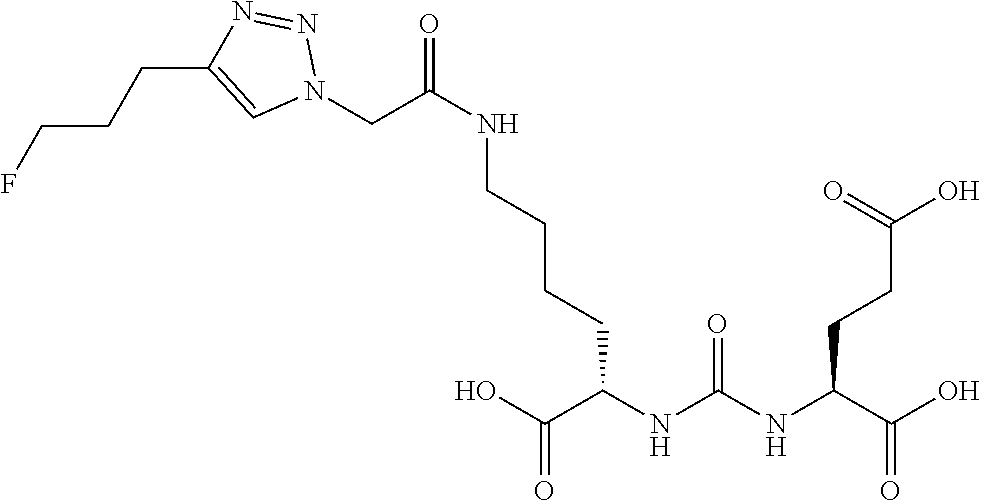
C00046

C00047

C00048

C00049

C00050

C00051

C00052

C00053

C00054

C00055

C00056

C00057
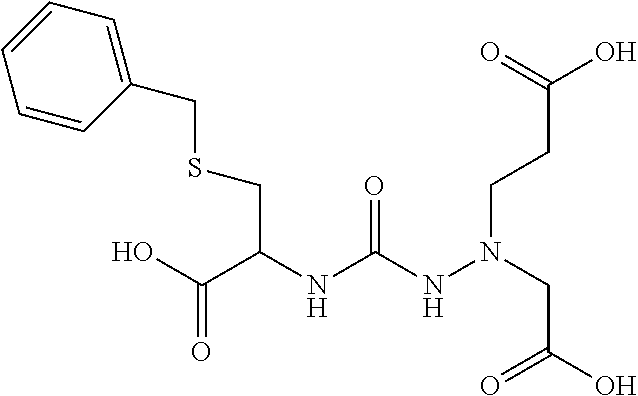
C00058

C00059

C00060

C00061
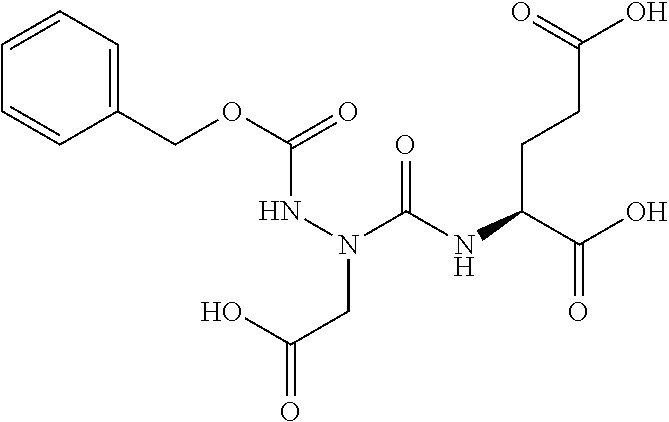
C00062

C00063

C00064

C00065
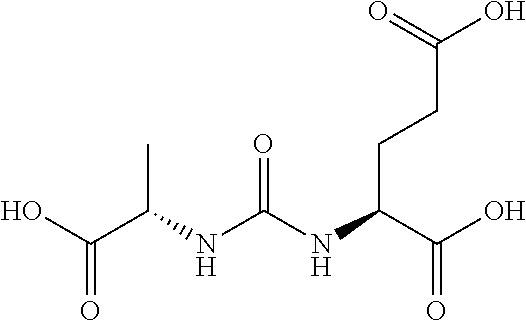
C00066

C00067

C00068

C00069

C00070

C00071

C00072

C00073

C00074

C00075

C00076
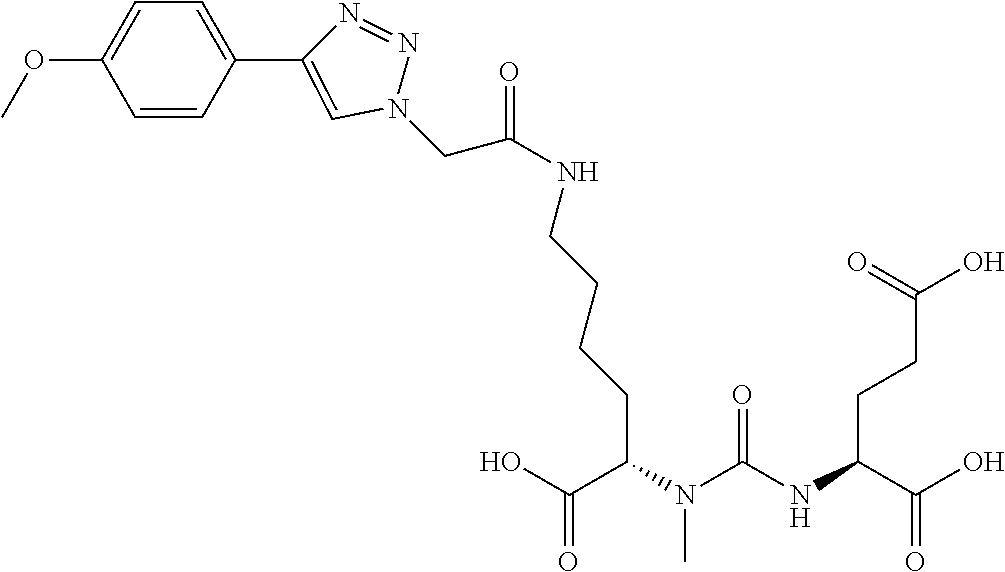
C00077

C00078

C00079
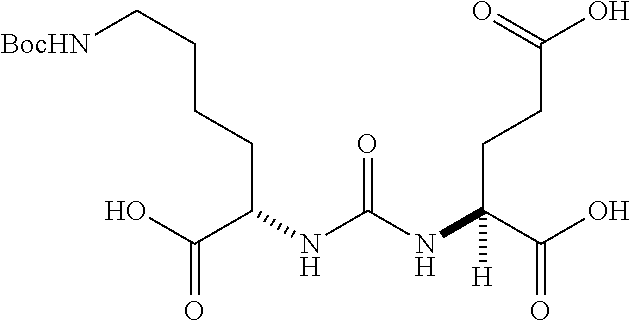
C00080

C00081

C00082

C00083

C00084

C00085

C00086

C00087

C00088

C00089
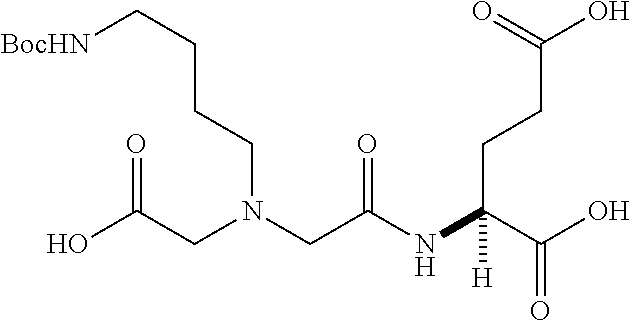
C00090

C00091

C00092

C00093

C00094

C00095

C00096
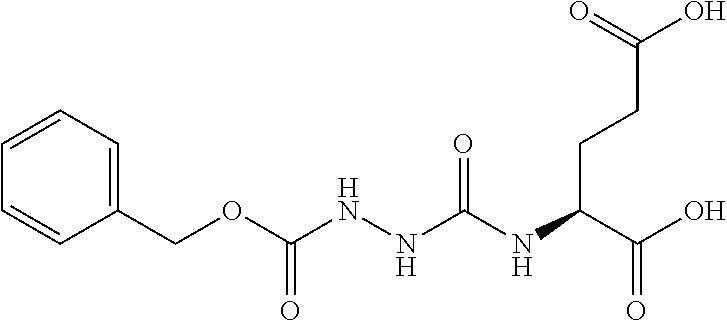
C00097

C00098
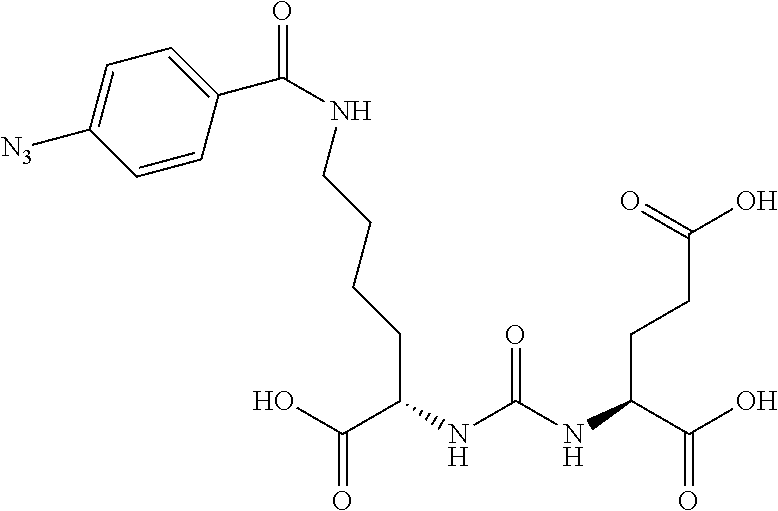
C00099

C00100

C00101

C00102

C00103

C00104
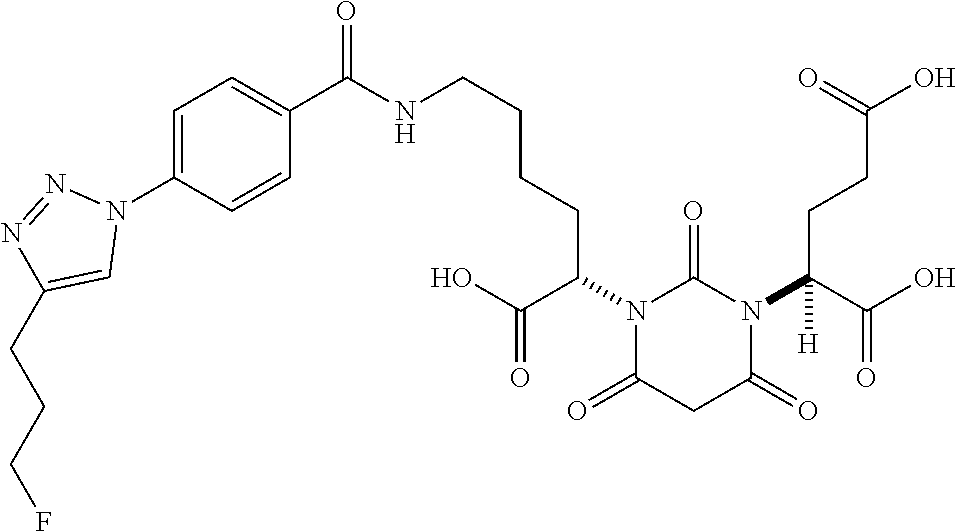
C00105

C00106

C00107

C00108

C00109

C00110
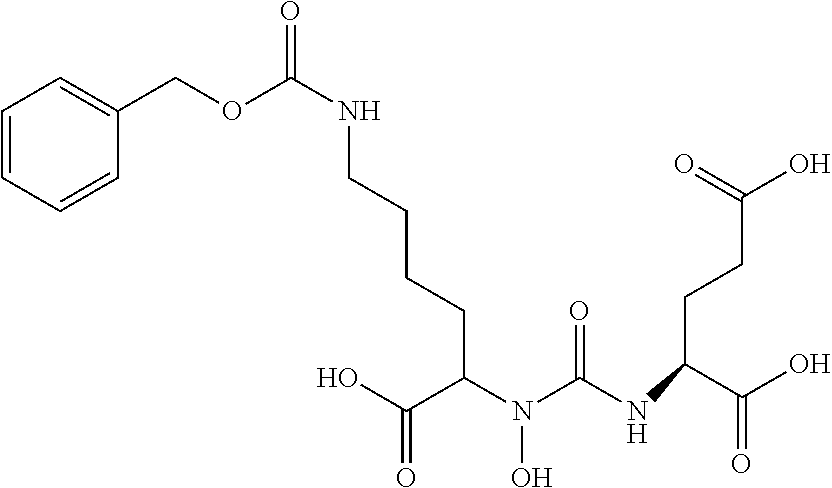
C00111

C00112

C00113

C00114

C00115

C00116

C00117

C00118

C00119

C00120
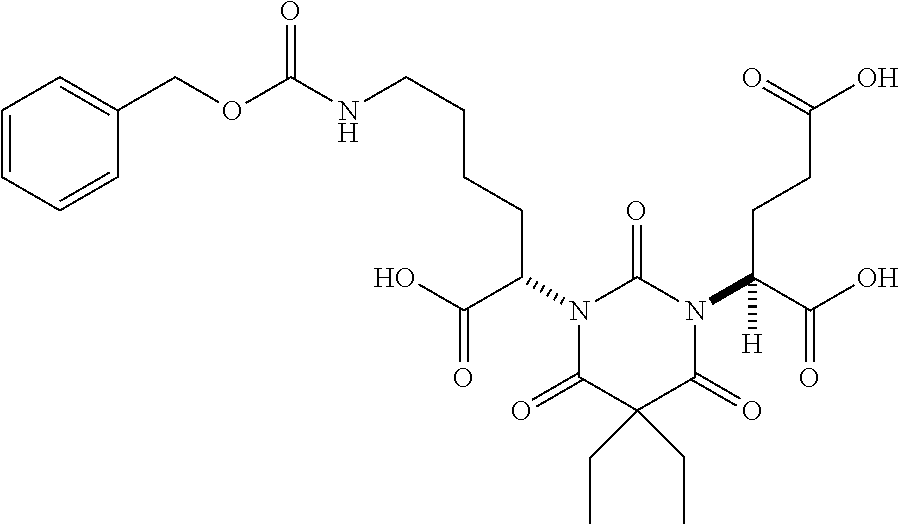
C00121

C00122

C00123

C00124
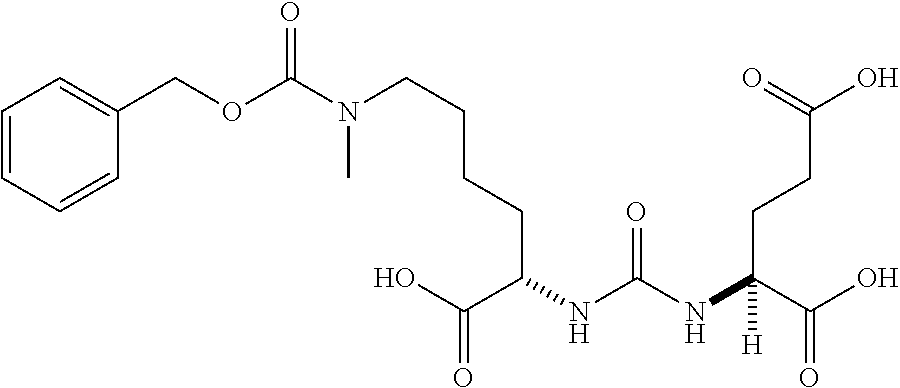
C00125

C00126

C00127
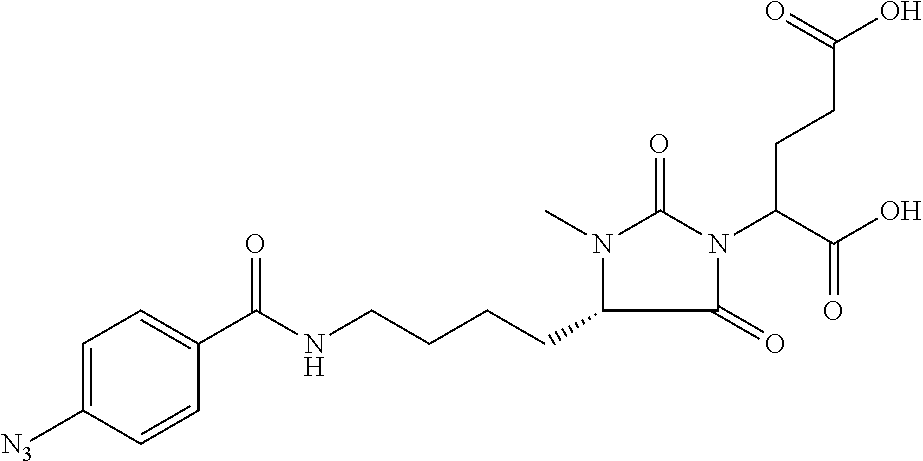
C00128

C00129

C00130
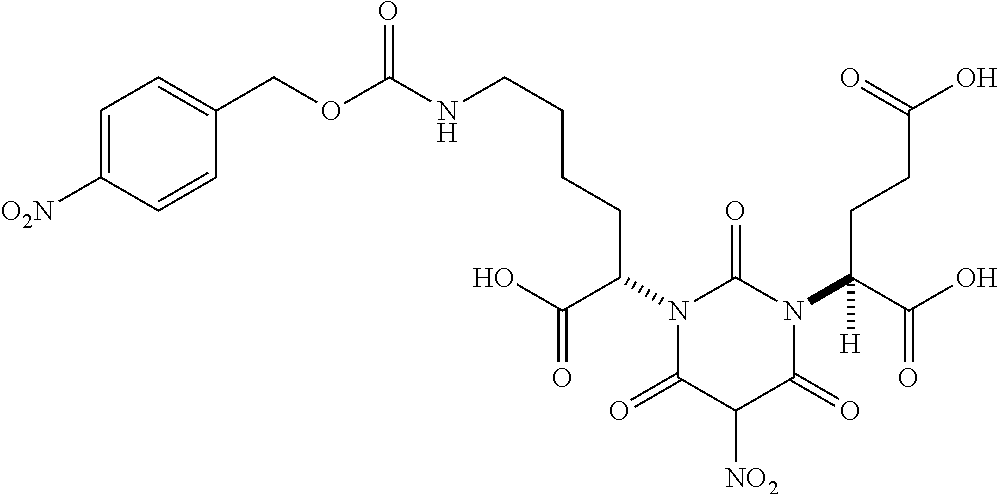
C00131

C00132

C00133

C00134

C00135

C00136

C00137

C00138

C00139

C00140

C00141

C00142

C00143

C00144

C00145

C00146

C00147

C00148

C00149

C00150

C00151

C00152

C00153

C00154

C00155

C00156
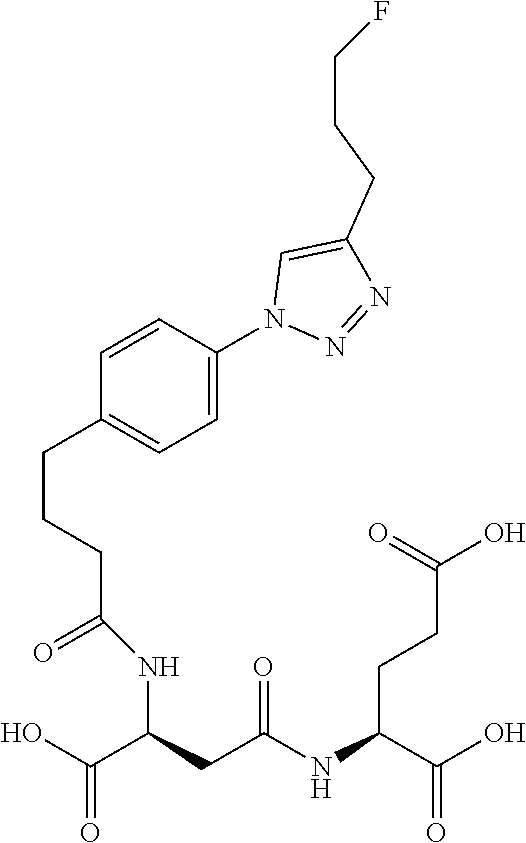
C00157

C00158

C00159

C00160

C00161
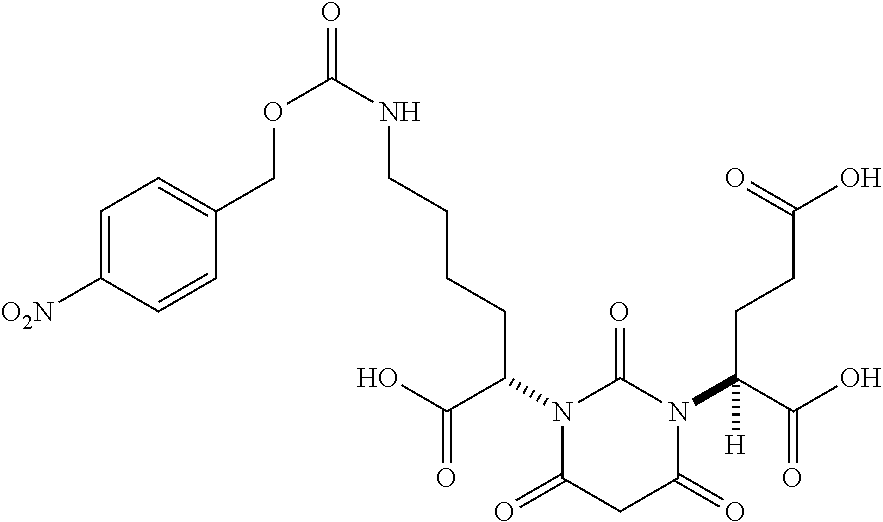
C00162

C00163

C00164

C00165

C00166

C00167

C00168

C00169

C00170

C00171

C00172

C00173

C00174

C00175

C00176
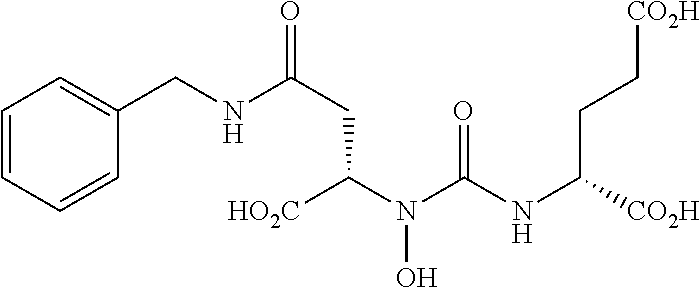
C00177

C00178

C00179

C00180

C00181

C00182

C00183

C00184

C00185

C00186

C00187

C00188

C00189
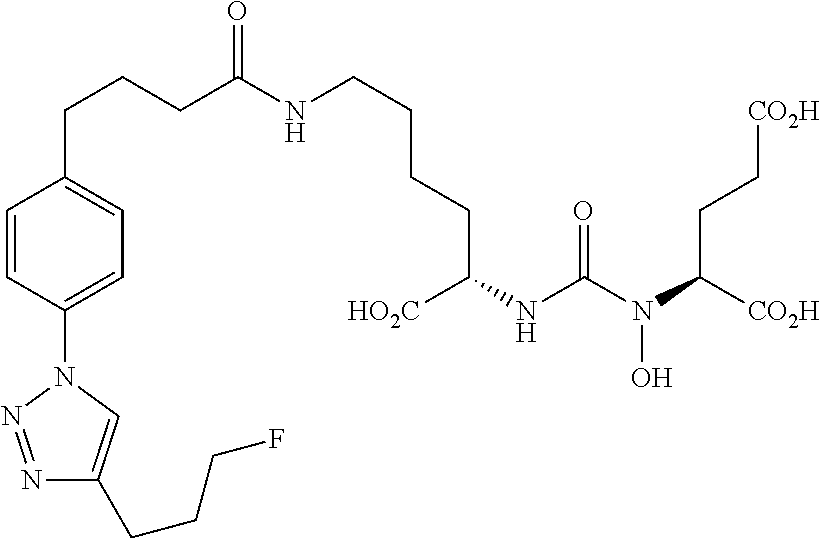
C00190

C00191

C00192

C00193

C00194

C00195

C00196

C00197

C00198

C00199

C00200

C00201

C00202

C00203

C00204

C00205

C00206

C00207
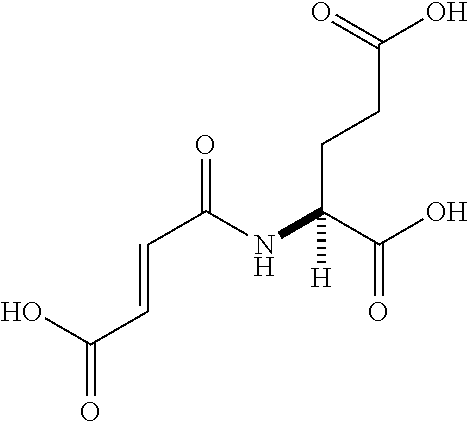
C00208

C00209

C00210

C00211

C00212

C00213

C00214
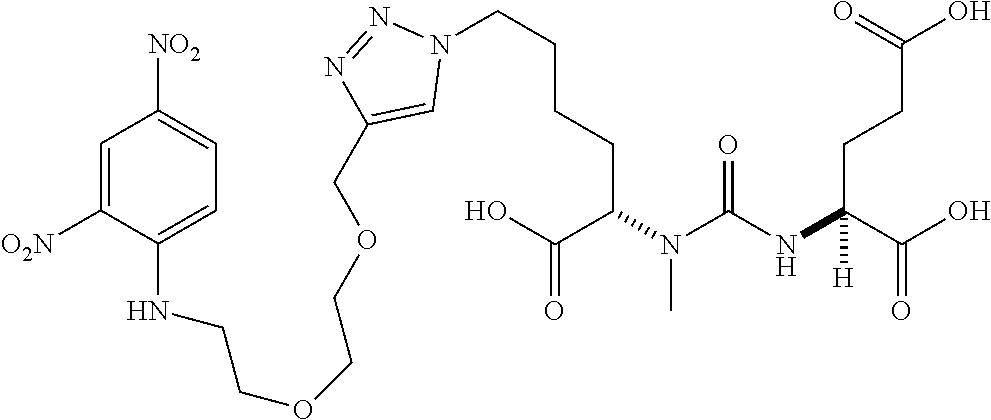
C00215

C00216

C00217

C00218

C00219

C00220

C00221

C00222

C00223

C00224

C00225
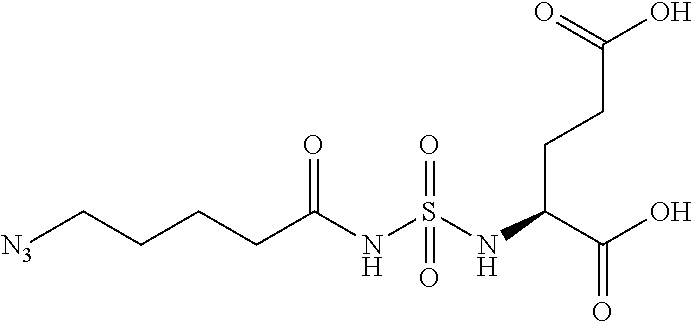
C00226

C00227

C00228

C00229

C00230

C00231

C00232

C00233

C00234
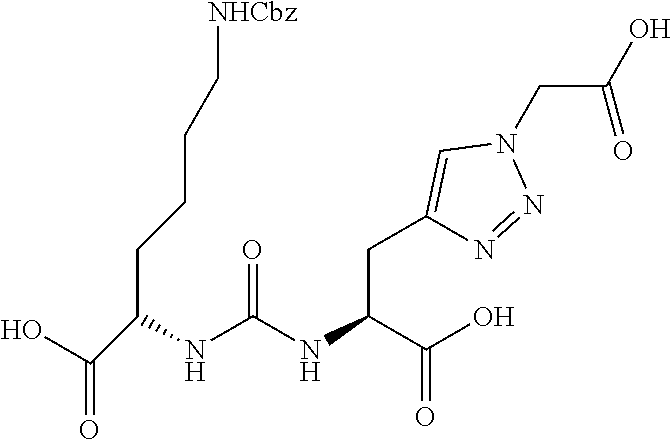
C00235

C00236

C00237

C00238

C00239

C00240

C00241

C00242

C00243

C00244
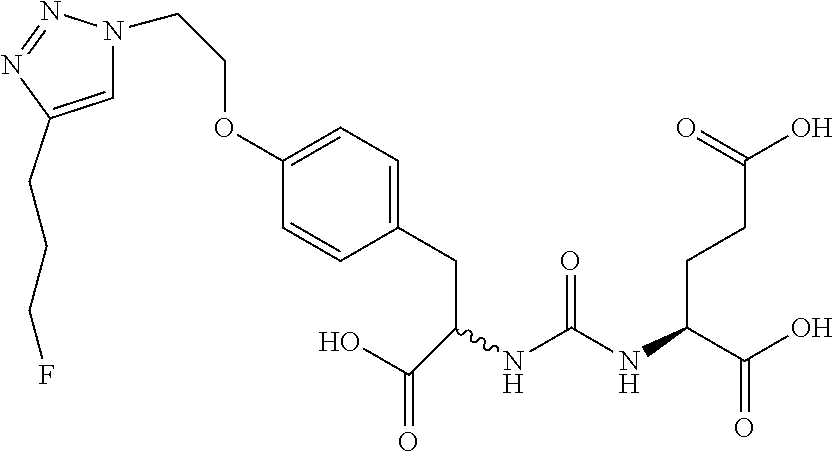
C00245

C00246

C00247

C00248

C00249
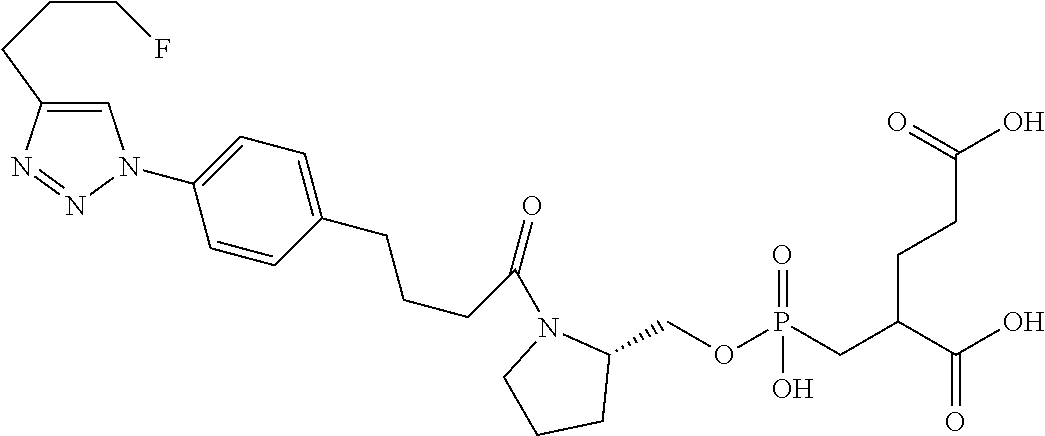
C00250

C00251

C00252

C00253

C00254
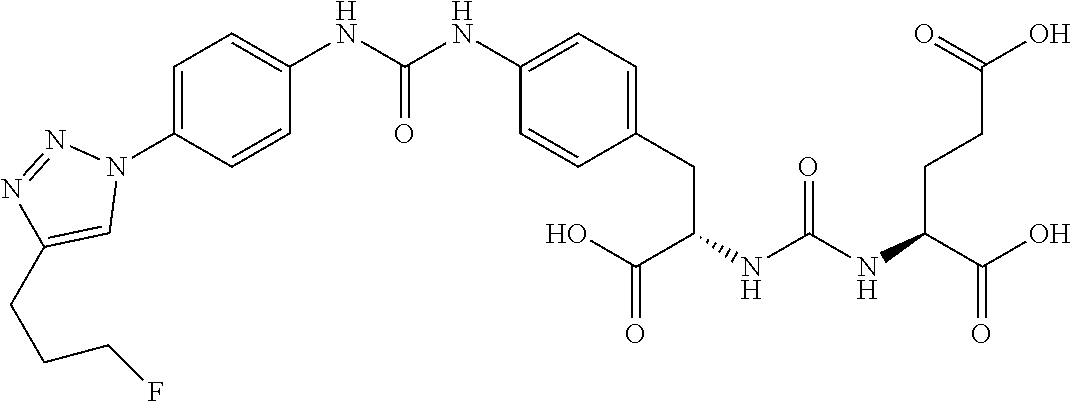
C00255

C00256

C00257

C00258

C00259

C00260

C00261

C00262

C00263

C00264

C00265

C00266

C00267

C00268

C00269

C00270

C00271

C00272

C00273

C00274

C00275
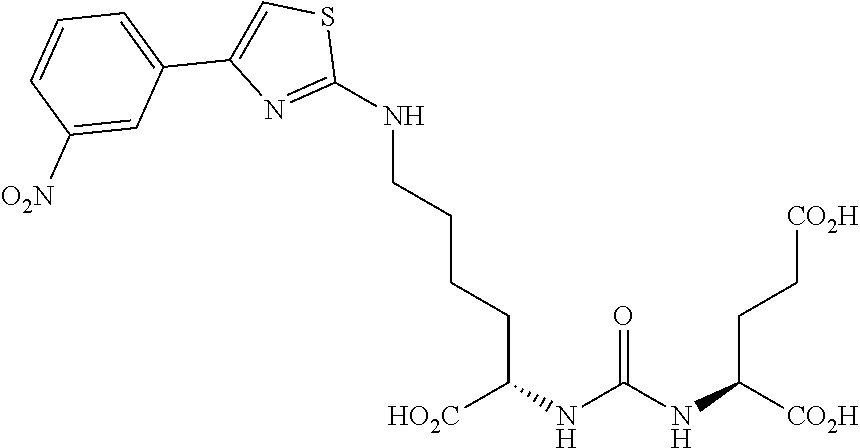
C00276

C00277
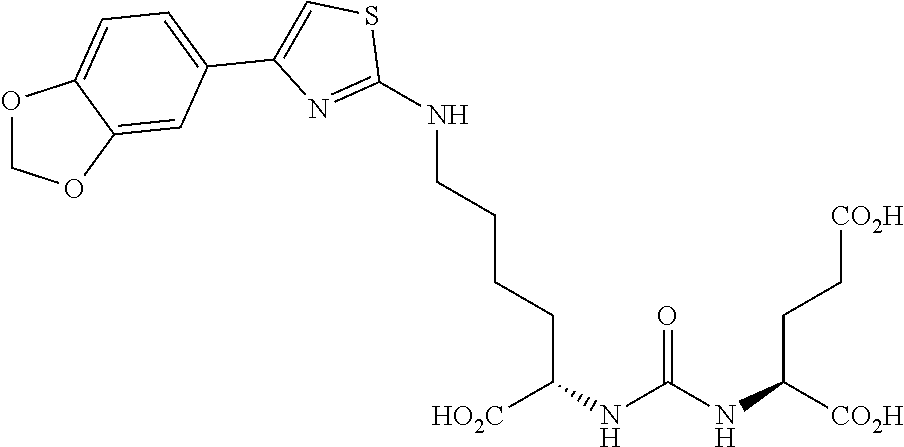
C00278

C00279
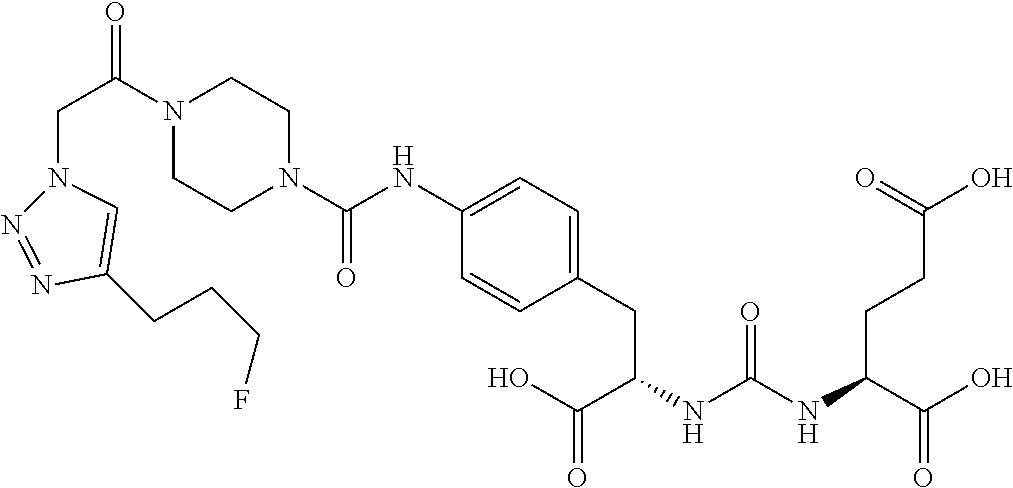
C00280

C00281

C00282

C00283

C00284

C00285

C00286
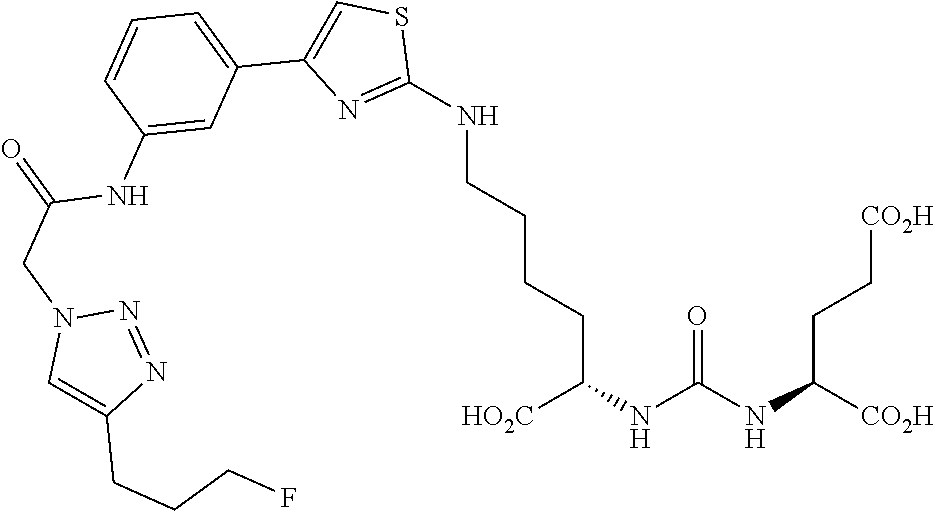
C00287
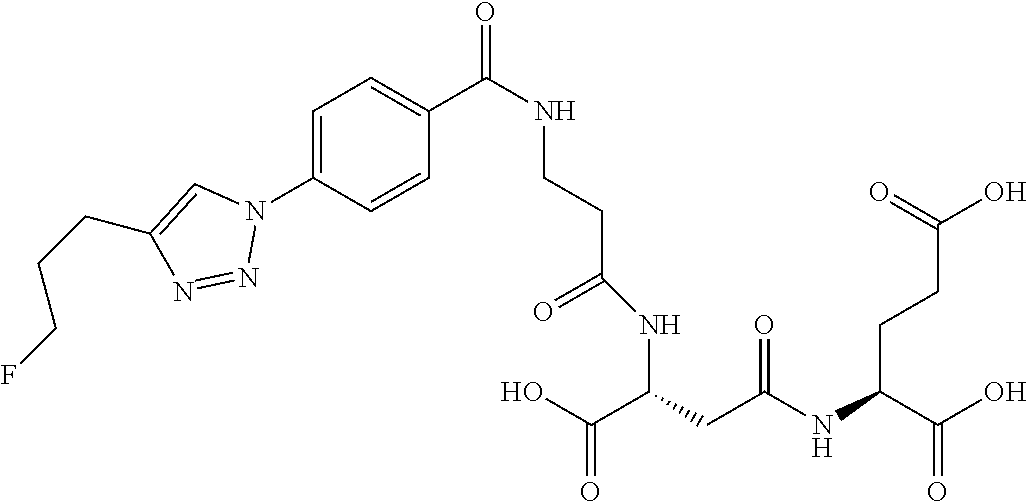
C00288

C00289

C00290

C00291

C00292

C00293

C00294

C00295

C00296

C00297

C00298

C00299

C00300

C00301

C00302

C00303

C00304

C00305

C00306

C00307

C00308

C00309

C00310

C00311

C00312

C00313
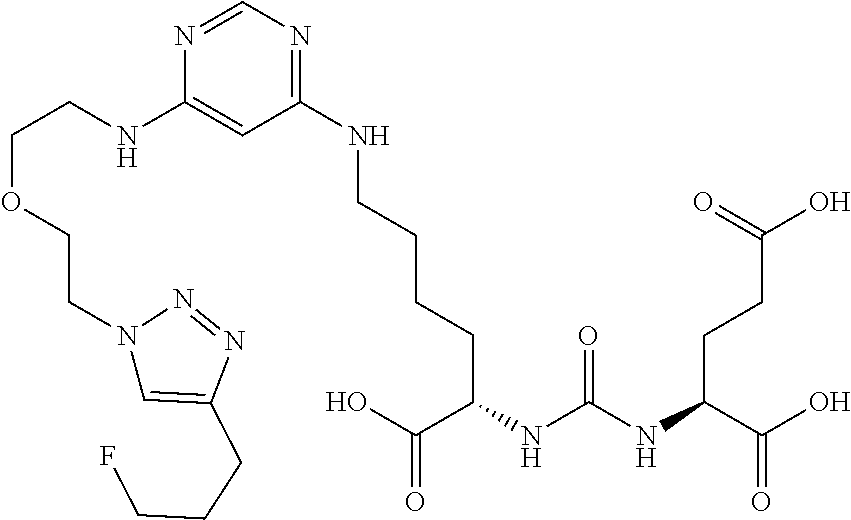
C00314

C00315

C00316

C00317

C00318

C00319

C00320

C00321

C00322

C00323

C00324

C00325

C00326

C00327
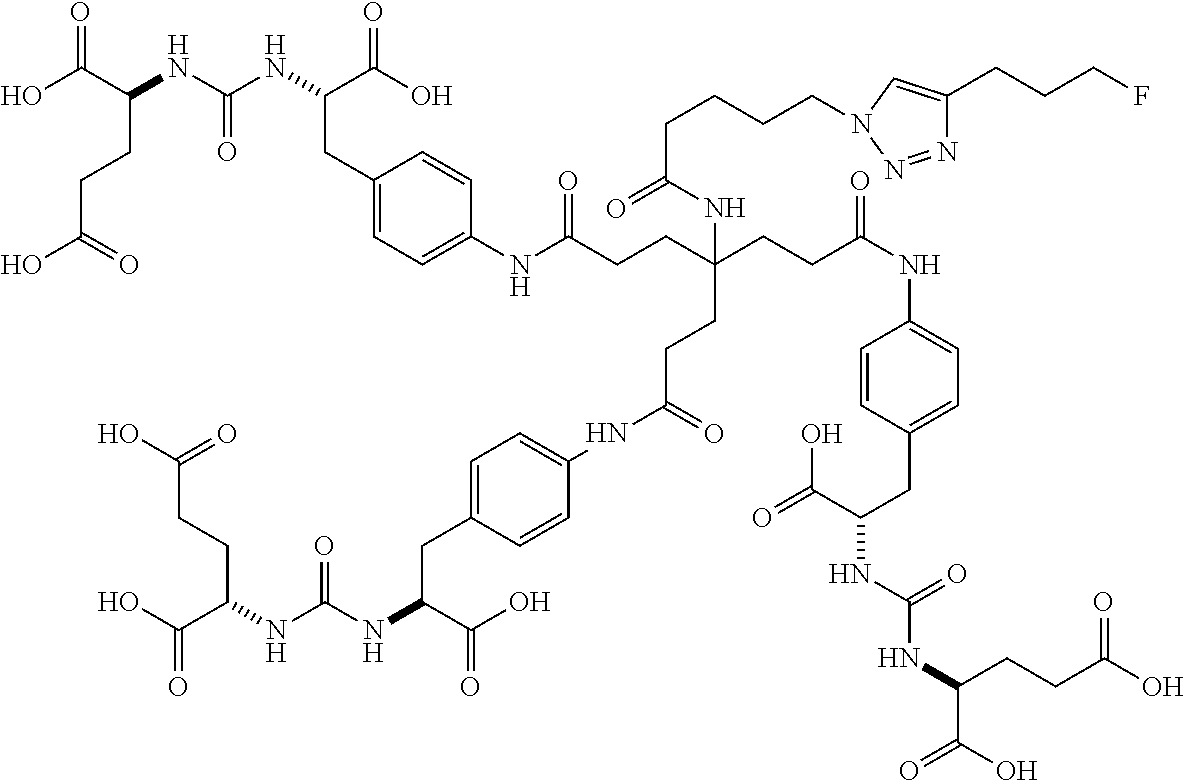
C00328

C00329

C00330

C00331

C00332

C00333

C00334

C00335

C00336

C00337
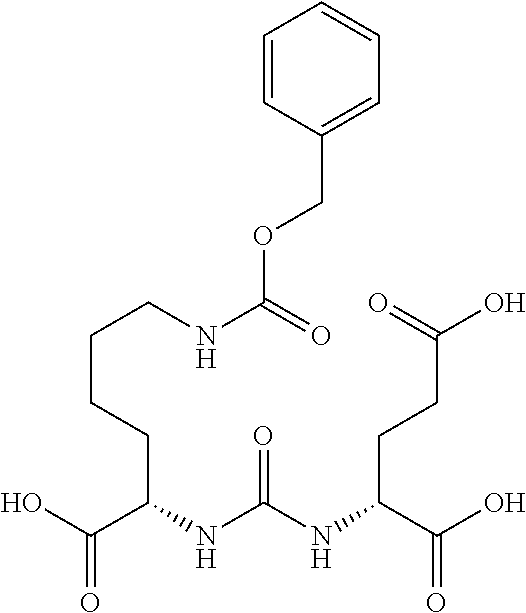
C00338
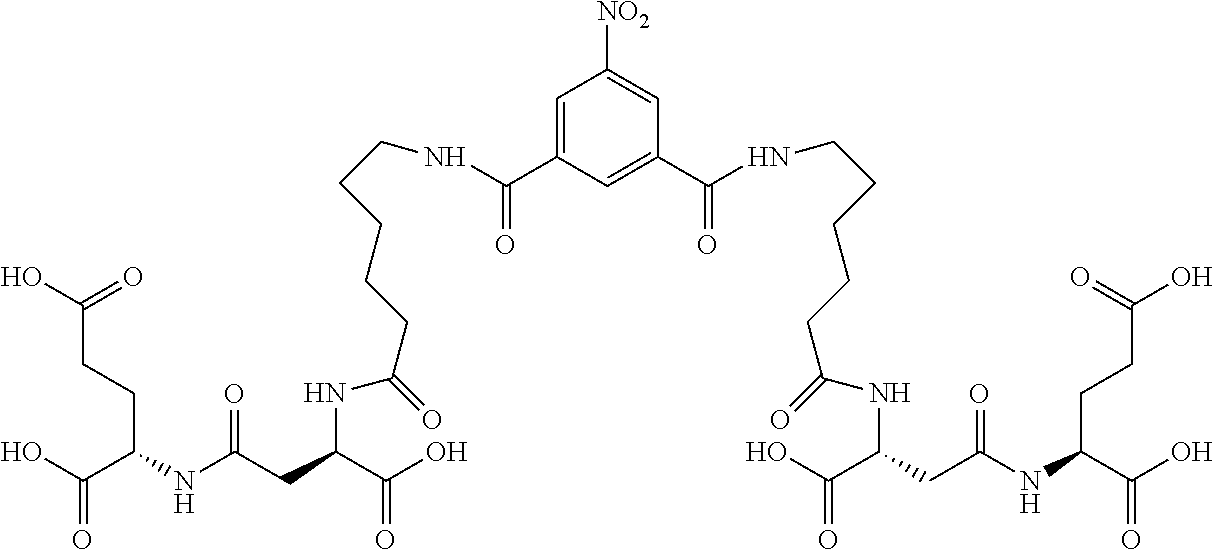
C00339

C00340

C00341

C00342

C00343

C00344

C00345

C00346

C00347

C00348

C00349

C00350

C00351

C00352

C00353

C00354

C00355

C00356

C00357
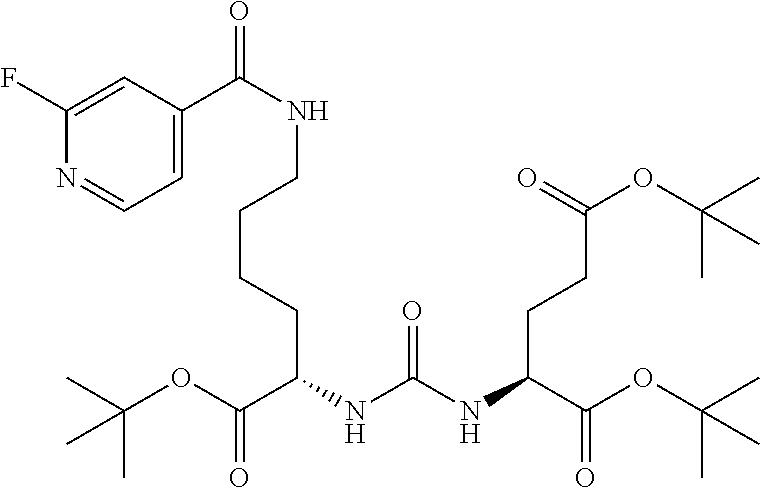
C00358

C00359

C00360

C00361

C00362

C00363

C00364

C00365

C00366
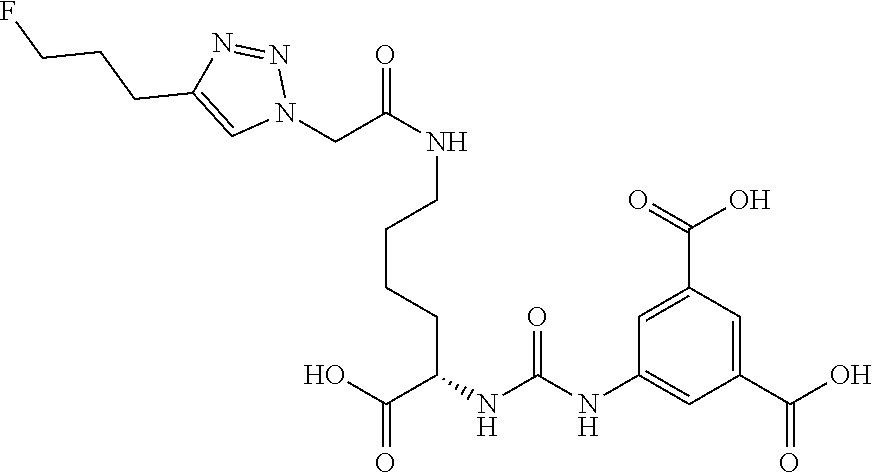
C00367

C00368

C00369

C00370

C00371
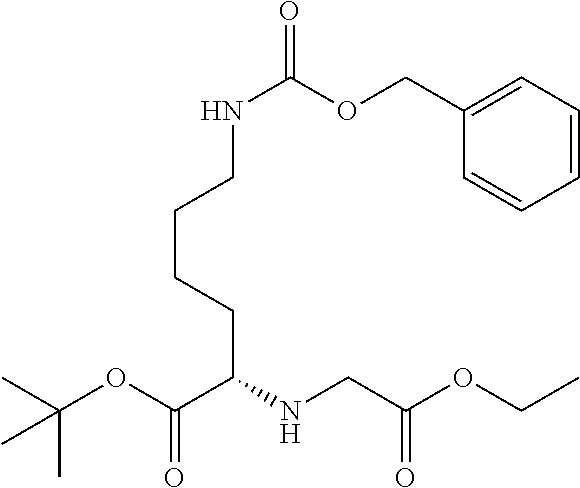
C00372

C00373

C00374

C00375
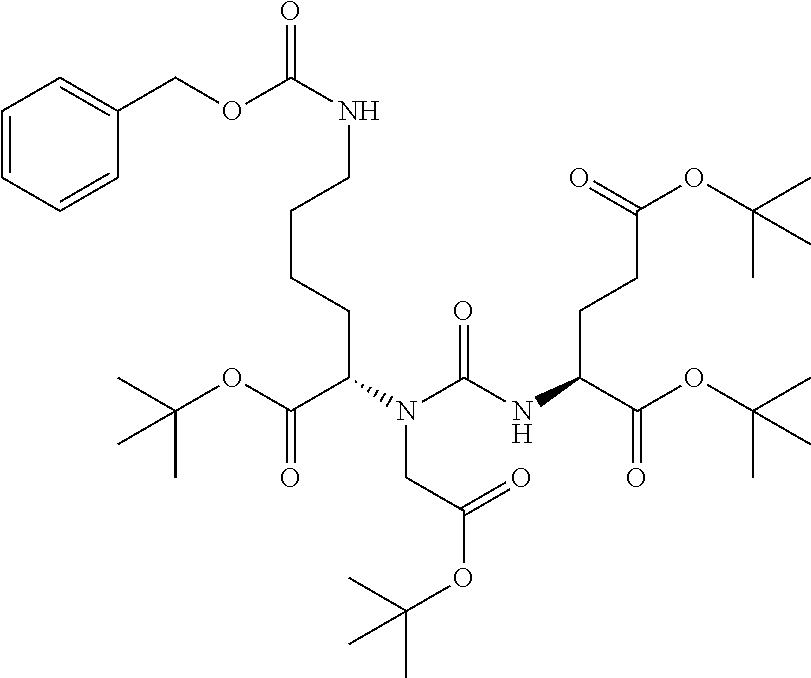
C00376

C00377

C00378

C00379

C00380

C00381

C00382

C00383

C00384

C00385
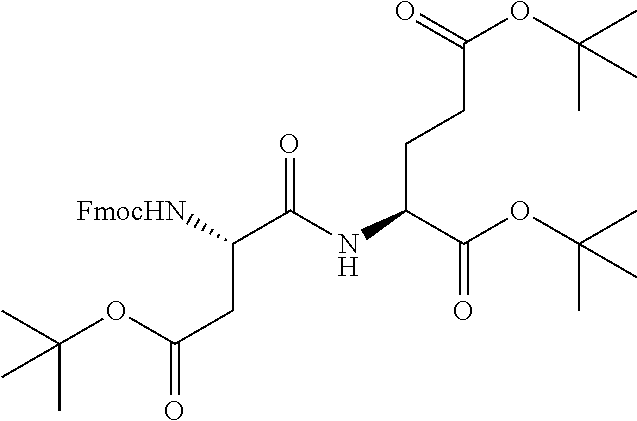
C00386

C00387

C00388

C00389

C00390

C00391

C00392

C00393

C00394

C00395
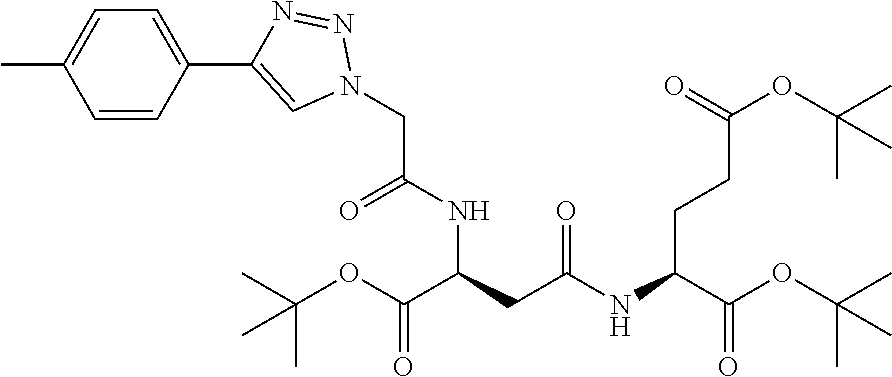
C00396
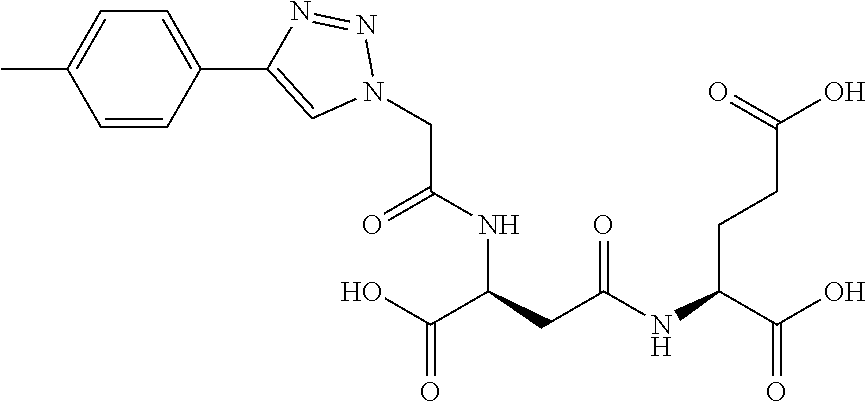
C00397

C00398
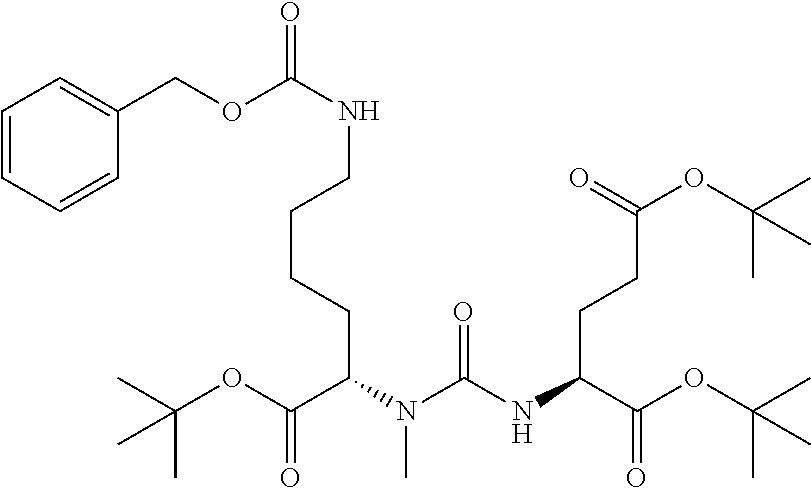
C00399

C00400

C00401

C00402

C00403

C00404

C00405

C00406

C00407

C00408

C00409

C00410

C00411

C00412

C00413

C00414

C00415

C00416

C00417
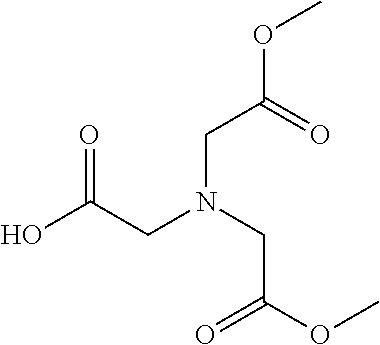
C00418

C00419
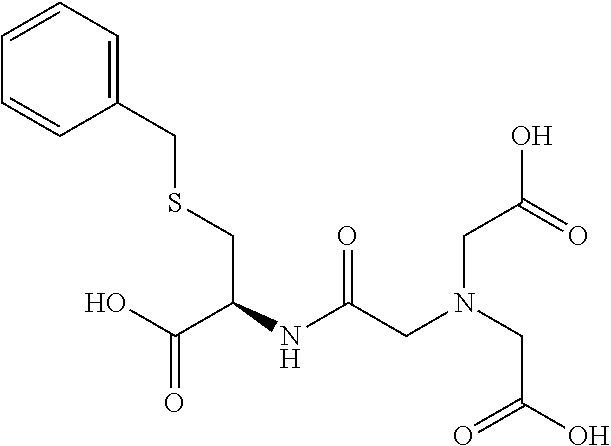
C00420

C00421
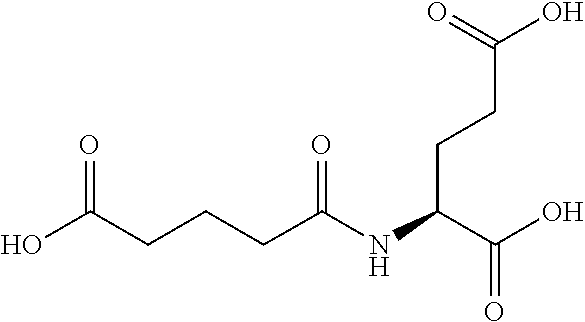
C00422

C00423

C00424

C00425

C00426

C00427

C00428
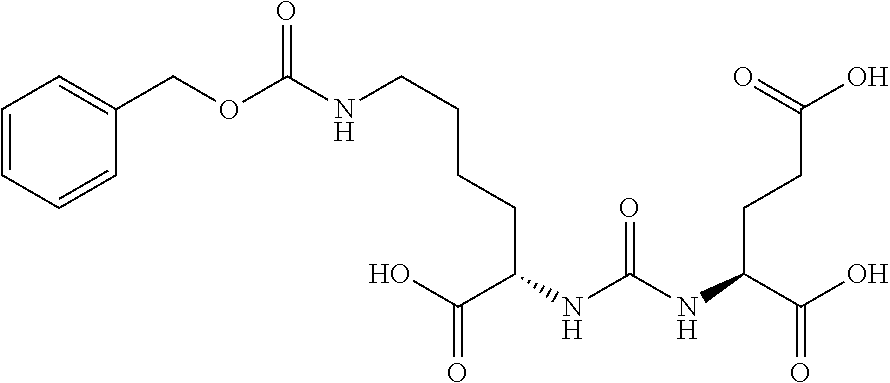
C00429

C00430

C00431

C00432

C00433

C00434

C00435

C00436
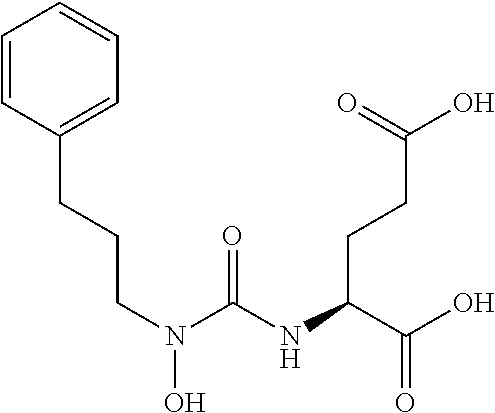
C00437

C00438

C00439

C00440
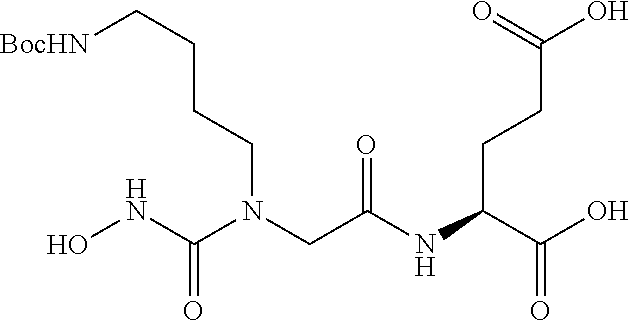
C00441

C00442

C00443

C00444

C00445

C00446

C00447

C00448

C00449

C00450

C00451

C00452

C00453
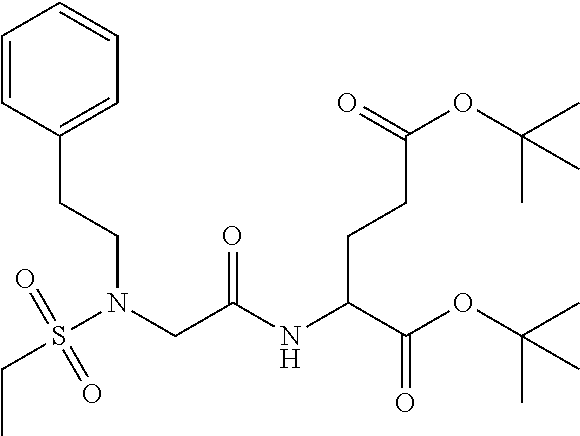
C00454

C00455

C00456
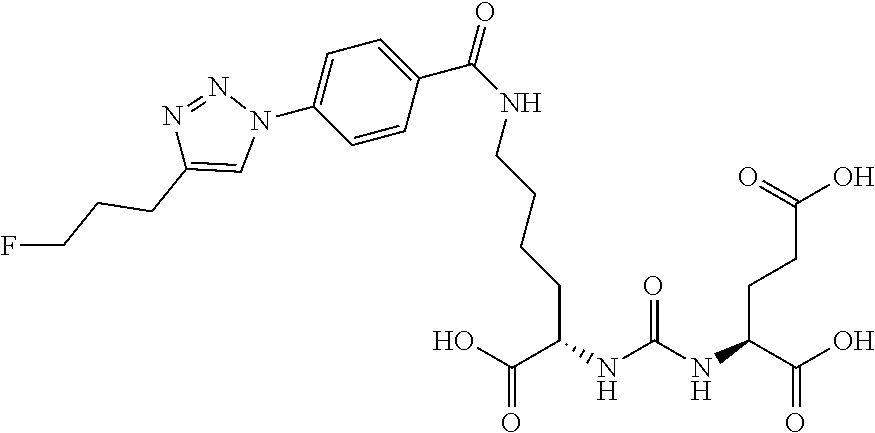
C00457

C00458

C00459

C00460
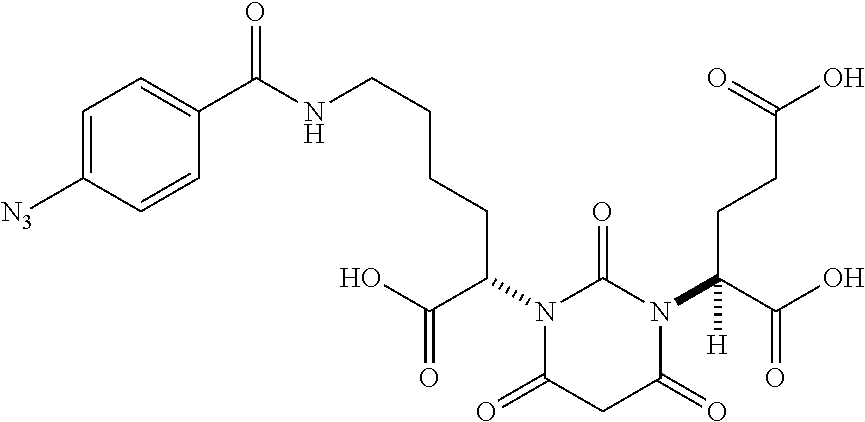
C00461

C00462

C00463

C00464

C00465

C00466

C00467

C00468

C00469

C00470

C00471

C00472

C00473

C00474

C00475

C00476
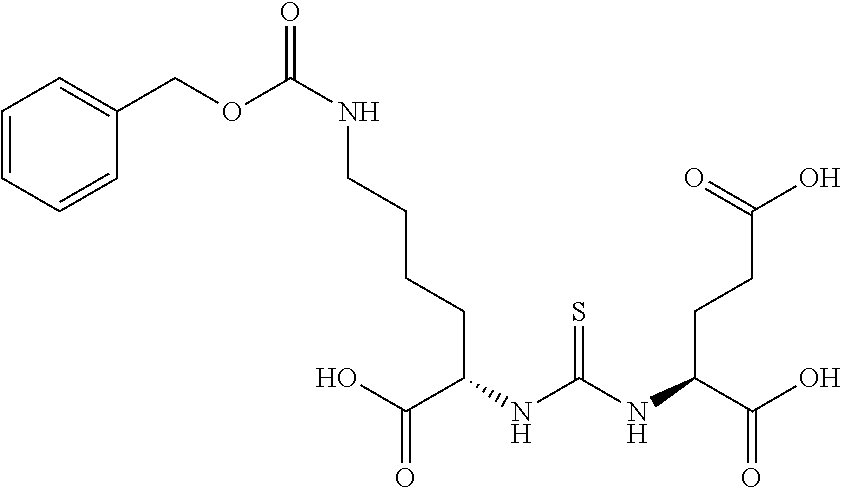
C00477
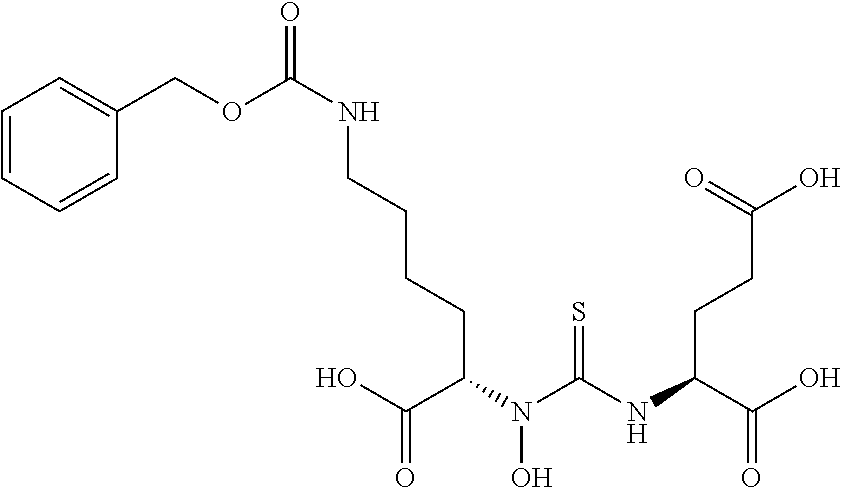
C00478

C00479

C00480

C00481

C00482

C00483

C00484

C00485
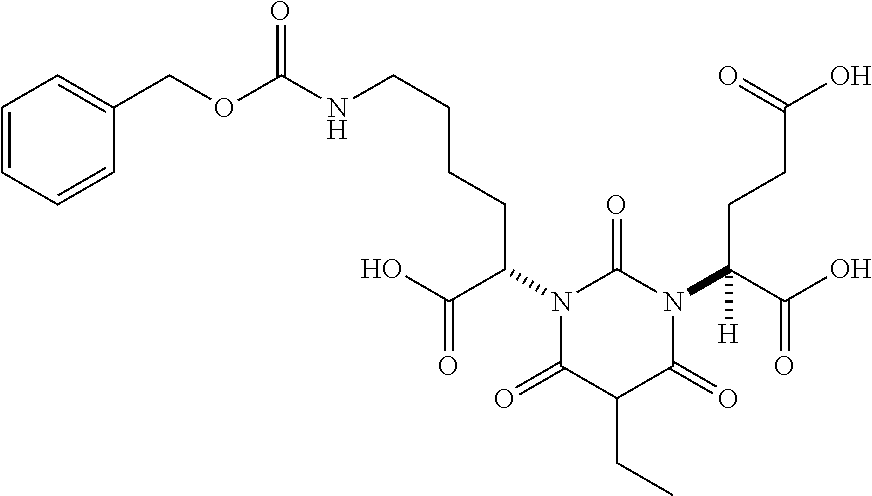
C00486
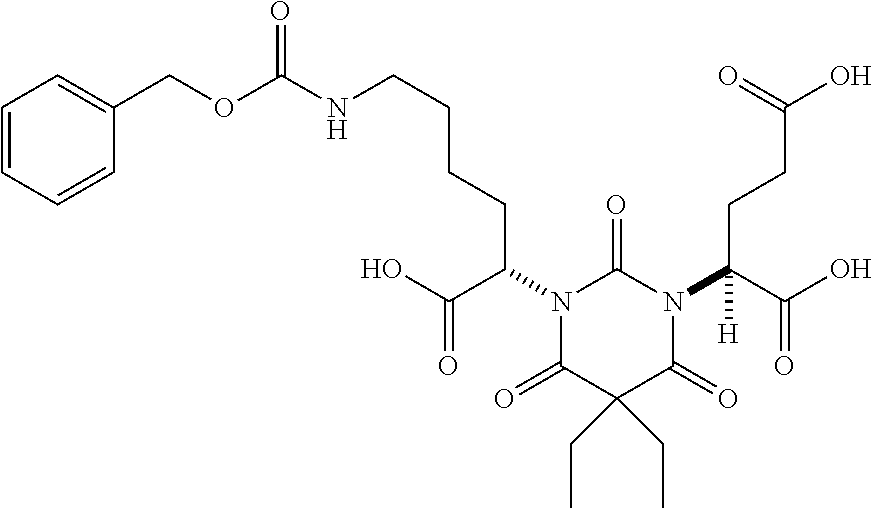
C00487

C00488

C00489

C00490

C00491

C00492

C00493

C00494

C00495
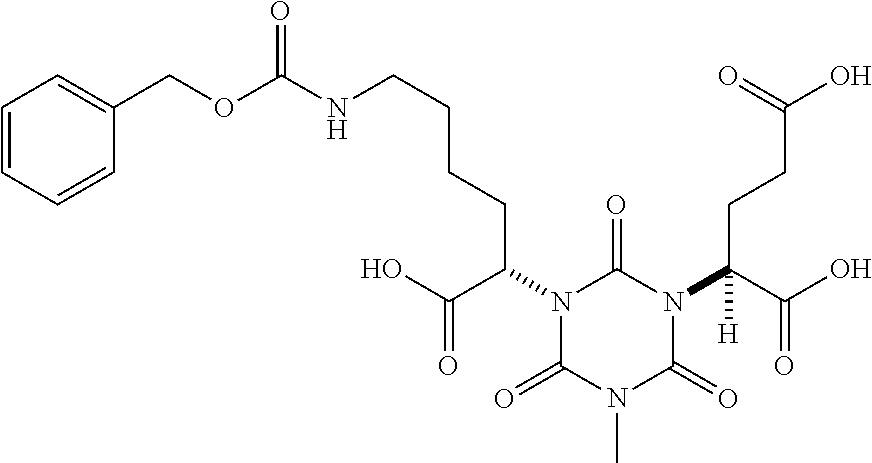
C00496

C00497

C00498

C00499

C00500

C00501

C00502

C00503
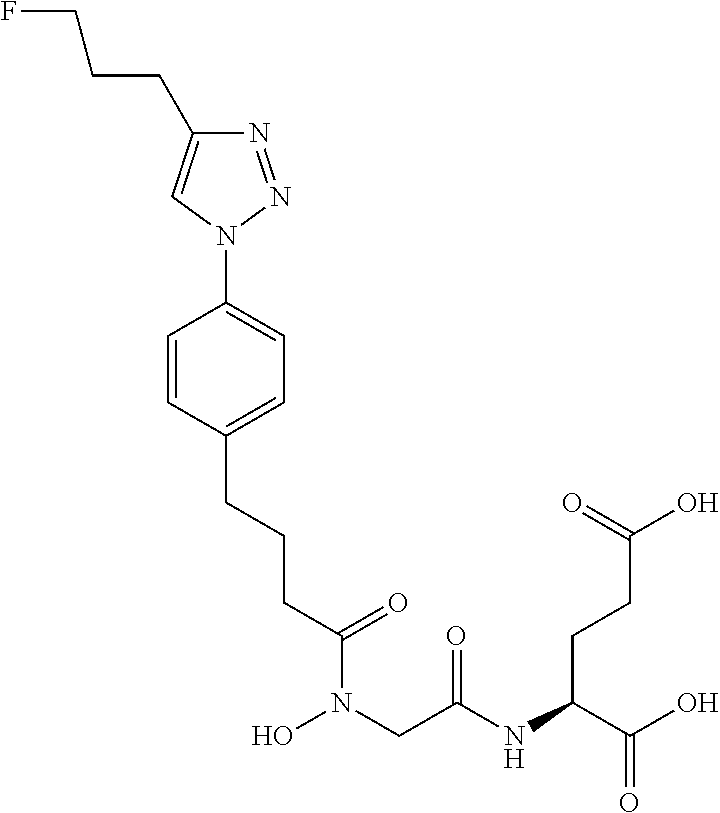
C00504

C00505

C00506

C00507
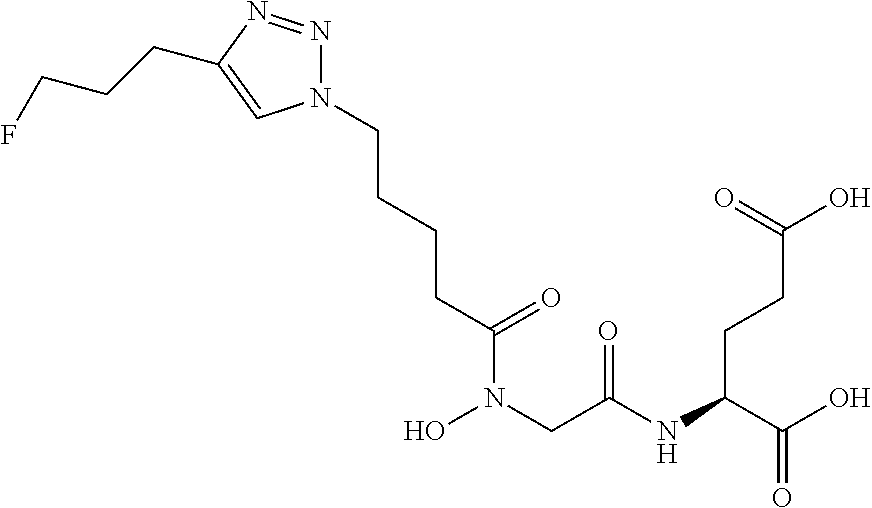
C00508

C00509
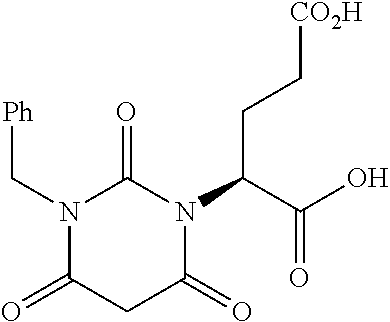
C00510

C00511

C00512

C00513

C00514

C00515

C00516

C00517

C00518

C00519

C00520

C00521

C00522

C00523

C00524

C00525
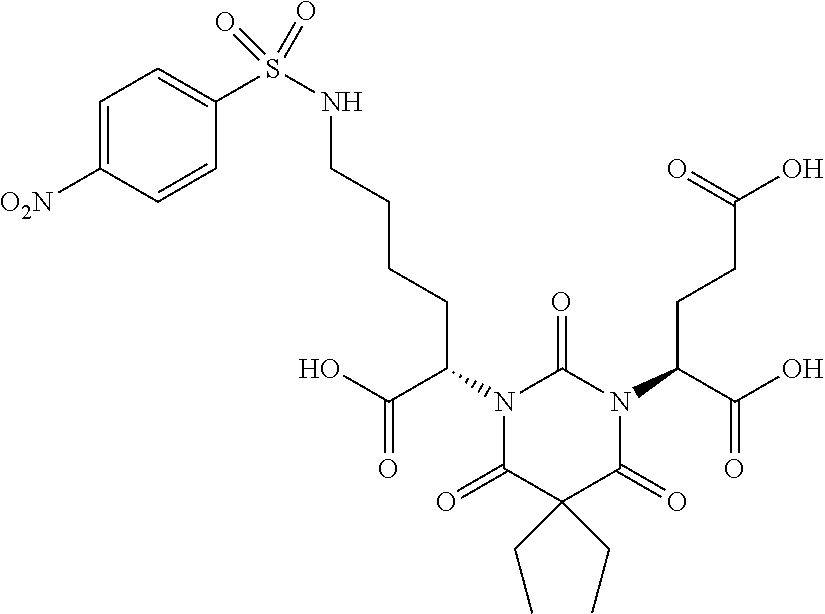
C00526

C00527

C00528

C00529

C00530
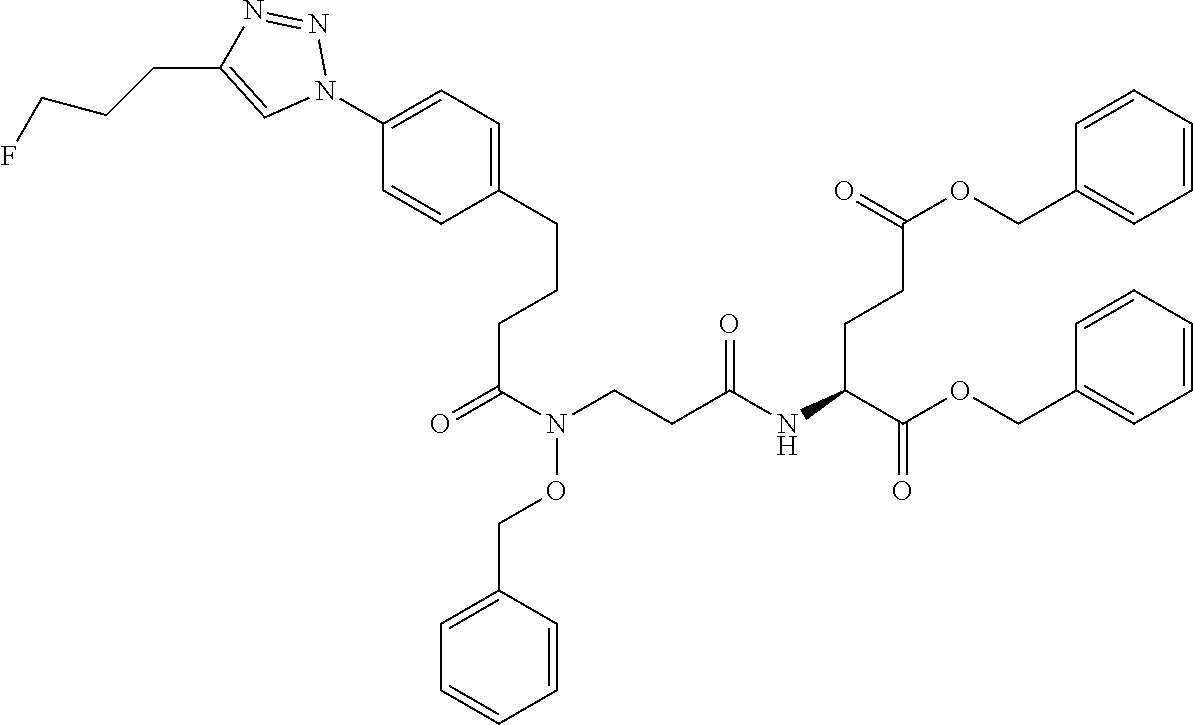
C00531
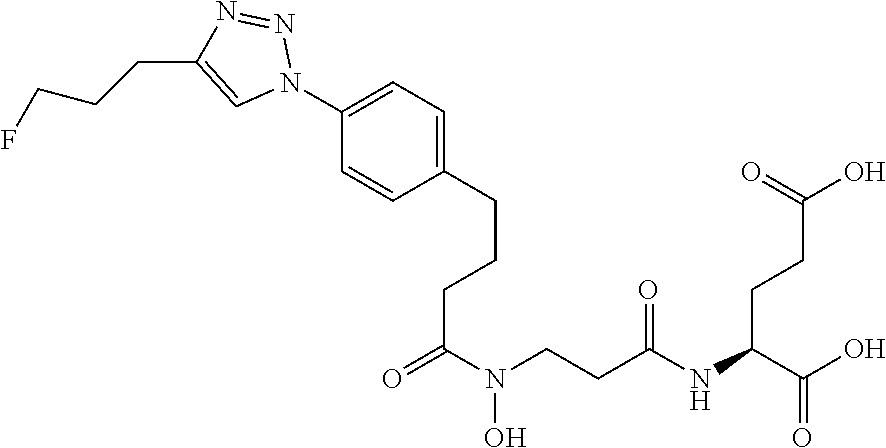
C00532
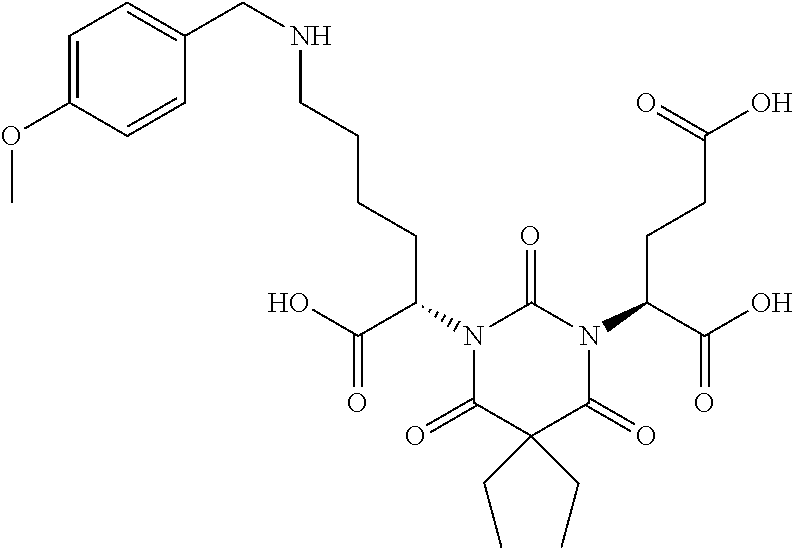
C00533

C00534

C00535

C00536

C00537

C00538

C00539

C00540

C00541

C00542

C00543

C00544

C00545

C00546

C00547

C00548

C00549

C00550

C00551

C00552

C00553

C00554

C00555

C00556

C00557

C00558
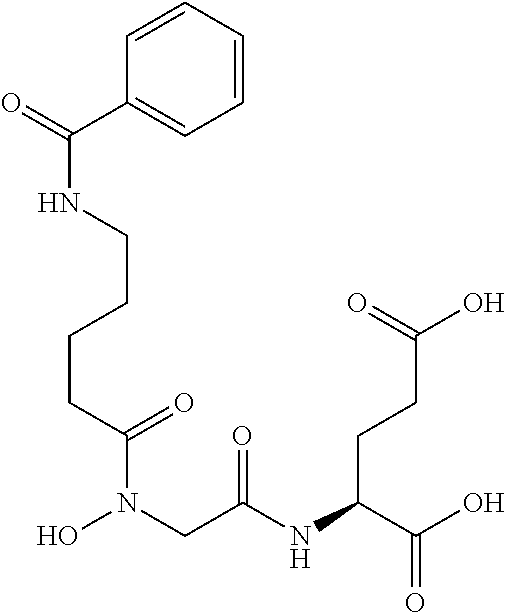
C00559
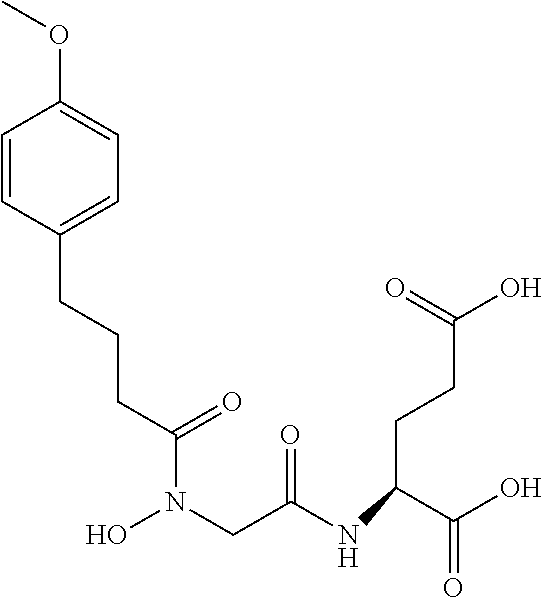
C00560
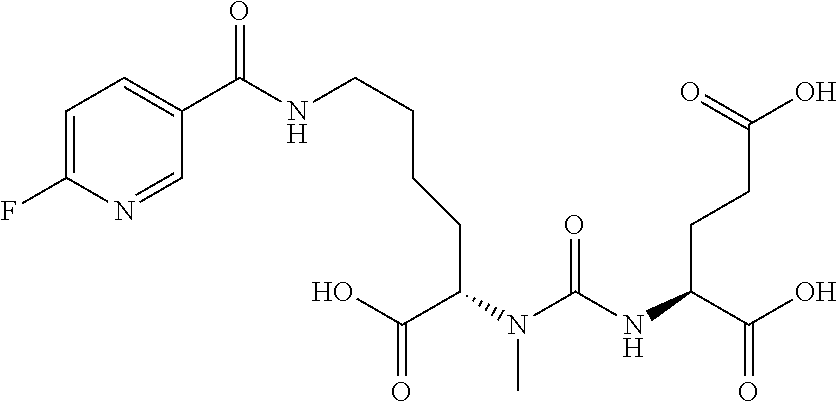
C00561

C00562

C00563

C00564

C00565

C00566
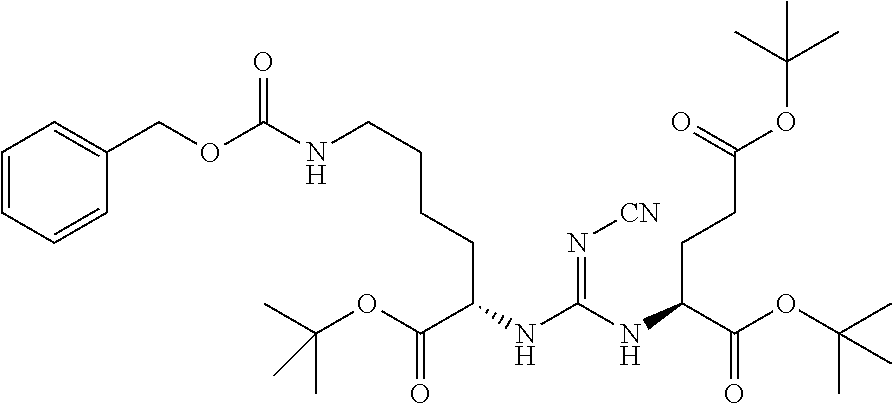
C00567

C00568
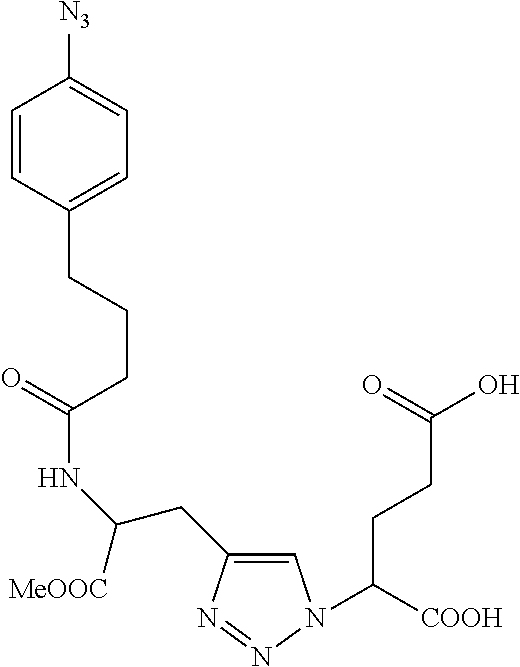
C00569

C00570

C00571

C00572

C00573

C00574

C00575

C00576

C00577

C00578

C00579
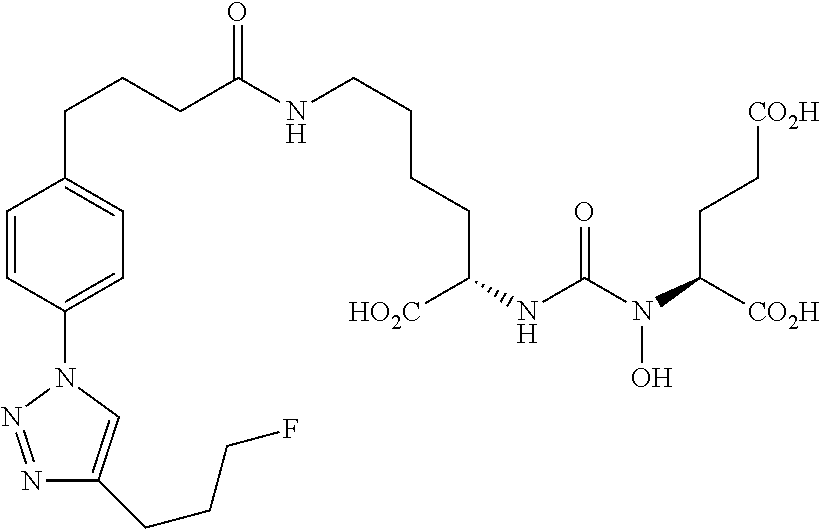
C00580
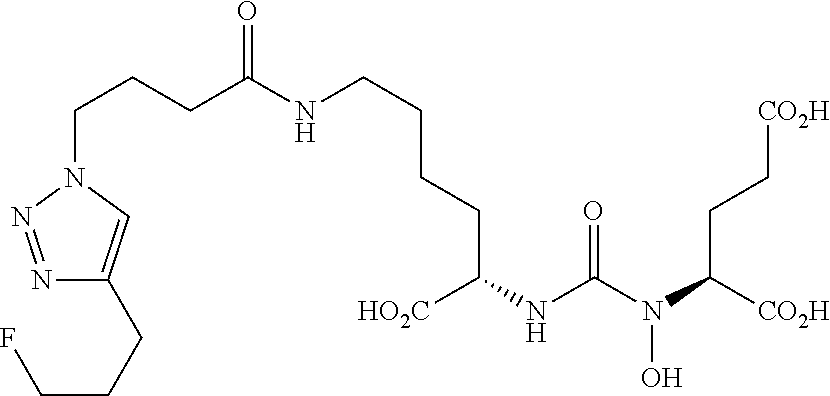
C00581
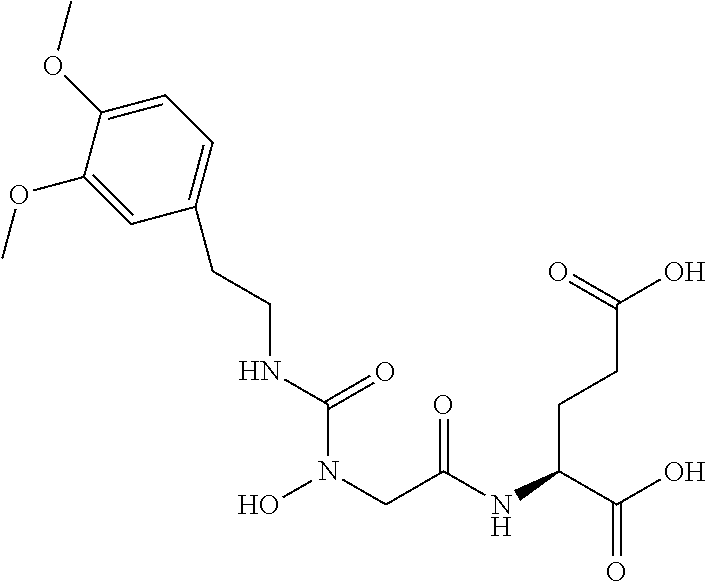
C00582

C00583

C00584

C00585

C00586
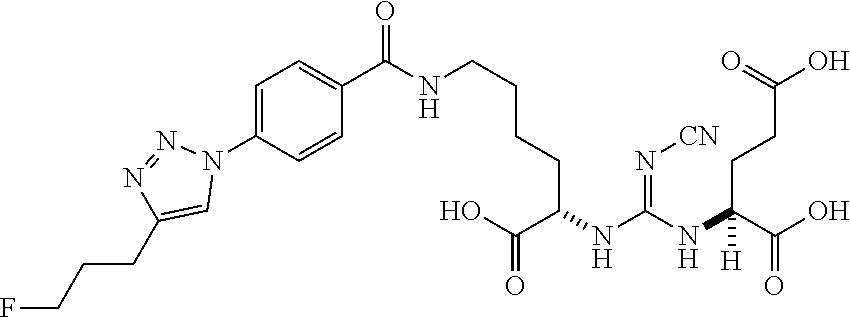
C00587

C00588

C00589

C00590

C00591

C00592

C00593

C00594
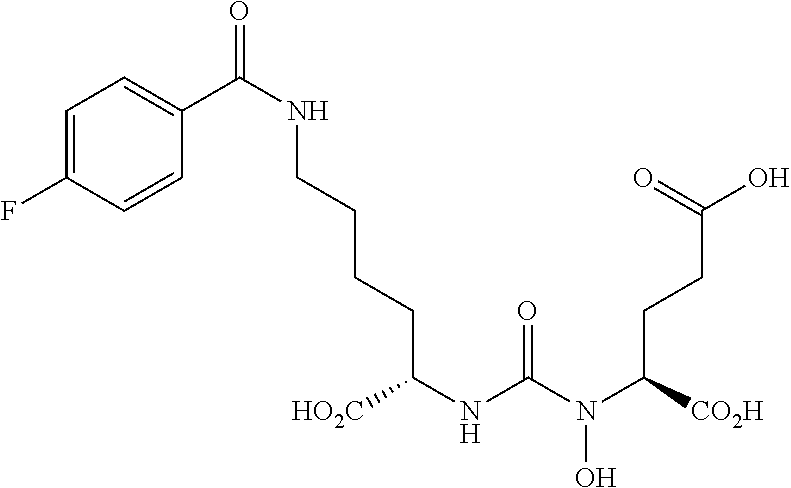
C00595

C00596

C00597

C00598

C00599

C00600
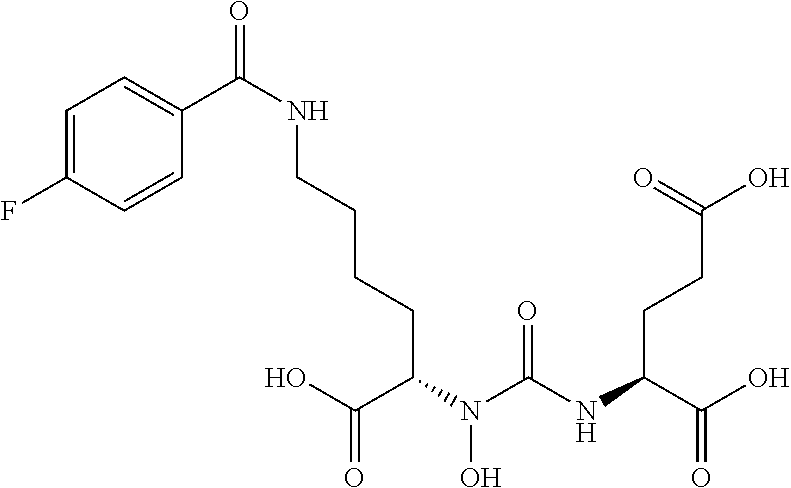
C00601

C00602

C00603

C00604
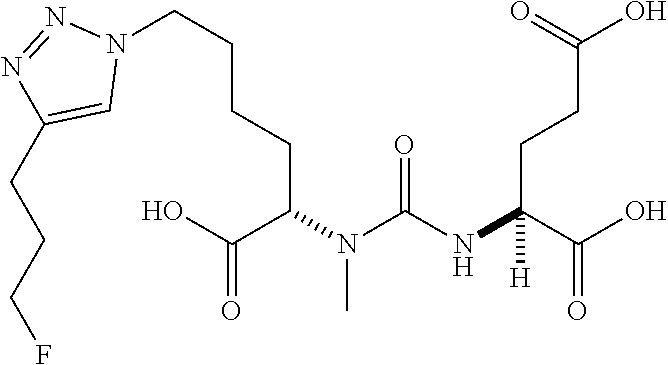
C00605

C00606

C00607
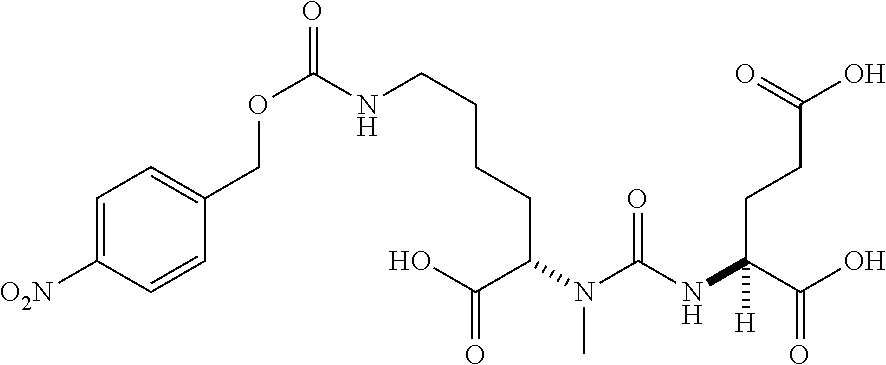
C00608

C00609

C00610

C00611

C00612
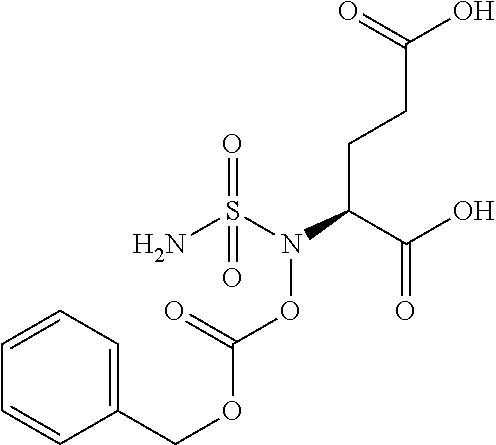
C00613

C00614

C00615

C00616

C00617

C00618

C00619

C00620

C00621

C00622

C00623

C00624

C00625
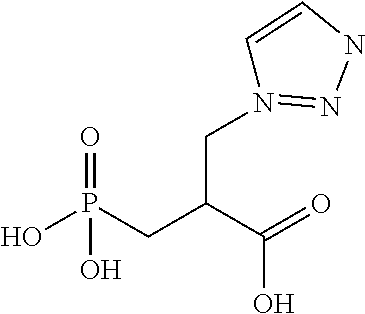
C00626

C00627

C00628
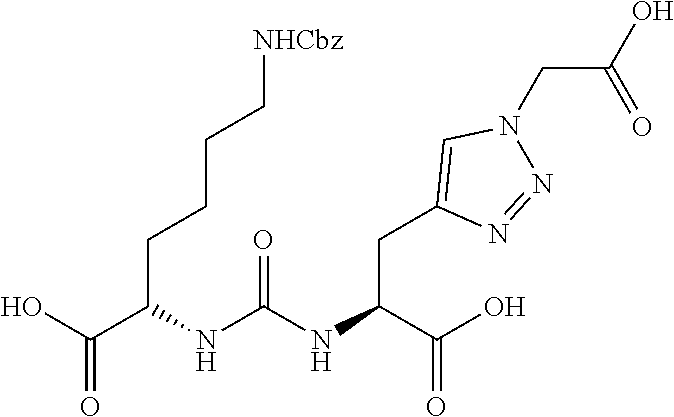
C00629

C00630

C00631

C00632

C00633

C00634

C00635
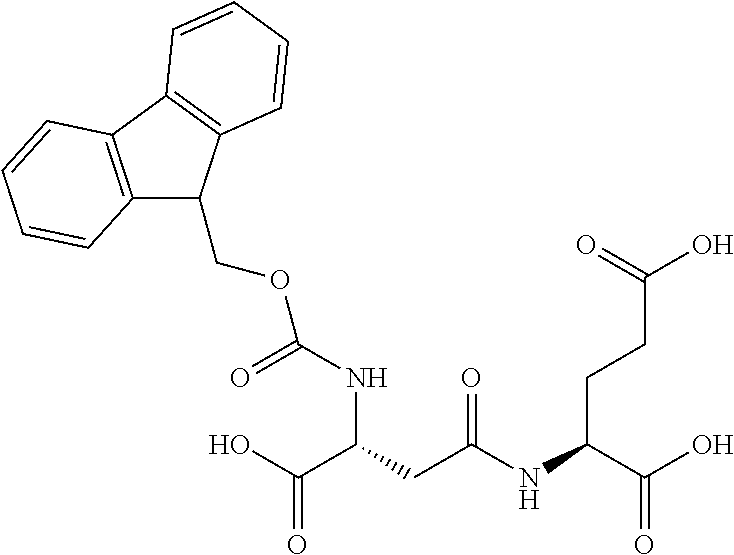
C00636

C00637

C00638

C00639

C00640

C00641

C00642

C00643

C00644
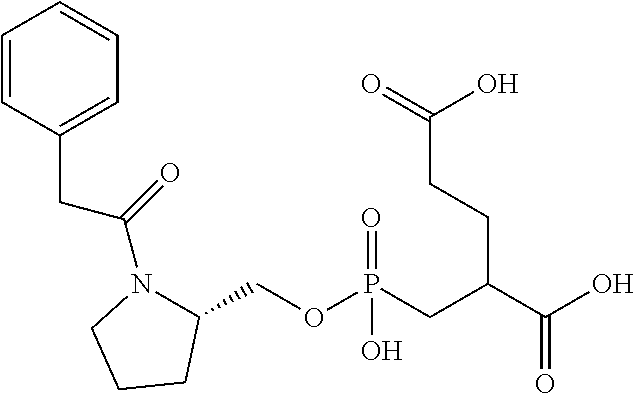
C00645

C00646
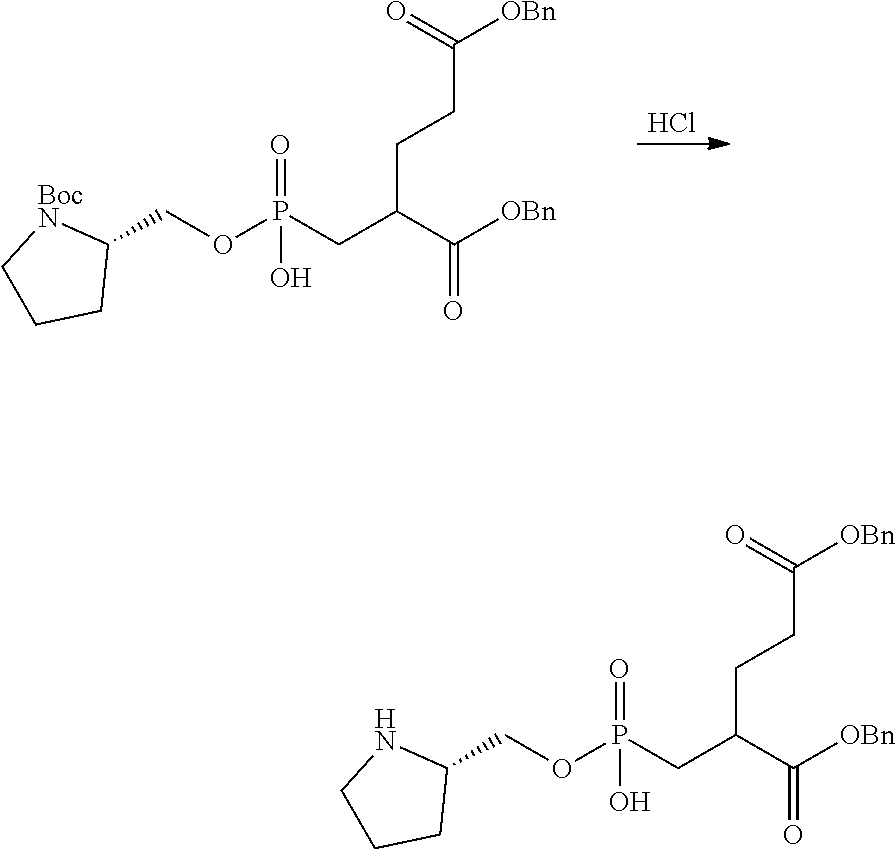
C00647

C00648

C00649

C00650

C00651

C00652

C00653

C00654

C00655

C00656

C00657

C00658
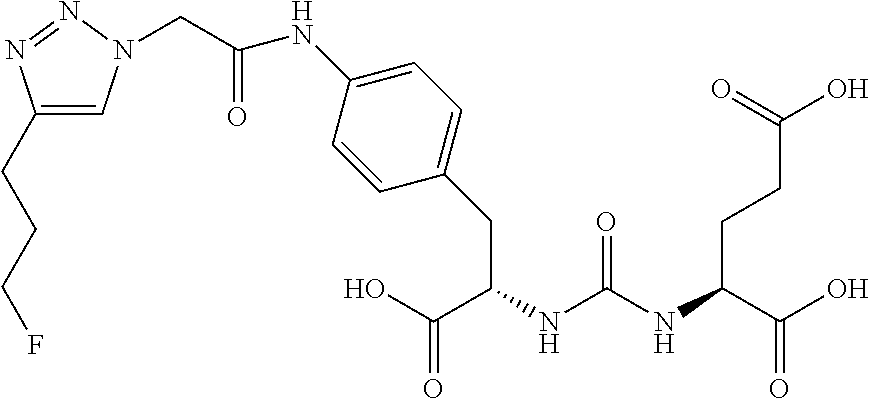
C00659

C00660

C00661

C00662

C00663

C00664

C00665

C00666

C00667

C00668

C00669

C00670

C00671

C00672
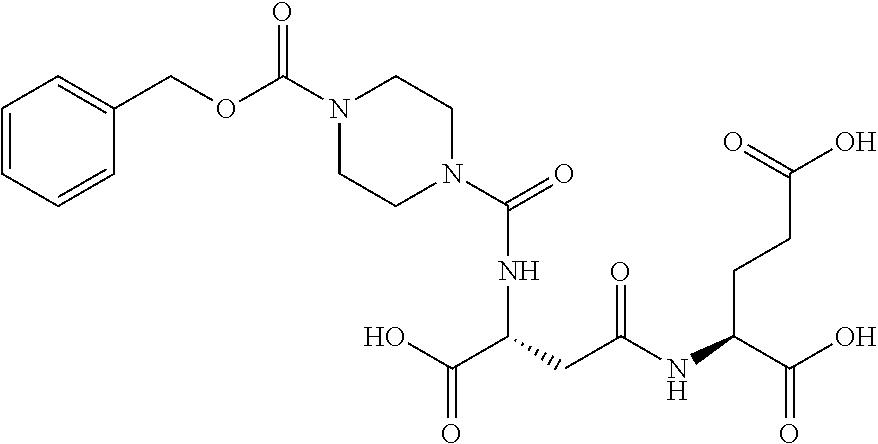
C00673

C00674

C00675

C00676
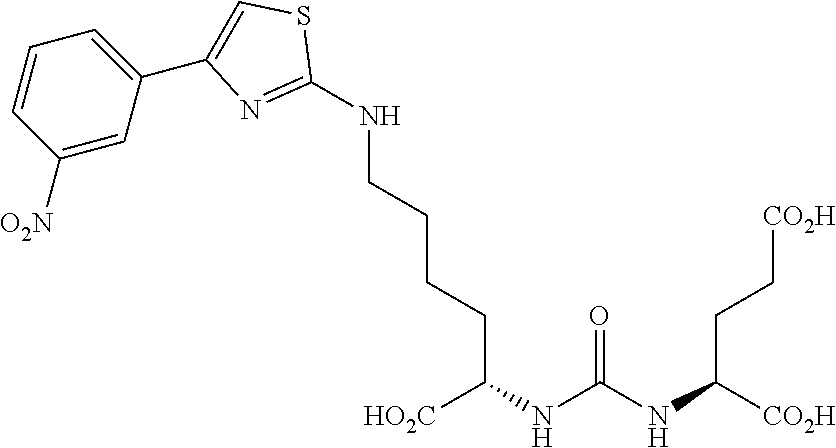
C00677

C00678

C00679

C00680

C00681

C00682

C00683

C00684

C00685

C00686
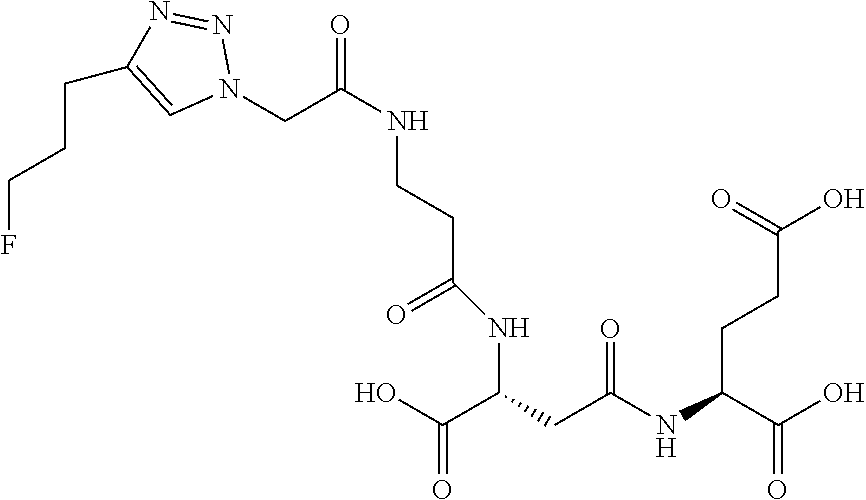
C00687

C00688

C00689

C00690

C00691

C00692
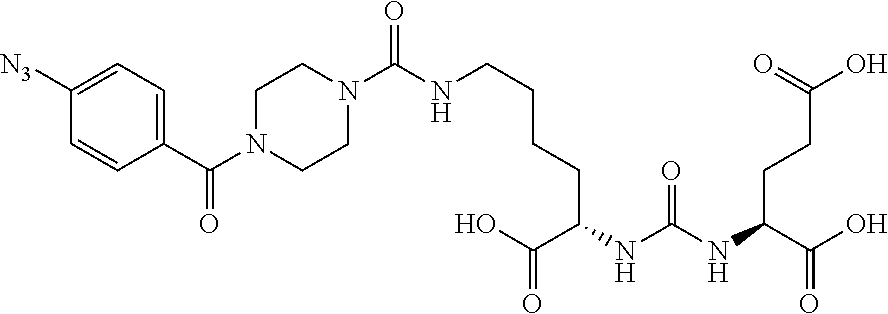
C00693

C00694

C00695

C00696

C00697

C00698

C00699

C00700

C00701

C00702

C00703

C00704
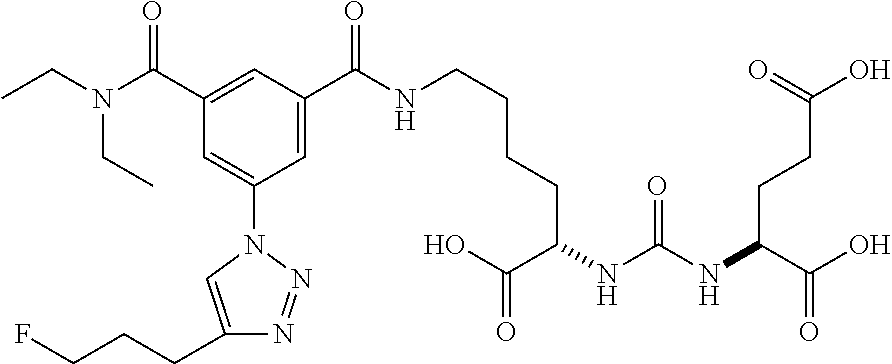
C00705

C00706

C00707

C00708

C00709

C00710

C00711

C00712

C00713

C00714

C00715

C00716

C00717
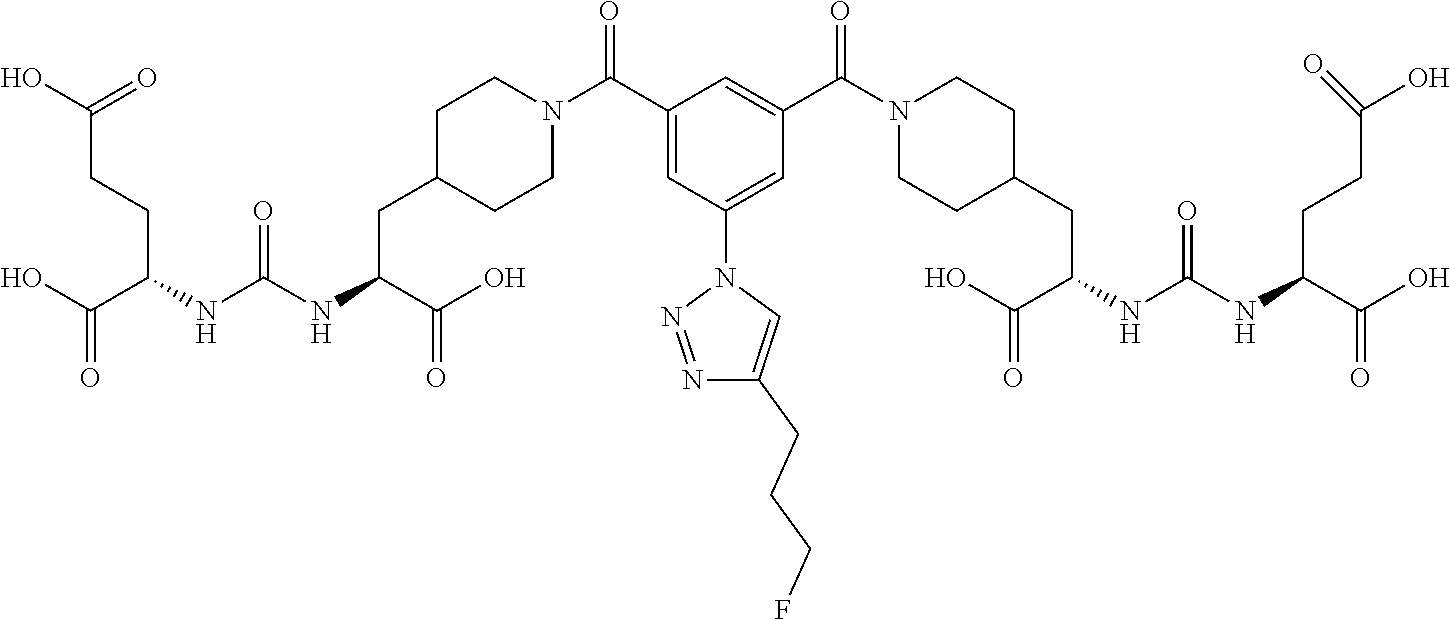
C00718

C00719

C00720

C00721

C00722

C00723

C00724

C00725
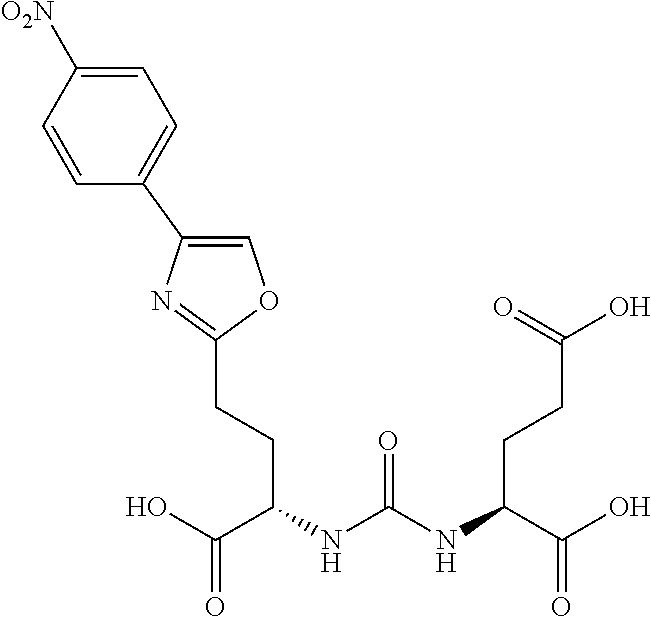
C00726
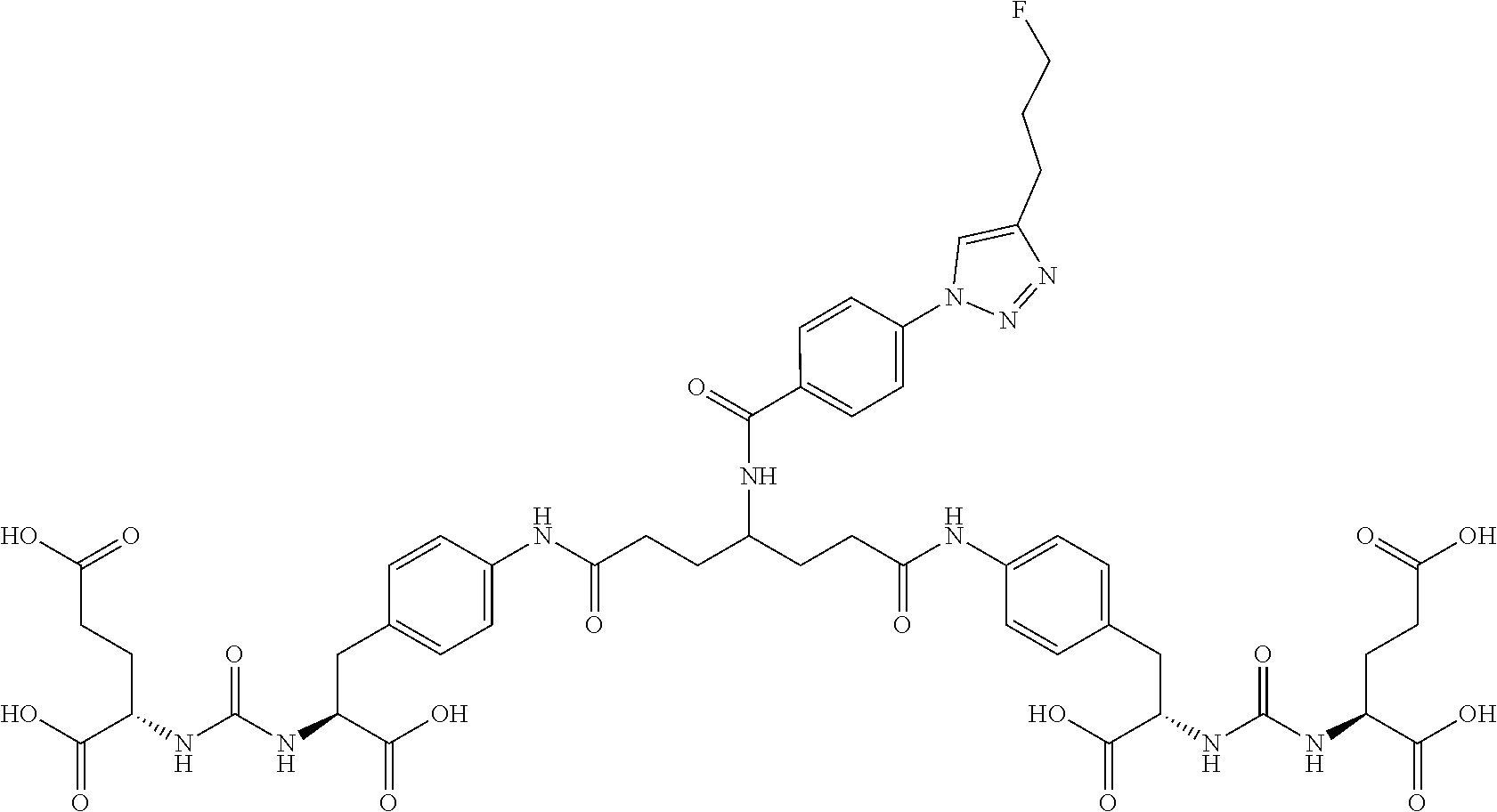
C00727
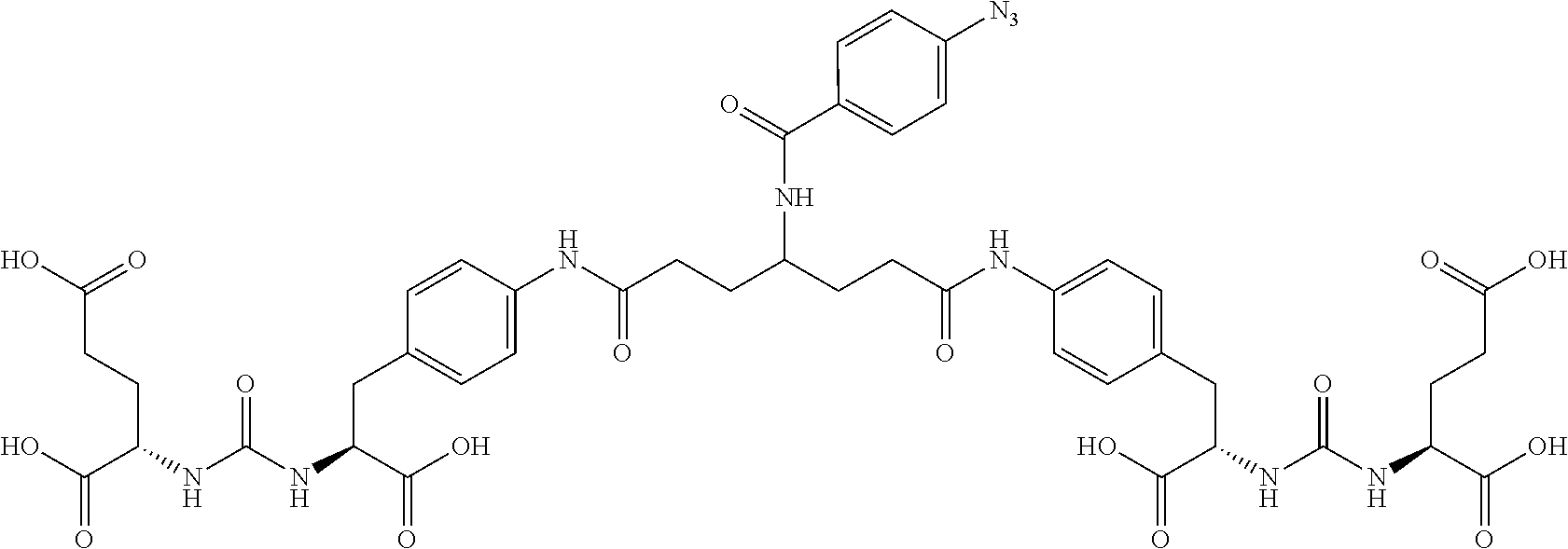
C00728

C00729

C00730

C00731

C00732

C00733

C00734

C00735

C00736

C00737

C00738

C00739

C00740

C00741

C00742

C00743

C00744

C00745

C00746

C00747

C00748

C00749

C00750

C00751

C00752

C00753

C00754

C00755

C00756

C00757

C00758
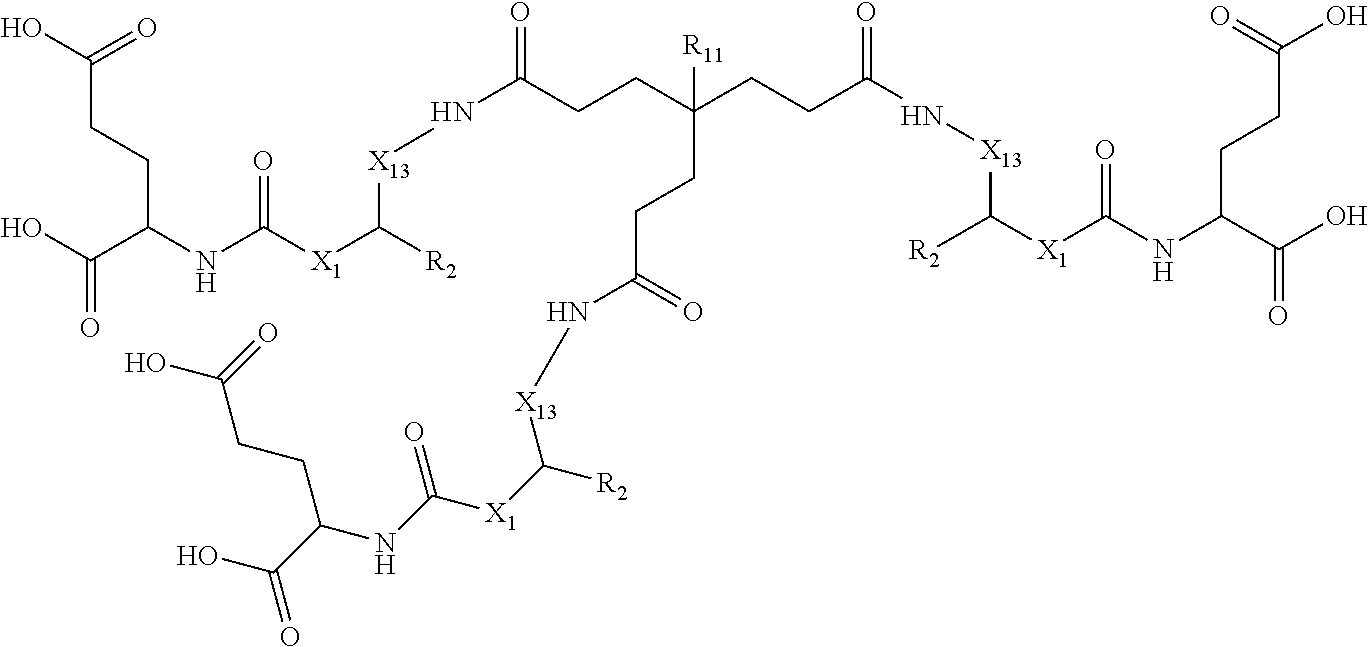
C00759

C00760

C00761
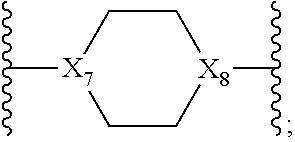
C00762

C00763

C00764

C00765

C00766
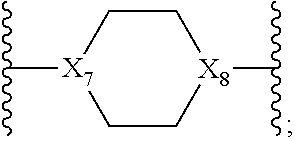
C00767

C00768

D00001

D00002

D00003

D00004

D00005

D00006

D00007

D00008

D00009

D00010

D00011
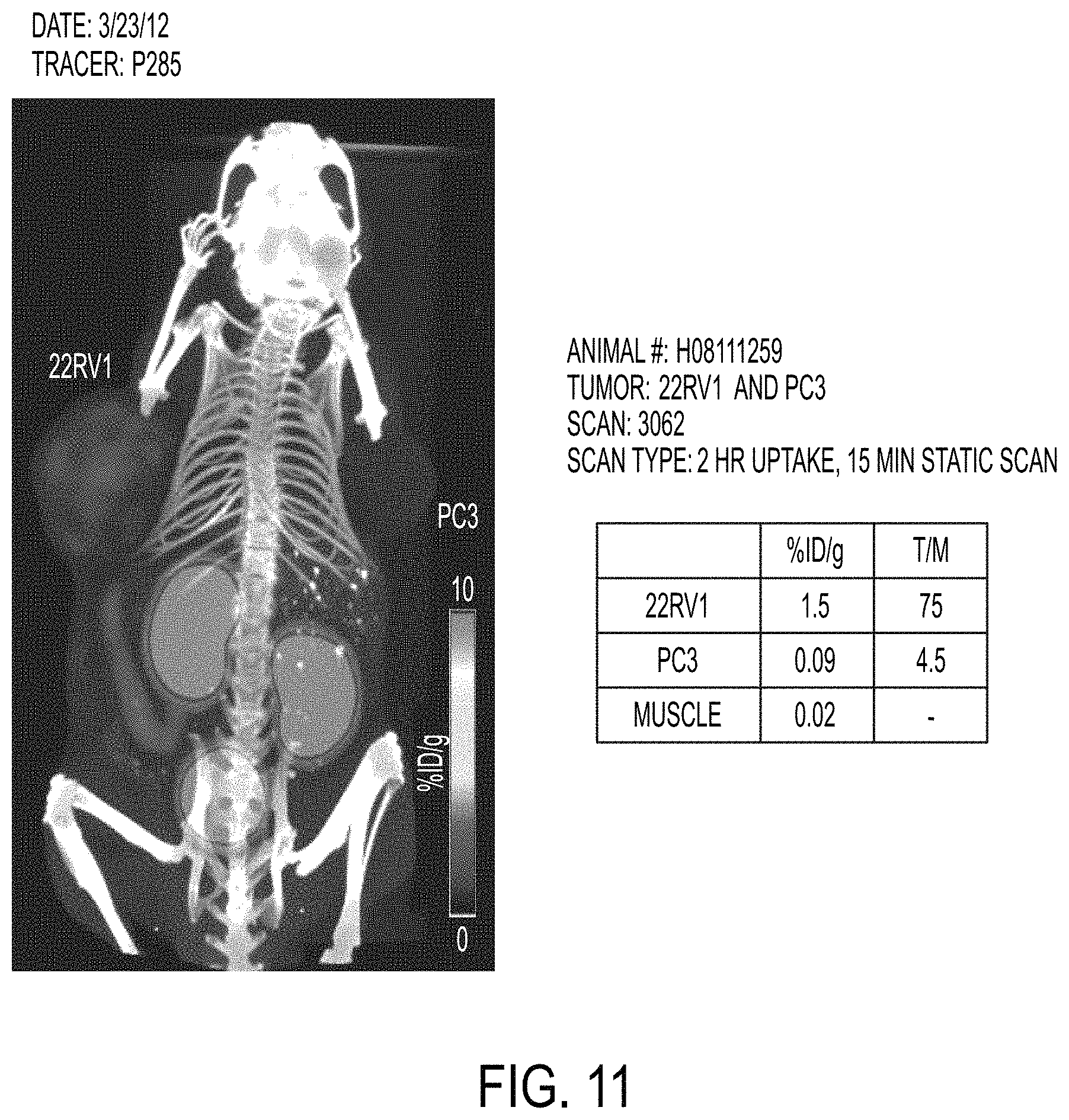
D00012

D00013

D00014

XML
uspto.report is an independent third-party trademark research tool that is not affiliated, endorsed, or sponsored by the United States Patent and Trademark Office (USPTO) or any other governmental organization. The information provided by uspto.report is based on publicly available data at the time of writing and is intended for informational purposes only.
While we strive to provide accurate and up-to-date information, we do not guarantee the accuracy, completeness, reliability, or suitability of the information displayed on this site. The use of this site is at your own risk. Any reliance you place on such information is therefore strictly at your own risk.
All official trademark data, including owner information, should be verified by visiting the official USPTO website at www.uspto.gov. This site is not intended to replace professional legal advice and should not be used as a substitute for consulting with a legal professional who is knowledgeable about trademark law.